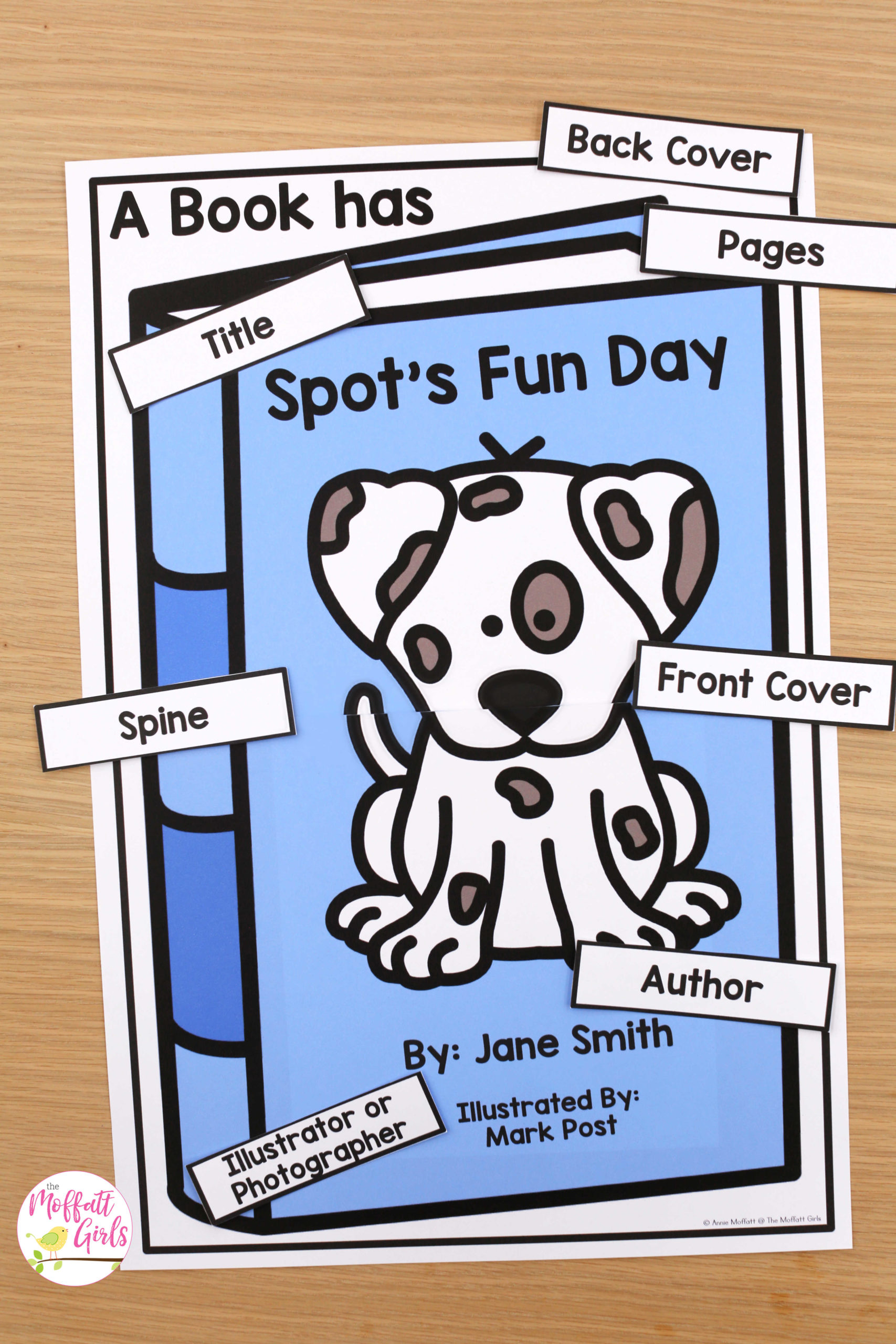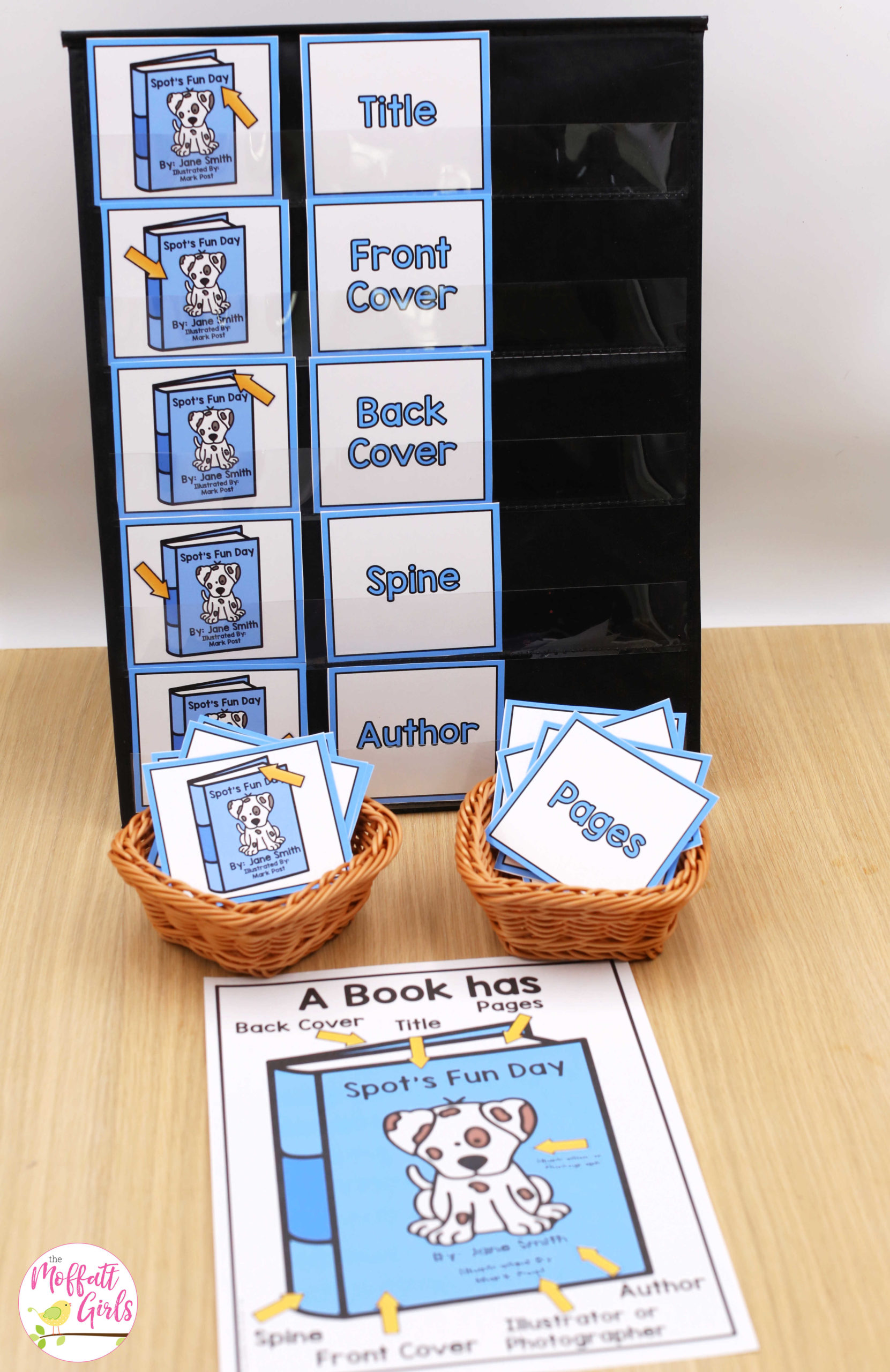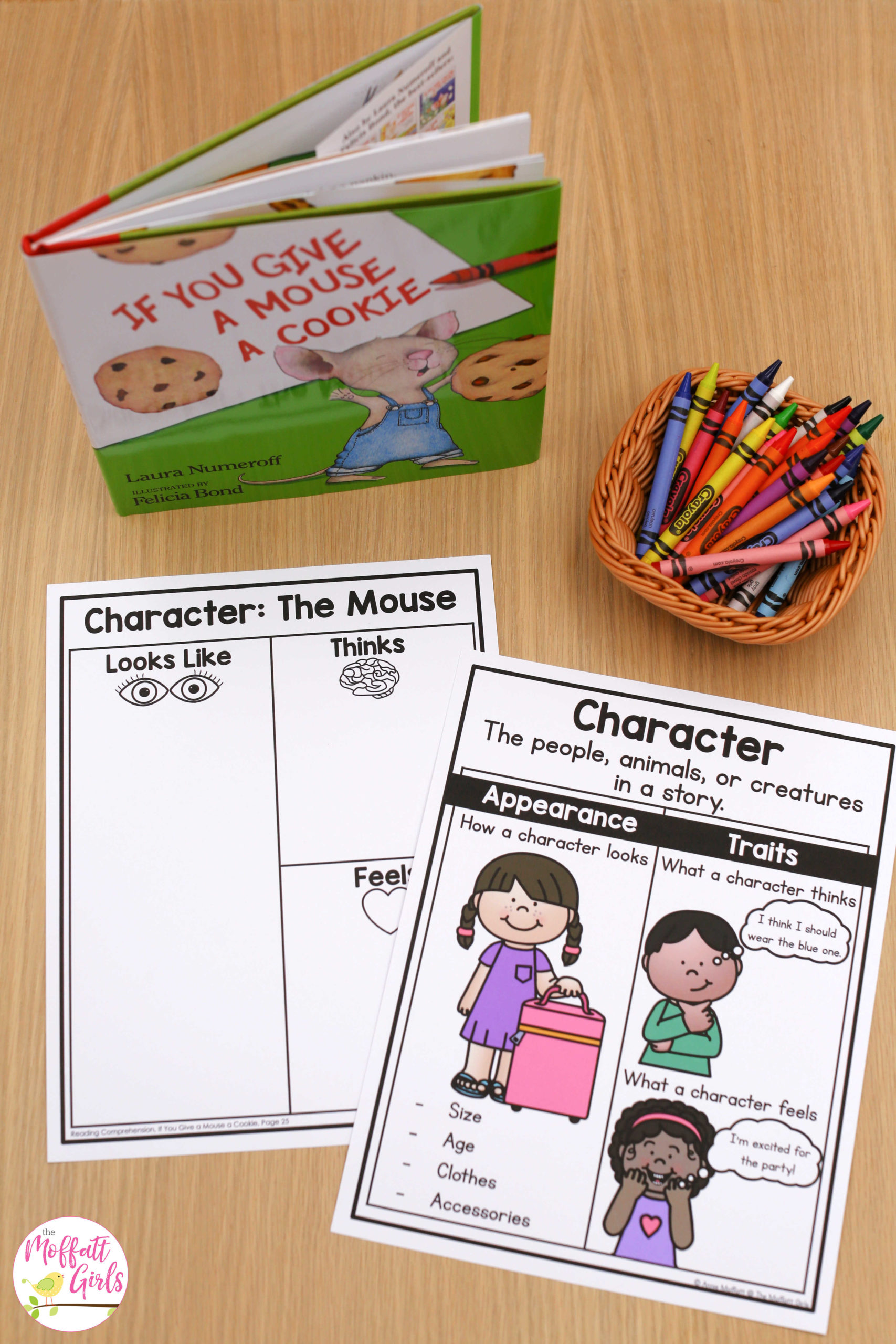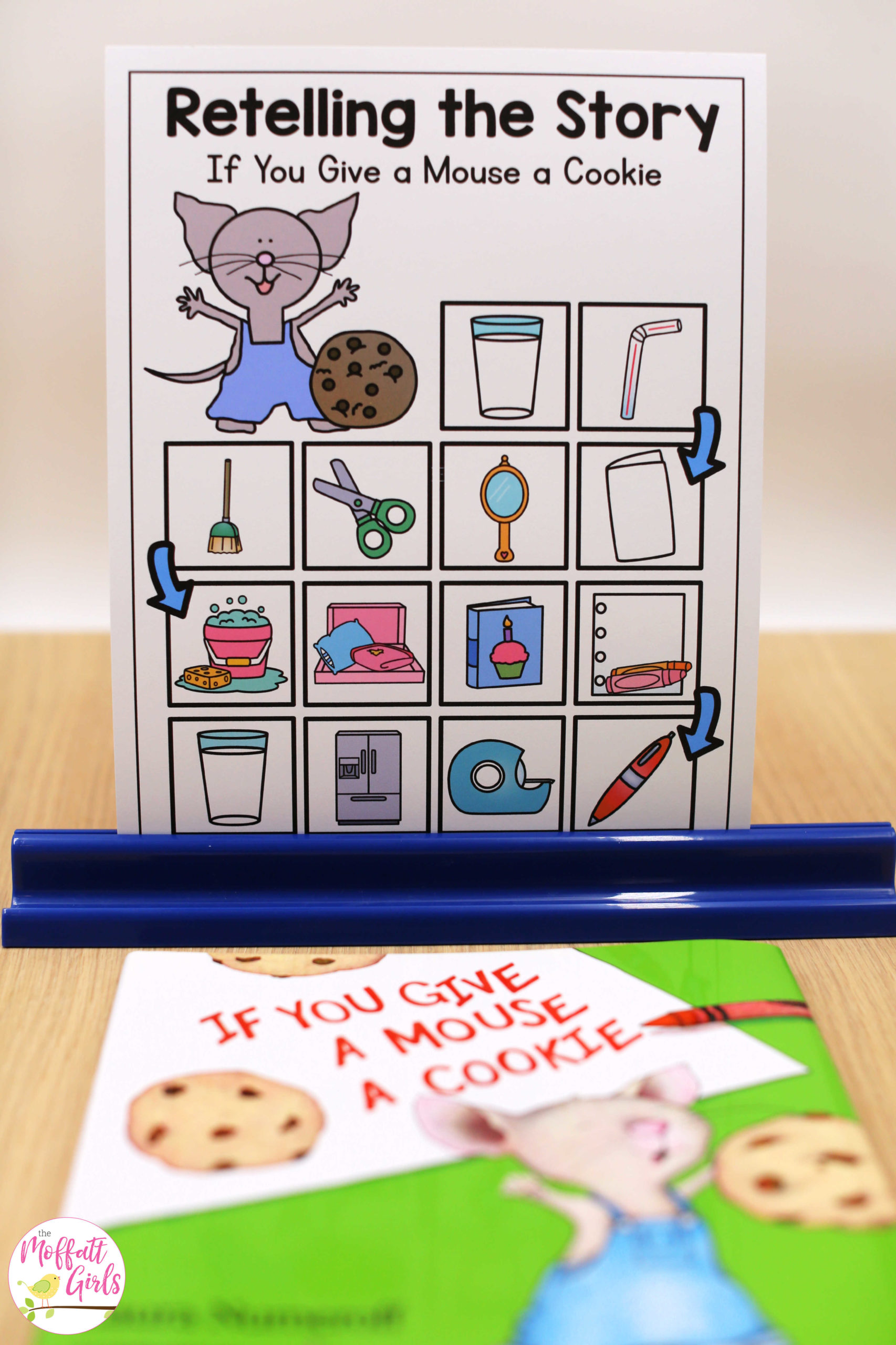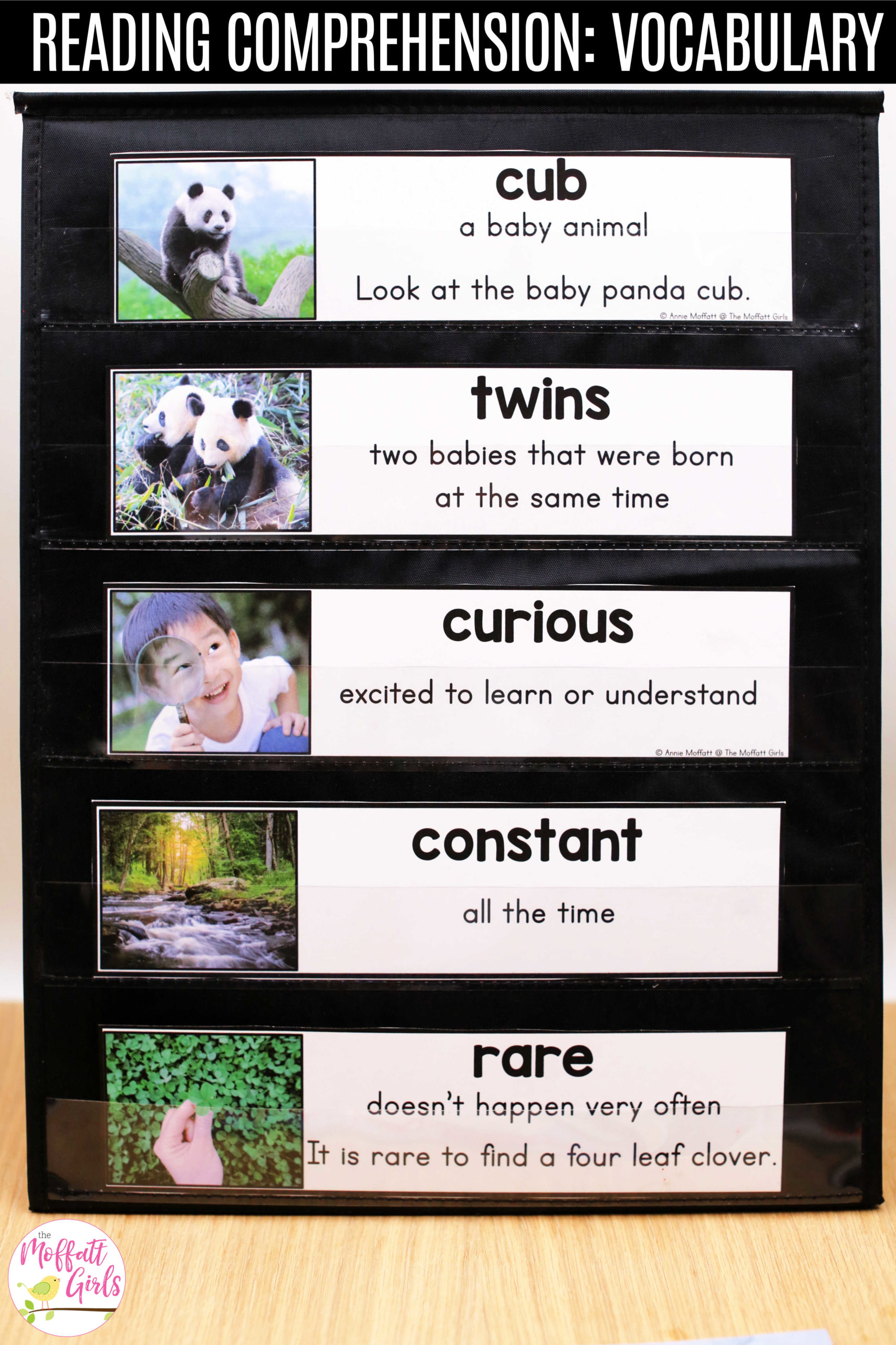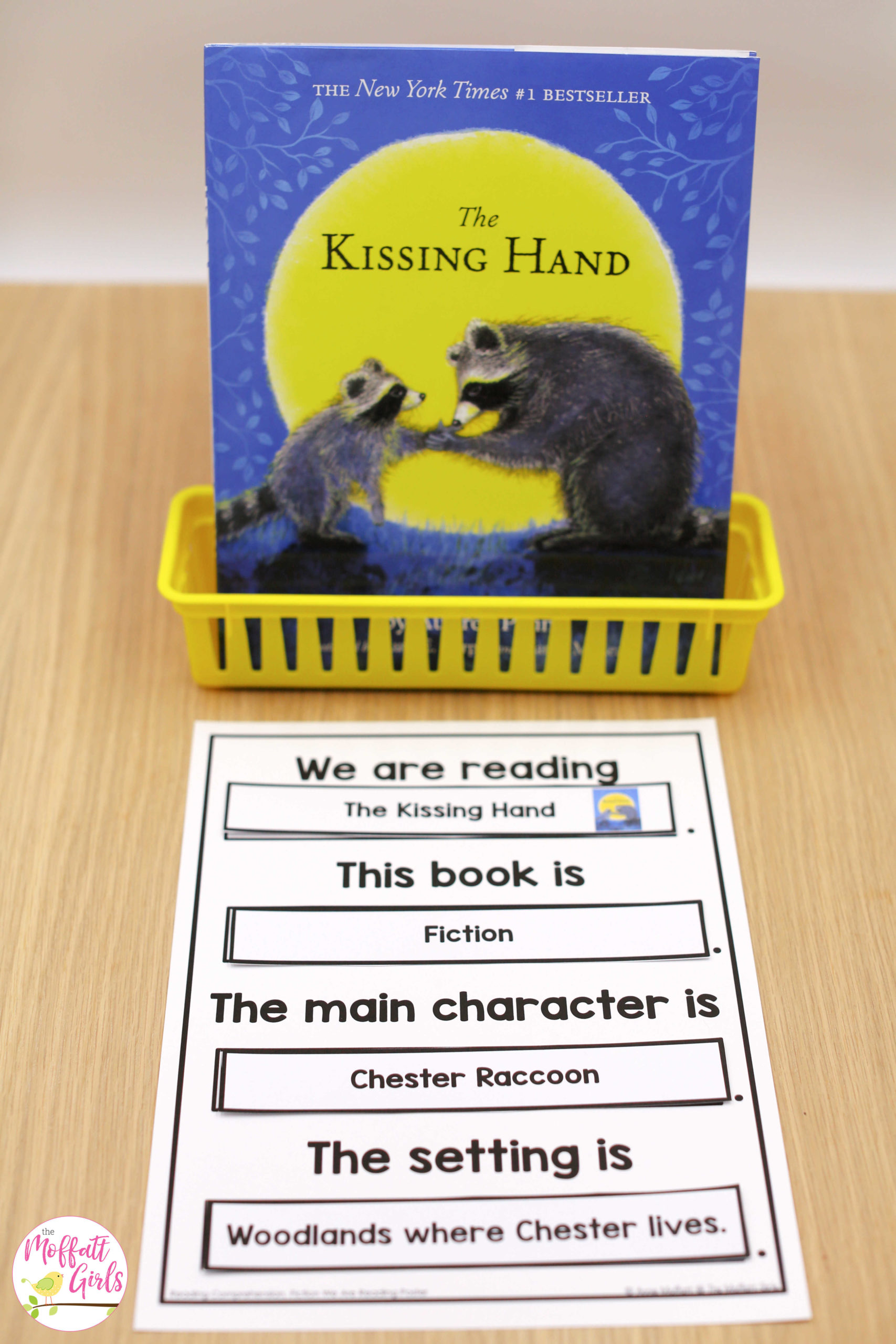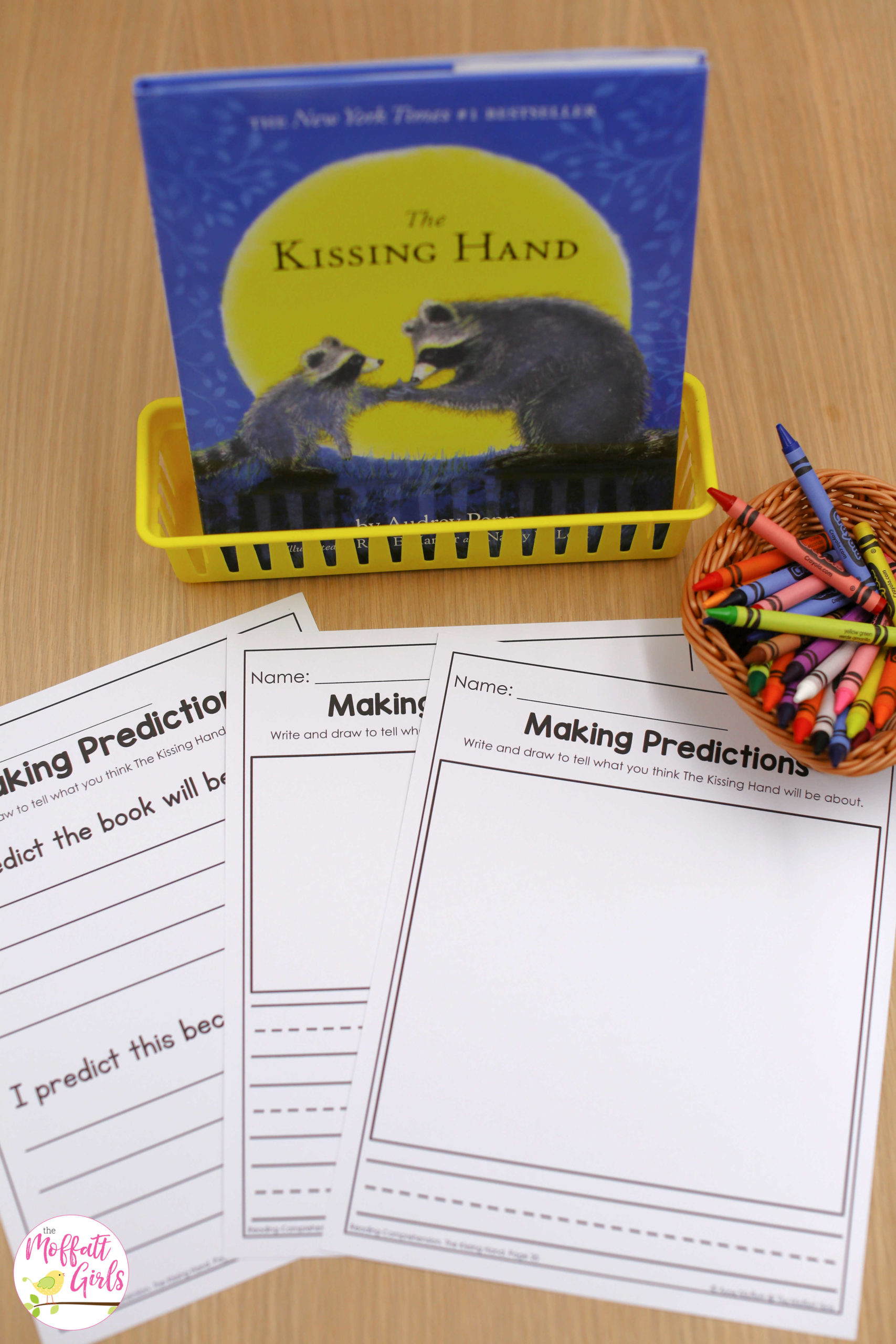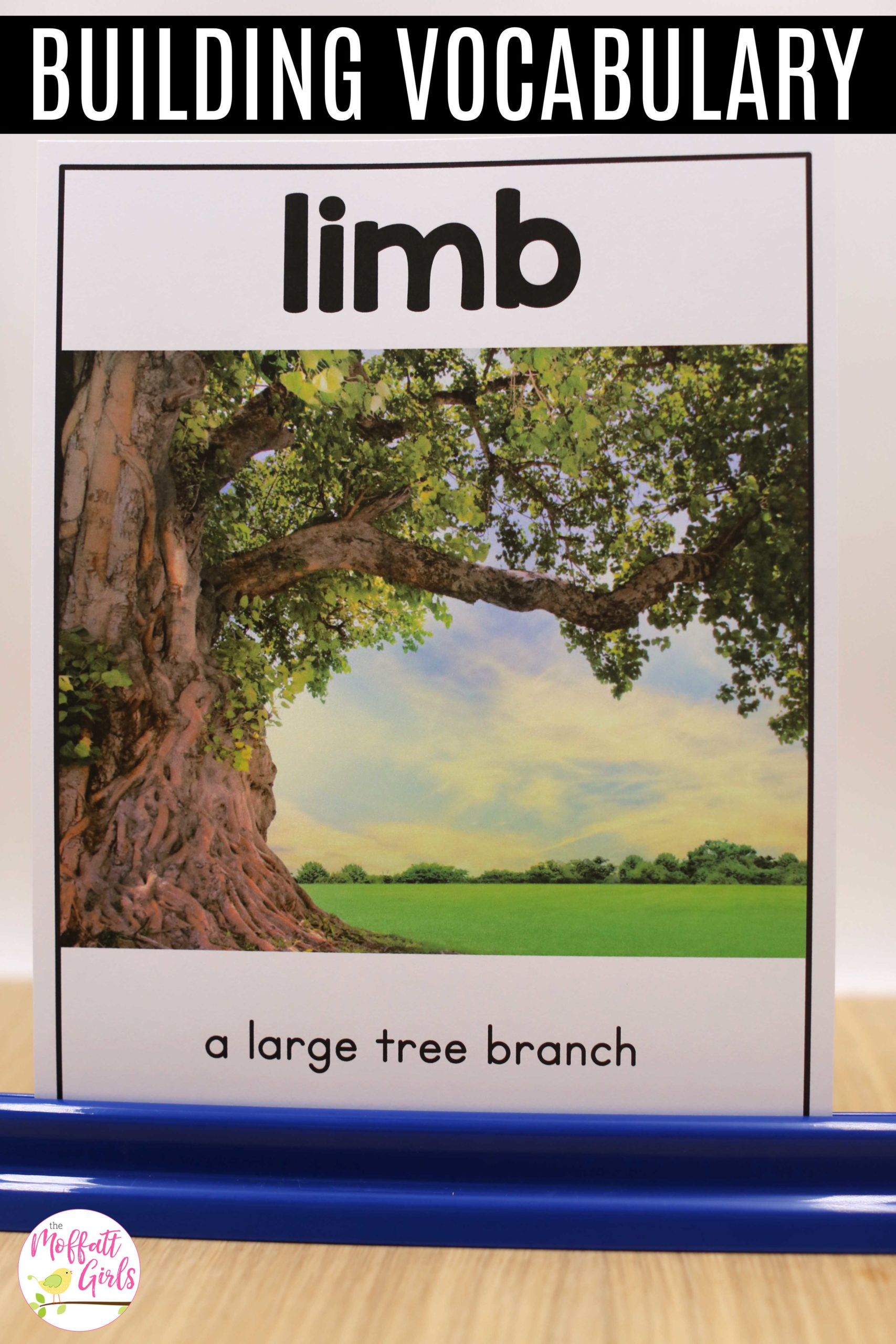Reading Comprehension in Kindergarten
While teaching kindergarten students how to read with phonics and sight words, reading comprehension in kindergarten often gets less focus in the classroom. Teachers frequently find it difficult to implement quality reading comprehension strategies for fiction and non-fiction texts. Nonetheless, teaching these reading comprehension skills at an early age is a vital part of overall reading success throughout a child’s school career. Therefore, I’ve been working hard to create a Kindergarten Reading Comprehension Curriculum to help maximize reading understanding and minimize the teacher’s workload!
Throughout the curriculum, students will be exposed a variety of reading comprehension strategies through non-fiction and fiction texts. Building vocabulary will hold a strong focus throughout the curriculum, helping students gain a deeper understanding of what they are reading. Furthermore, students will learn to make connections between what they are reading and what they already know, while thinking deeply about what they have read.
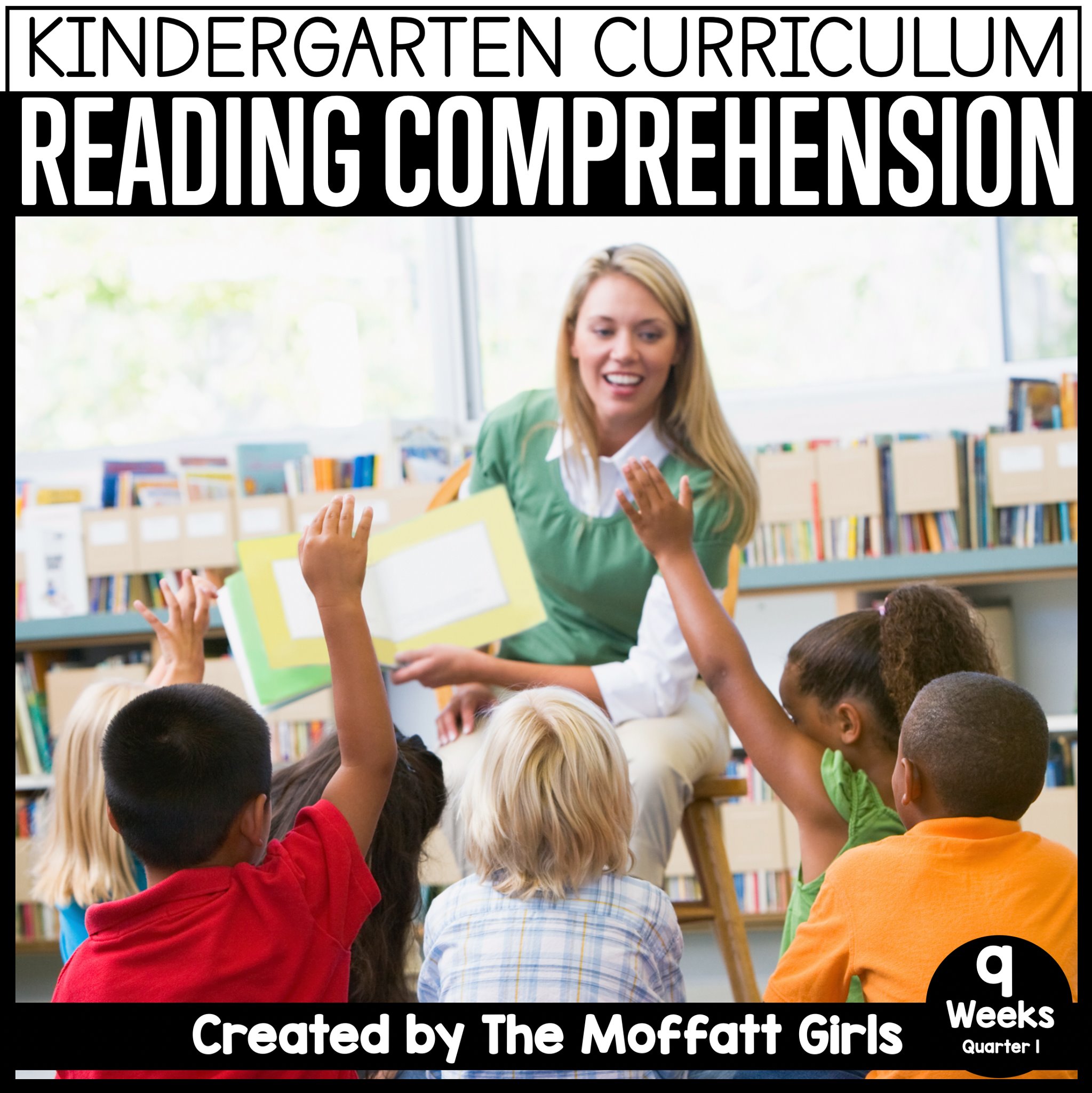
What’s Included in Quarter 1:
This comprehensive Kindergarten reading comprehension curriculum is made up of 36 weekly books. Each book comes with four lesson plans. Quarter 1 includes the first 9 weeks of the curriculum. Here is the scope that outlines the books in each week. Note that the first 2 weeks should be taught first, because these weeks introduce topics that will be reviewed in later weeks. However, the rest of the week can be taught in any order.
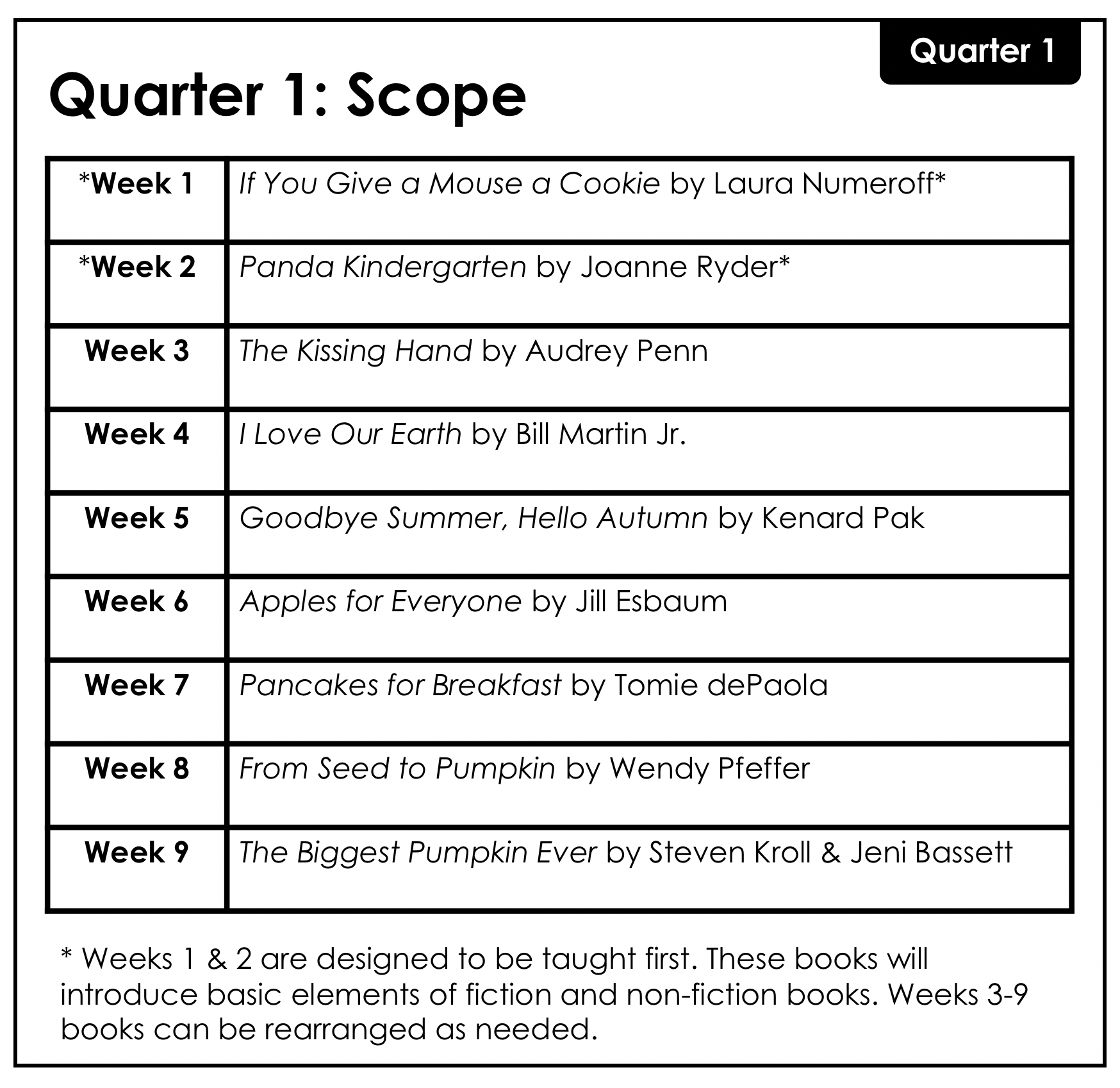
Book 1: If You Give a Mouse a Cookie
There are countless reasons why If You Give a Mouse a Cookie is a favorite in Kindergarten classrooms! It offers a great introduction to learning the elements of a fiction book.
Lesson Plans
Each book has 4 lessons that can be taught throughout the week.
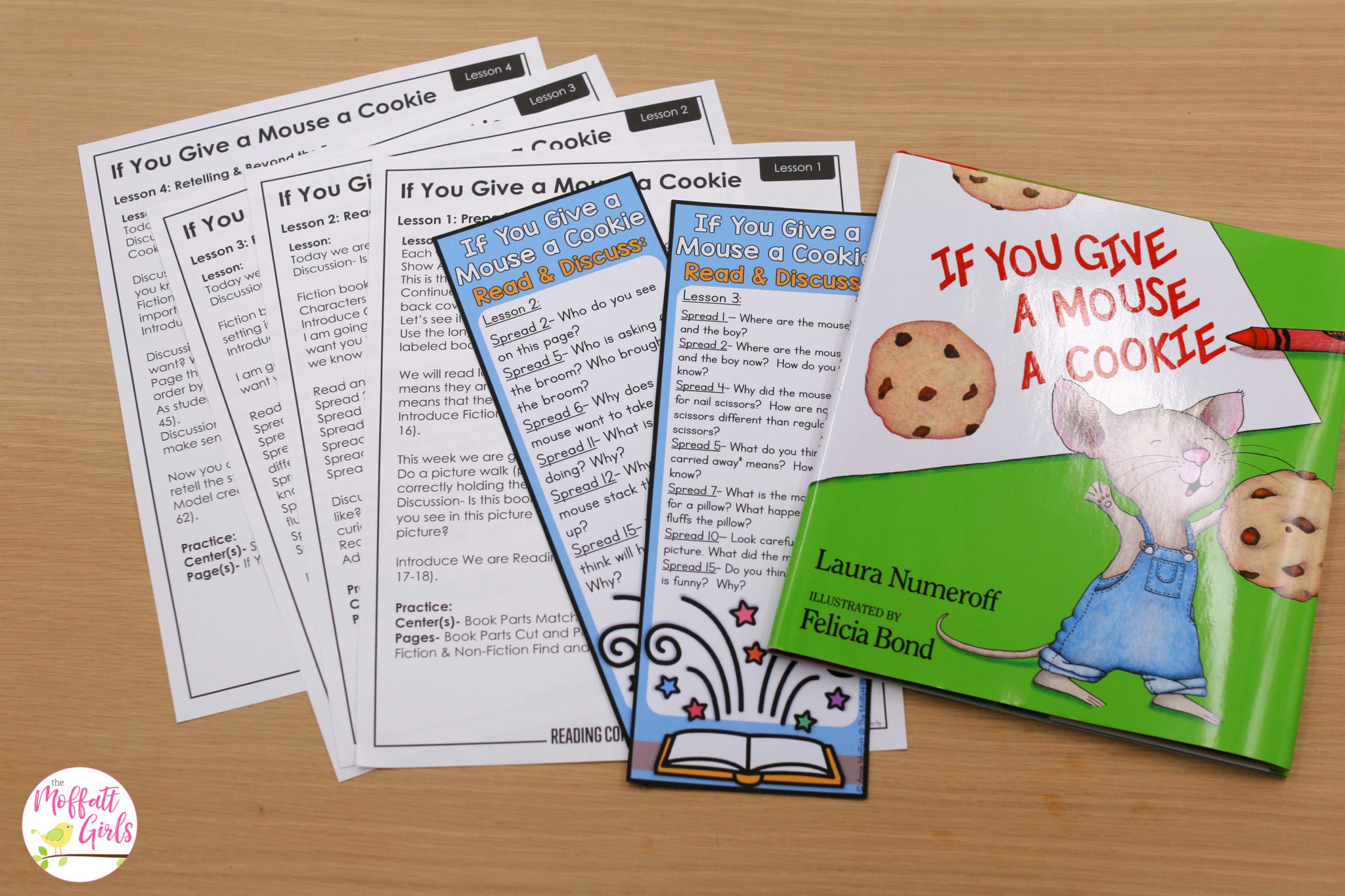
I’ve made book marks with prompting questions that you can use as you are reading the text aloud to your students. These questions help students think deeper about the text.
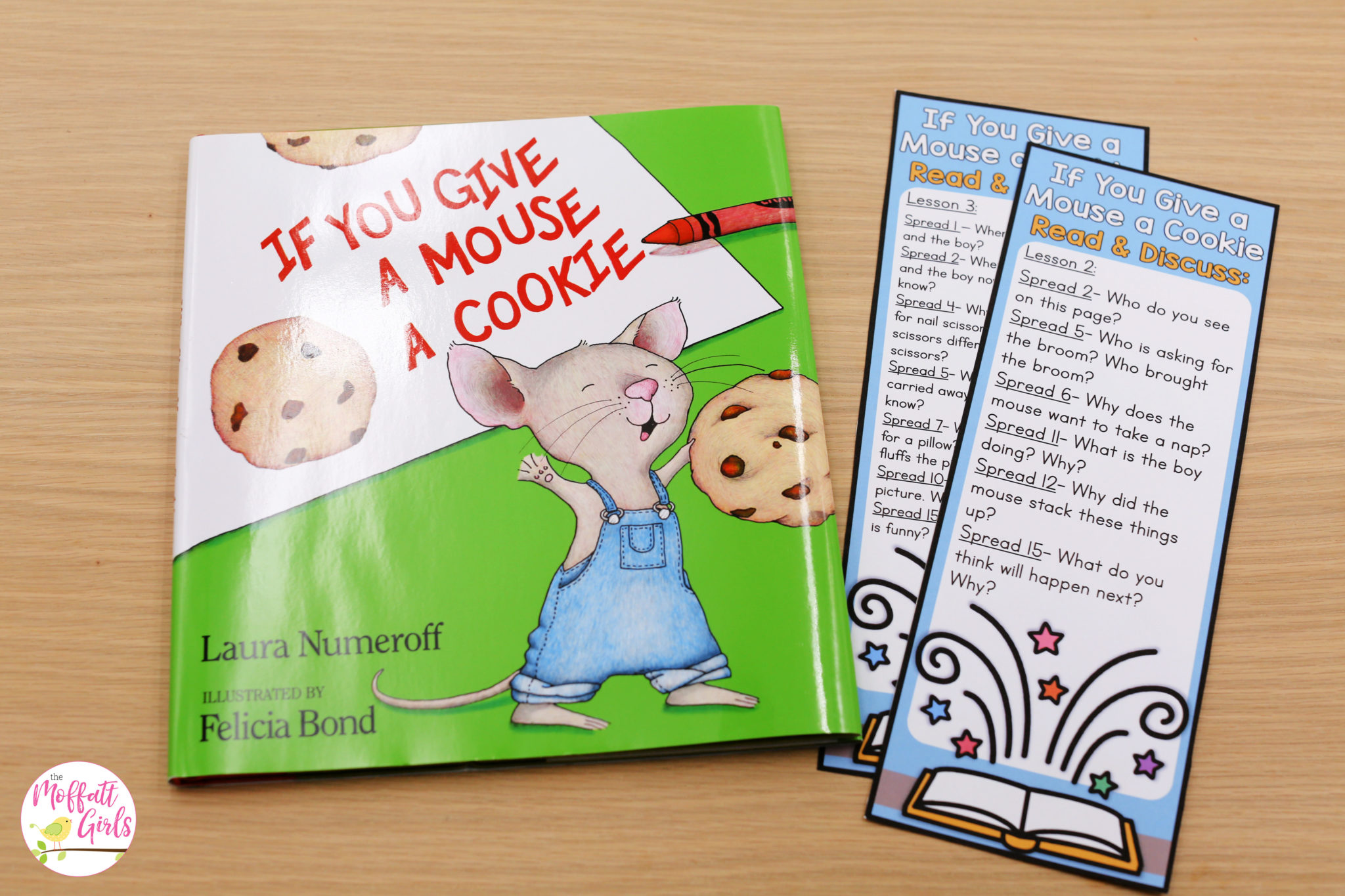
Parts of a Book
Before reading the book, students should be familiar with the parts of a book: title, pages, spine, front cover, back cover, author, and illustrator or photographer. This poster allows students to practice identifying these parts using moveable pieces.
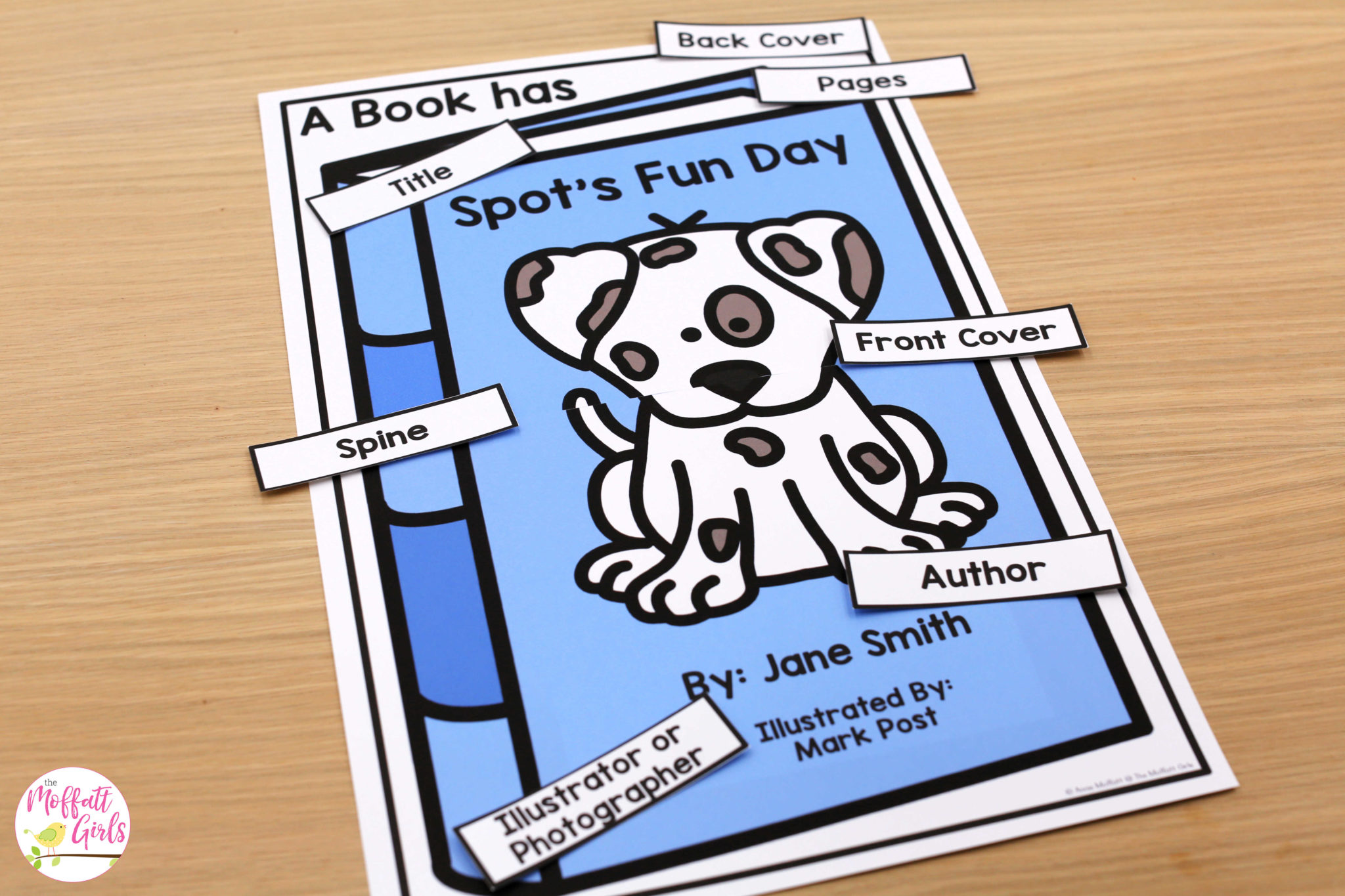
Here is a simple matching activity to give students further practice identifying the parts of a book.
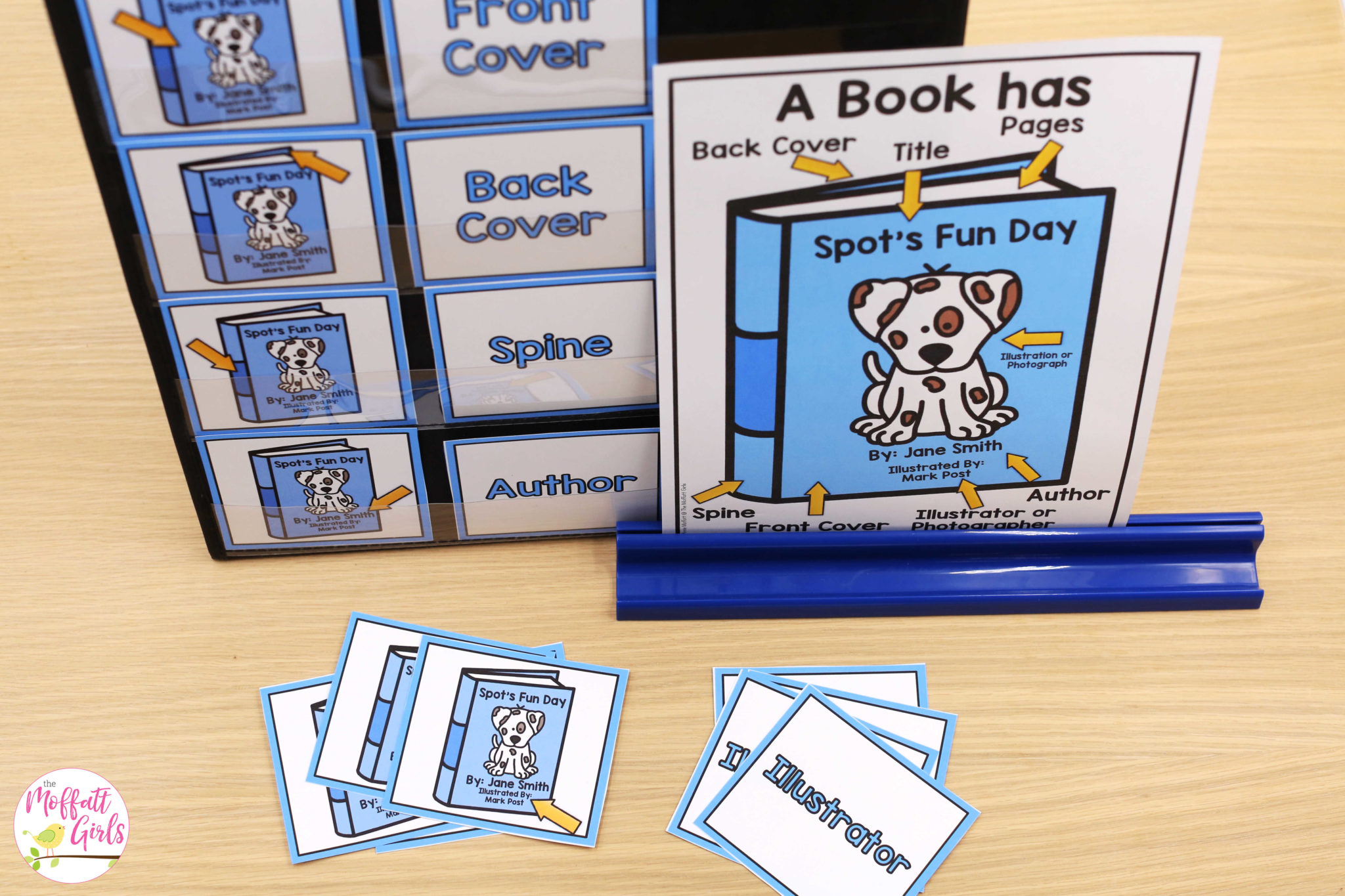
This page can be used in the classroom as a small group activity or sent home as homework.
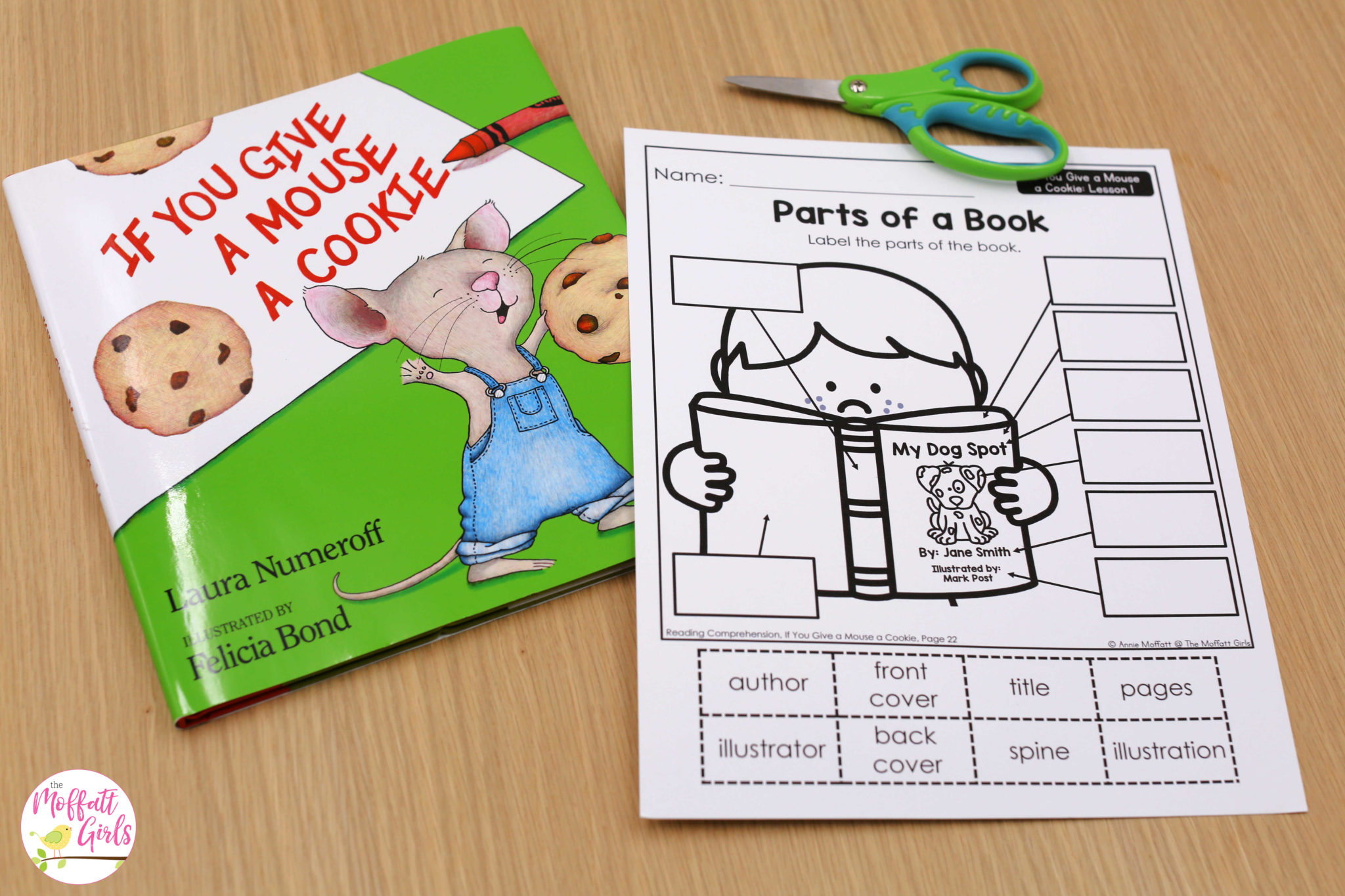
Fiction and Non-Fiction Posters
These genre posters give students a great visual to help understand the differences between fiction and non-fiction stories. They will be used for reference when reviewing the other books in the curriculum.
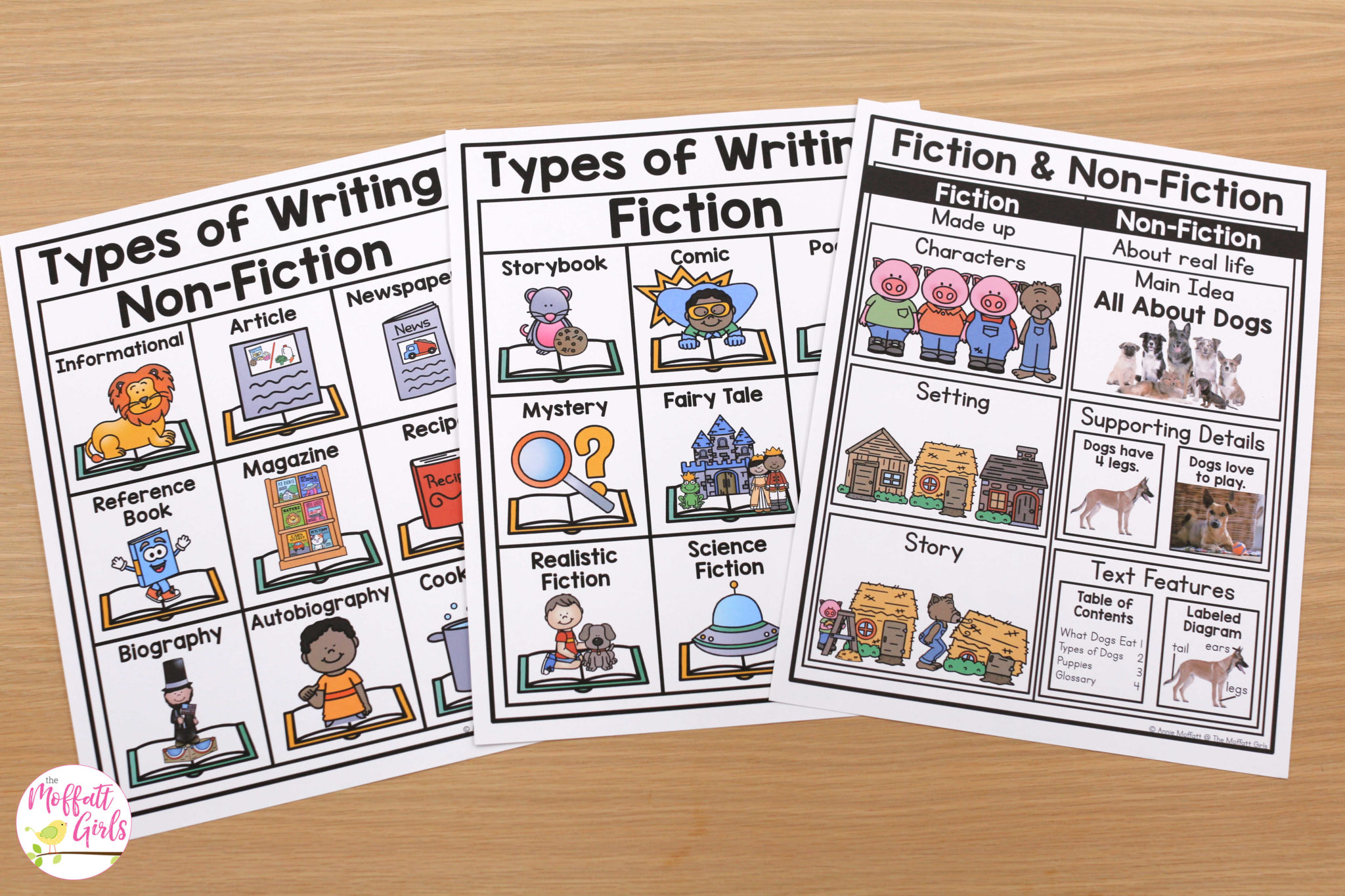
Have students find one fiction and one non-fiction book to draw and write on this sheet.
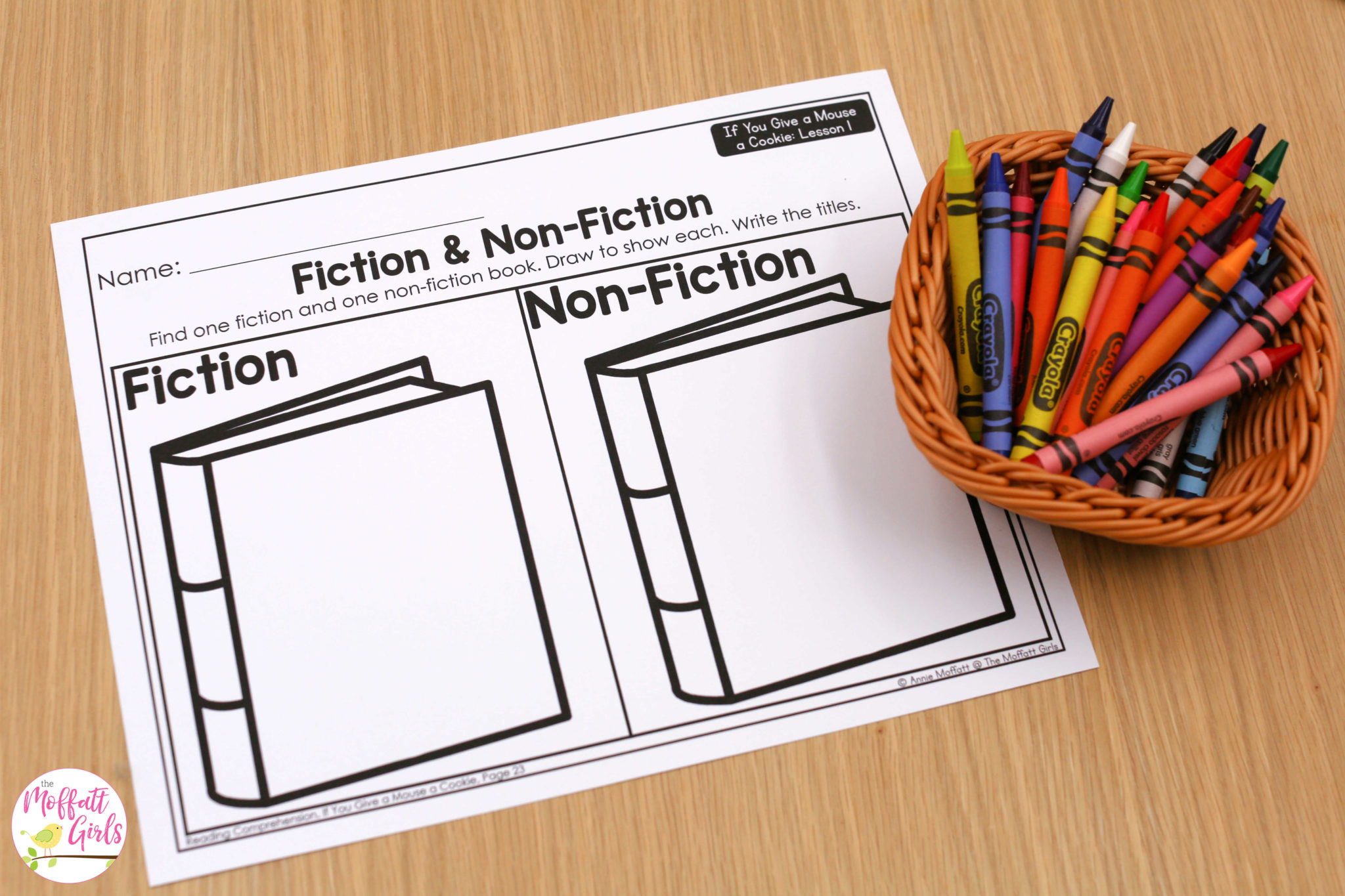
“We are reading…” Poster
This poster will be completed for each book. It reminds students about the title, genre, main character and setting.
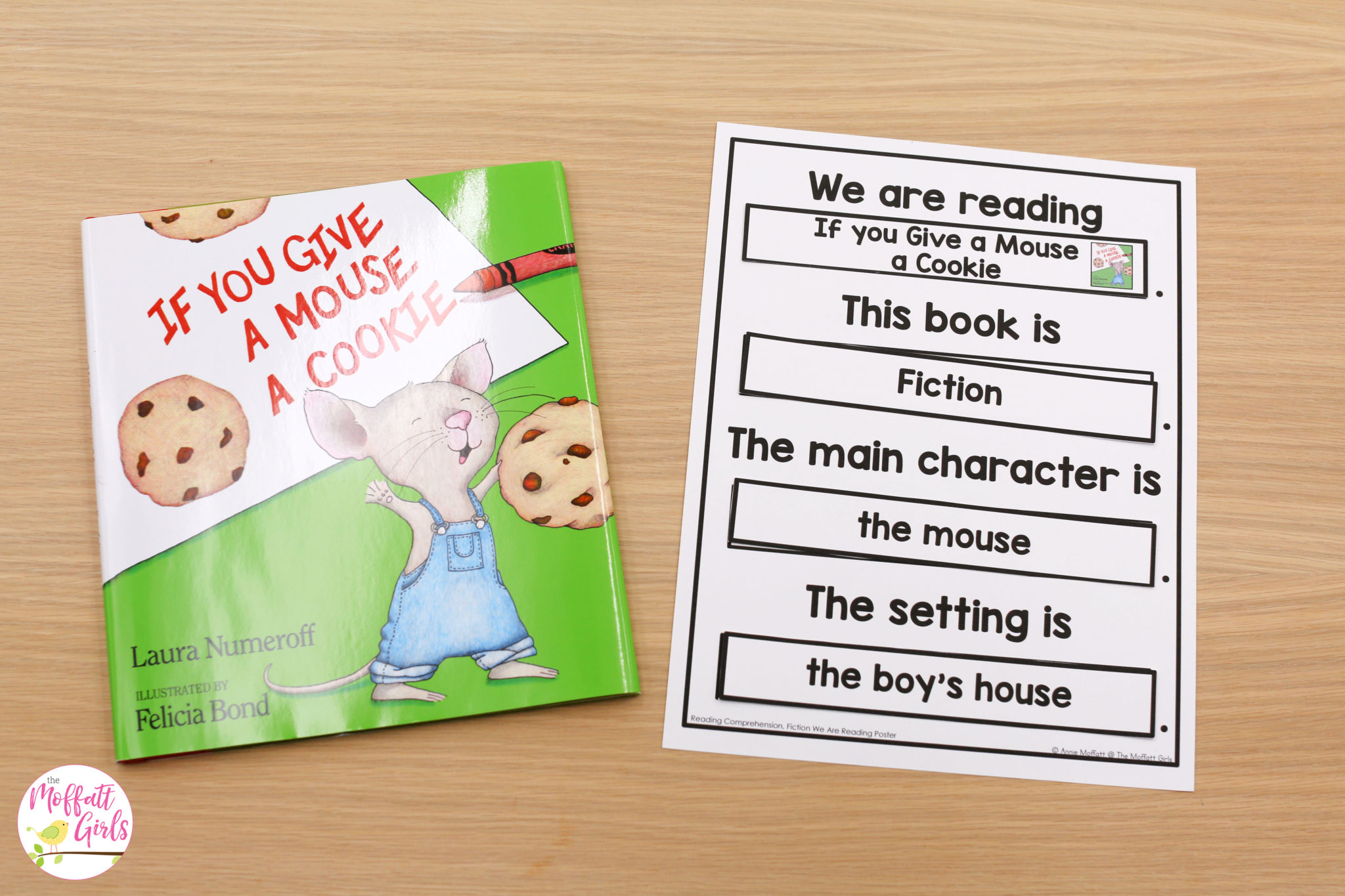
Character Study
The character poster and practice page help students to learn a deeper appreciation for the character’s appearance and traits. Any activity that encourages empathy for young students is a major benefit in the classroom, and this one does just that!
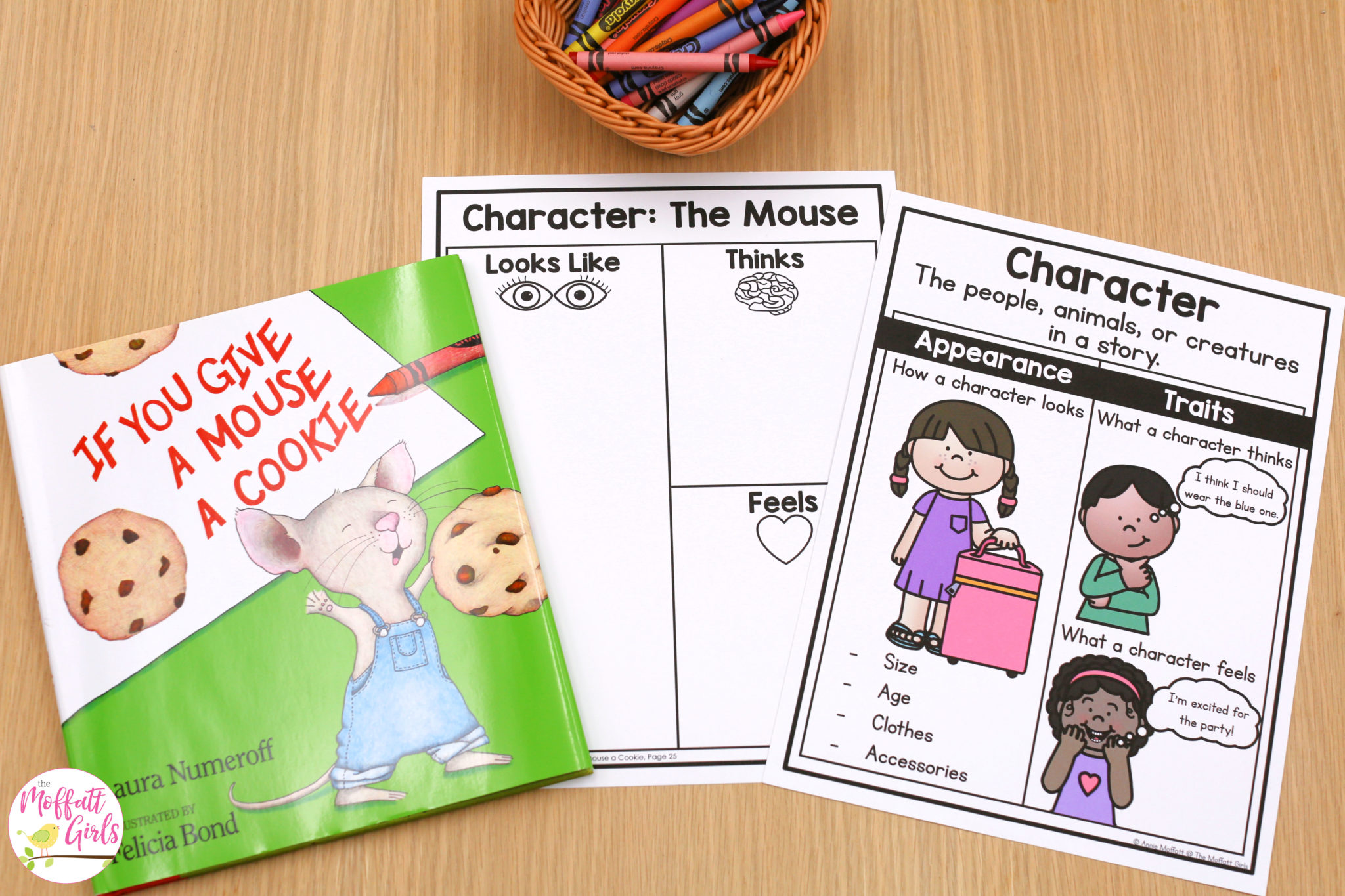
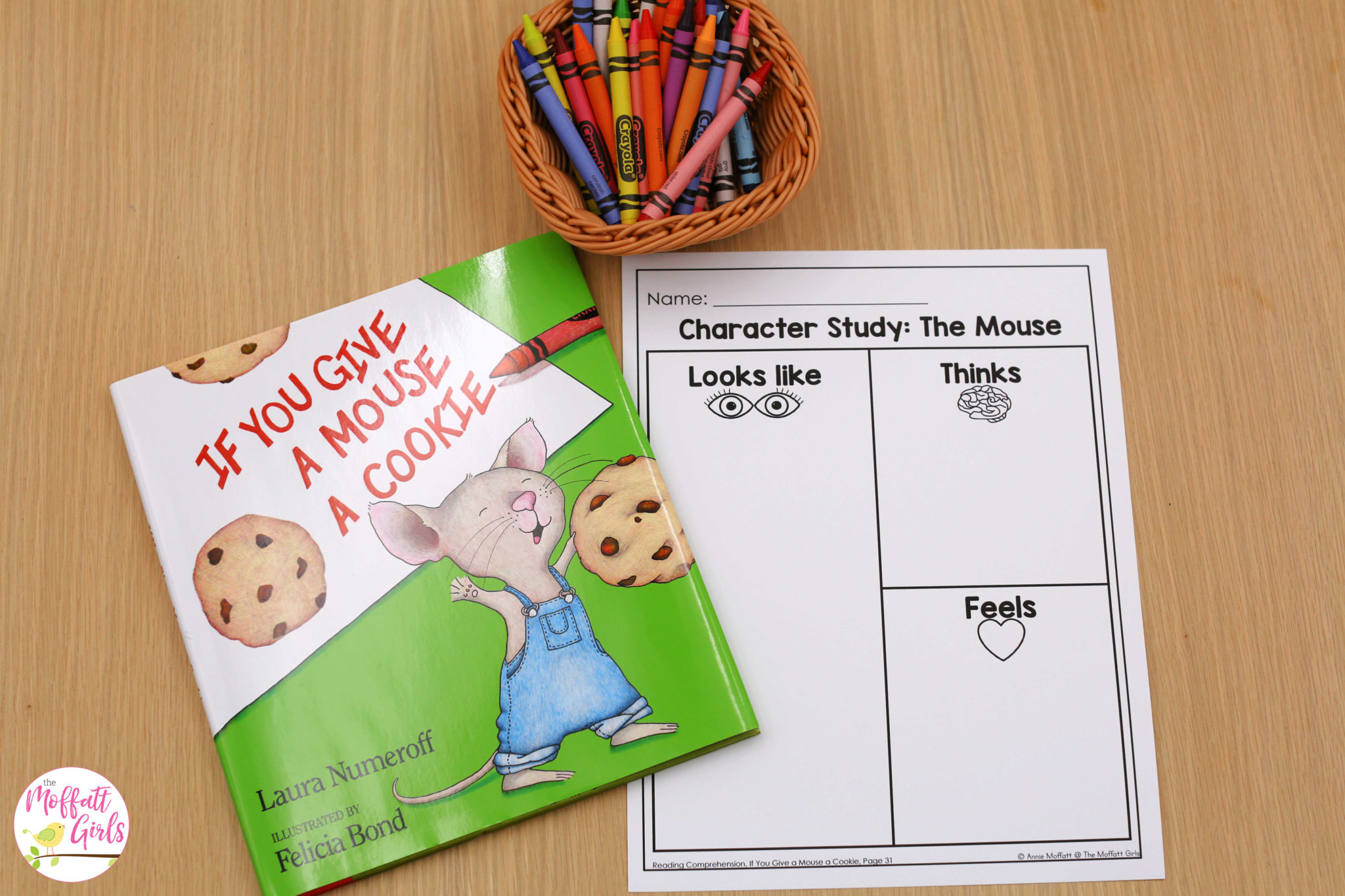
Create a Character
This is a fun way to let students imagine and create a character that matches the description. Students flip one of each card and draw the character on the page.
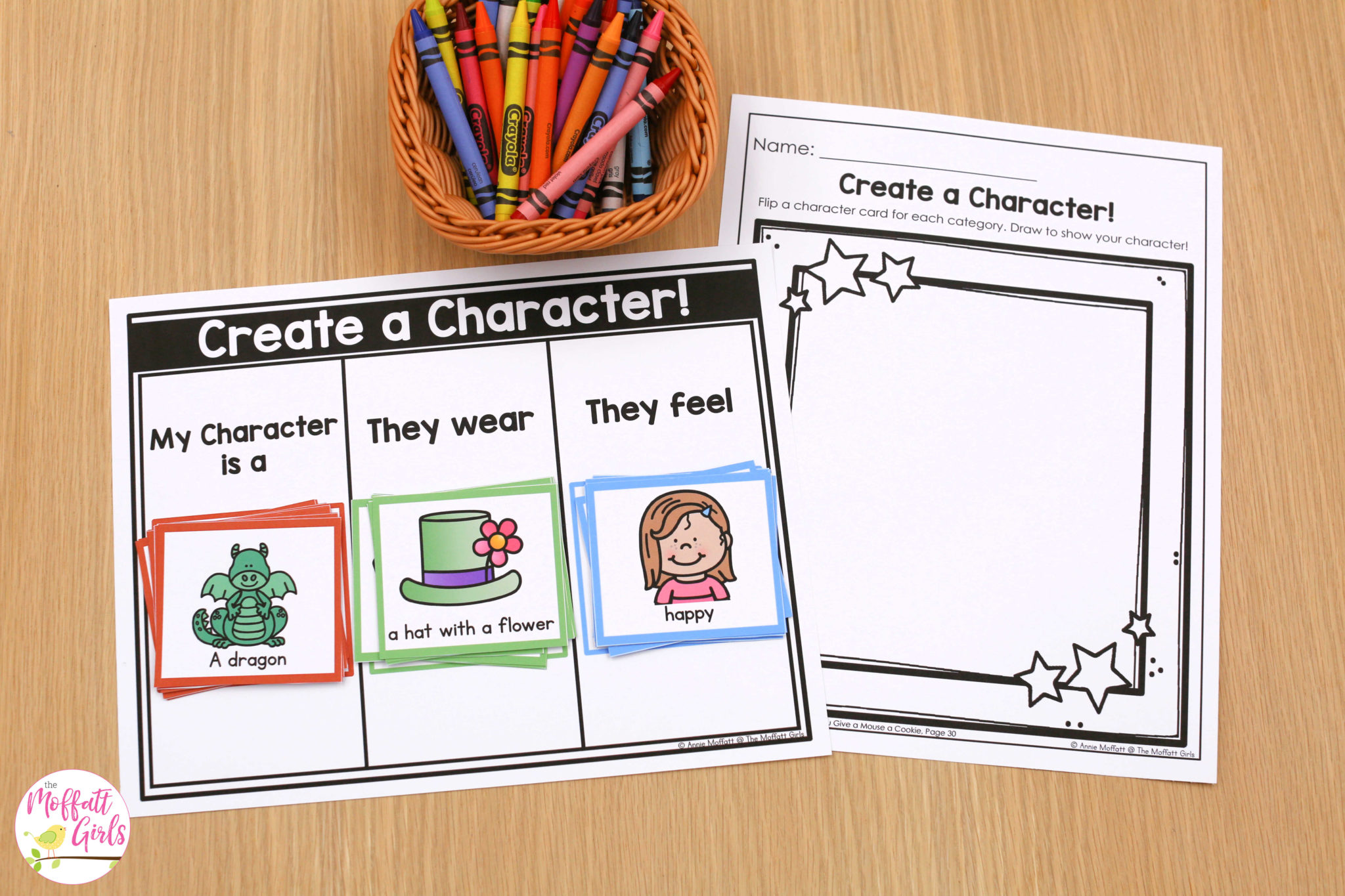
Setting
The Setting poster helps students understand that the setting of a story includes both the place and time that the story happens.
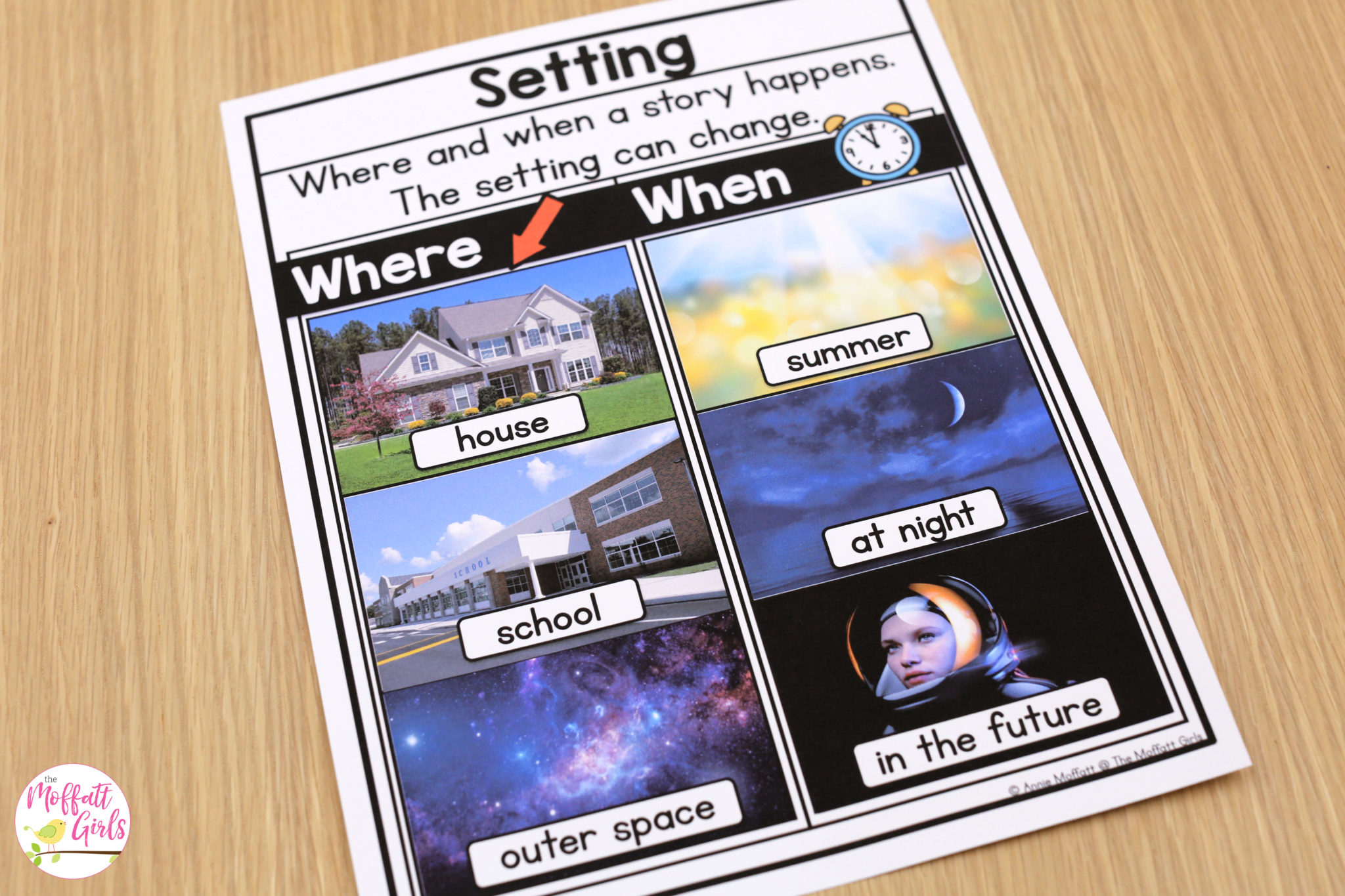
Character or Setting?
Students flip a card and decide if the card has a setting or a character. Then they can create a setting of their own. Both of these activities offer good practice to help them identify the setting of If You Give a Mouse a Cookie.
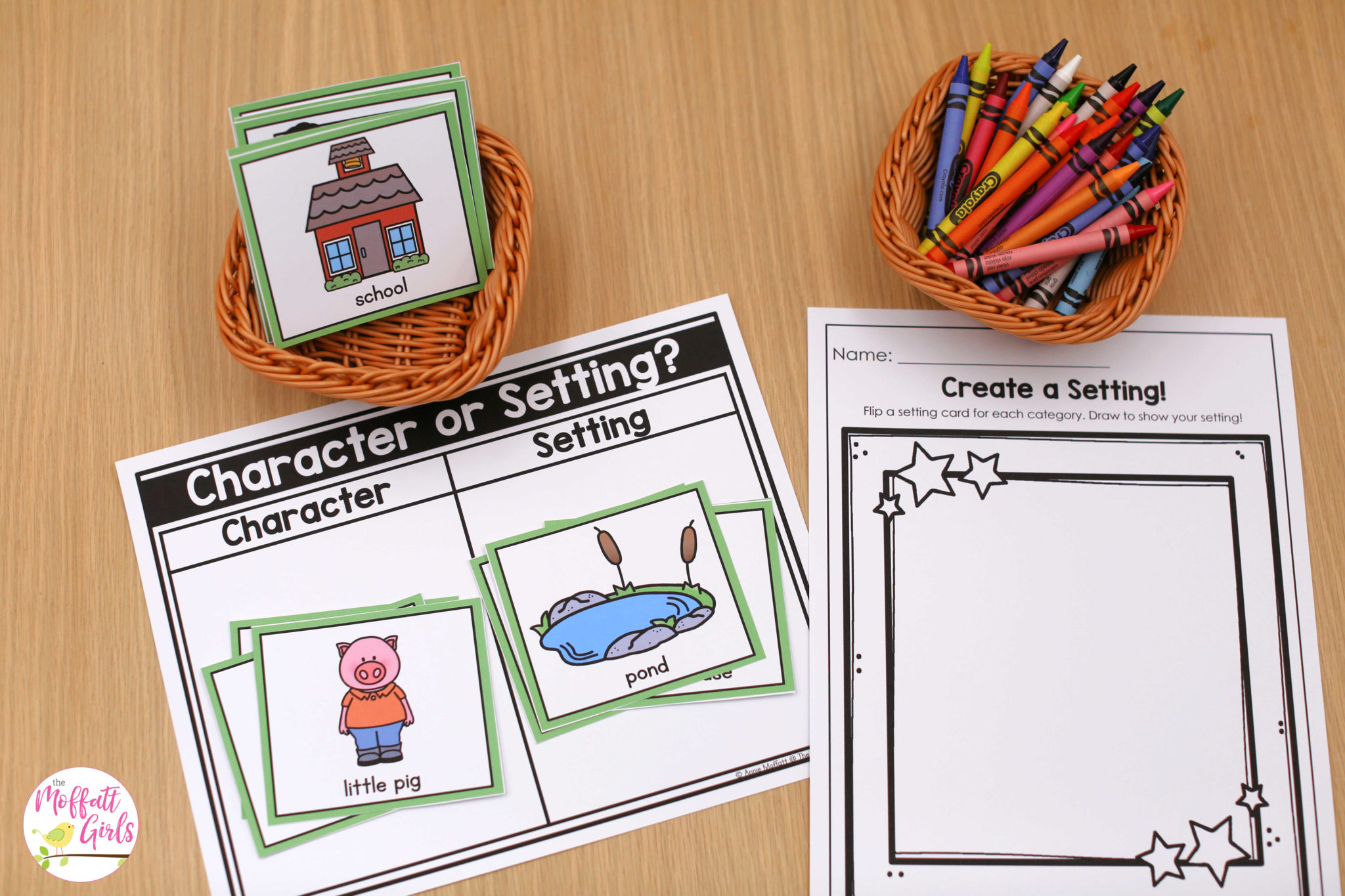
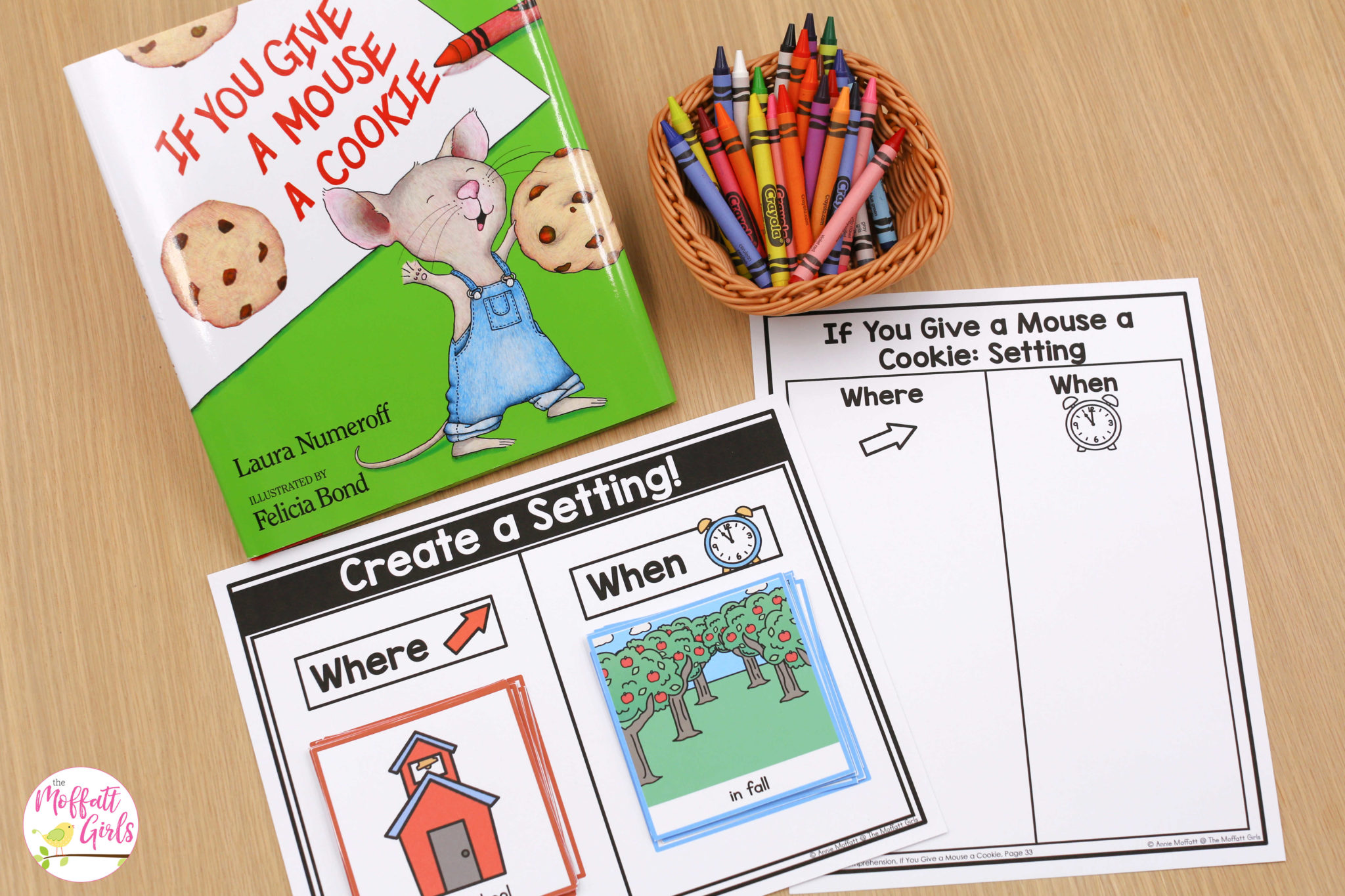
Story Sequencing
The sequence of events in To Give a Mouse a Cookie is so clever to watch, as on thing leads to another. The Story Sequence poster is perfect for helping students understand the importance of order.
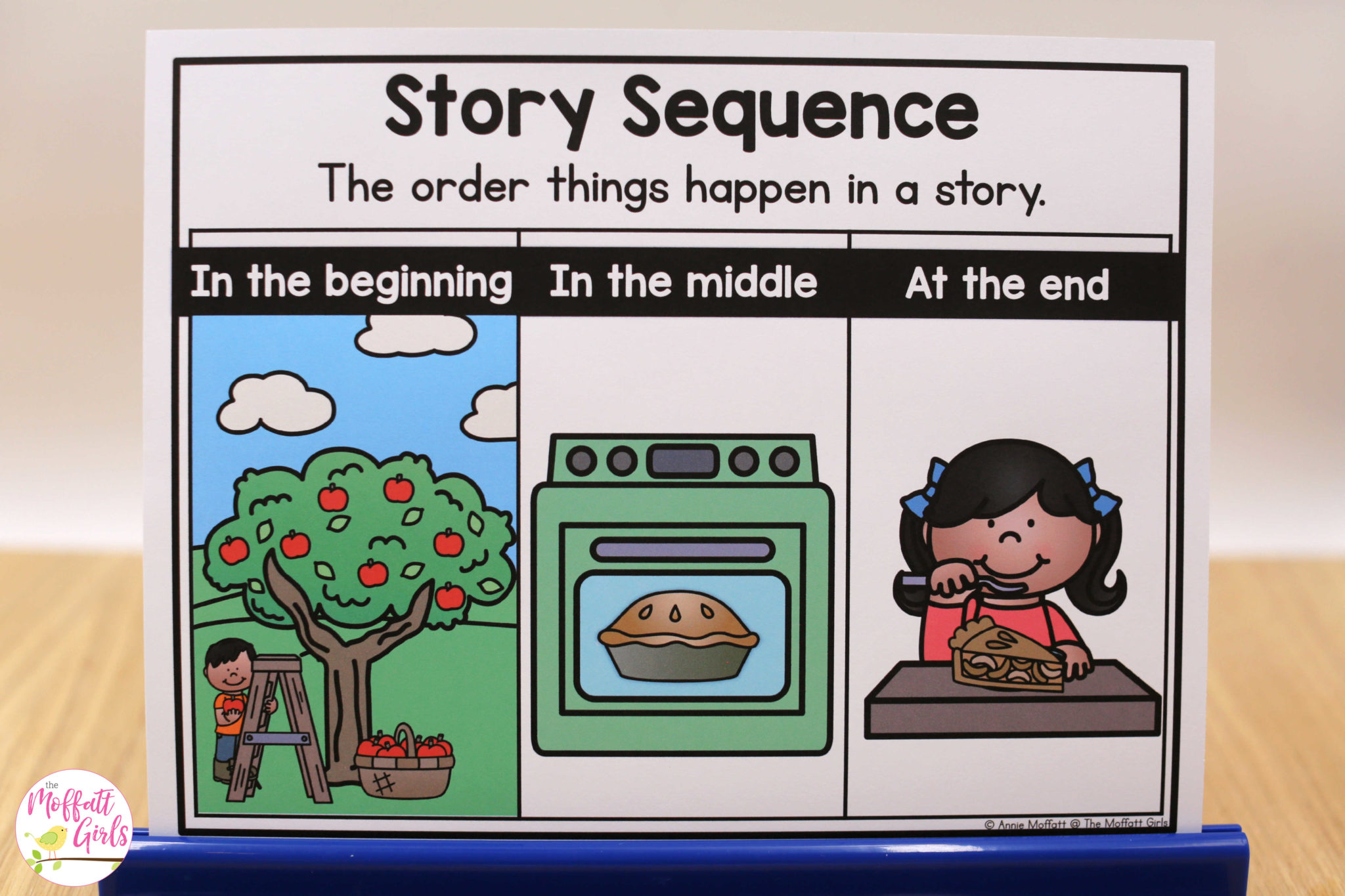
Retelling the Story
Once students have hear the story read a couple of times, they can read the story back with this fun poster.
I’ve included these Put the Pictures in Order games that can be practiced throughout the rest of the units. They come in 3 steps, 4 steps and 5 steps.
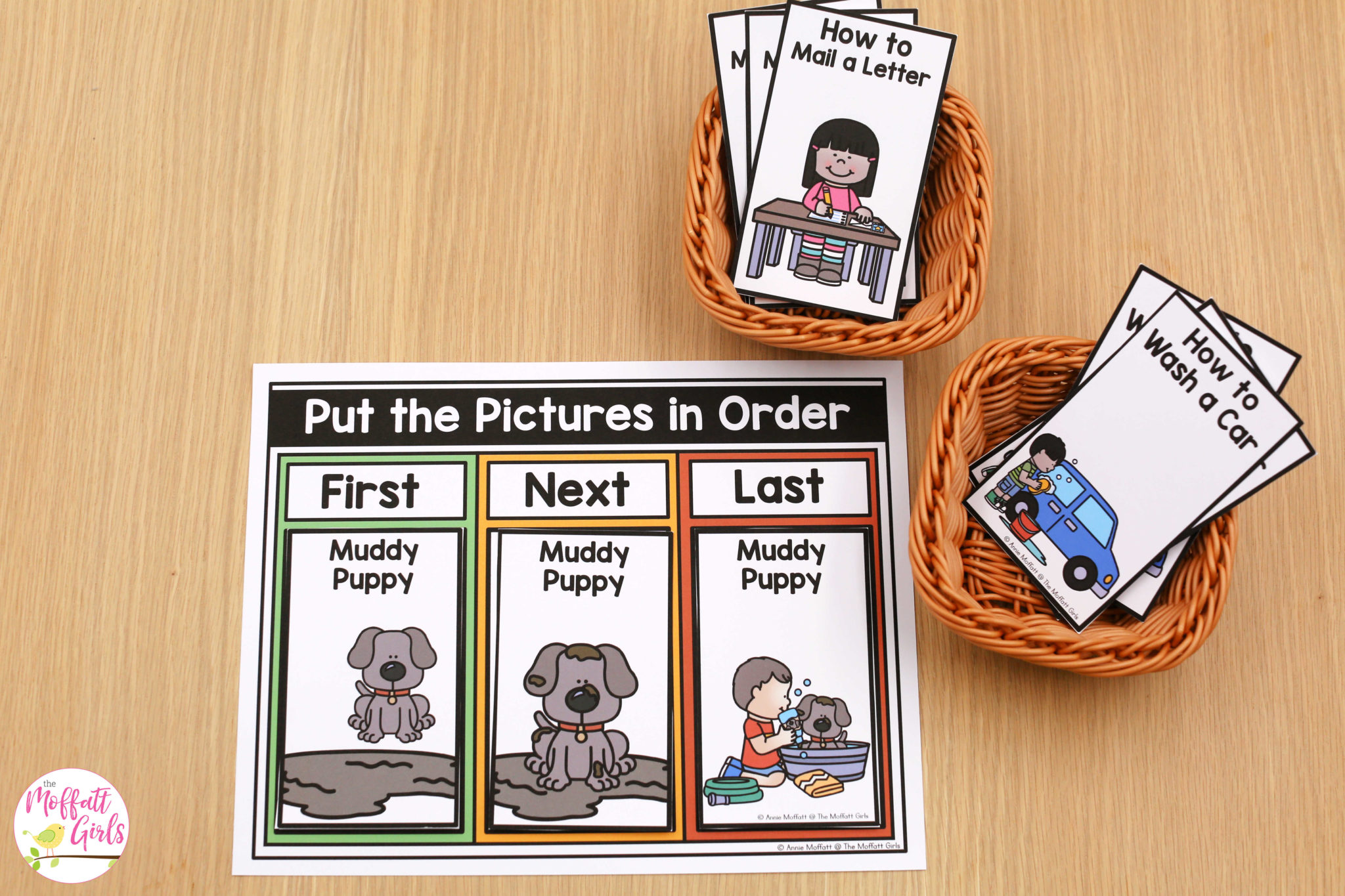
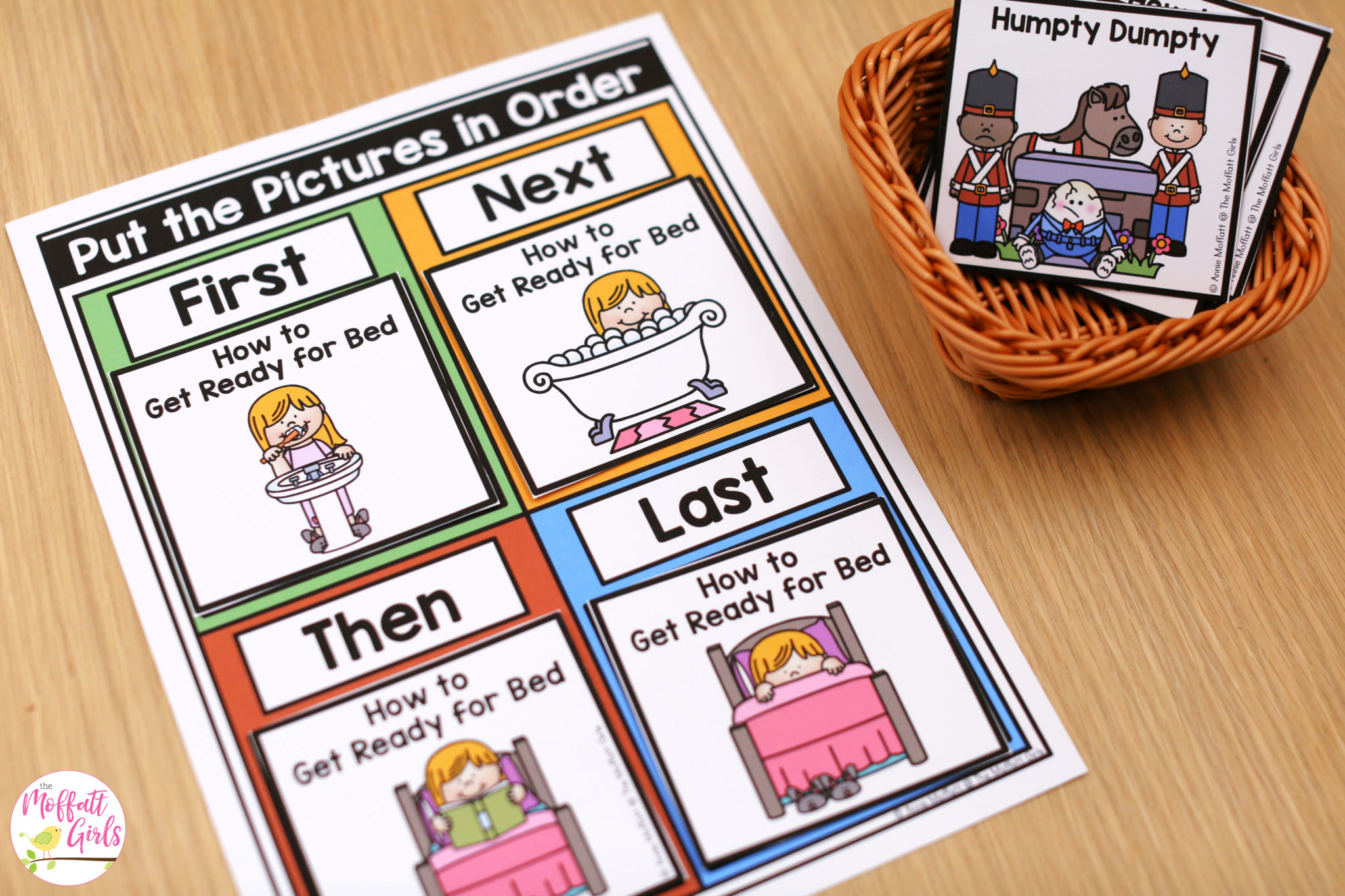
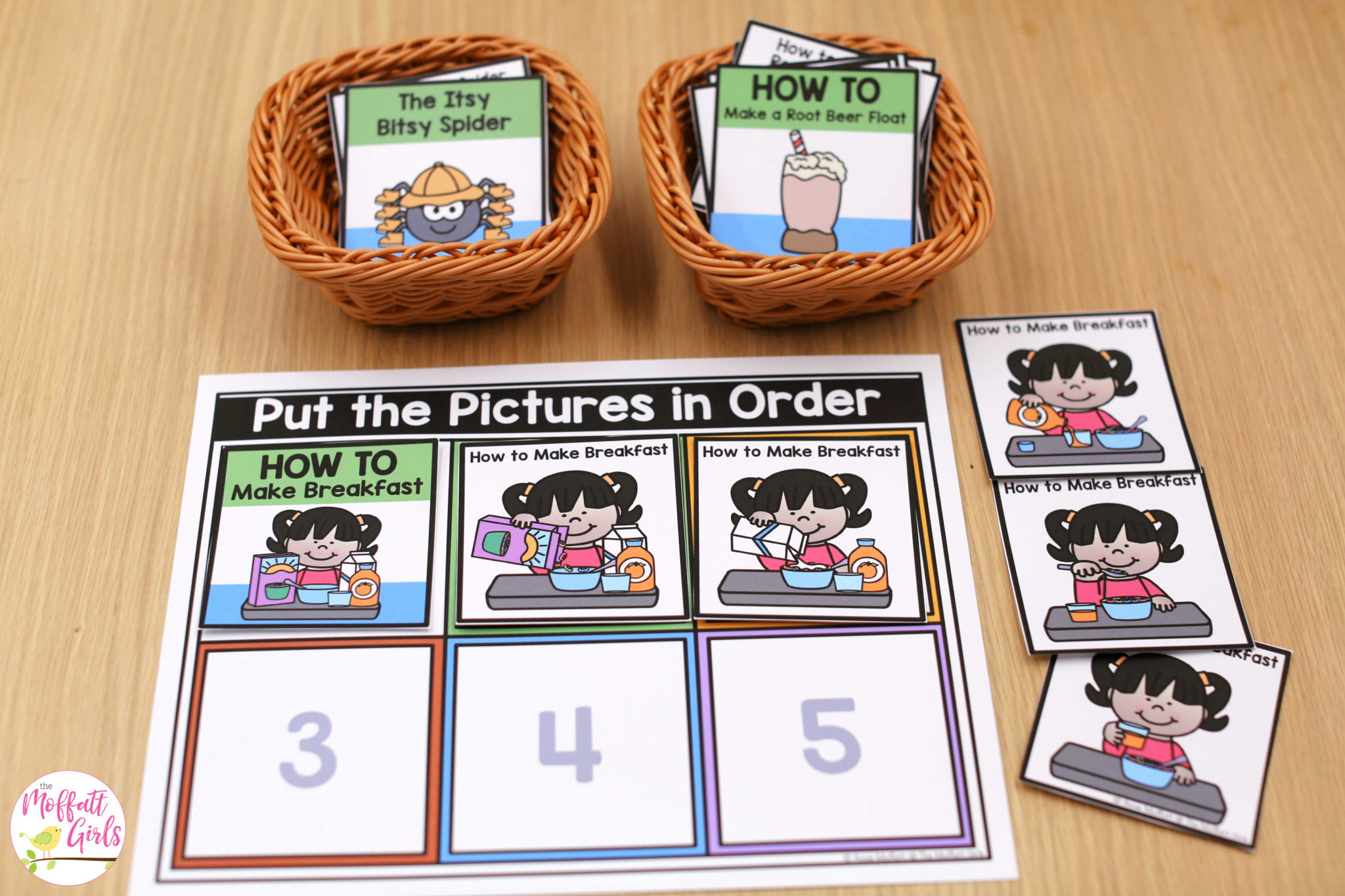
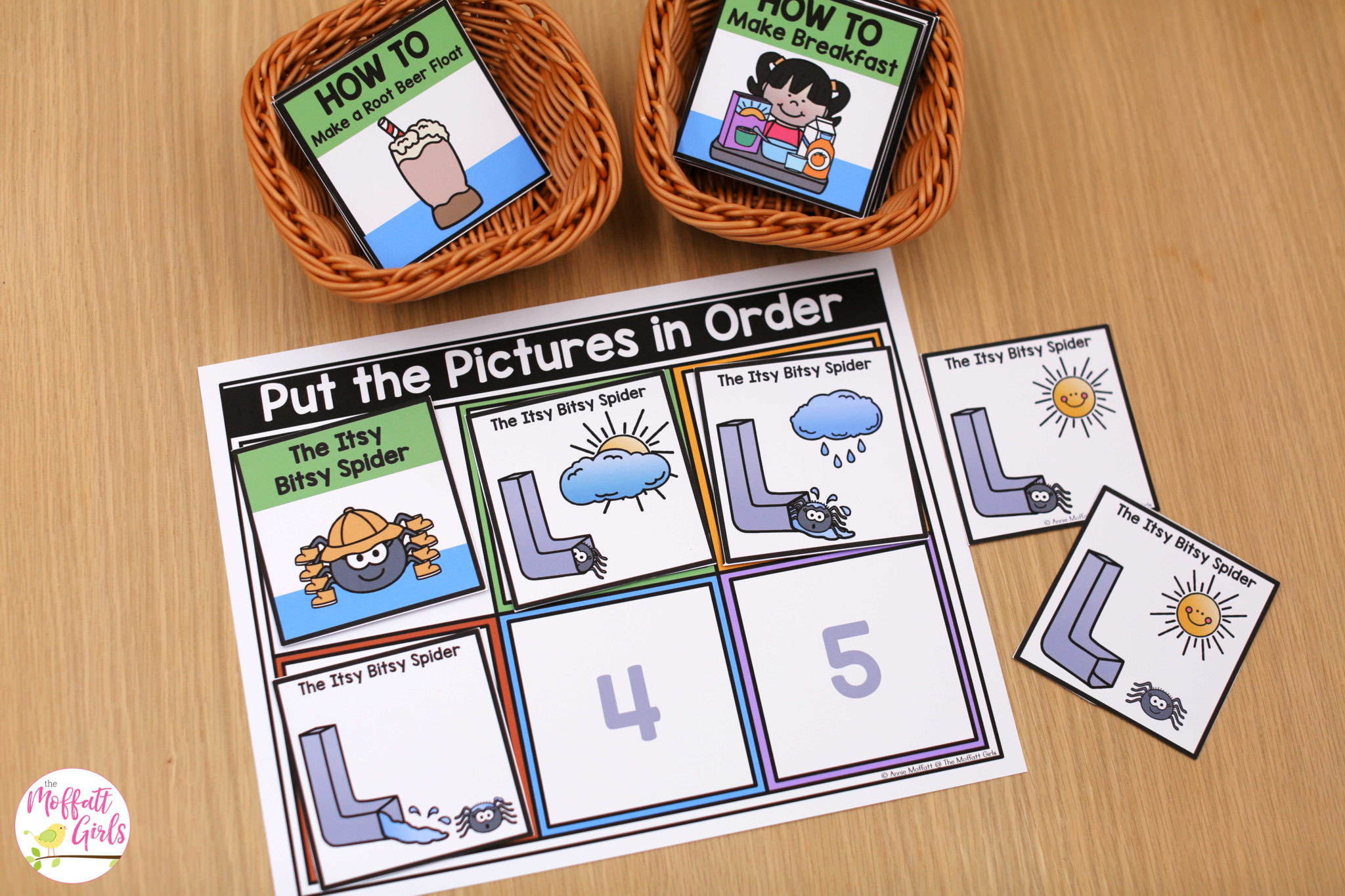
Final Craft
Each week culminates in a craft that allows students to practice one of the concepts learned in the week. For this book, students build a wheel that shows the order of events from the book. They can take this home and retell the story to their family!
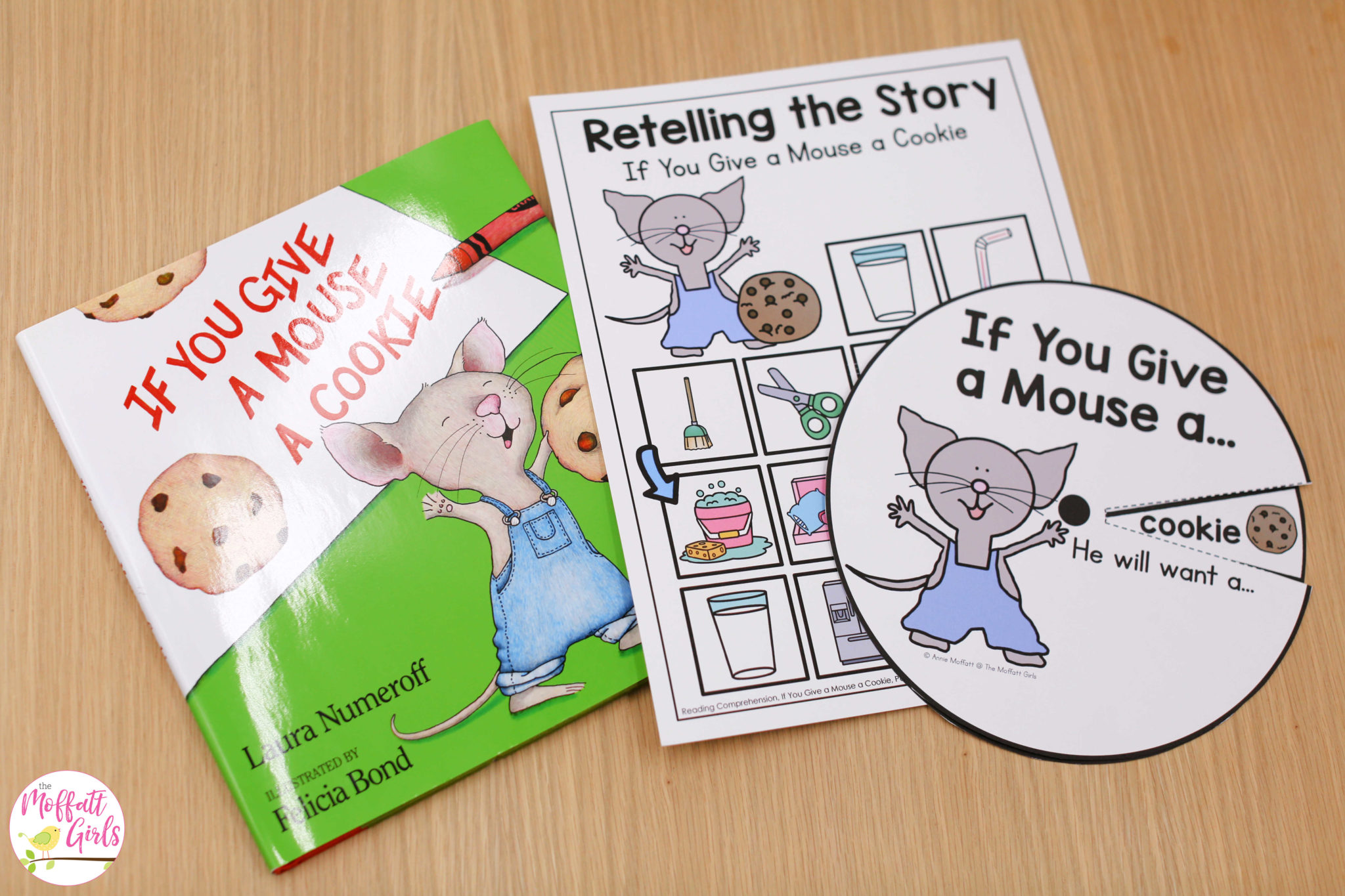
Book 2: Panda Kindergarten
Panda Kindergarten is the second book in the Kindergarten Reading Comprehension Curriculum. It is the perfect non-fiction book, because it helps build understanding of the relationship between a panda sanctuary and their own classroom and playground!
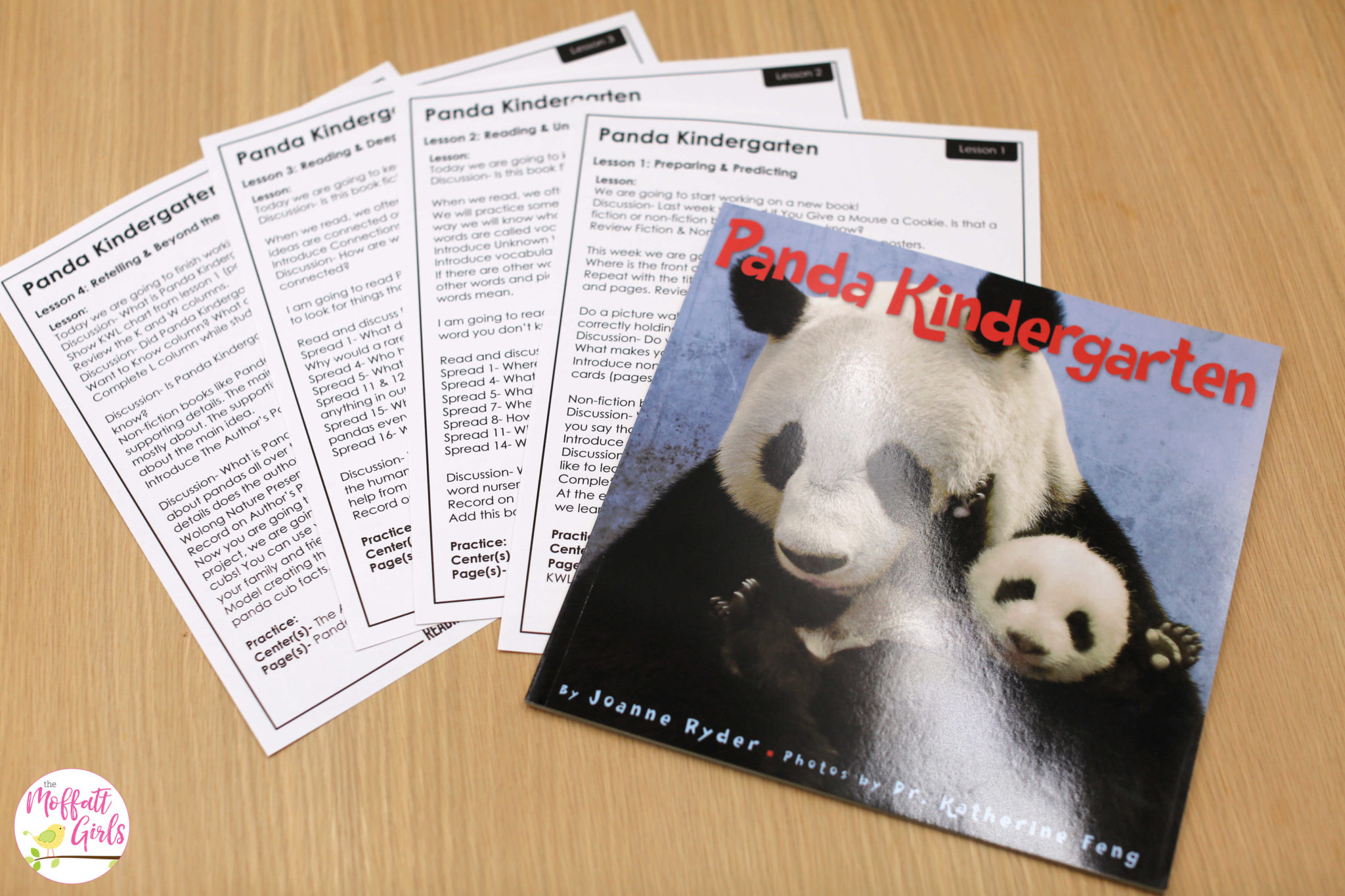
Vocabulary
In kindergarten, forming a basic understanding of the language that is used in a book before you begin reading can make a big difference in understanding. Therefore, the lessons begin with building vocabulary.
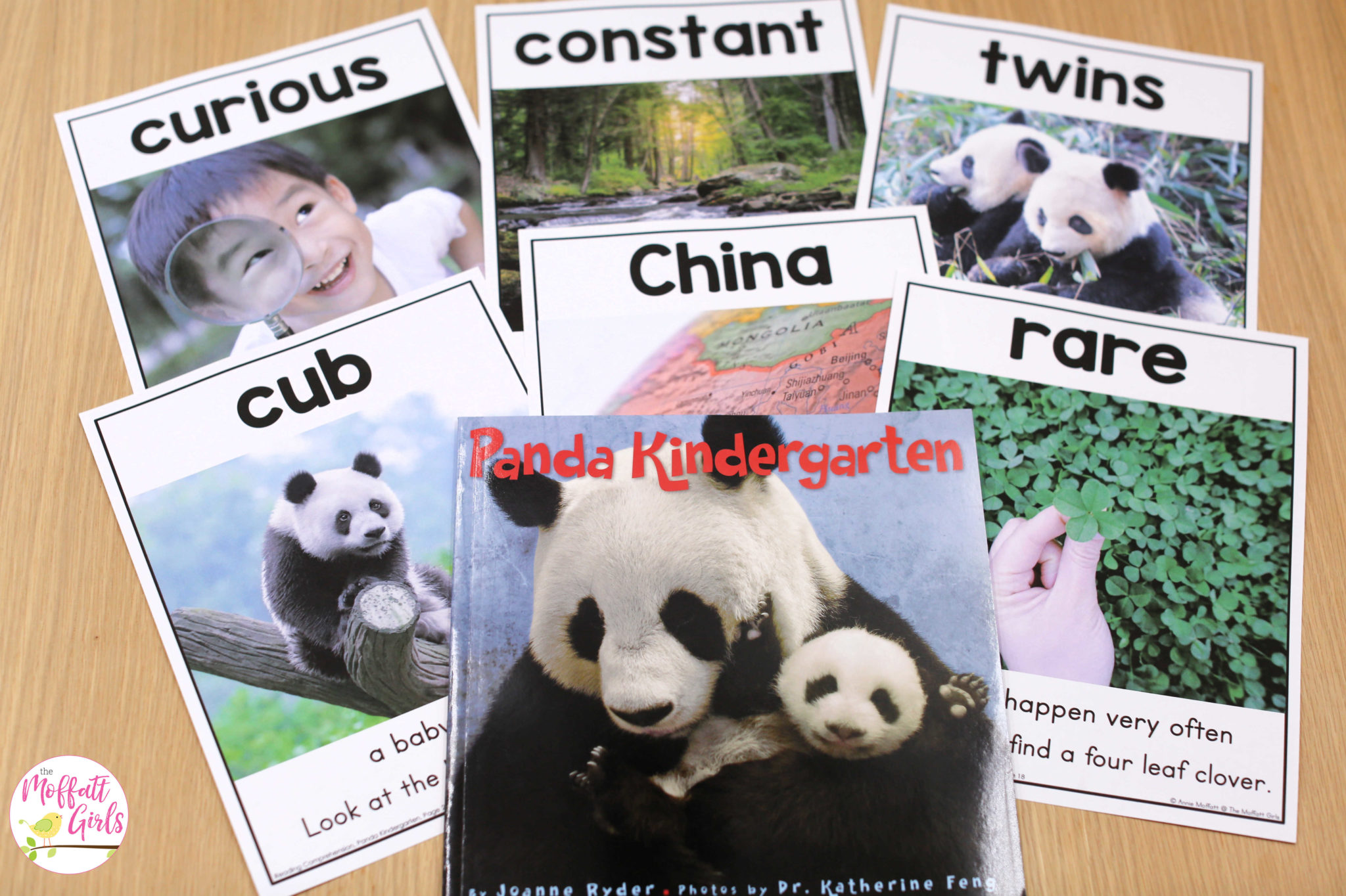
I have included 3 different versions of the vocabulary so that you can introduce it however you see fit. First, I have full-page posters. Next there are vocabulary cards that can be used in a pocket chart or as book marks when finding the words in the book. Finally, there is a single page poster that includes all of the focus vocabulary words.
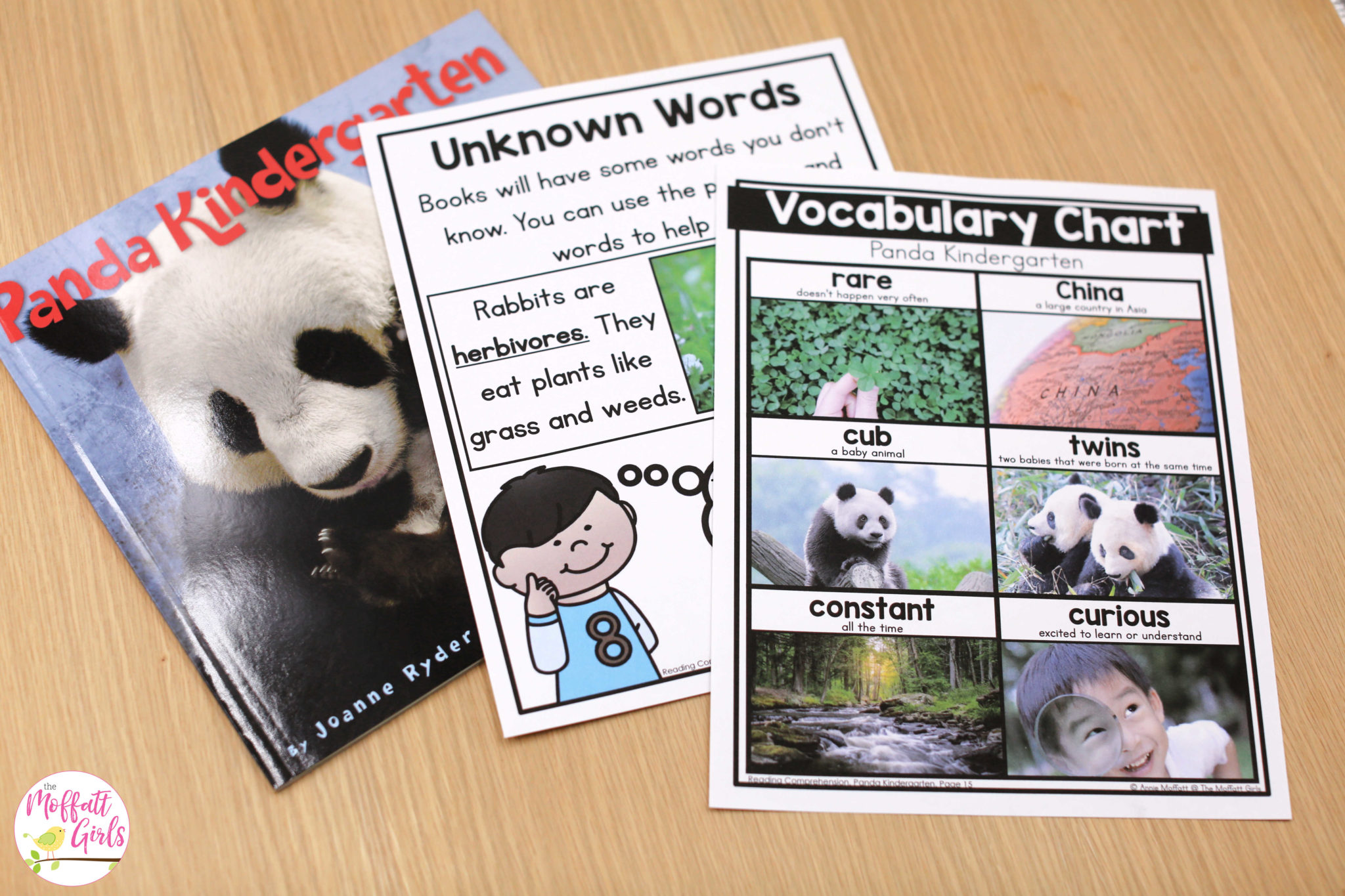
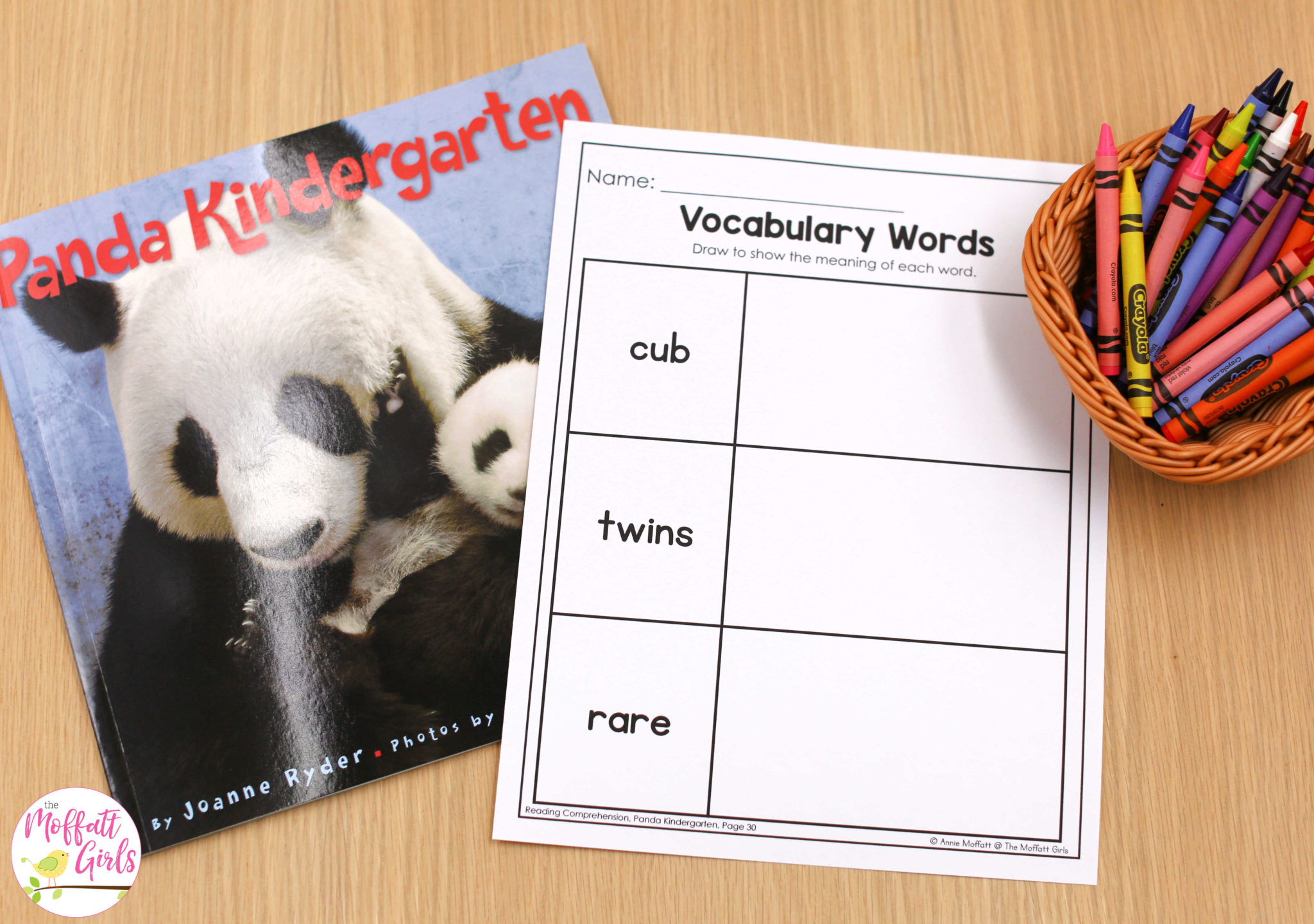
Fiction and Non-Fiction Sort
The Fiction and Non-Fiction Sort is a simple center that gives students the opportunity to practice identifying fiction and non-fiction books.
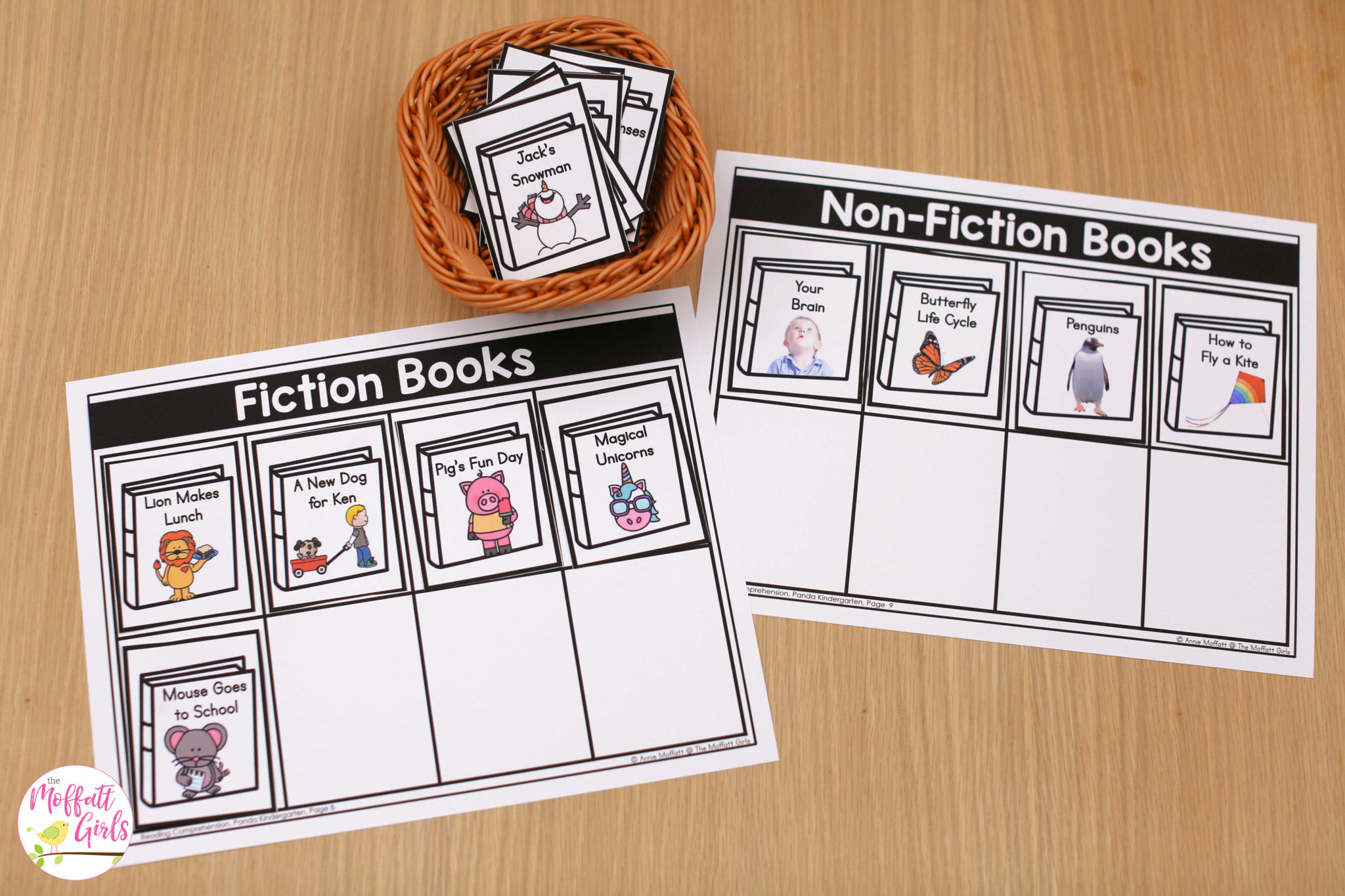
This page can be used in a small group setting or sent home as homework.
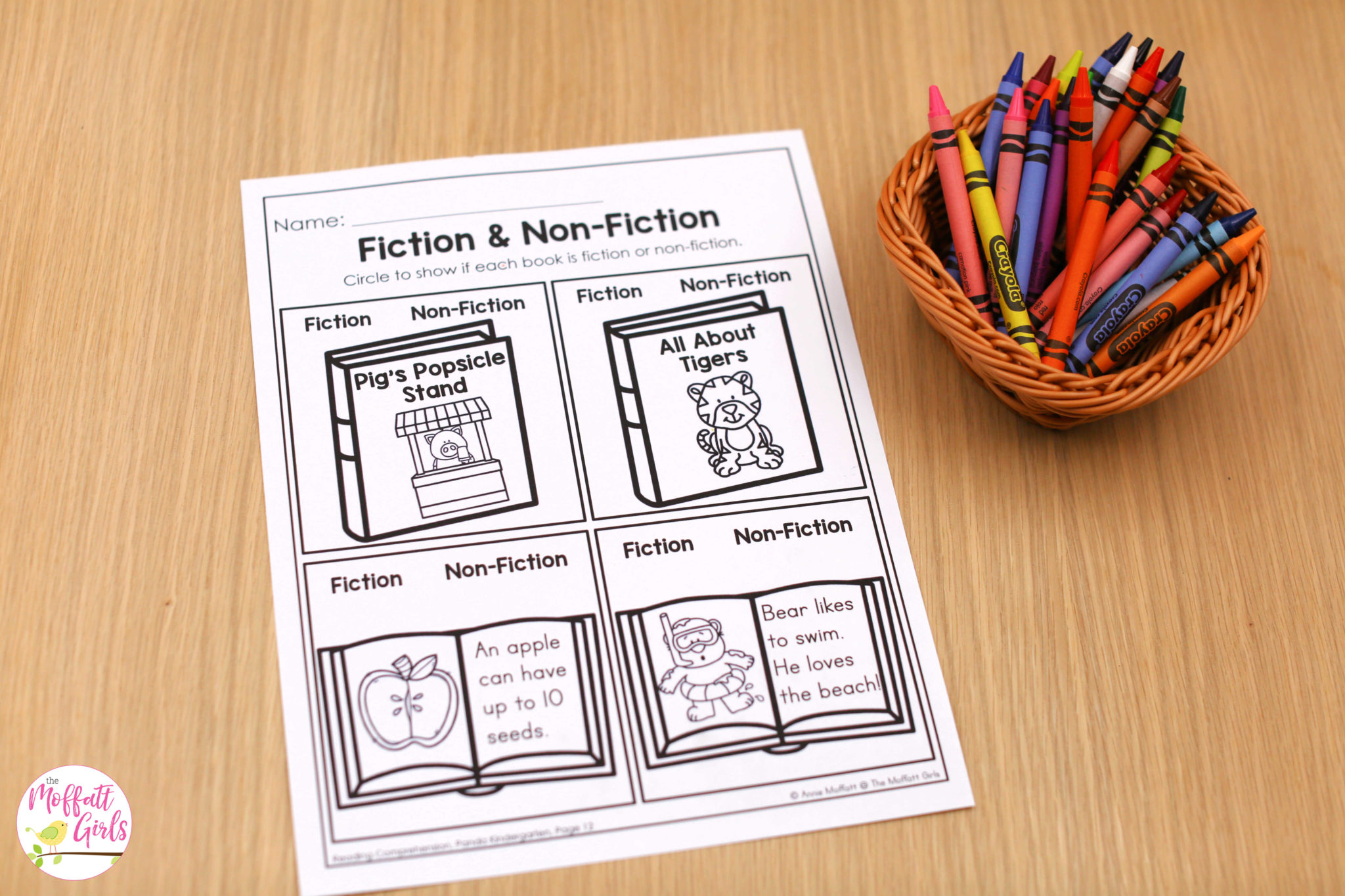
KWL Chart
Before reading Panda Kindergarten, take time to discuss the topics of the book by asking, “What do you know?” and “What do you want to know?” Then after you read the book to them, you can ask, “What did you learn?” These questions are great for sparking curiosity and helping students identify their growth in learning from the book.
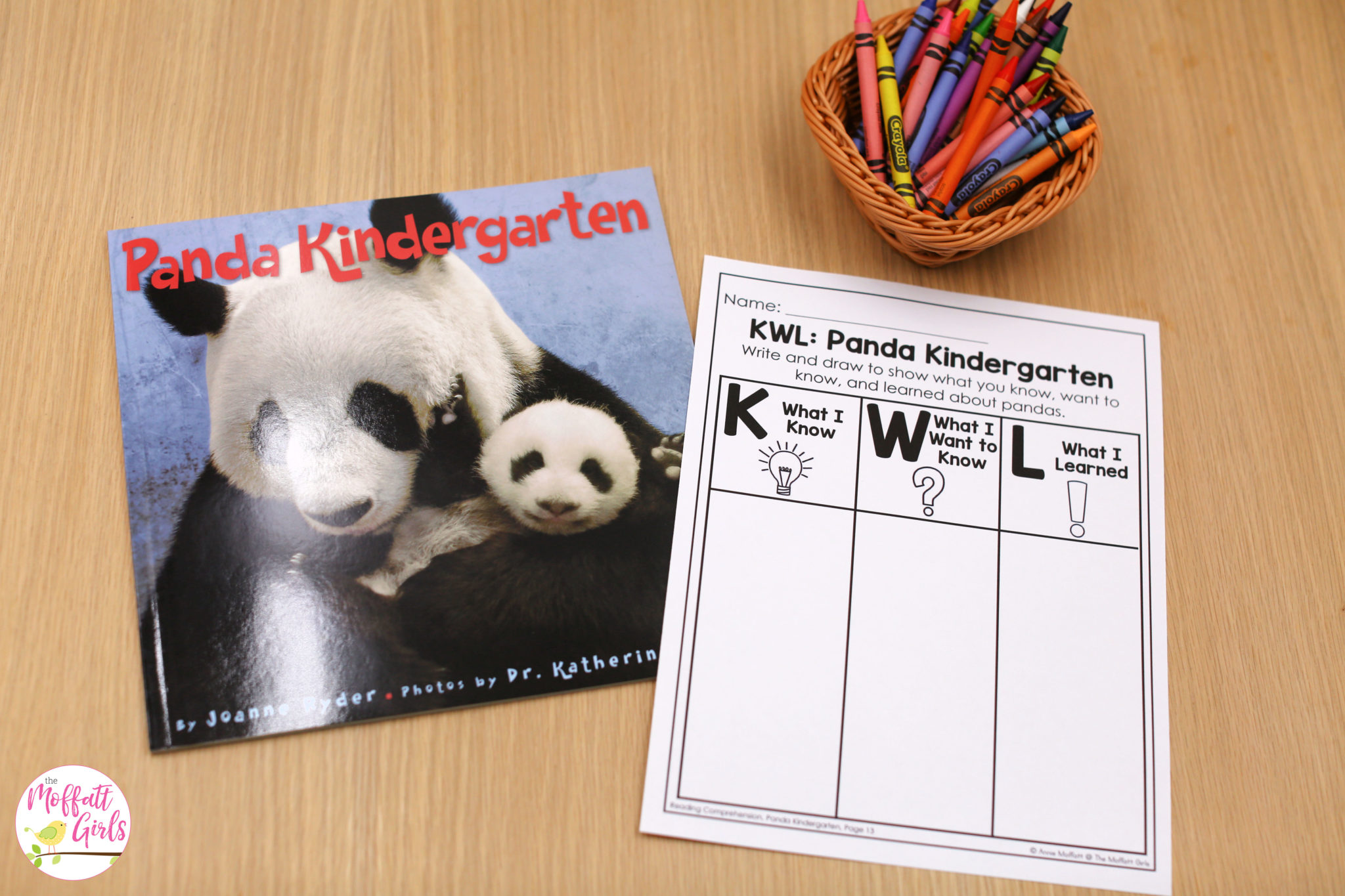
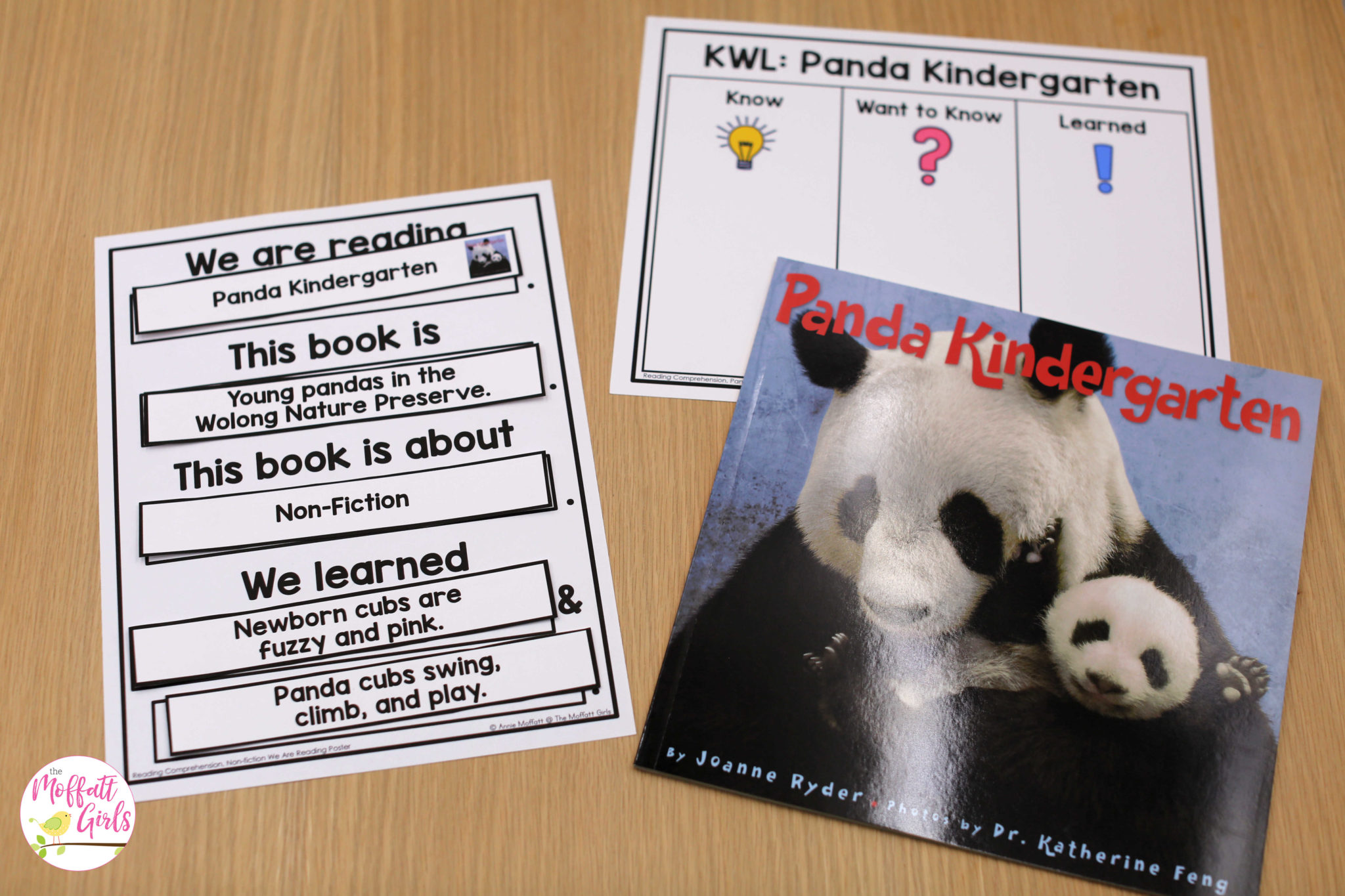
The book marks include the discussion questions so that as you read the book, you can highlight certain topics.
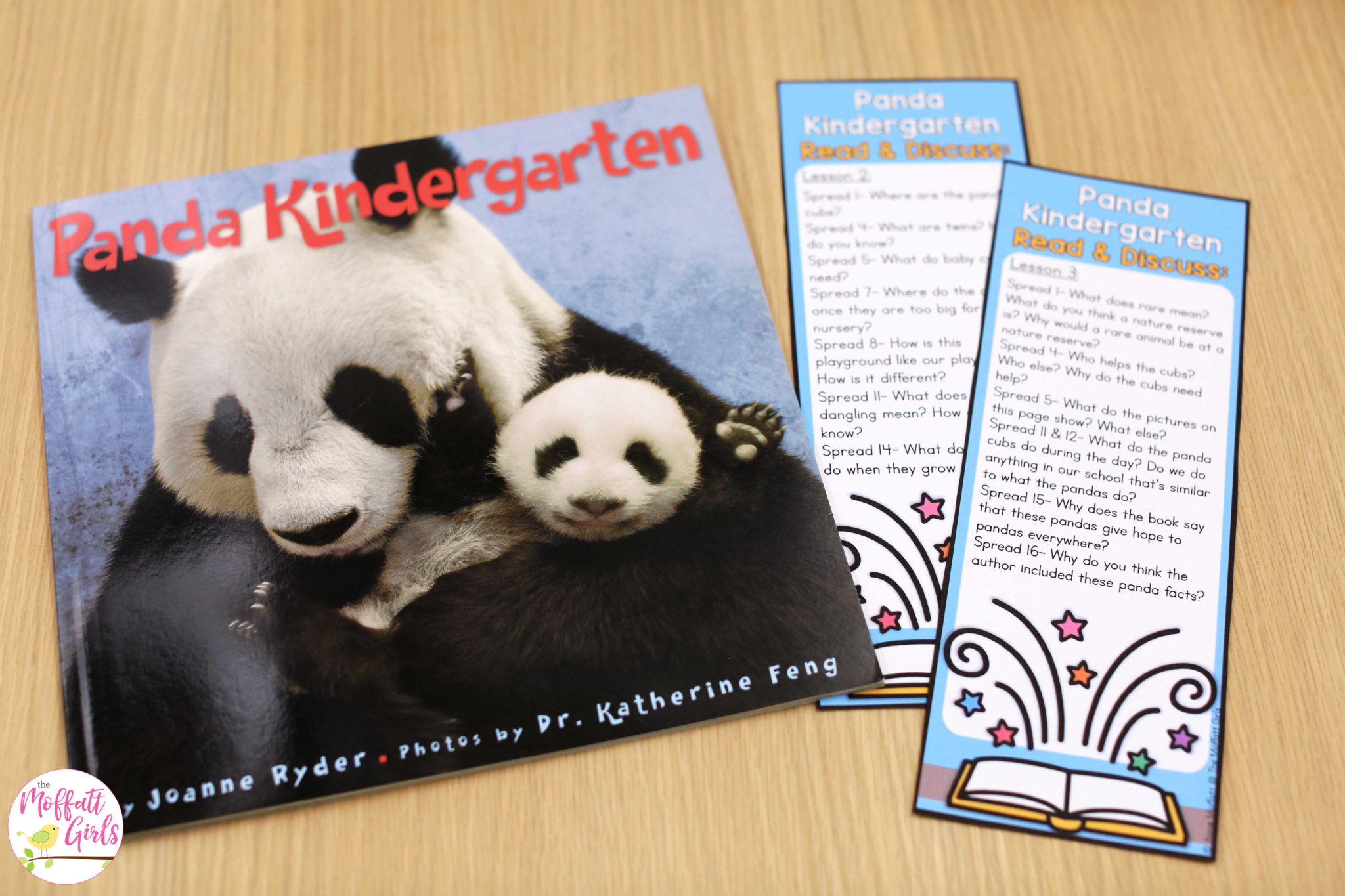
The Author’s Point
It is important for students to start practicing identifying the author’s main idea and the details that support the main idea. As students practice this skill, they will become better at filtering out the non-important details in a book in order to pull the important points out. This is simple activity is perfect practice.
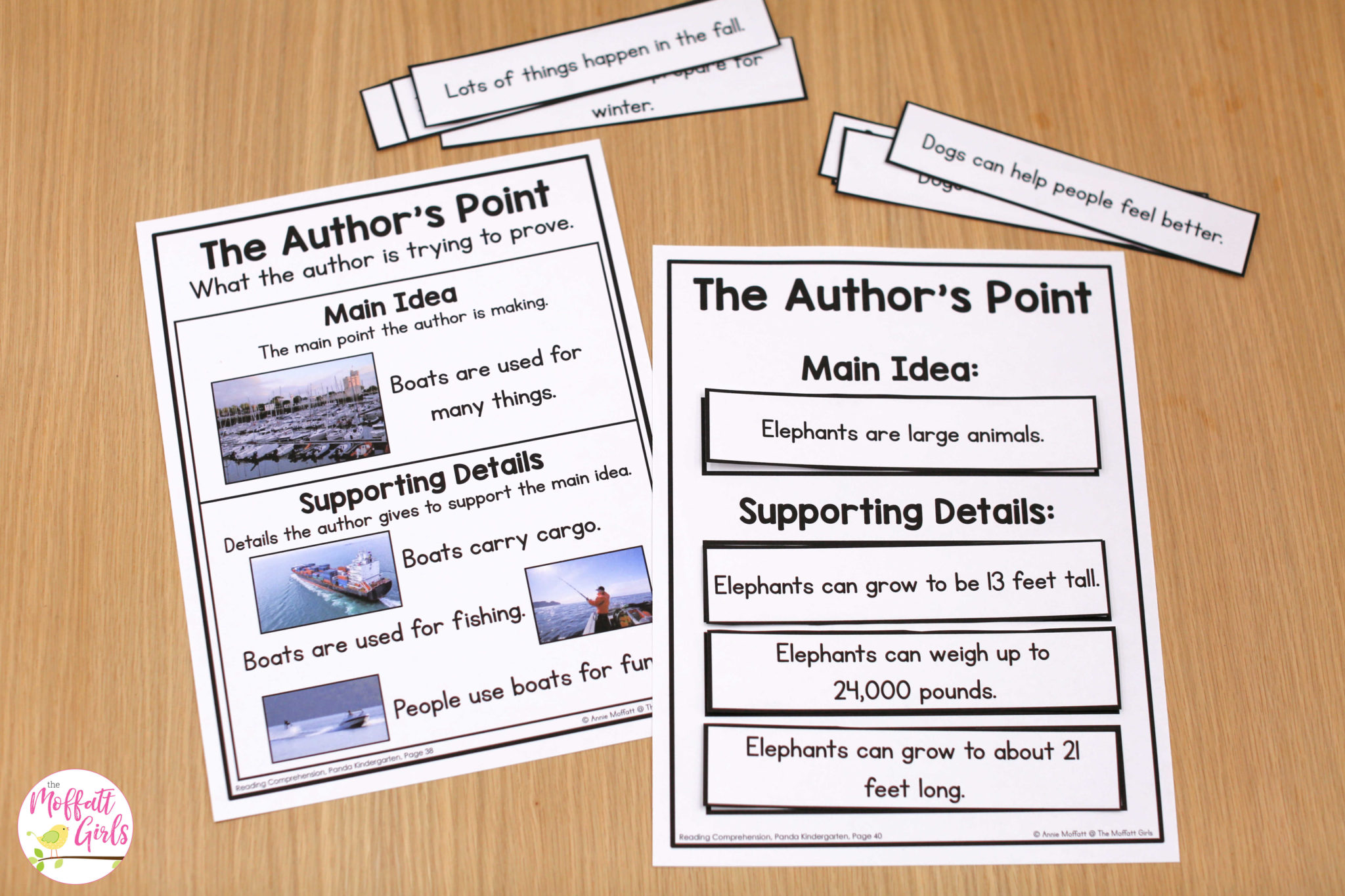
Making Connections
Making connections is another skill that doesn’t always come naturally. Therefore, I’ve made centers to help students find the common connection between subjects.
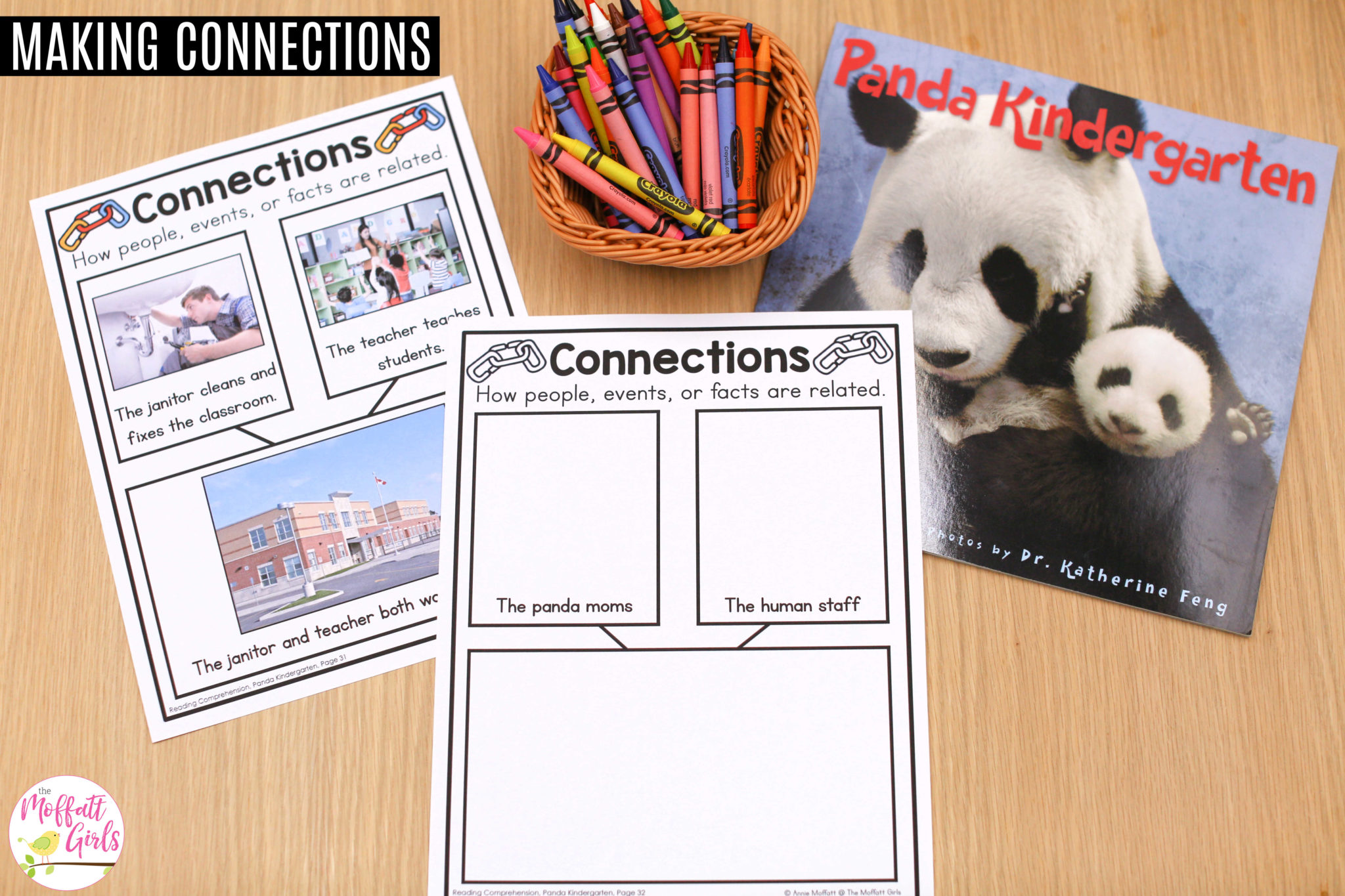
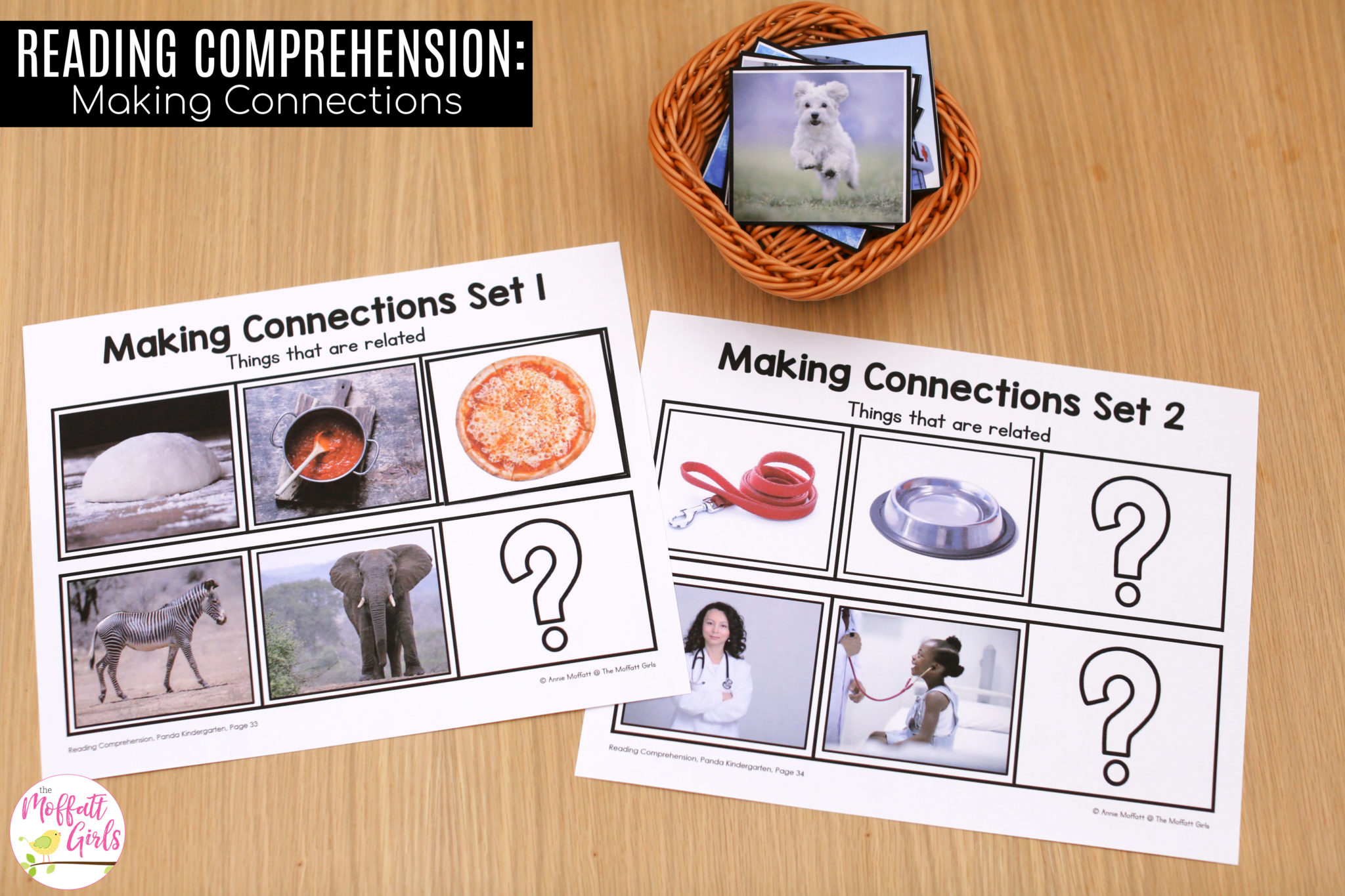
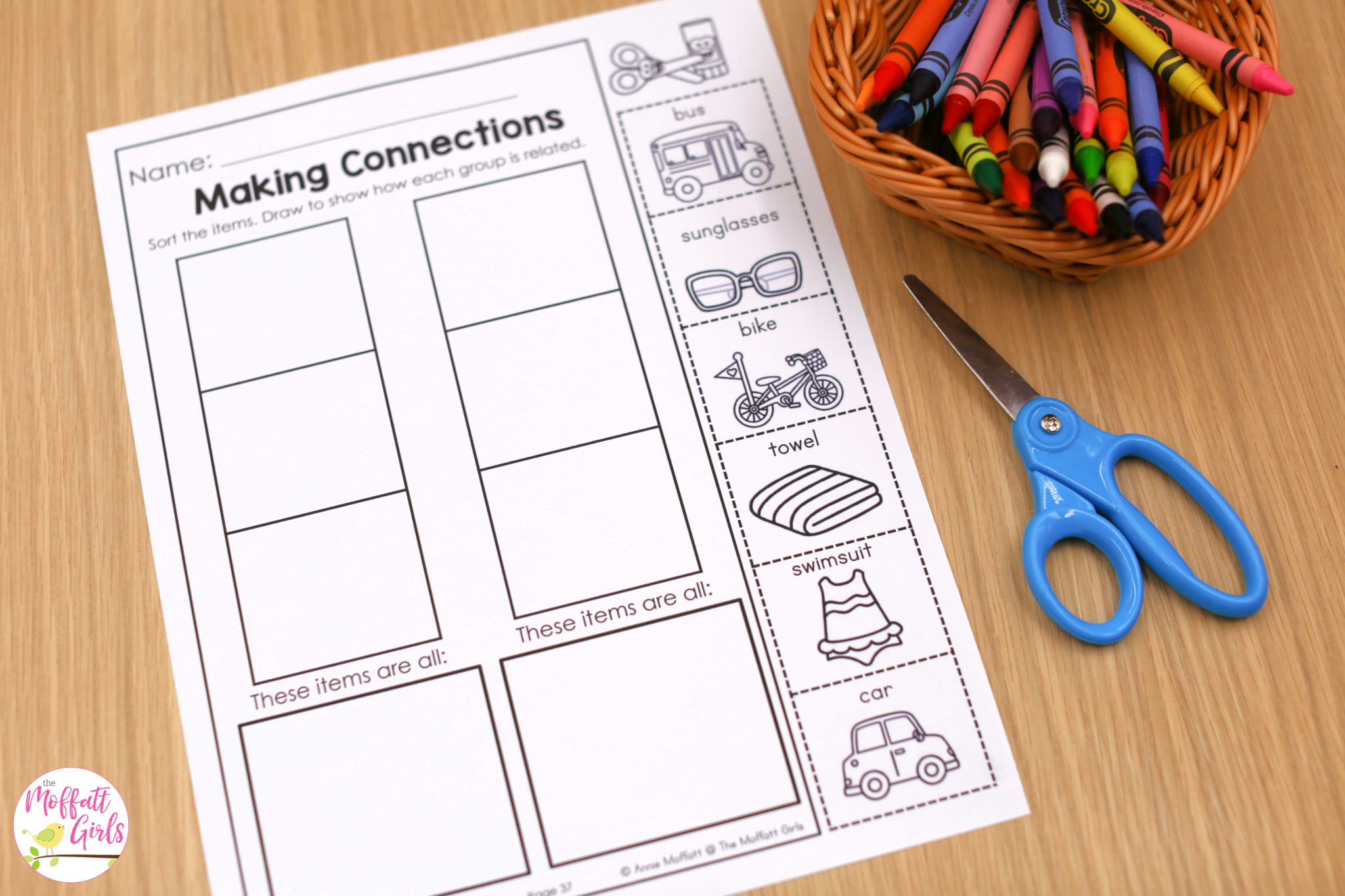
Unknown Words
By this point in the lesson, students will be more familiar with the book. Once students have a good understanding of what the book is about, it’s important to highlight words that may not be familiar and need further investigation. Context clues and pictures are a great way for students to start finding the meanings of these unknown words.
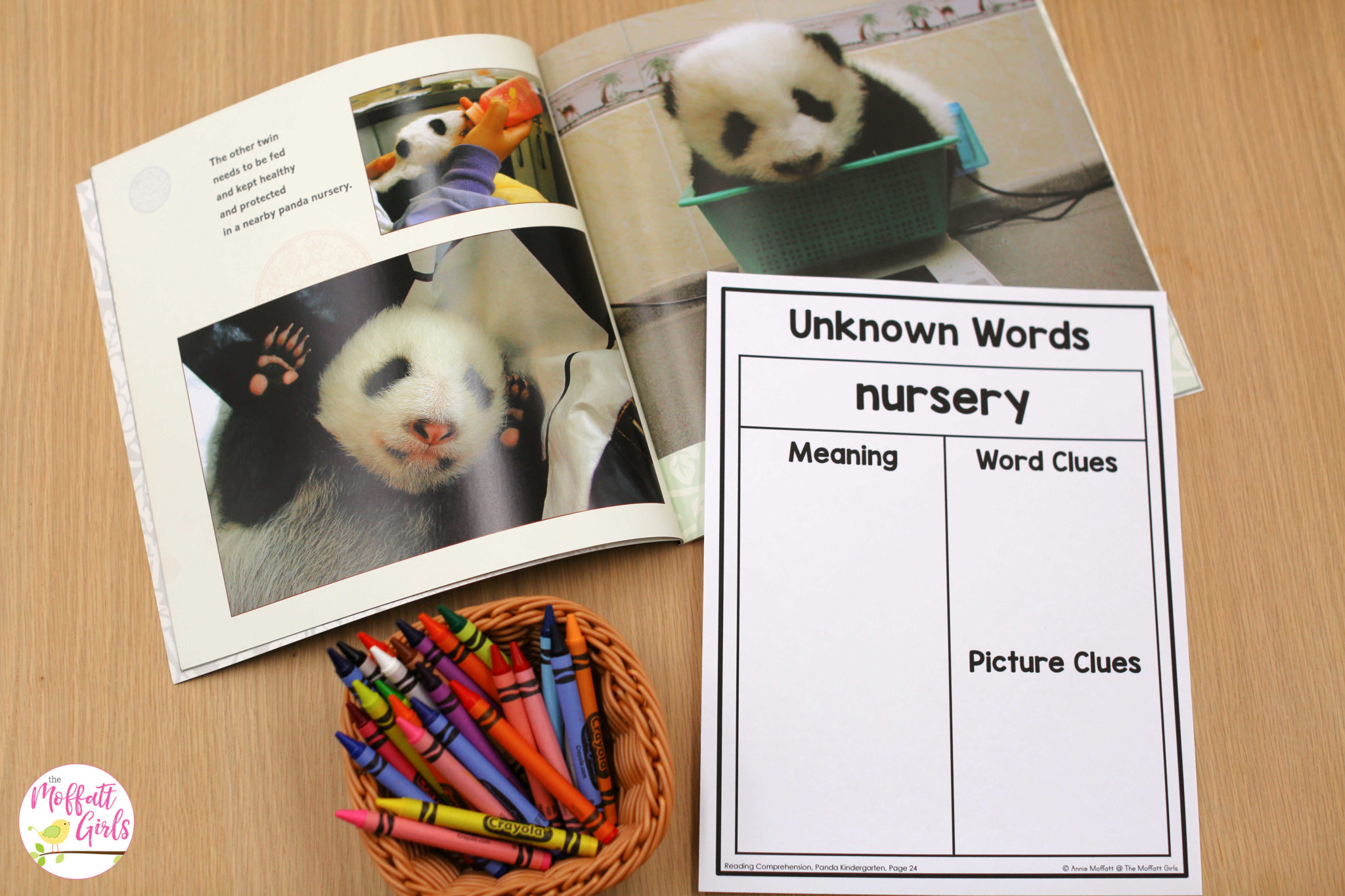
This extension activity offers further practice in using context clues and pictures to decide the meaning of unknown words.
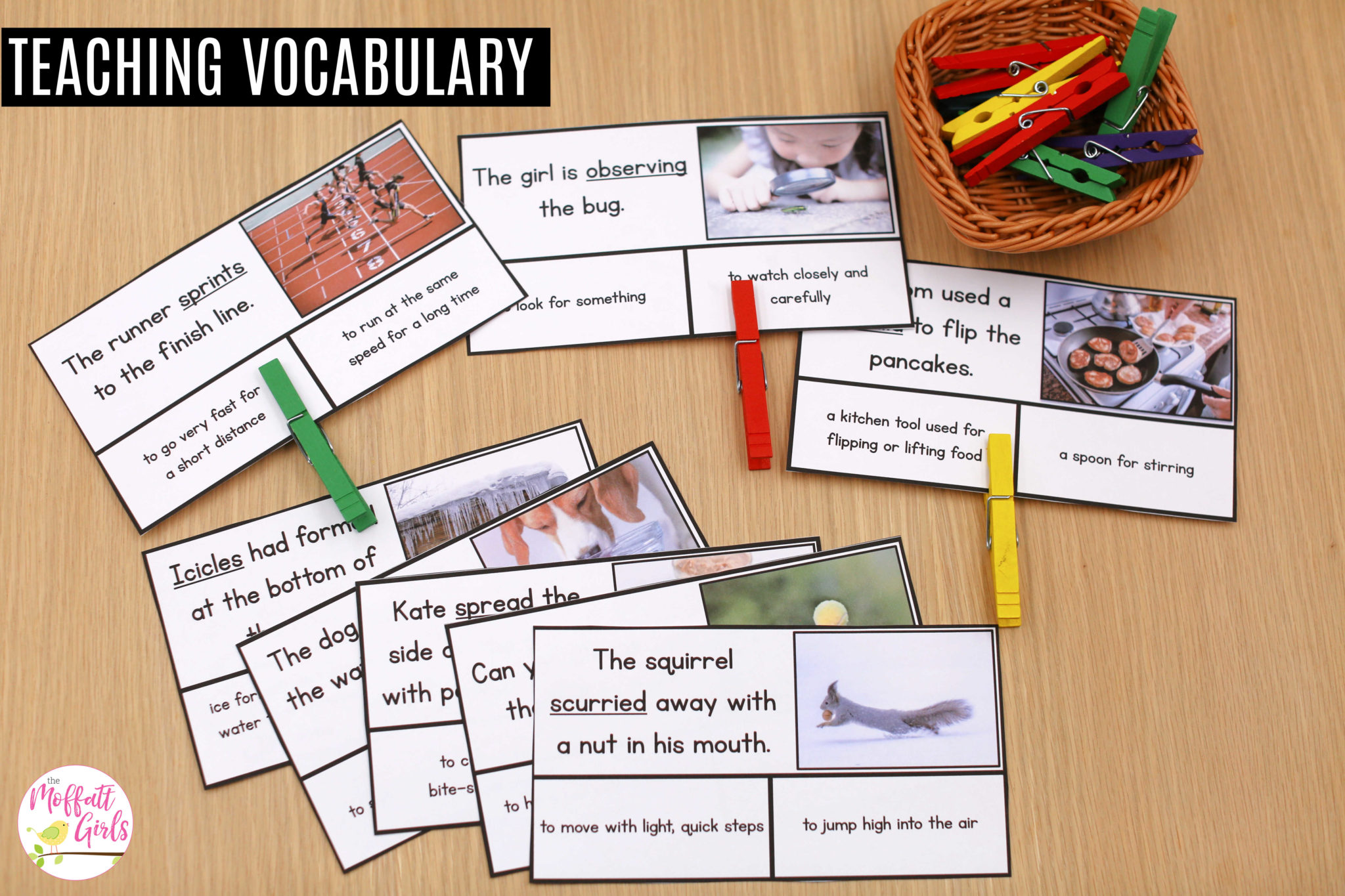
Panda Craft
As with each book, the lessons culminate in a craft that reminds students of the concepts they have learned.
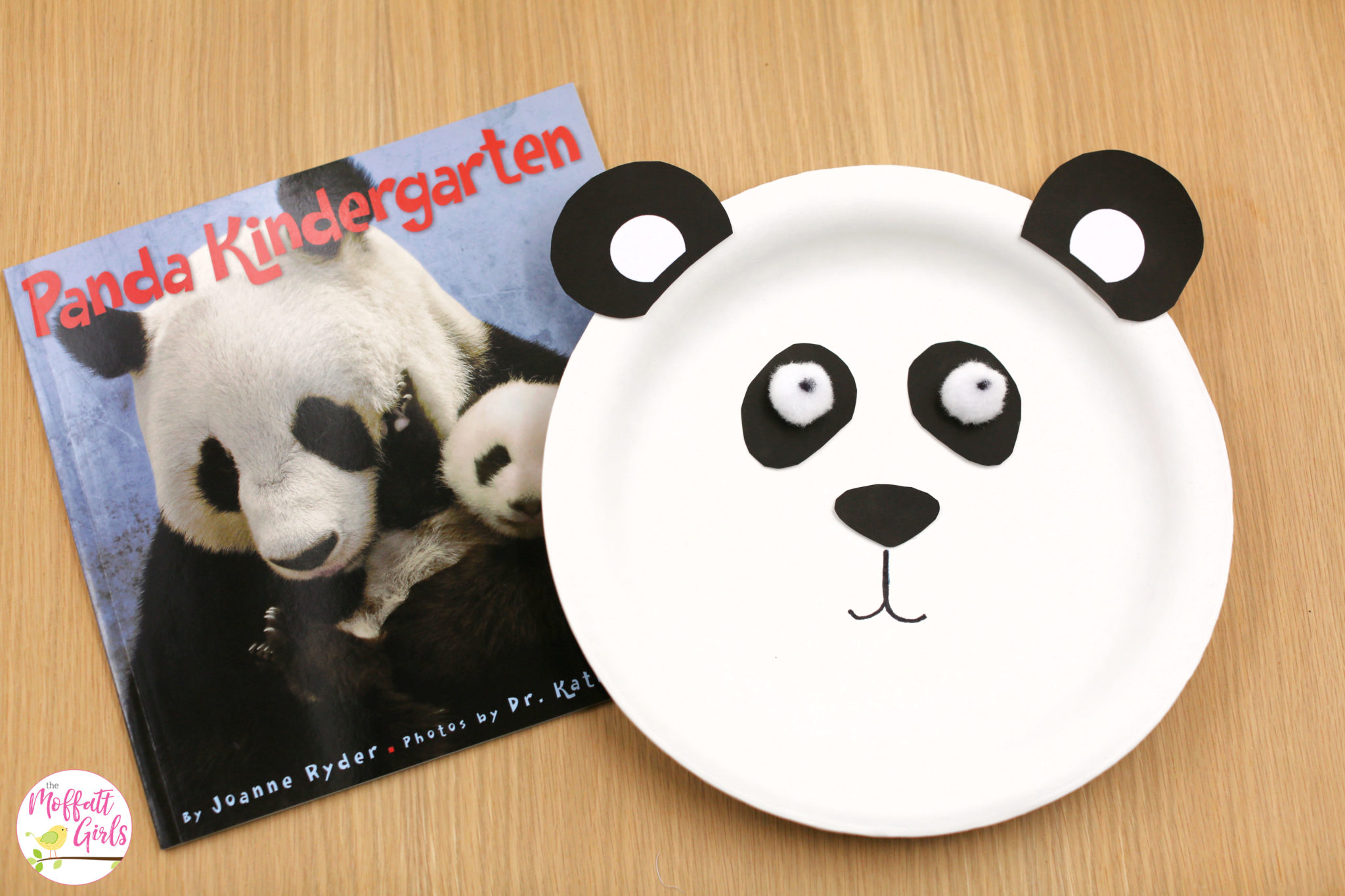
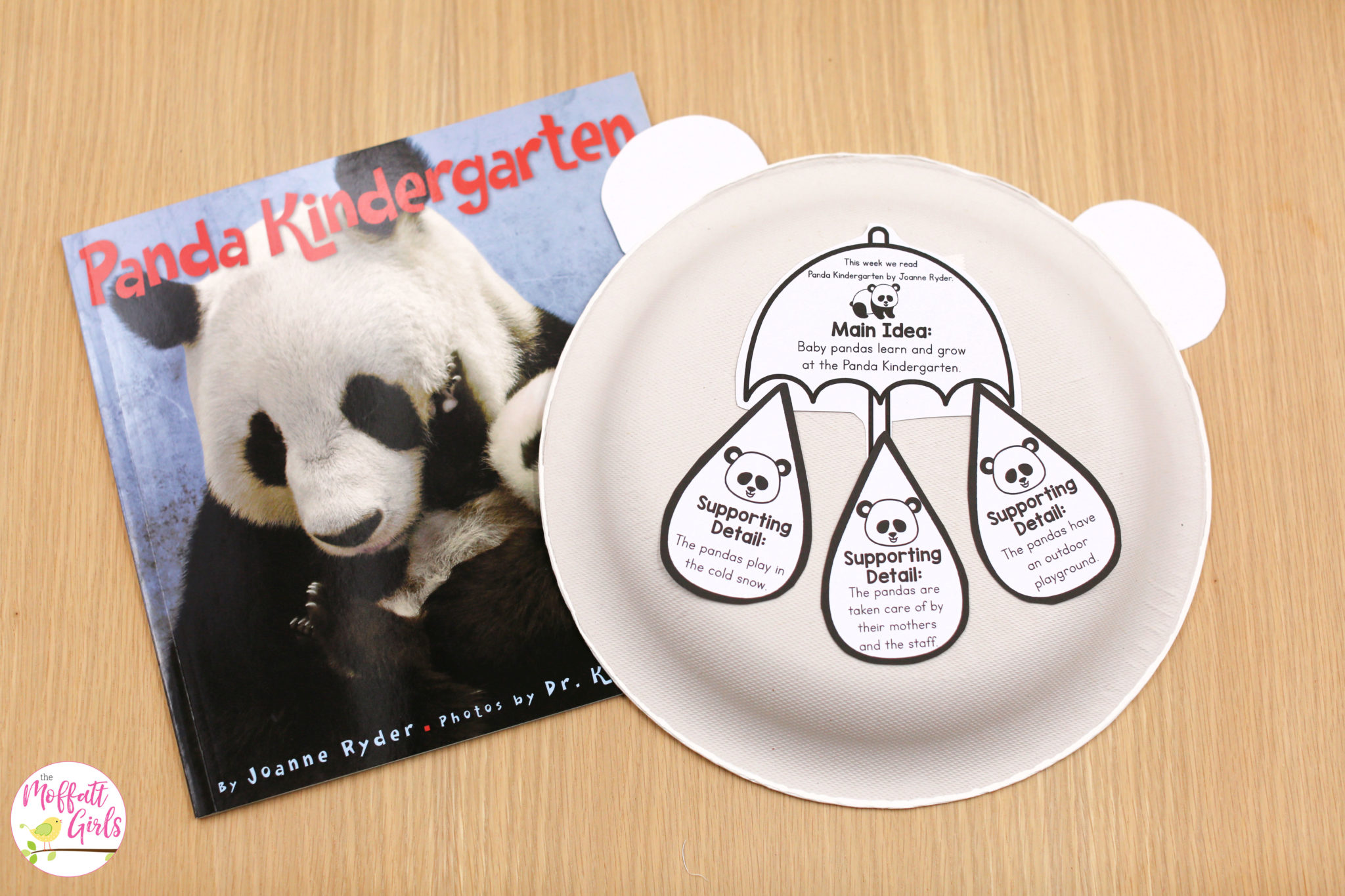
Book 3: The Kissing Hand
This is one of my absolute favorite books, especially for students who are adjusting to the beginning of the school year! The story line is simple, but there are many elements that can be expanded and looked at carefully. This book is fiction, but it has many ways to connect real life experiences. Therefore, making connections is a big part of the lessons for this book.
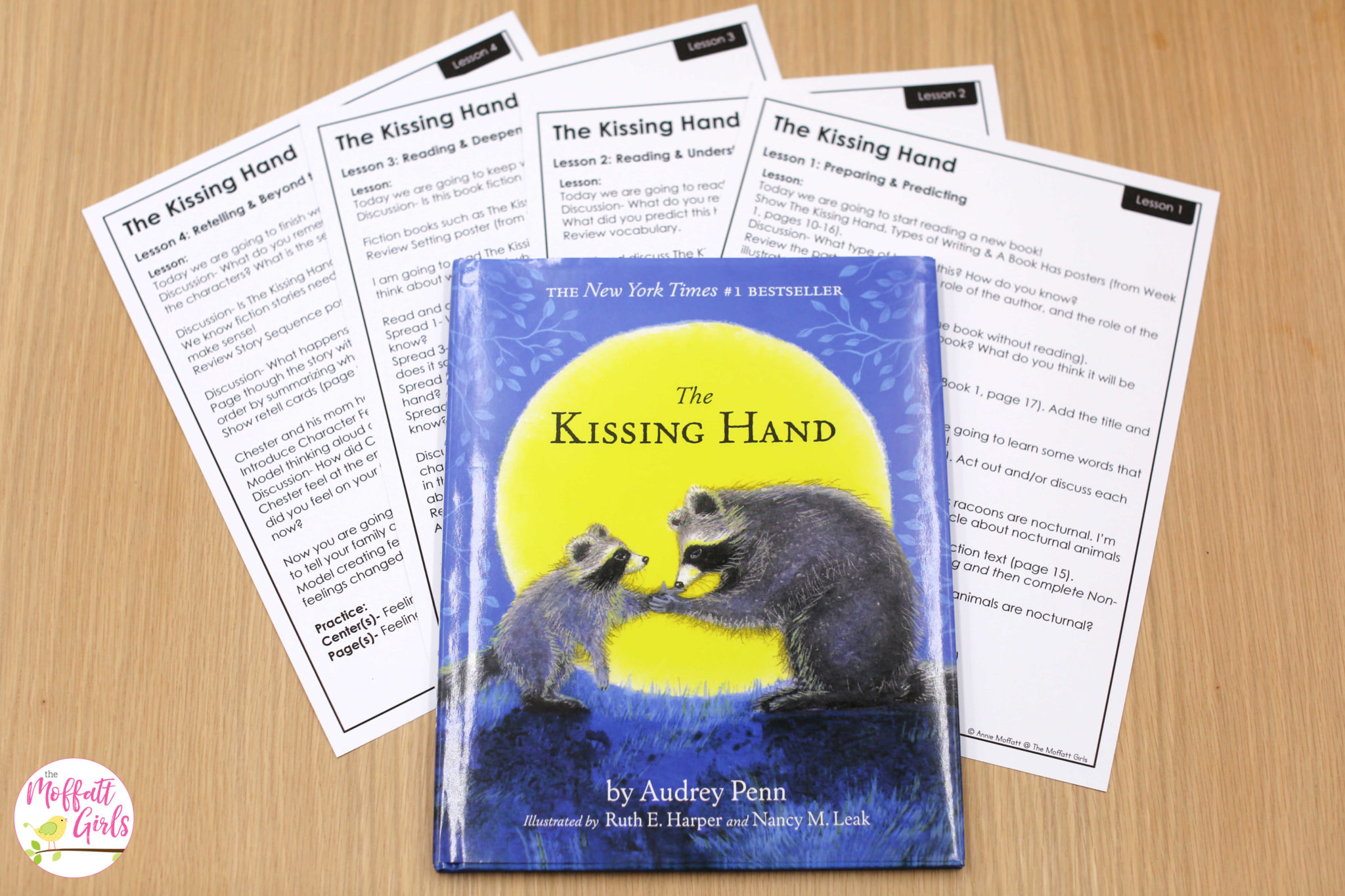
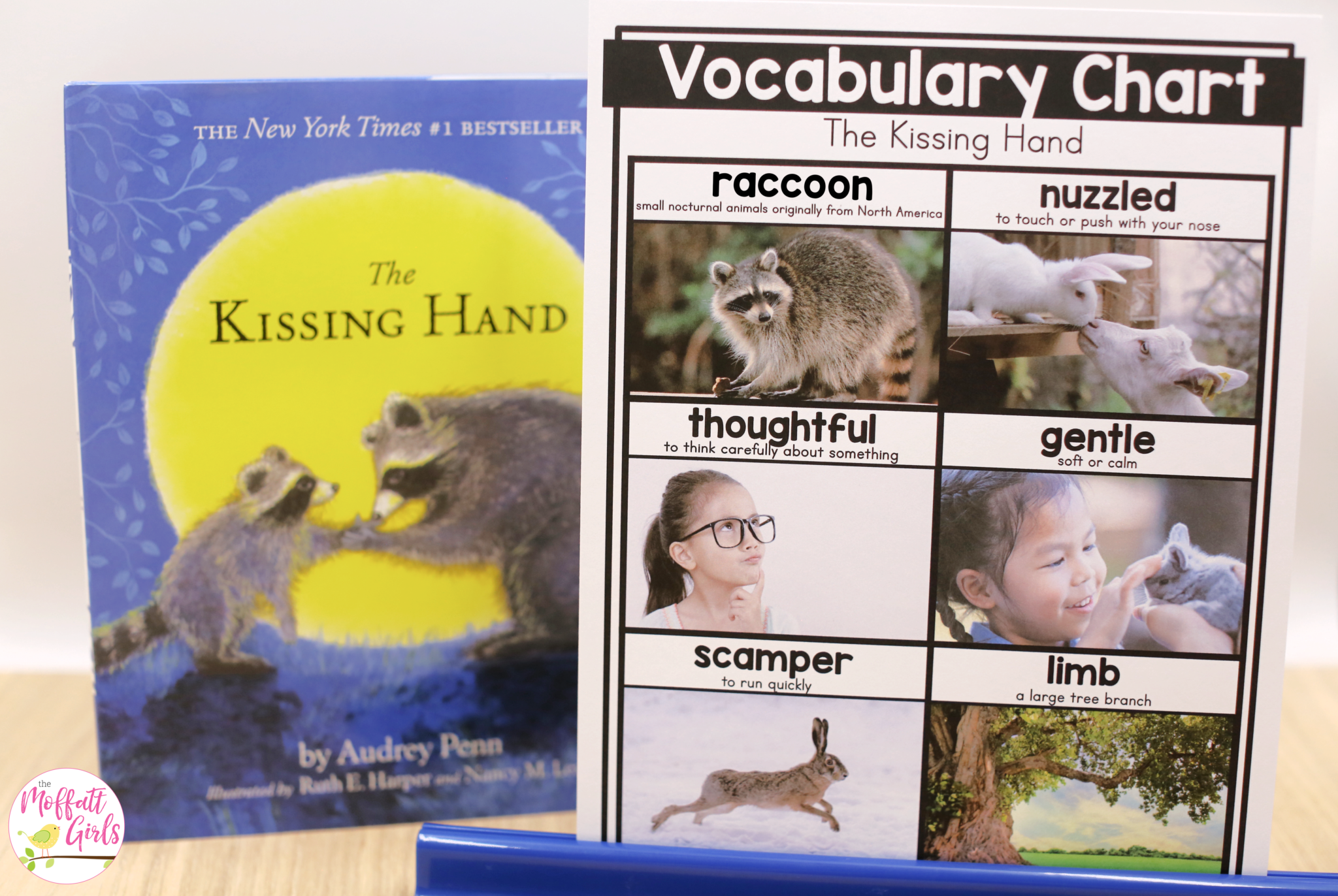
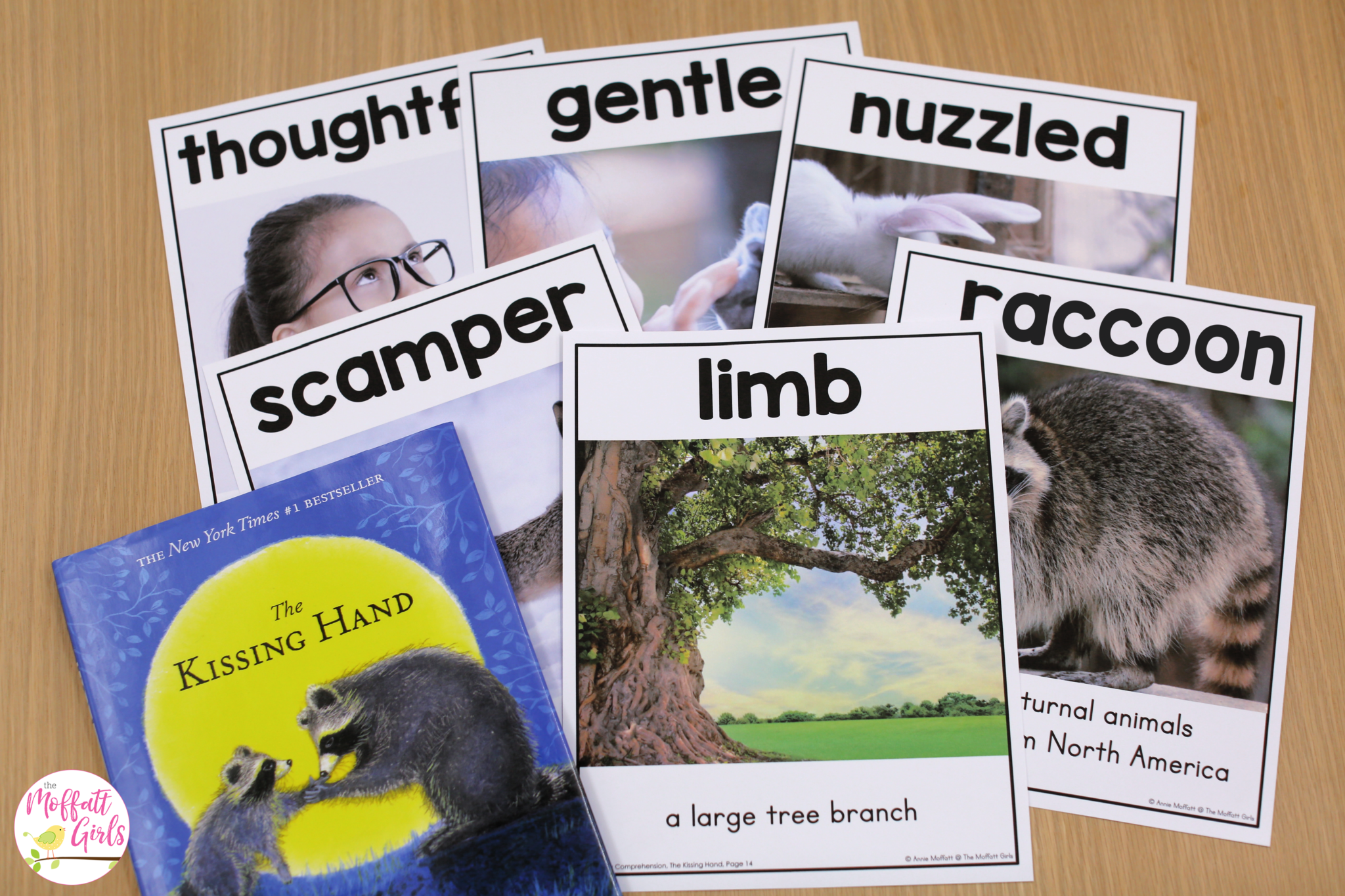
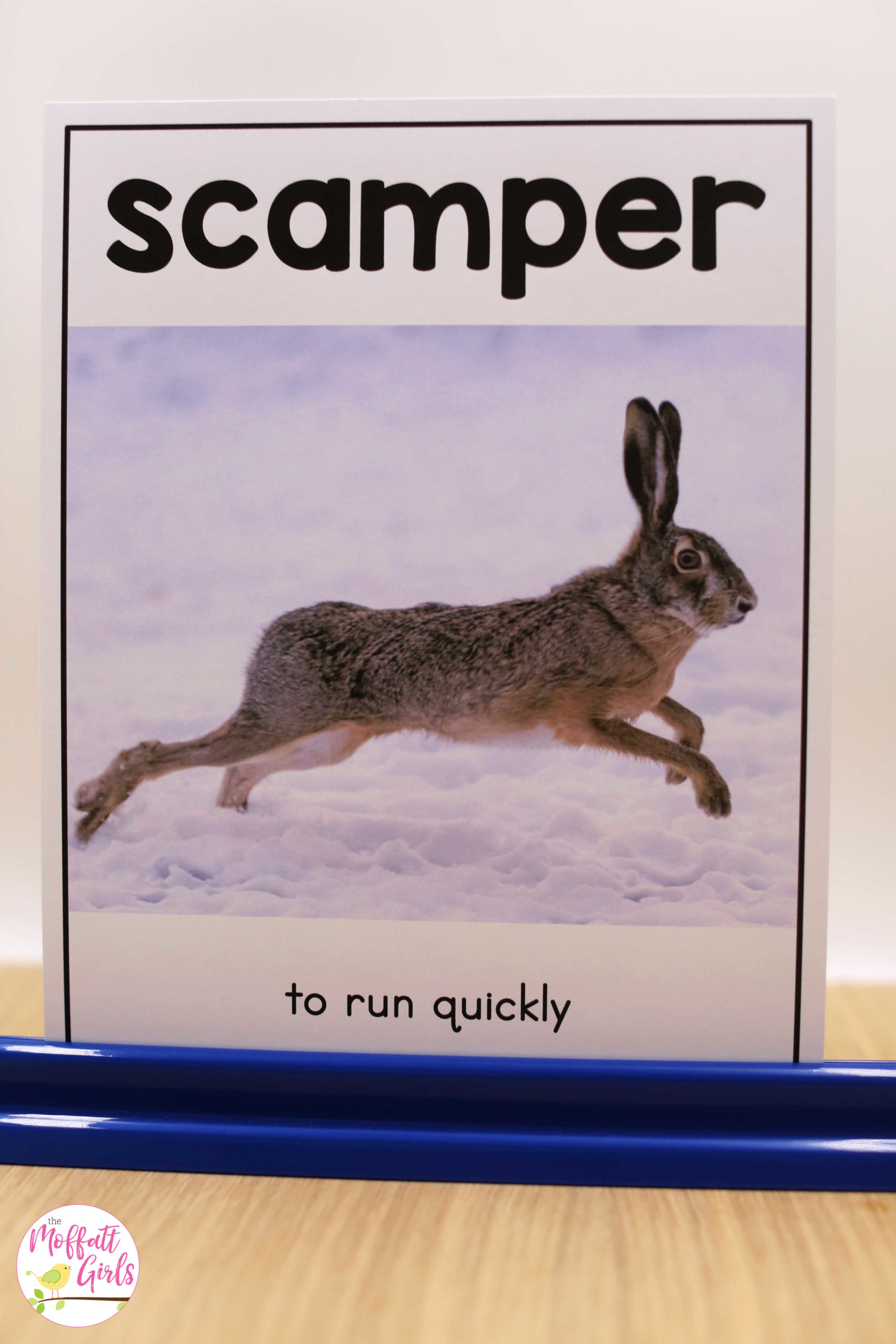
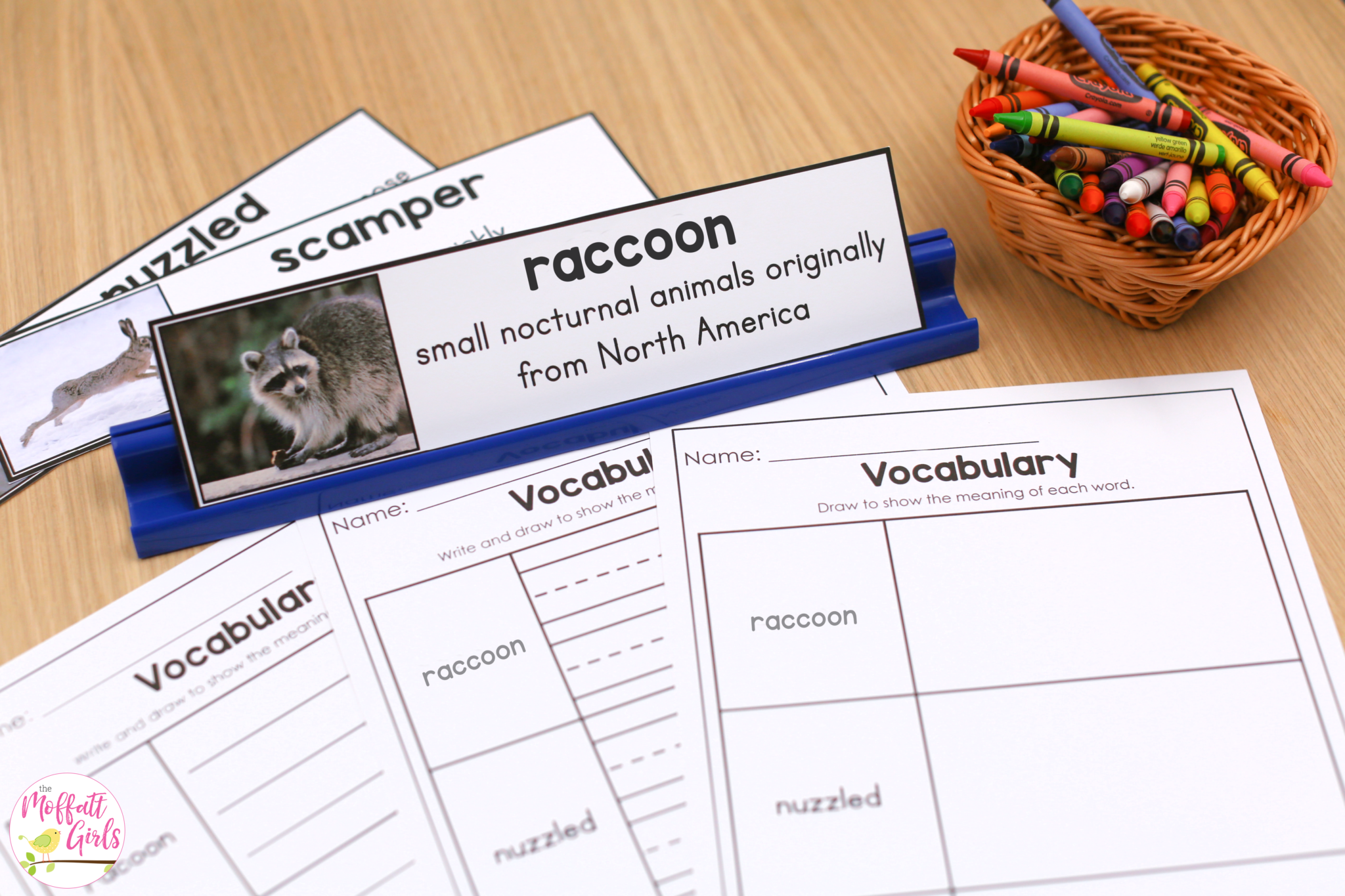
Non-Fiction Connection
This book includes the concepts of the animals going to school at night. So teaching about nocturnal animals is a given. This can help students understand the setting of the story, and why Chester goes to school at night instead of during the day.
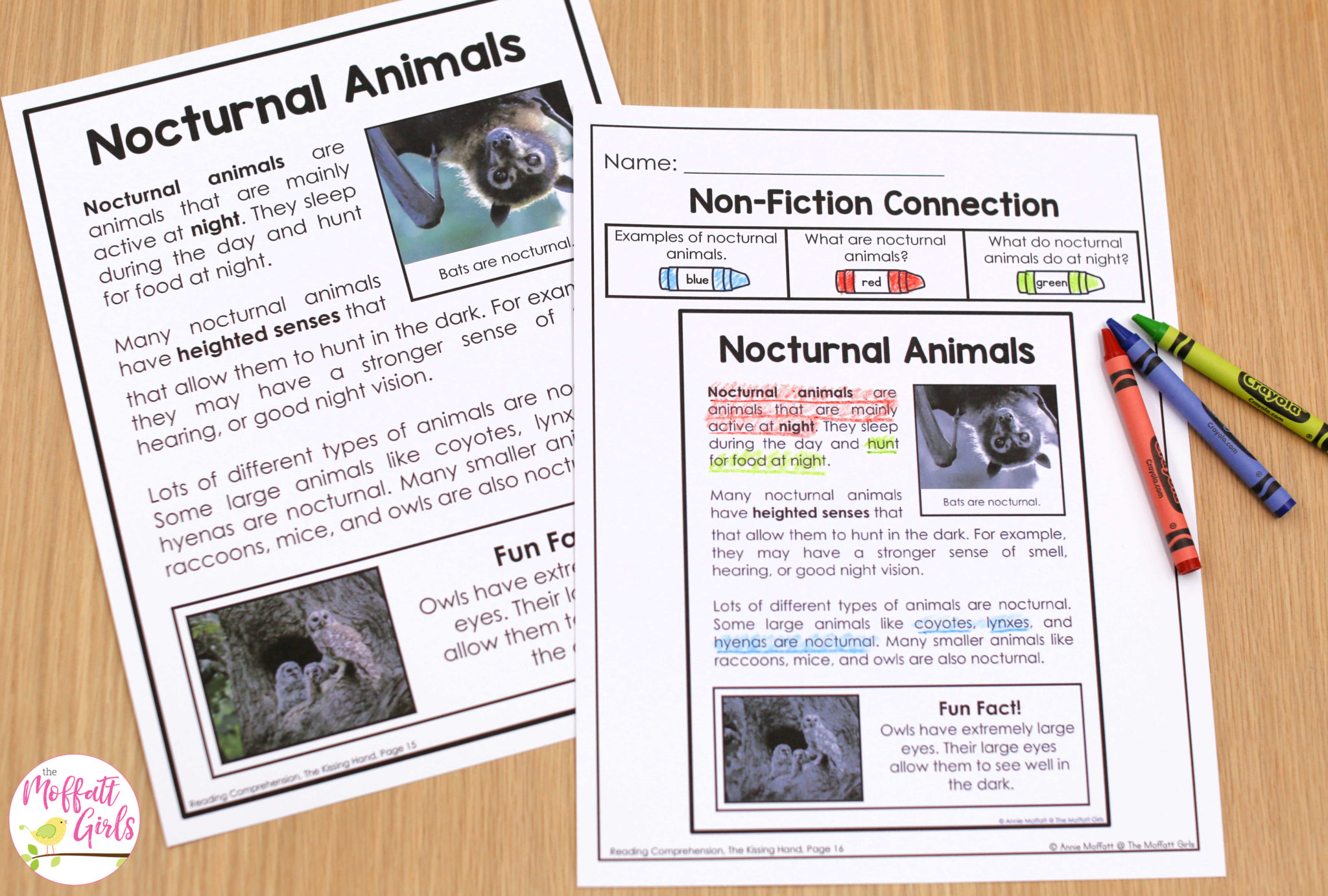
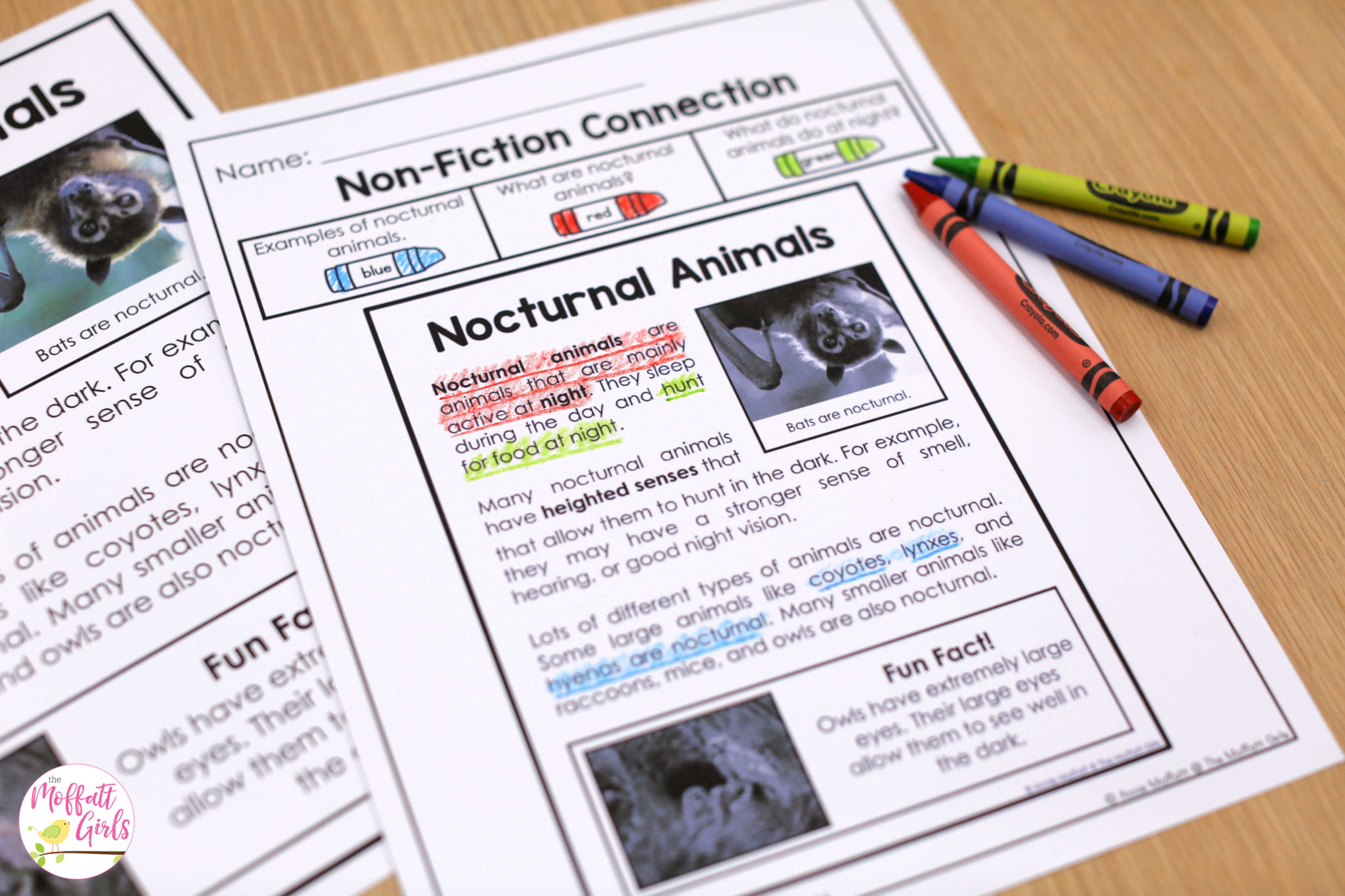
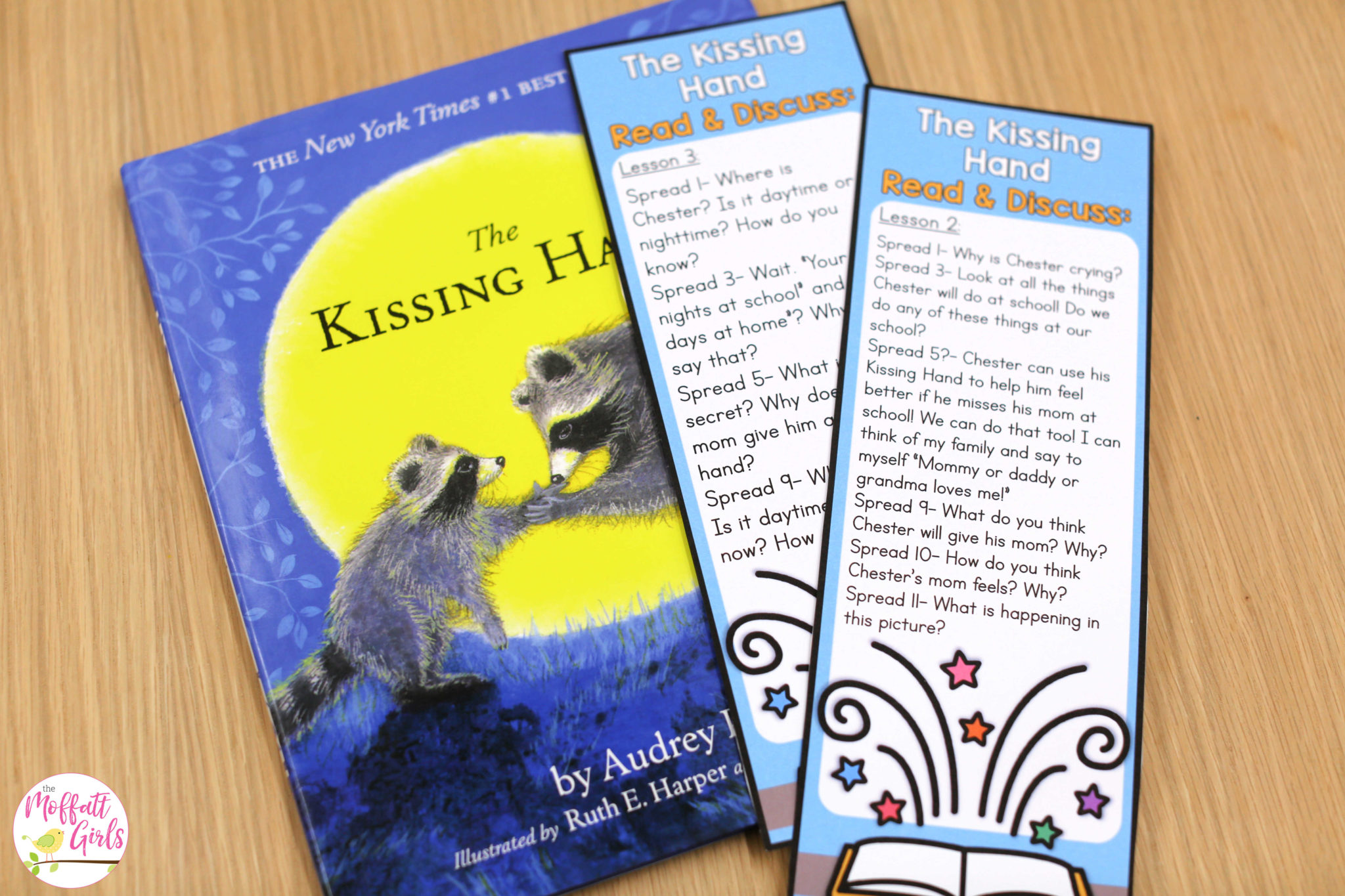
Sequencing Events in the Story
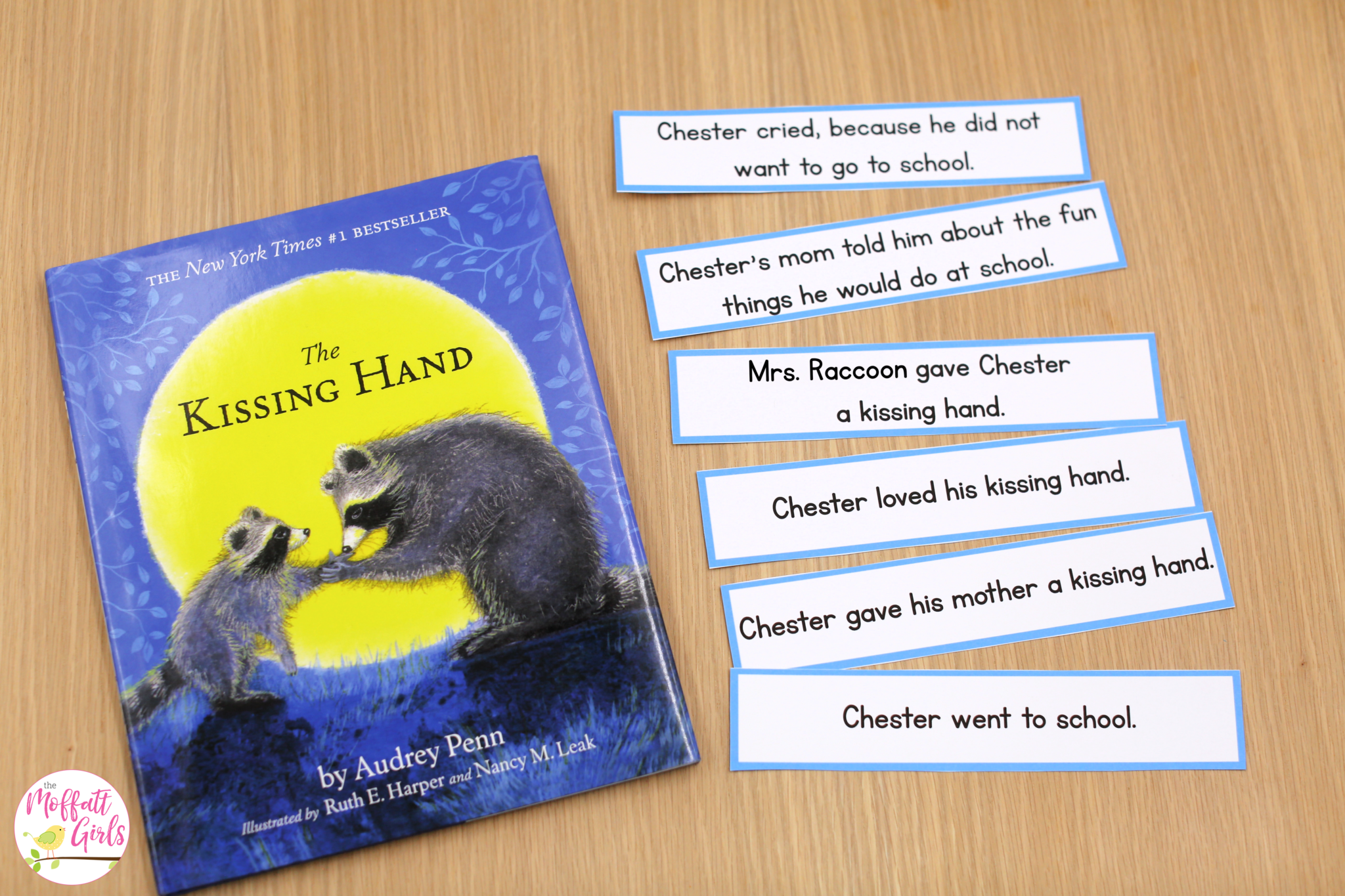
Identifying Characteristic Traits and Feelings
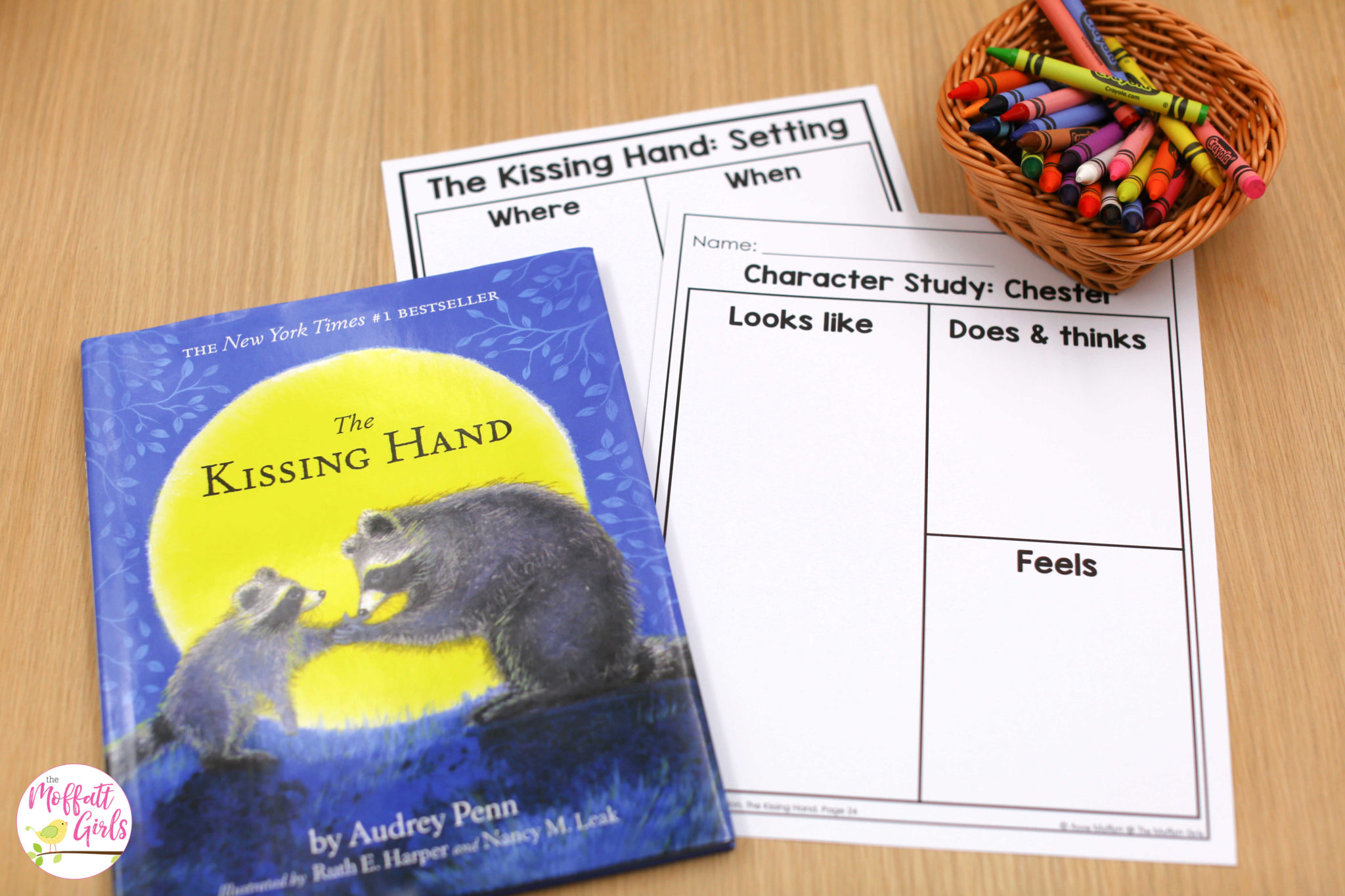
This center helps students practice identifying the feelings or emotions of a character based on their facial expressions.
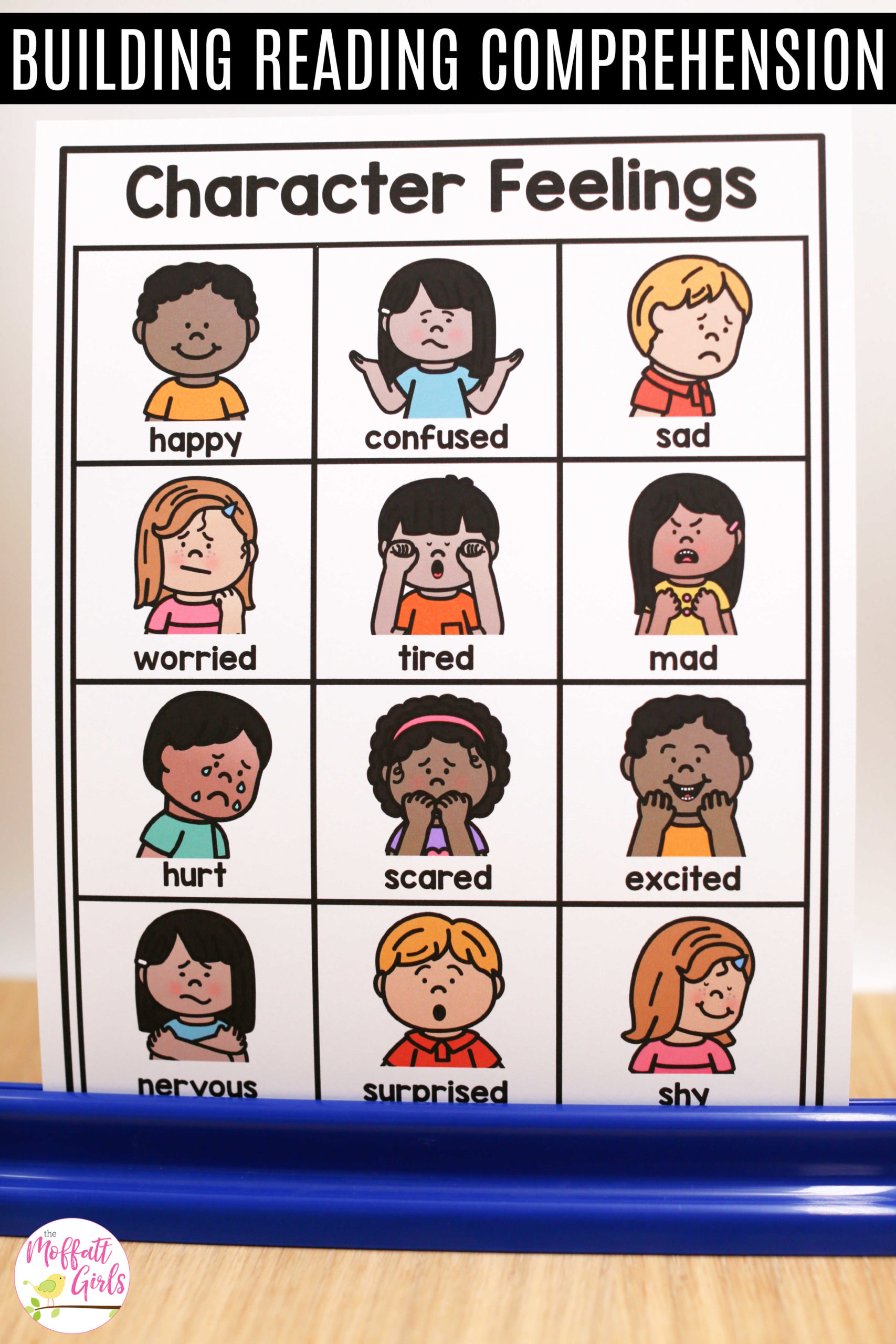
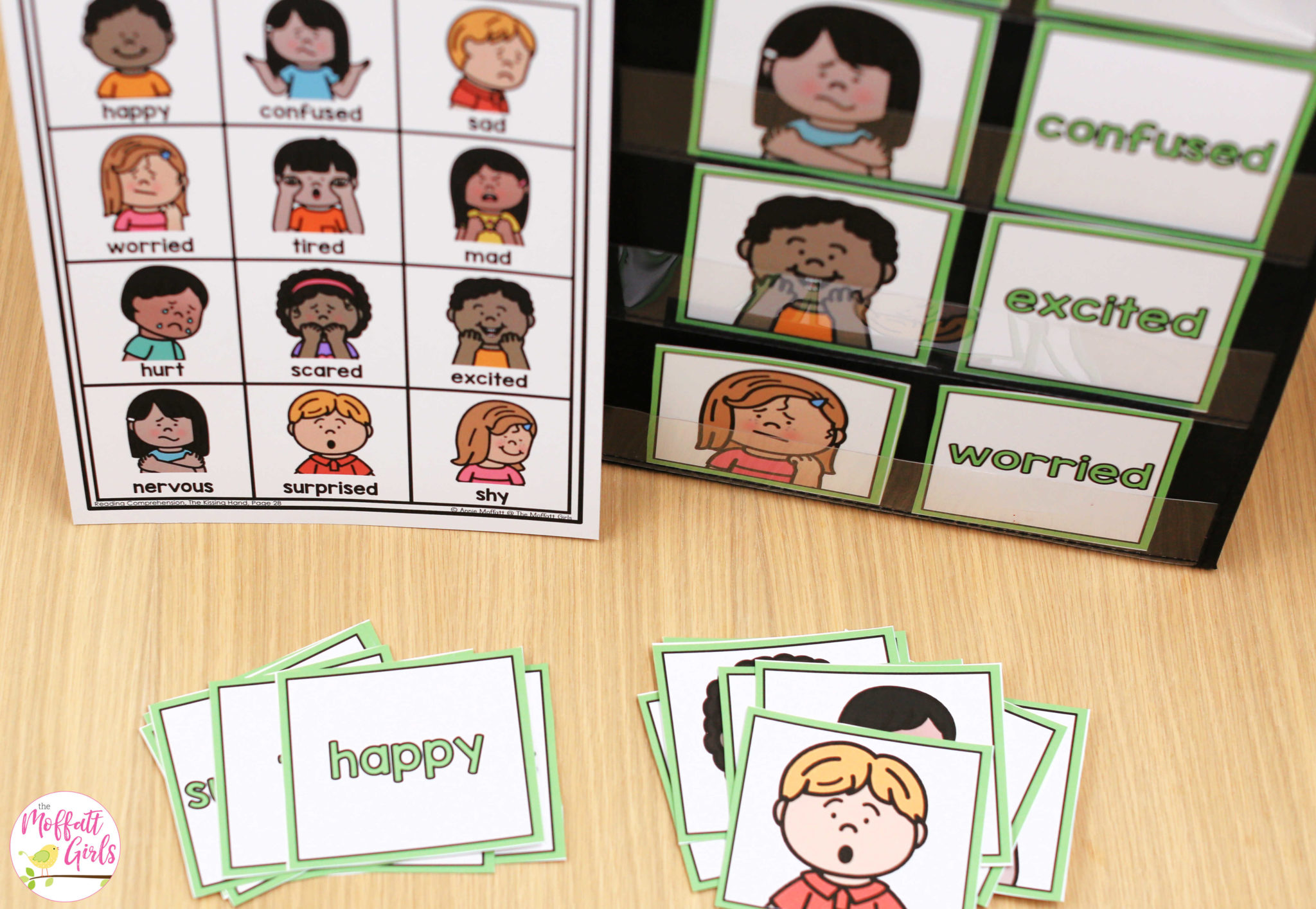
The Kissing Hand Craft
This craft lets students tell how Chester felt in the beginning and end of the book using the feeling words they learned.
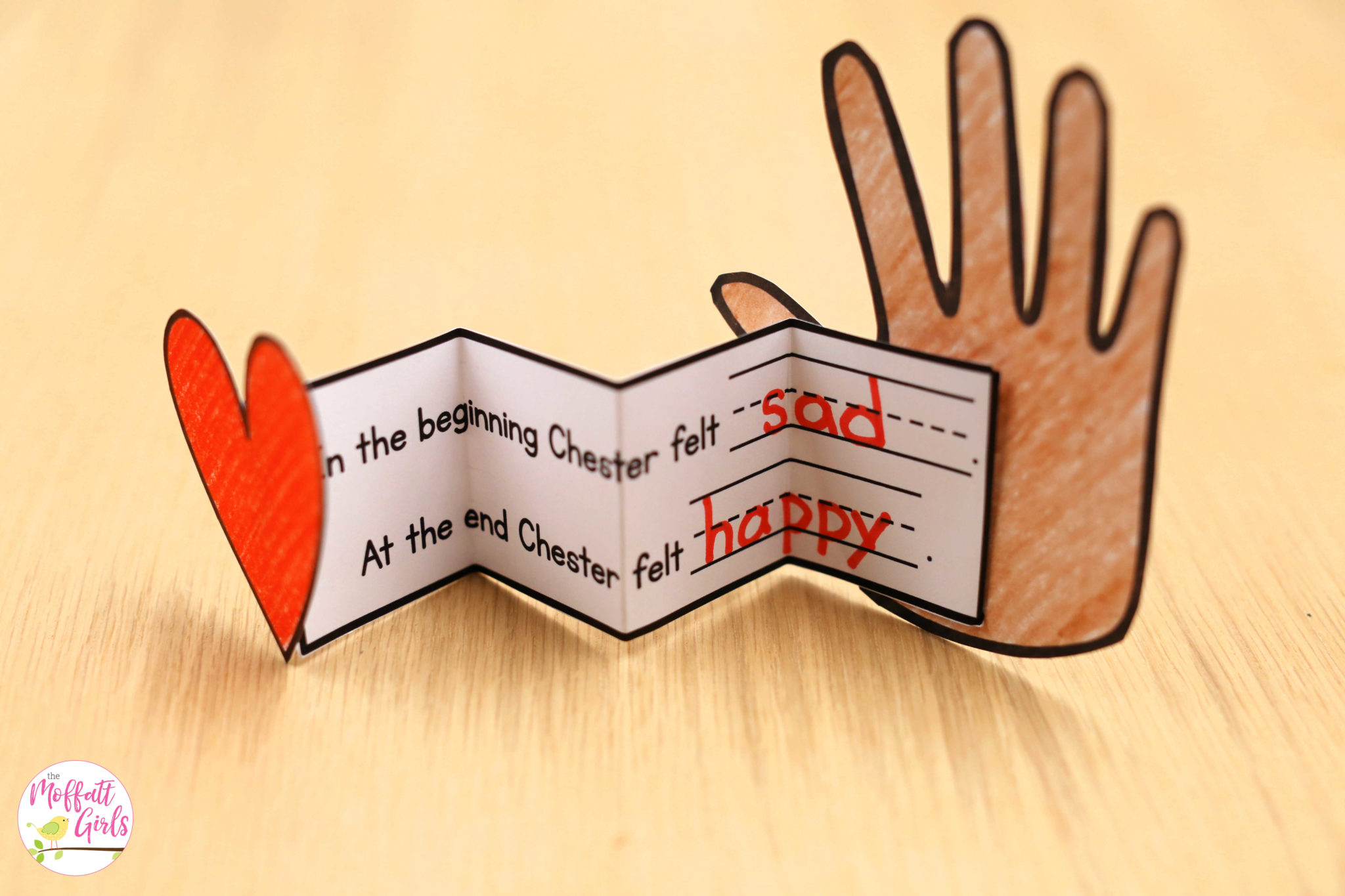
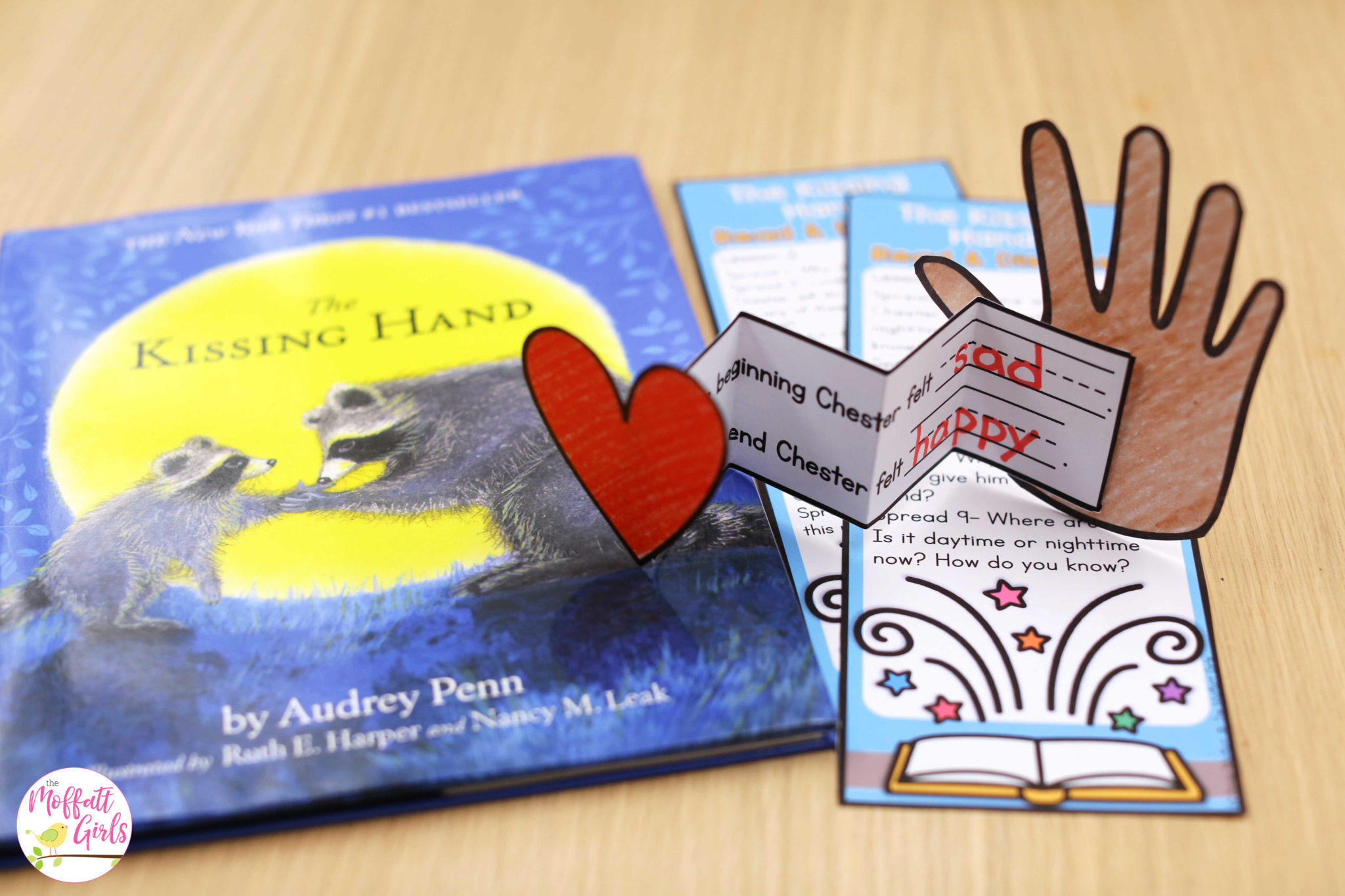
Book 4: I Love Our Earth
The growth of reading comprehension in kindergarten continues! This non-fiction book is a great way for students to practice appreciation of the diverse world we live in.
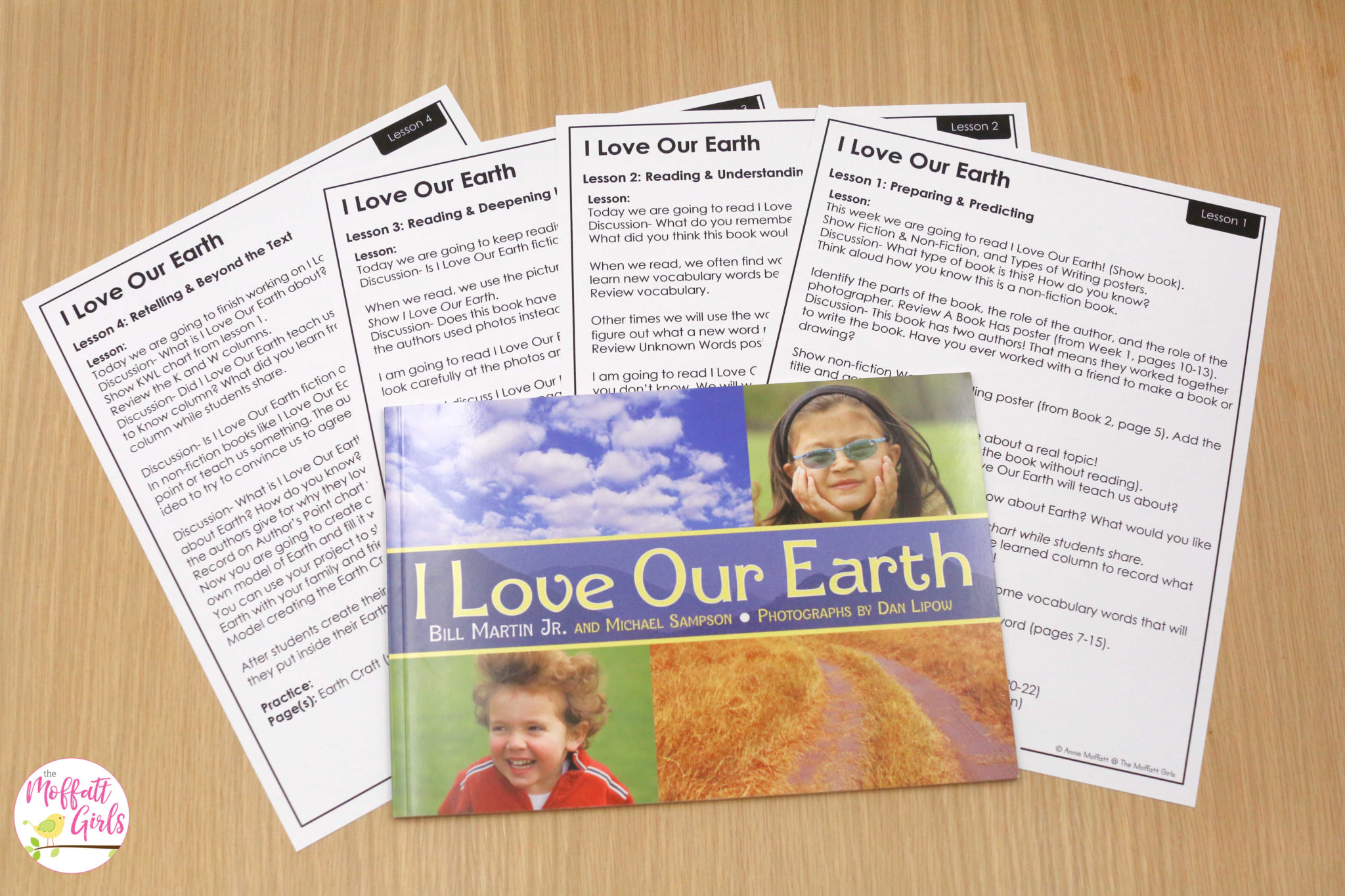
Vocabulary
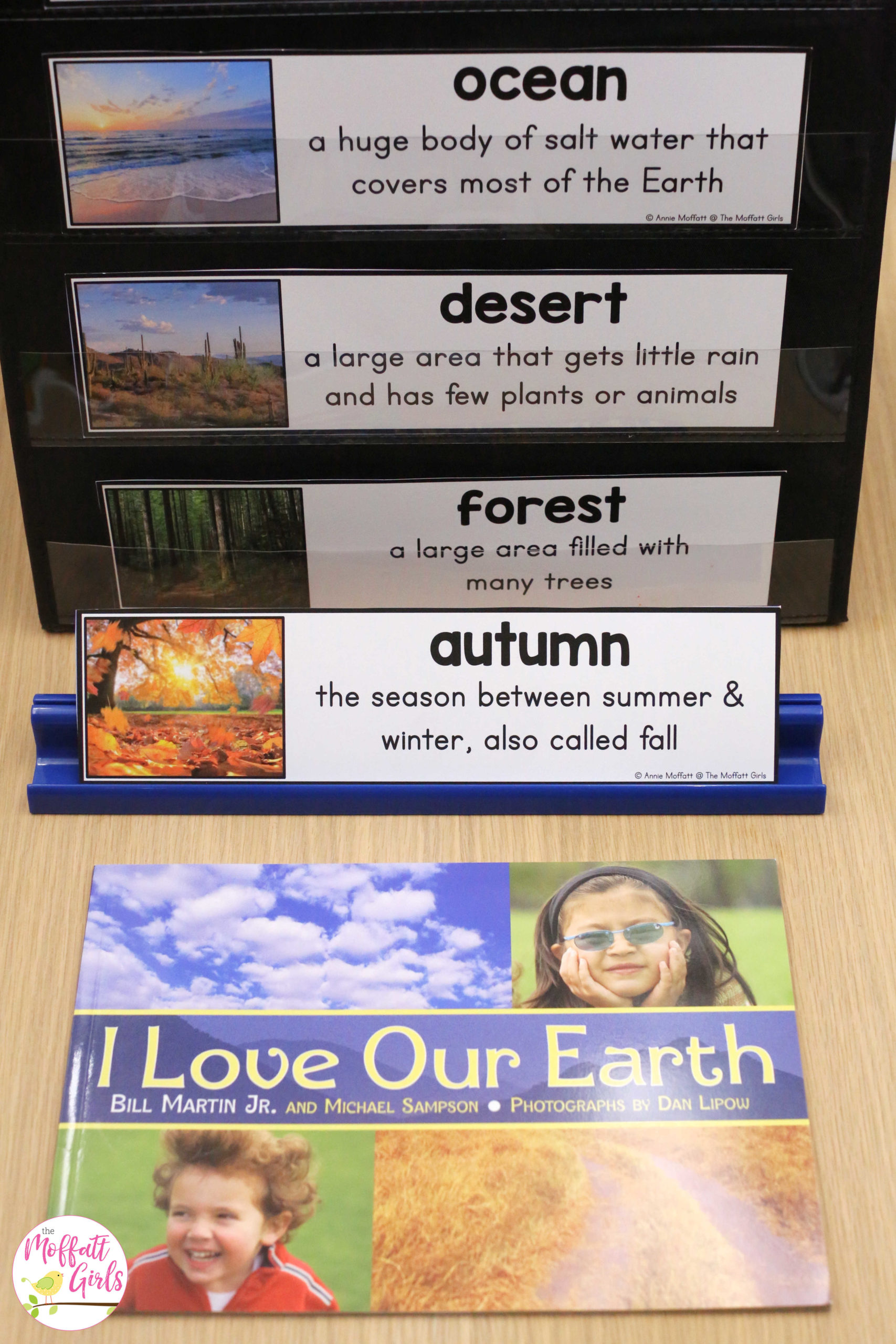
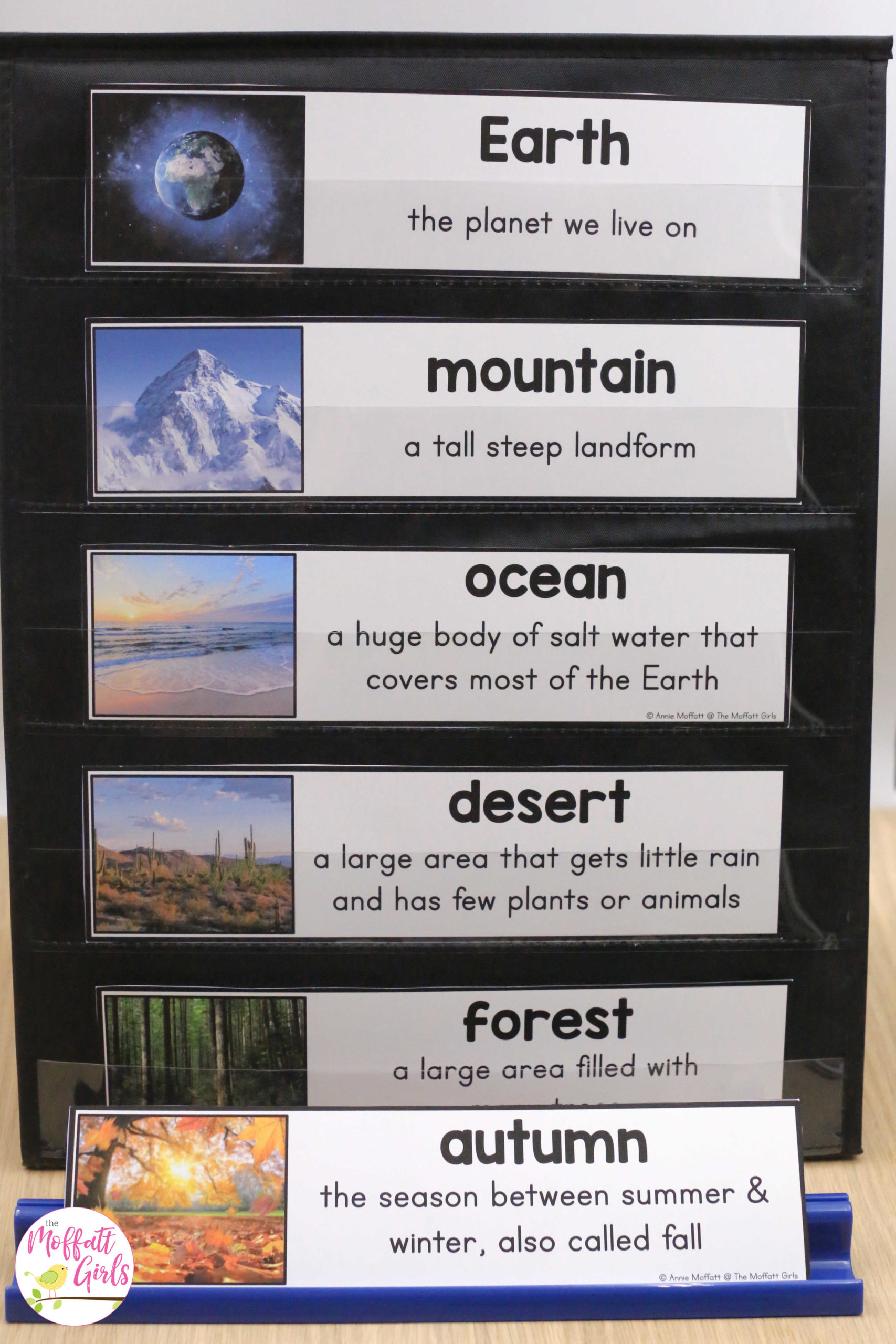
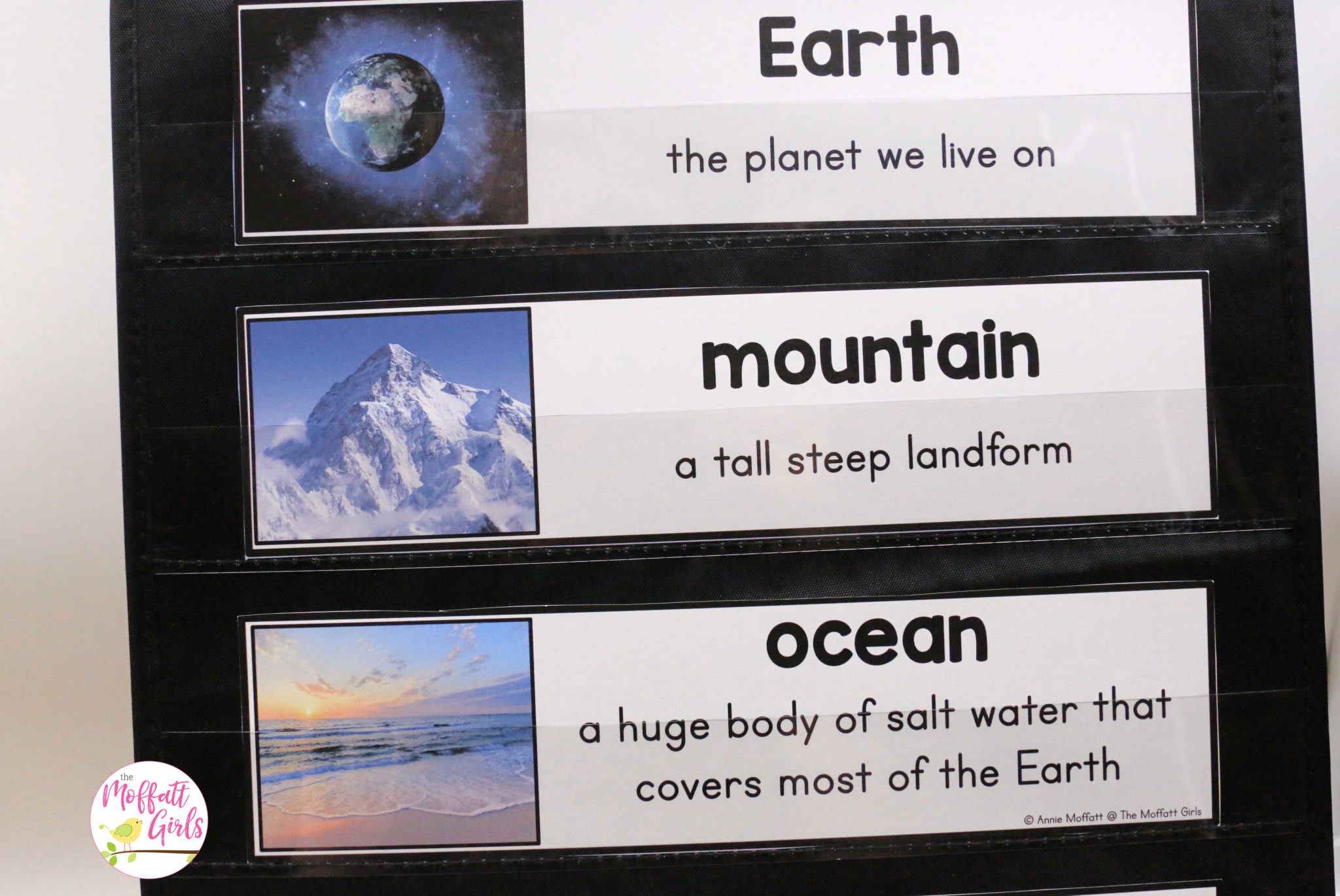
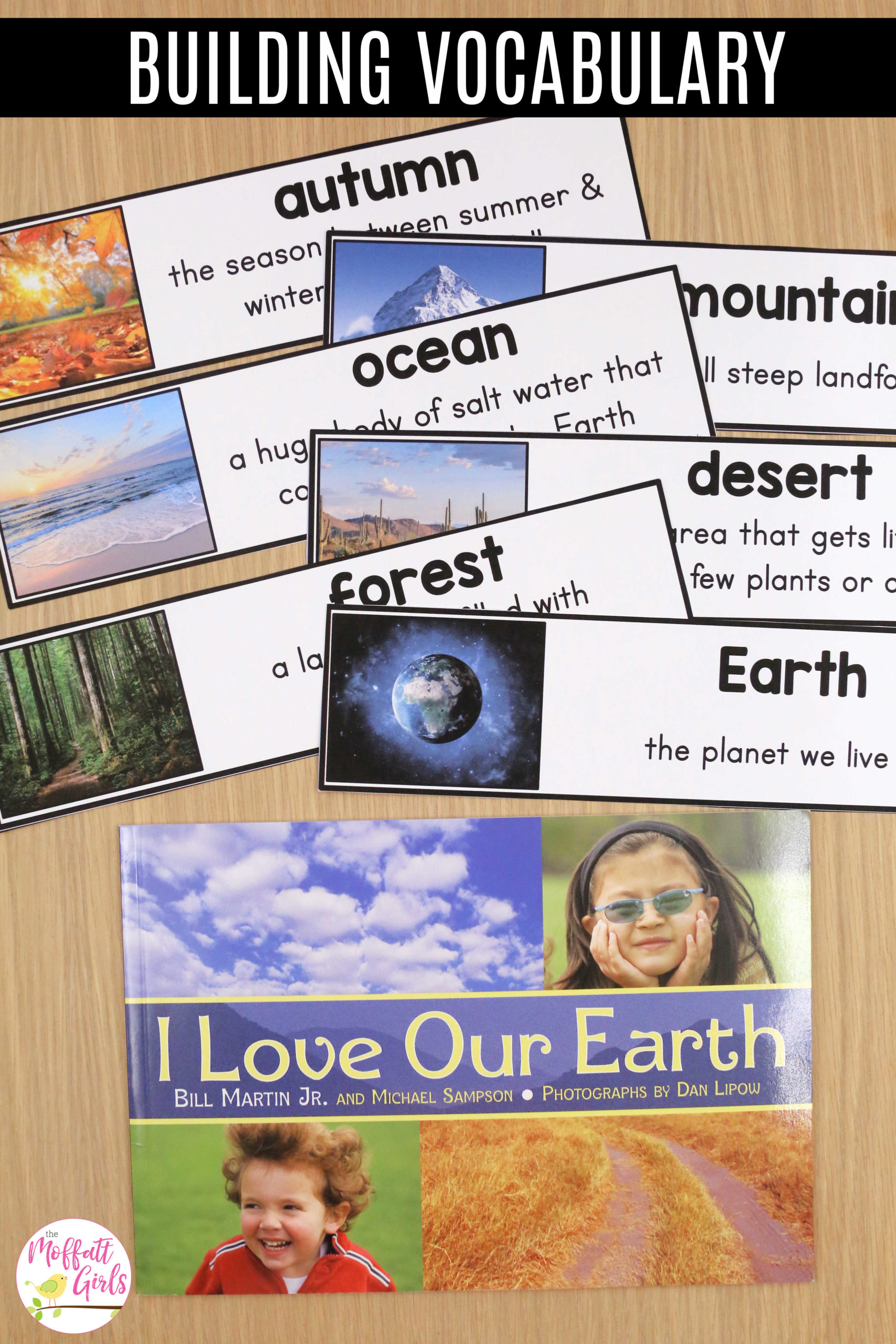
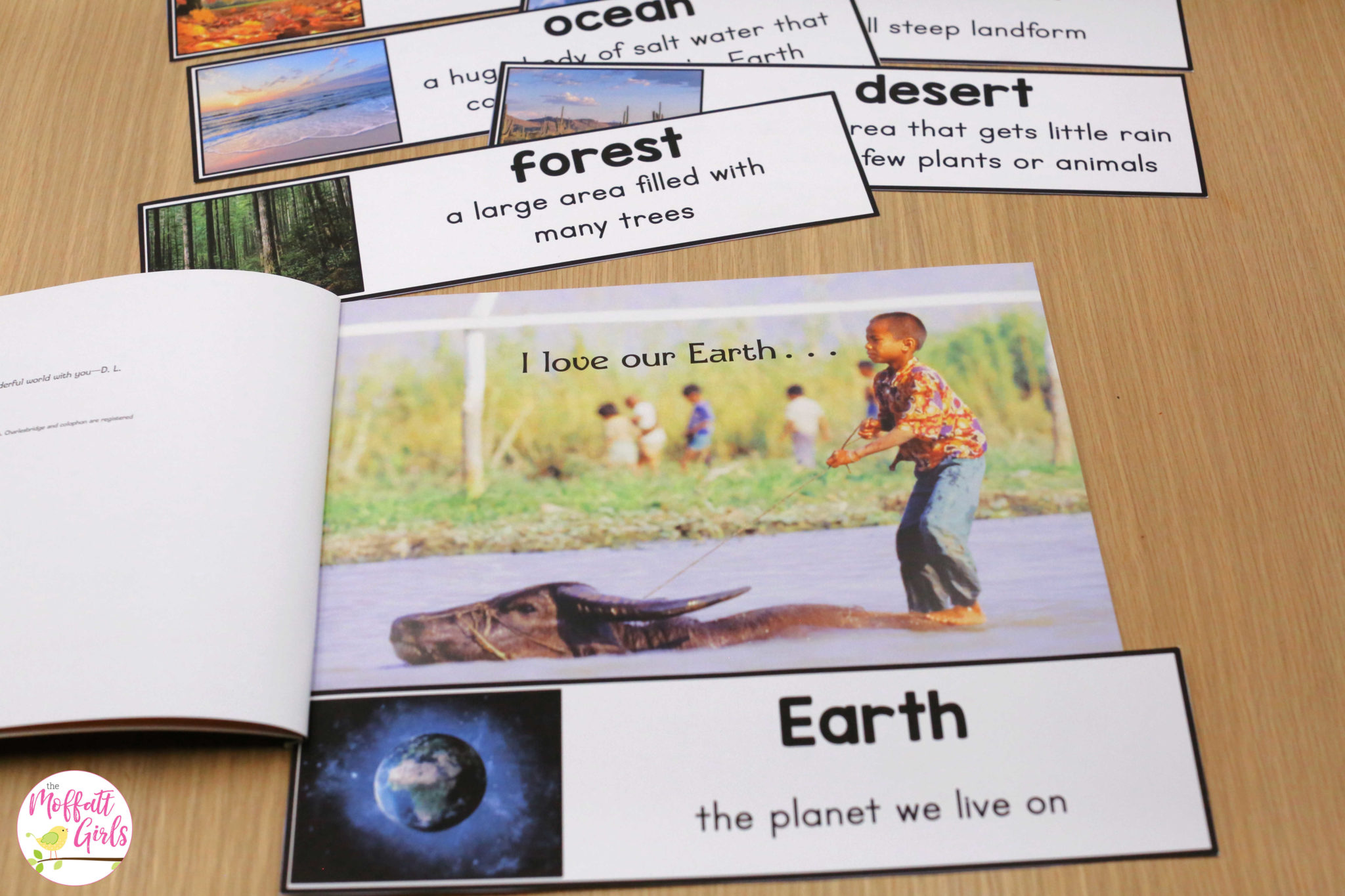
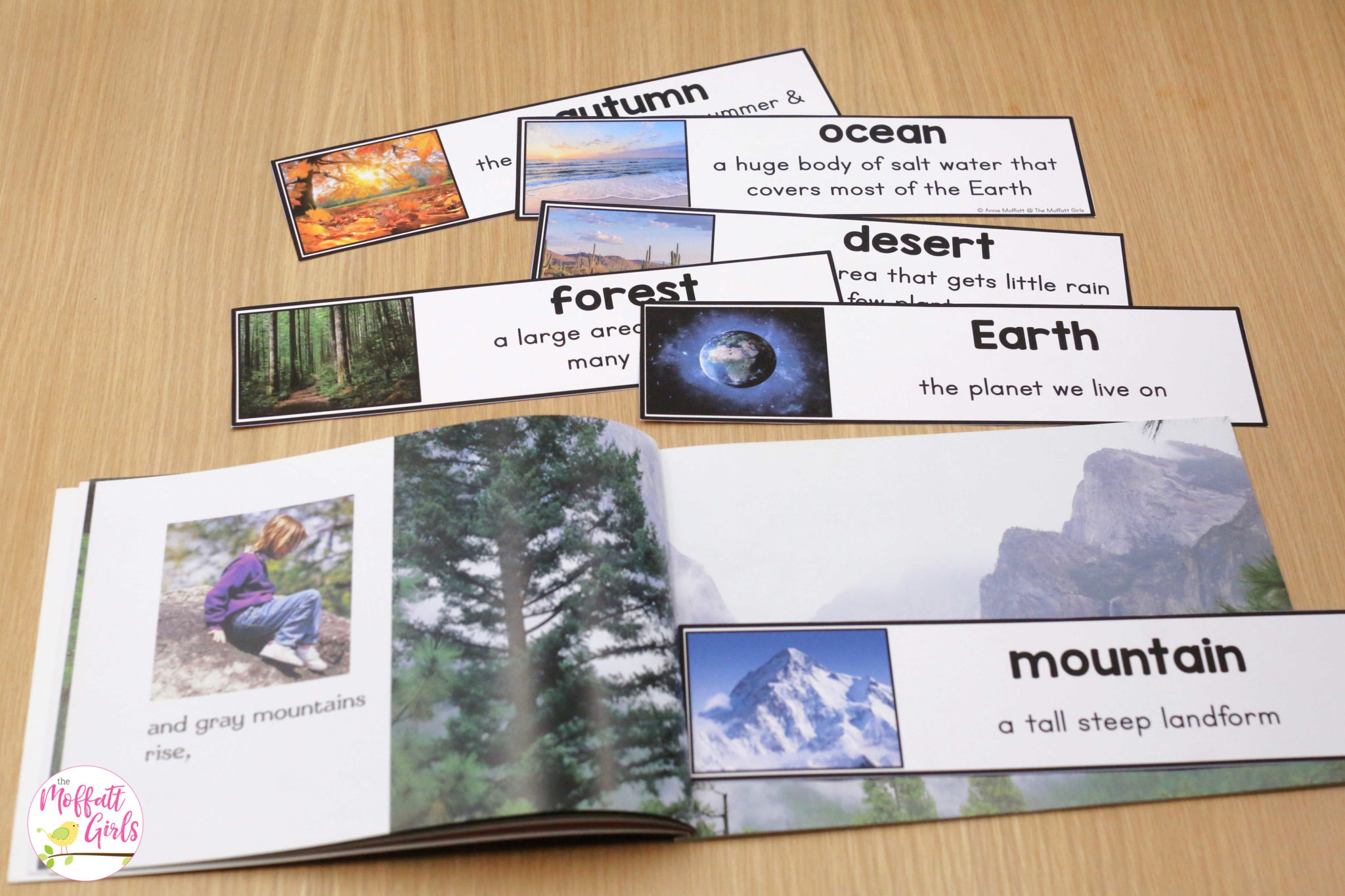
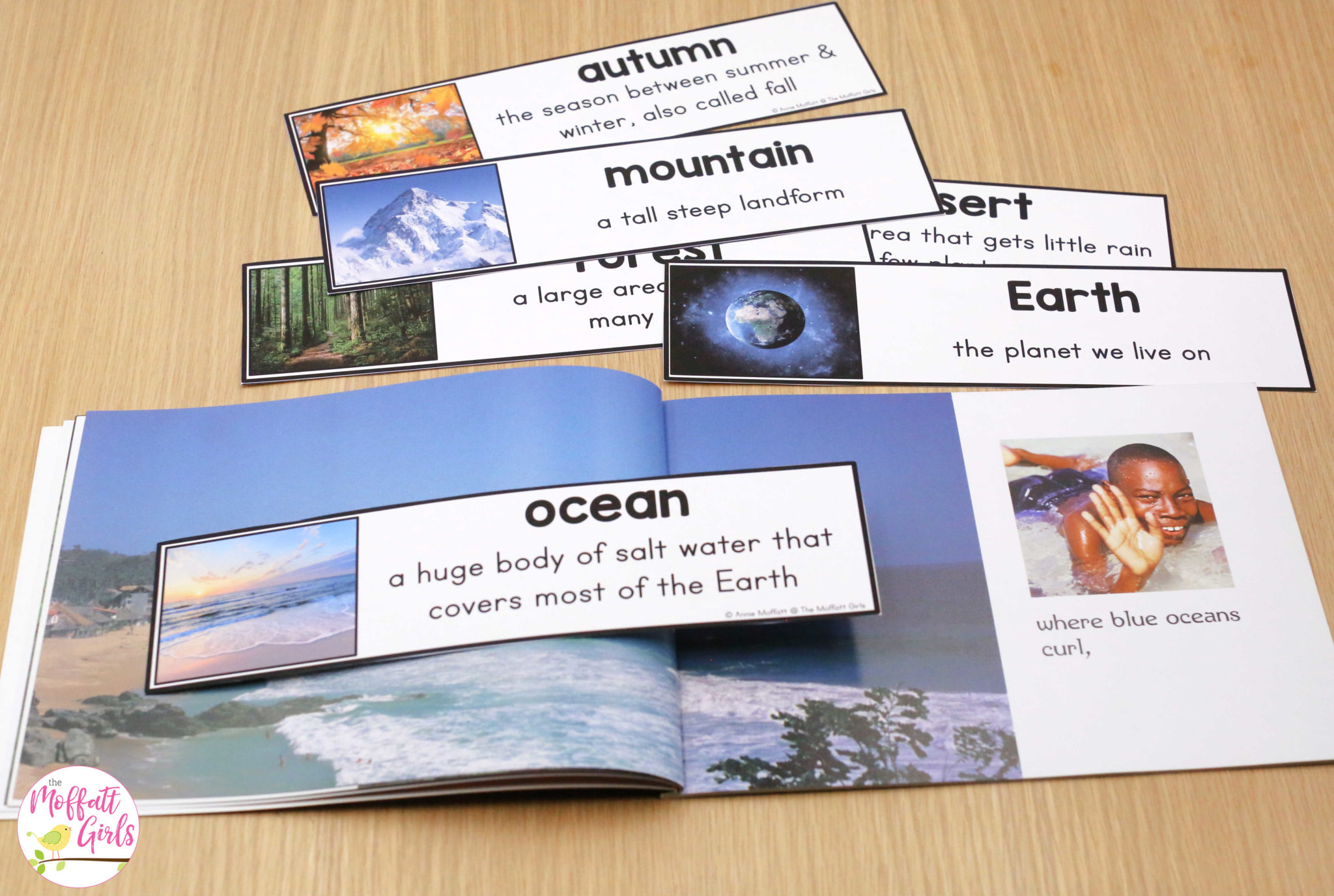

Know, Want to Know, Learned
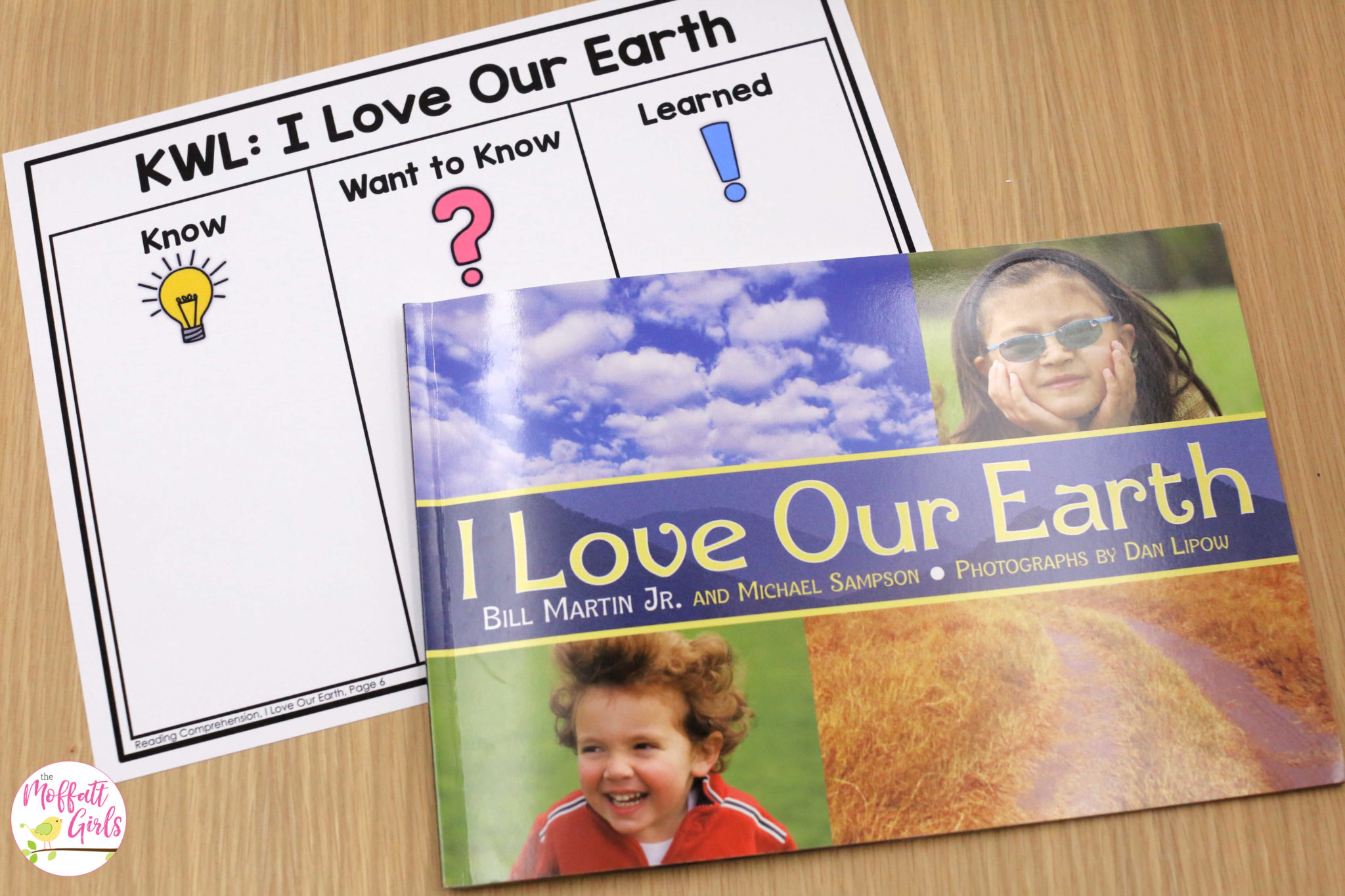
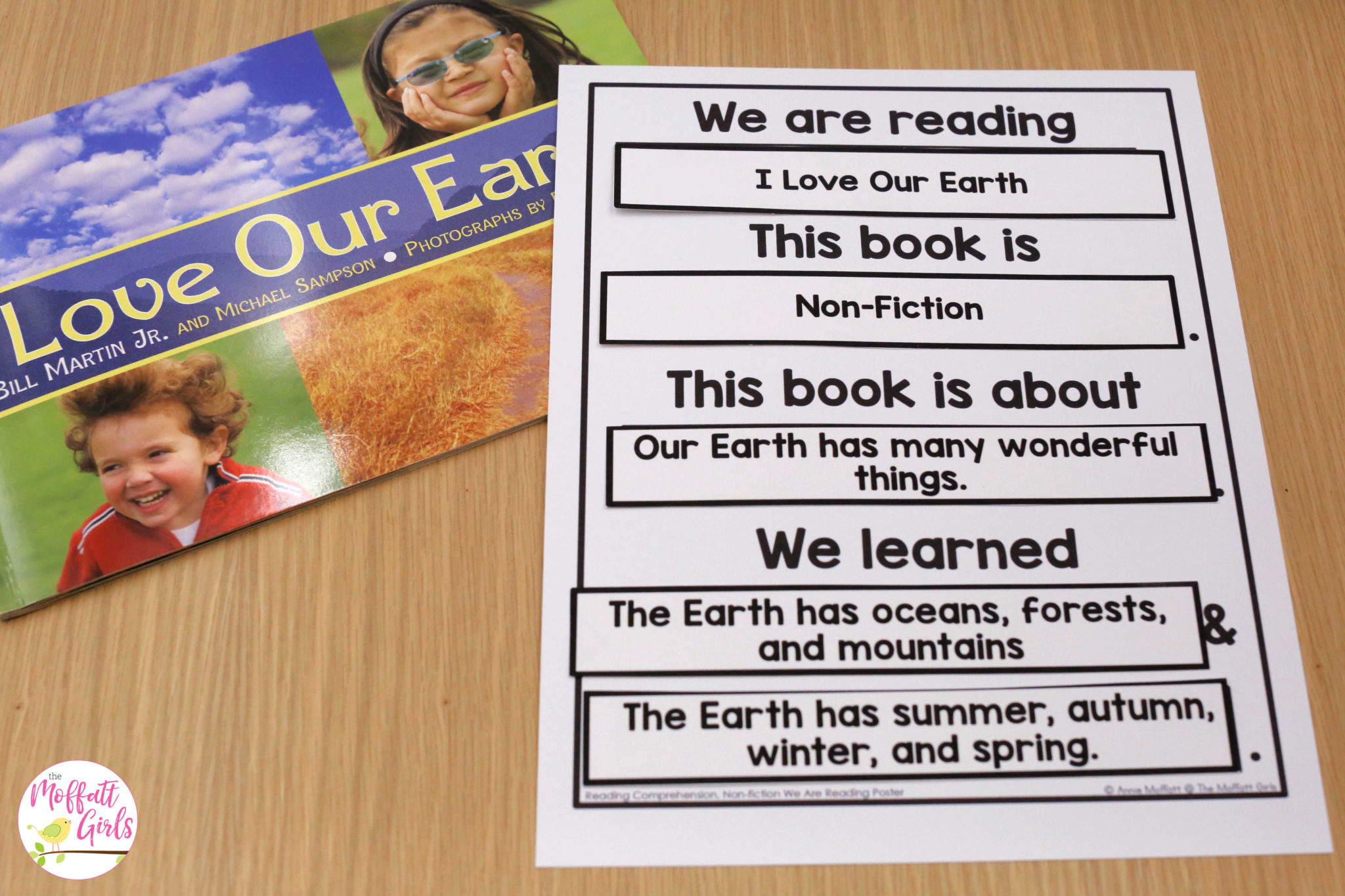
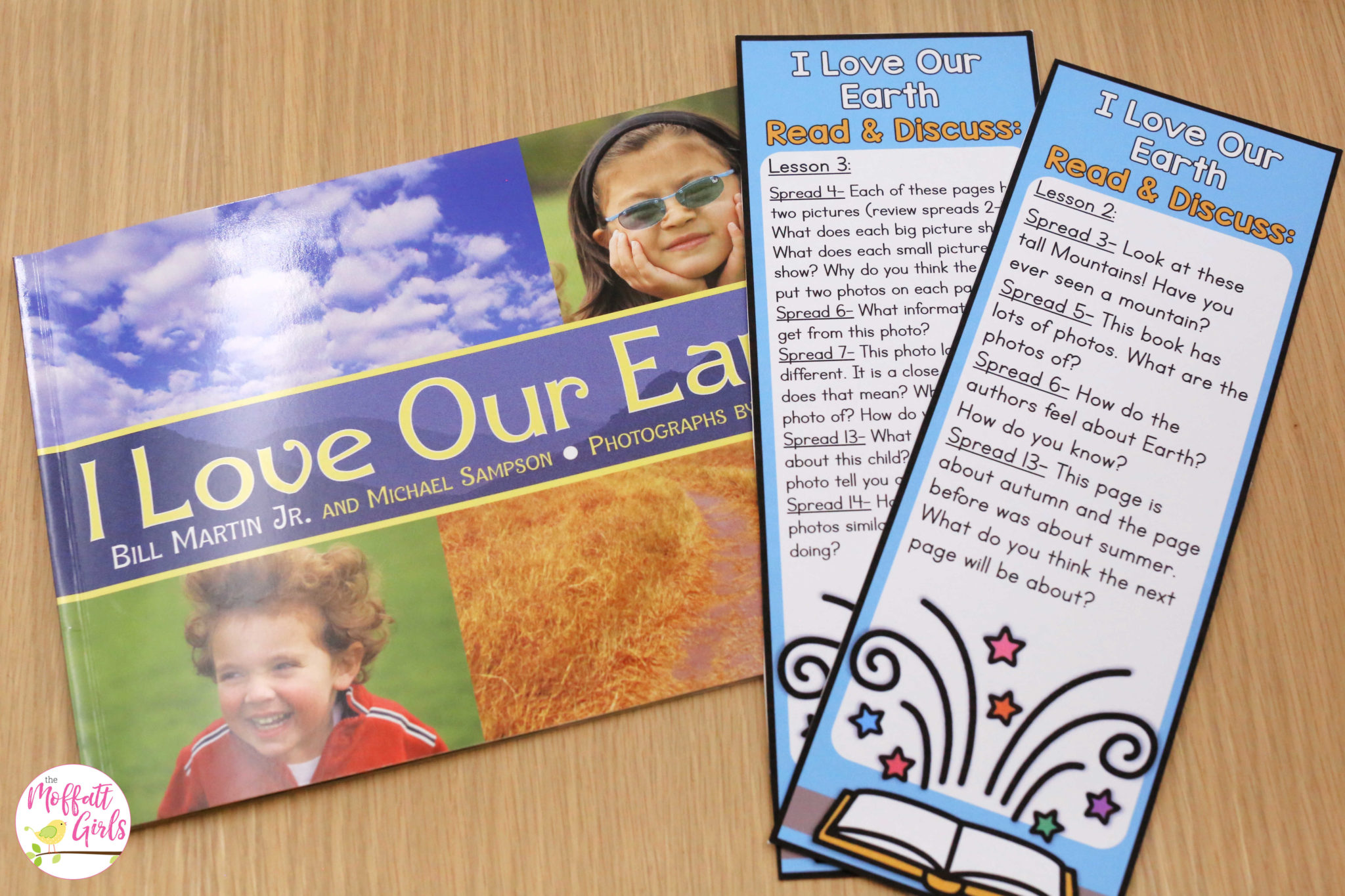
Land Form Matching
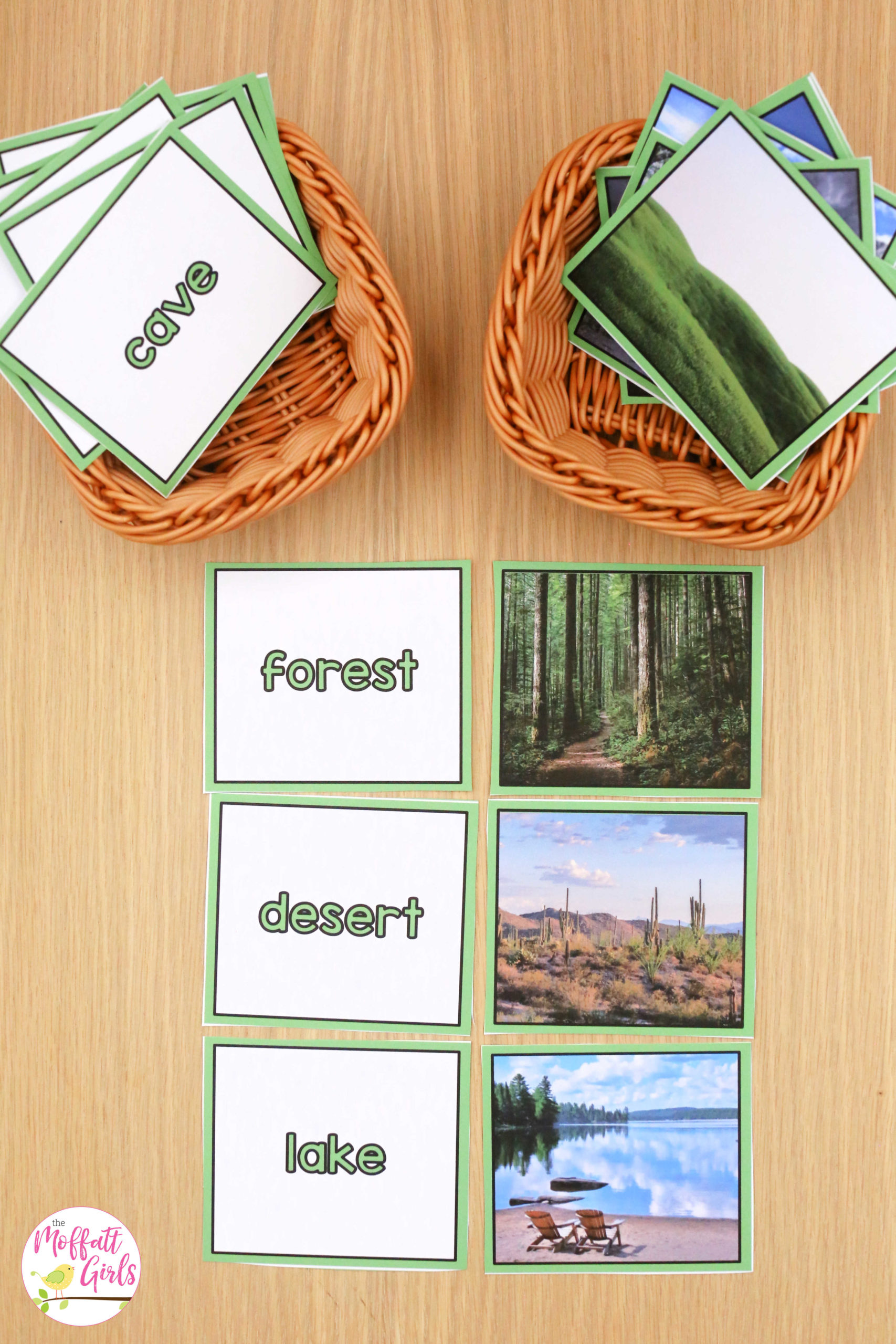
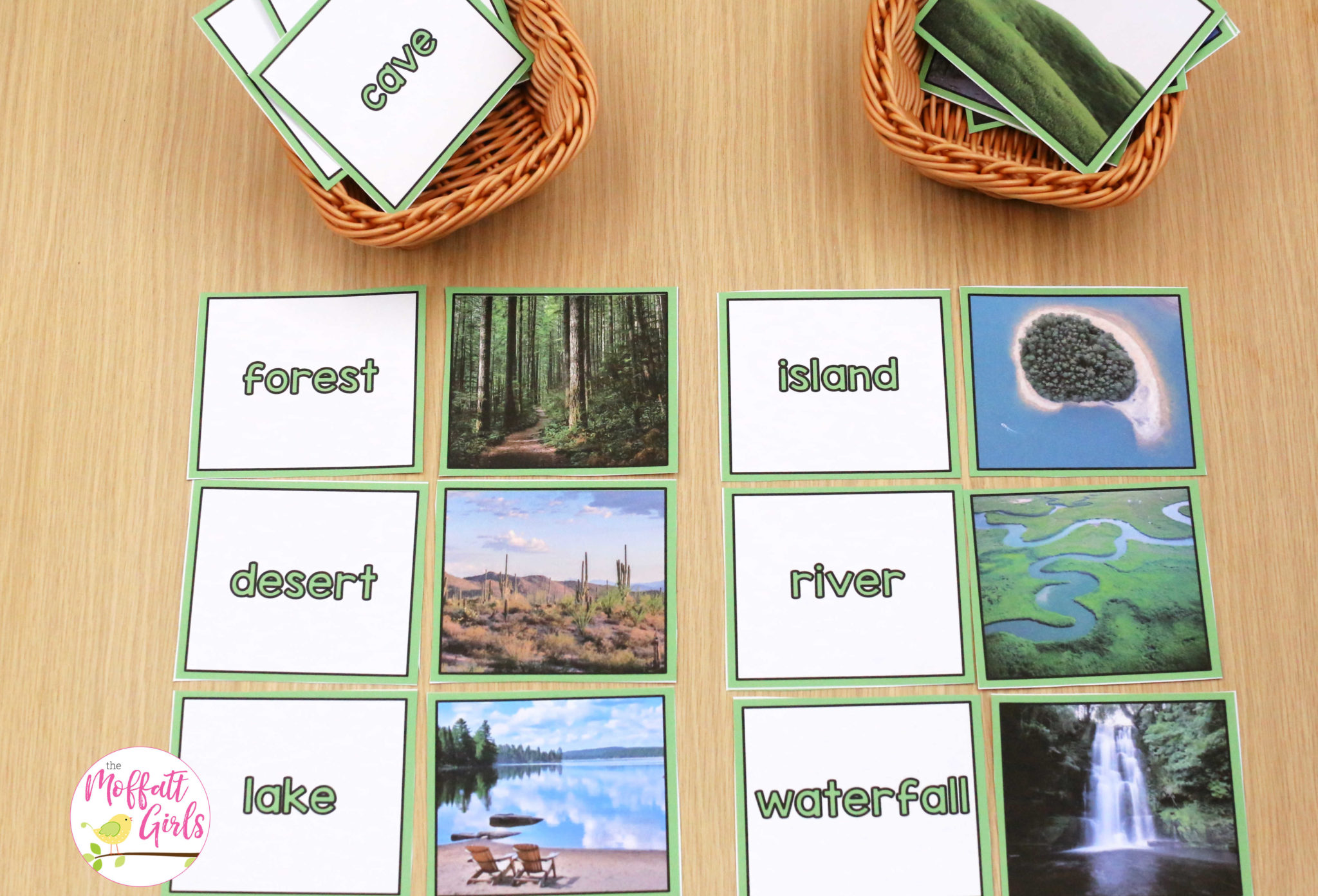
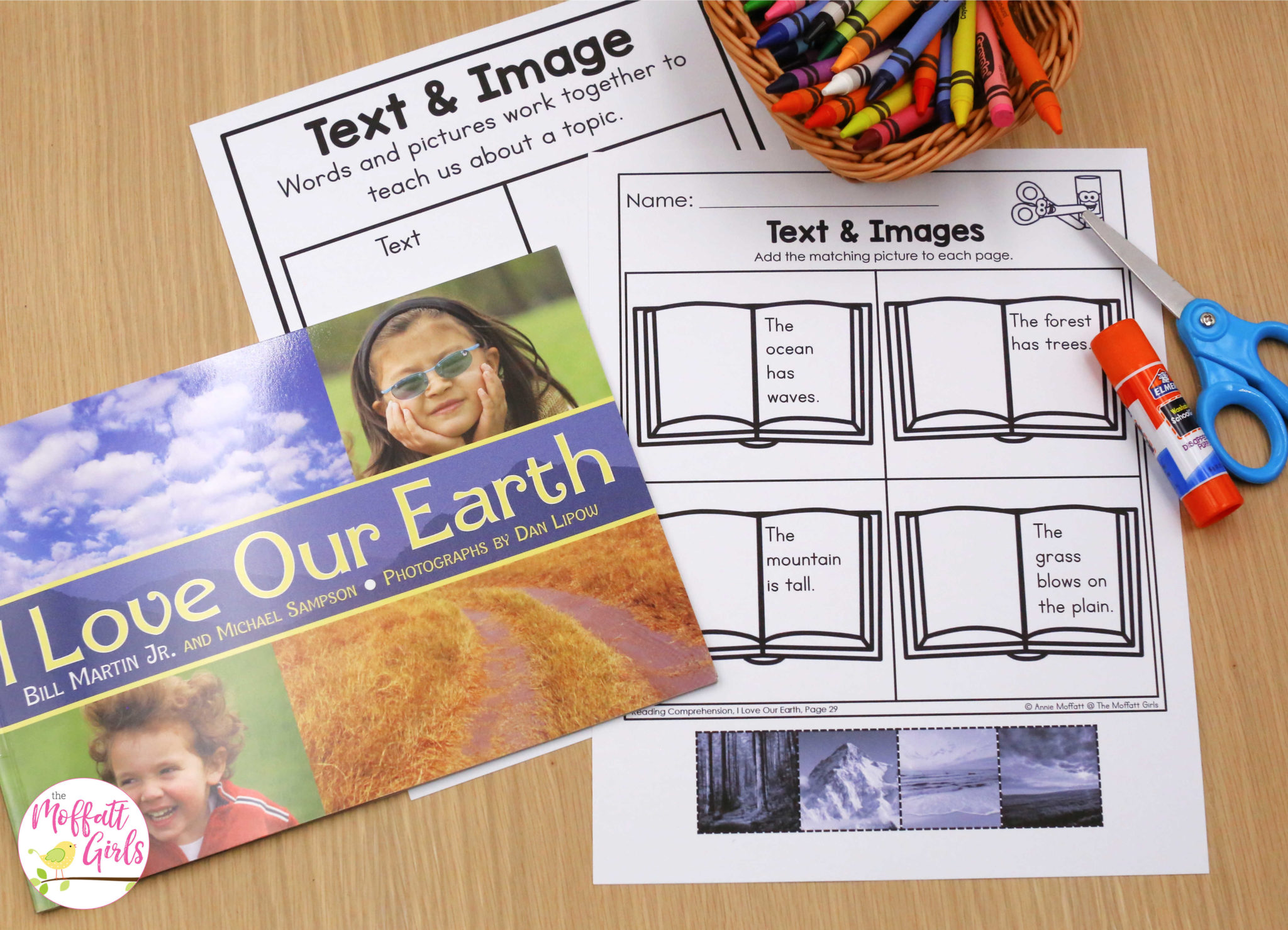
Learning from Photos
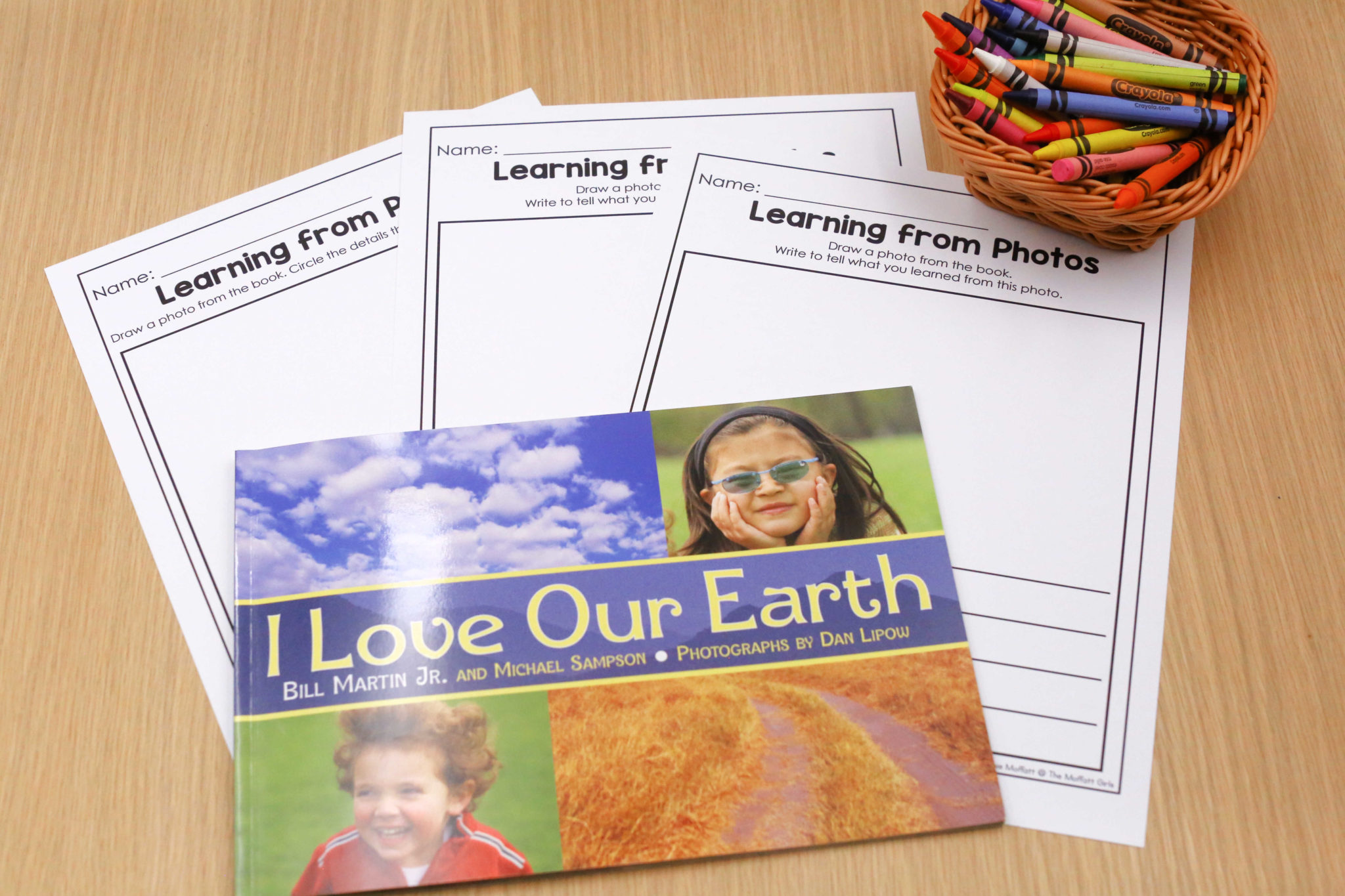
I Love Our Earth Craft
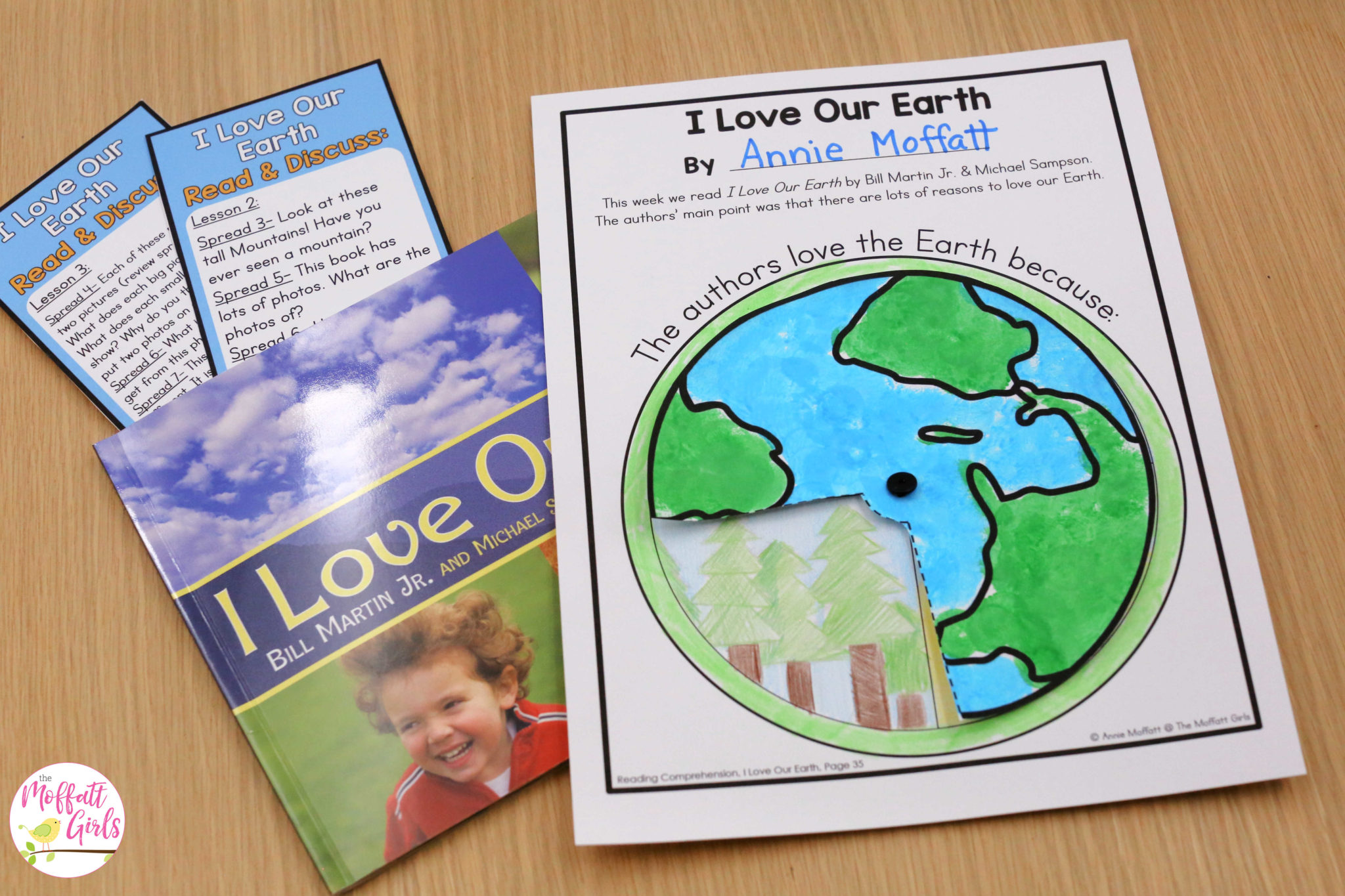
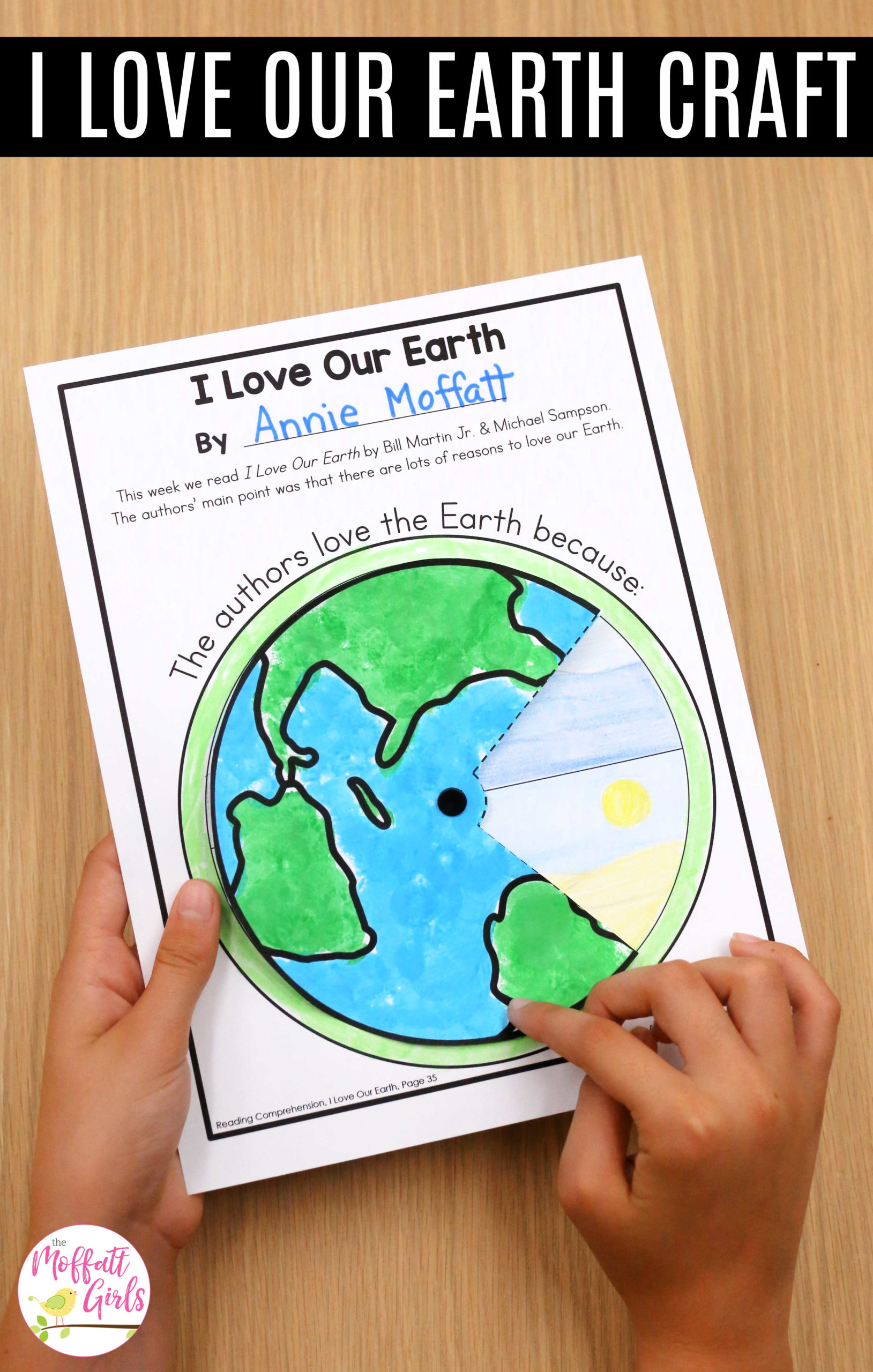
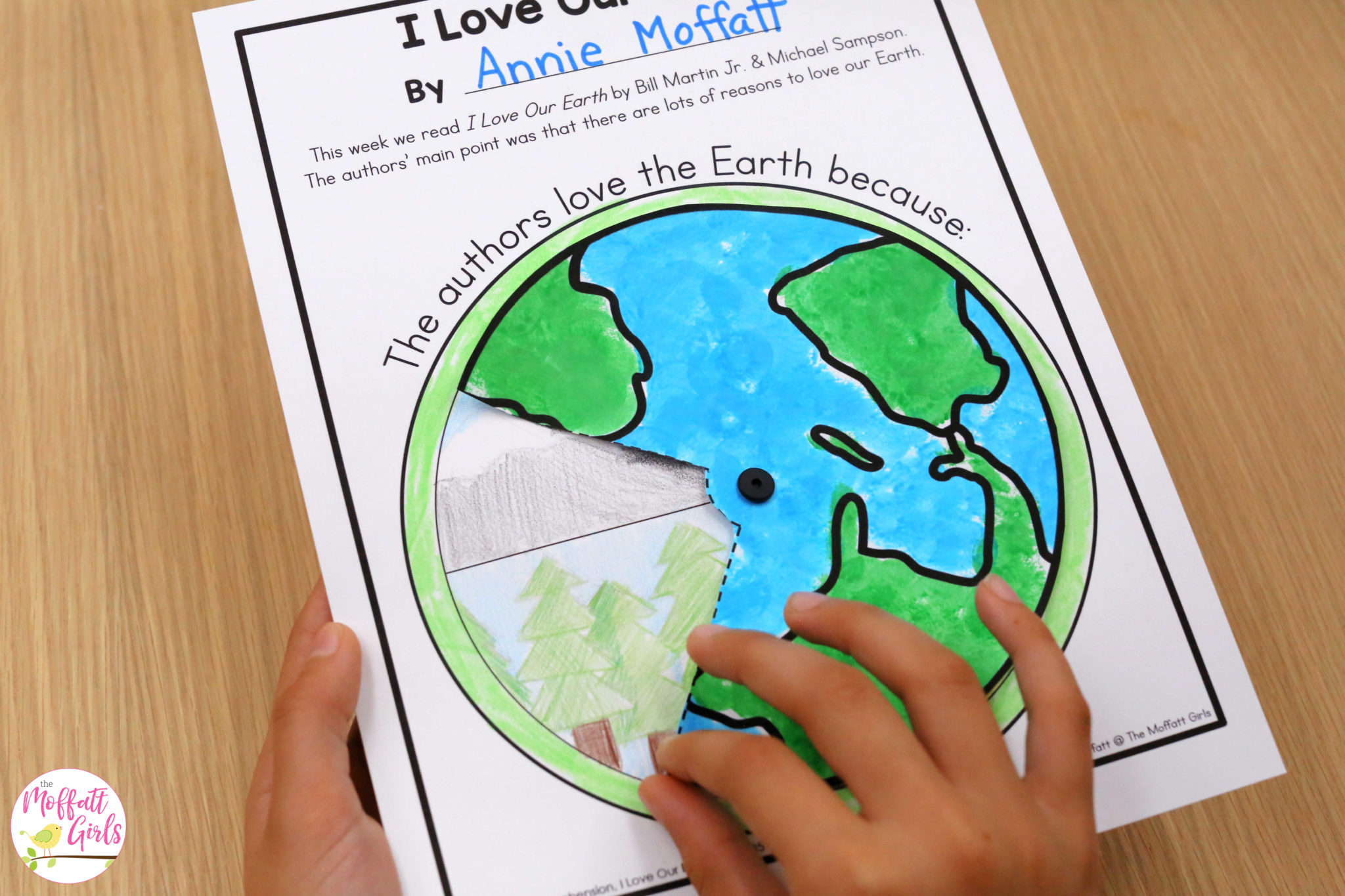
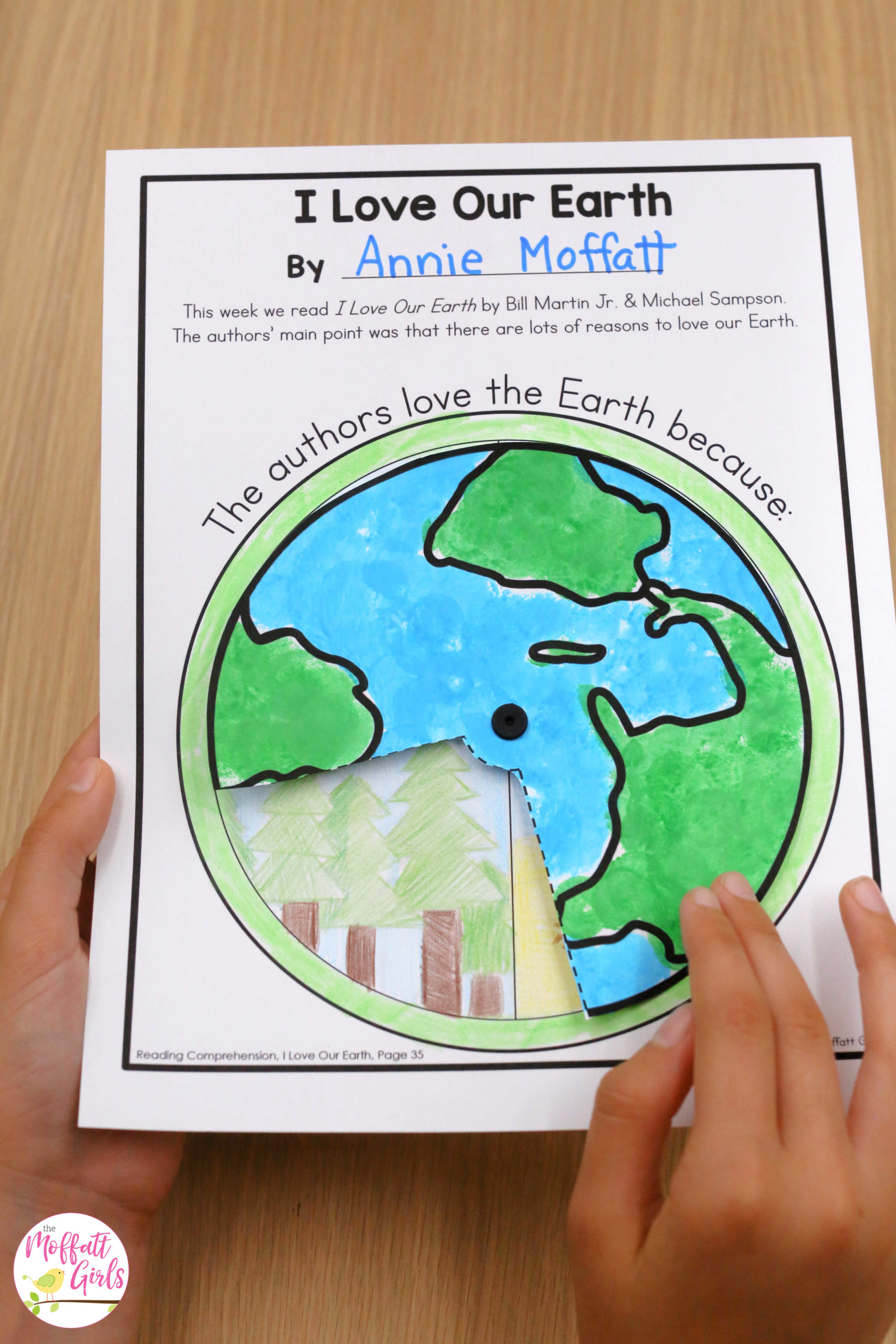
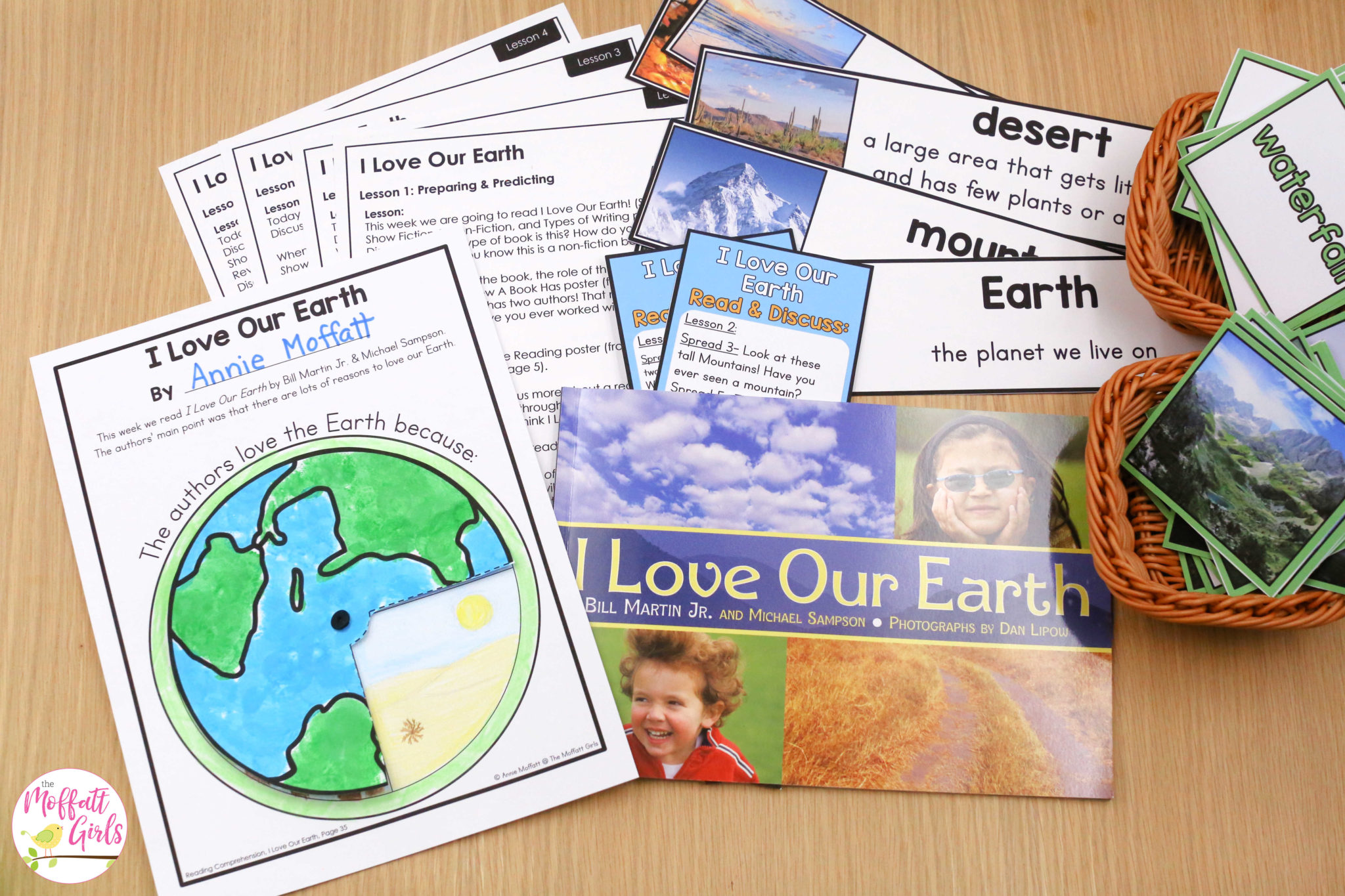
Book 5: Goodbye Summer, Hello Autumn
The setting of this book starts at the end of summer and ends in early autumn. It follows a girl who greets the changes in the season as she says goodbye to what has passed.
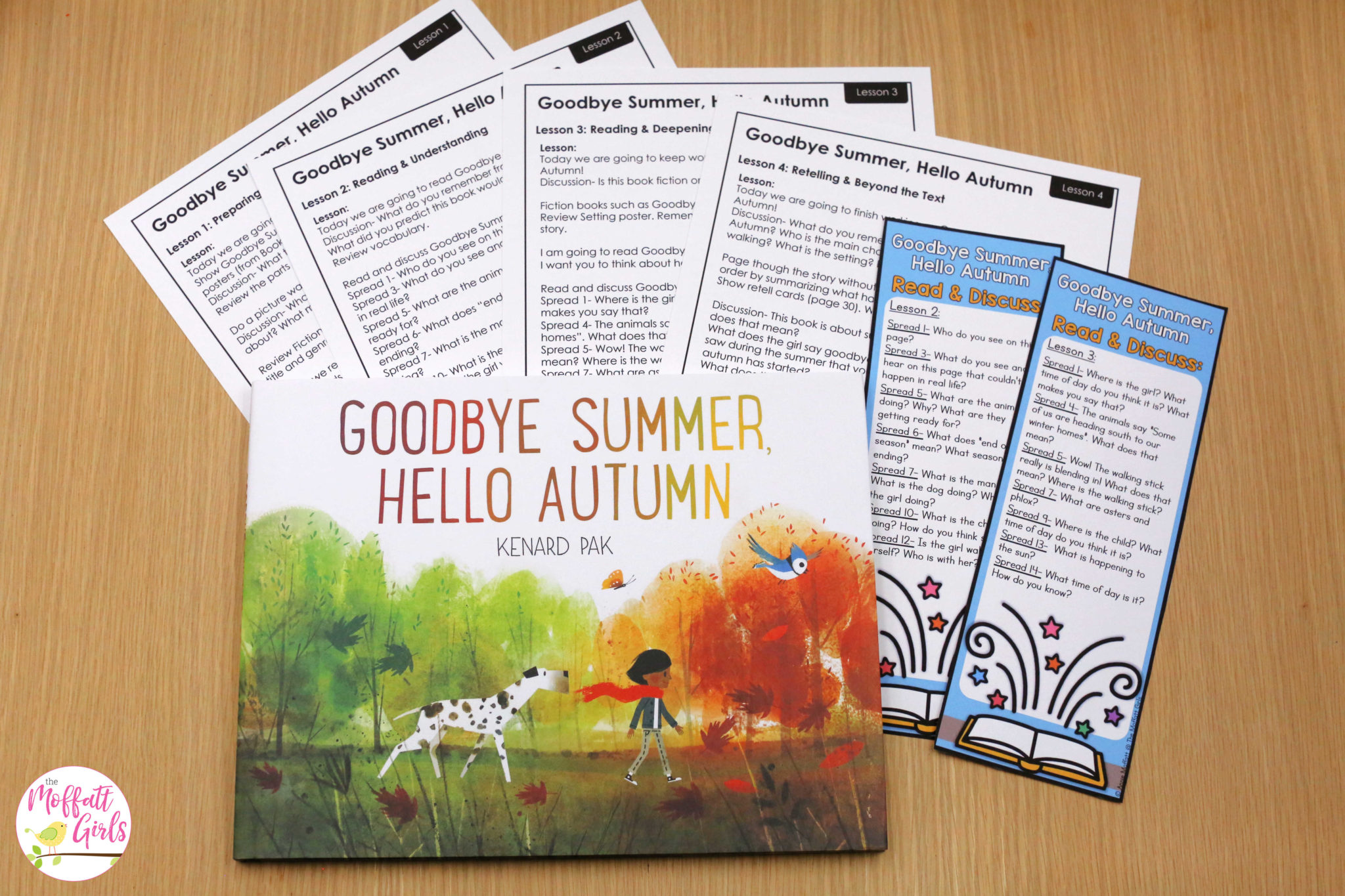
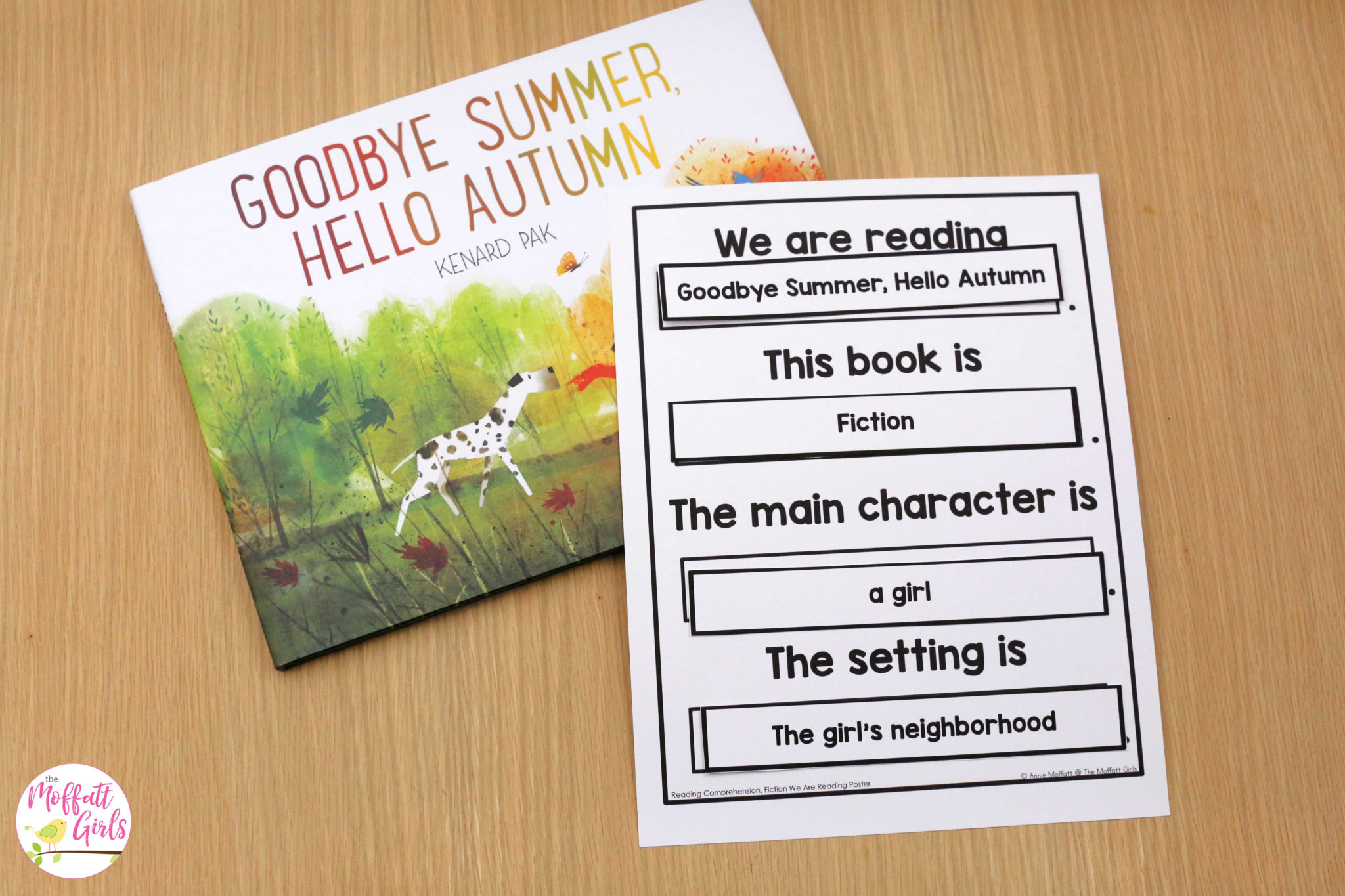
Vocabulary
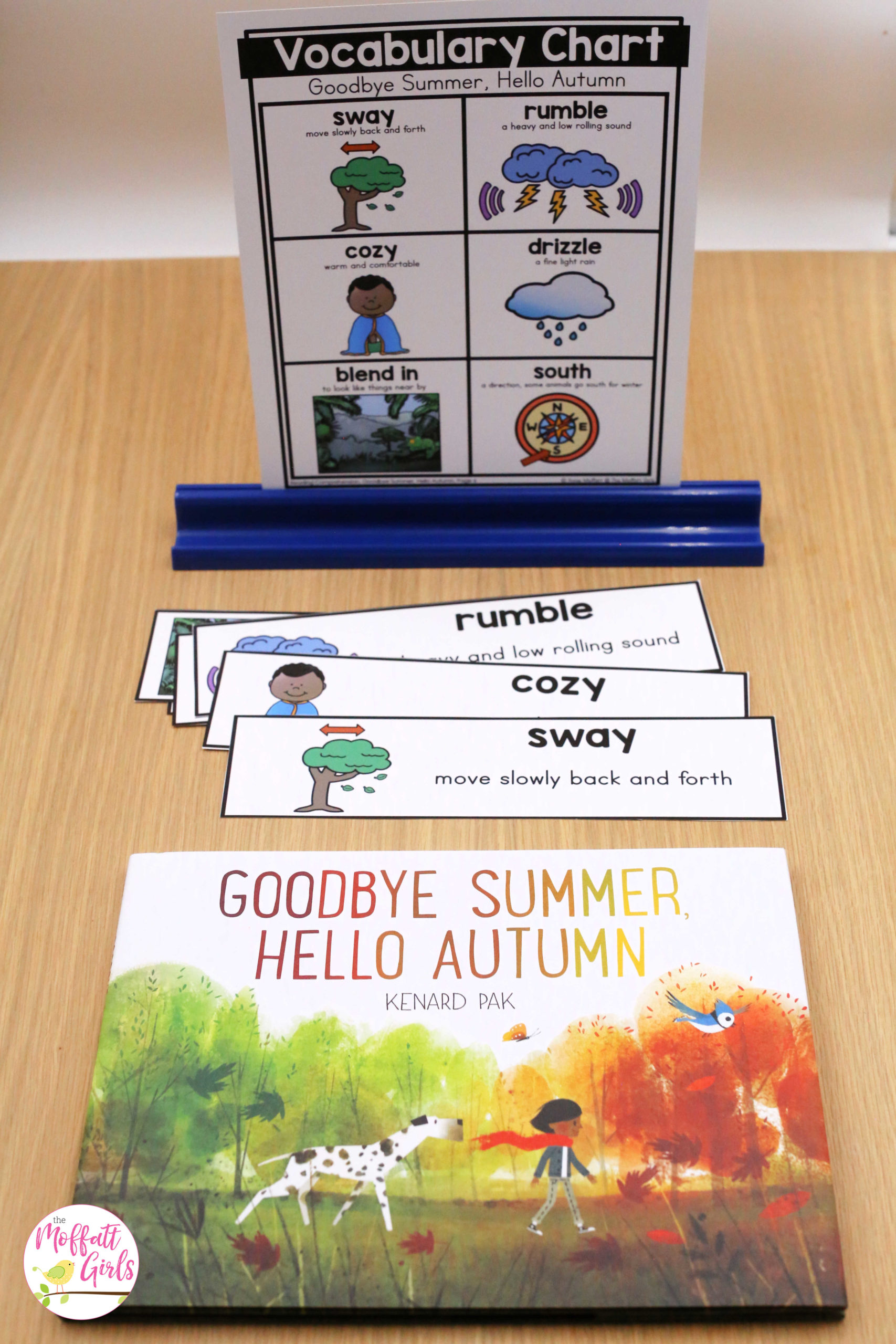
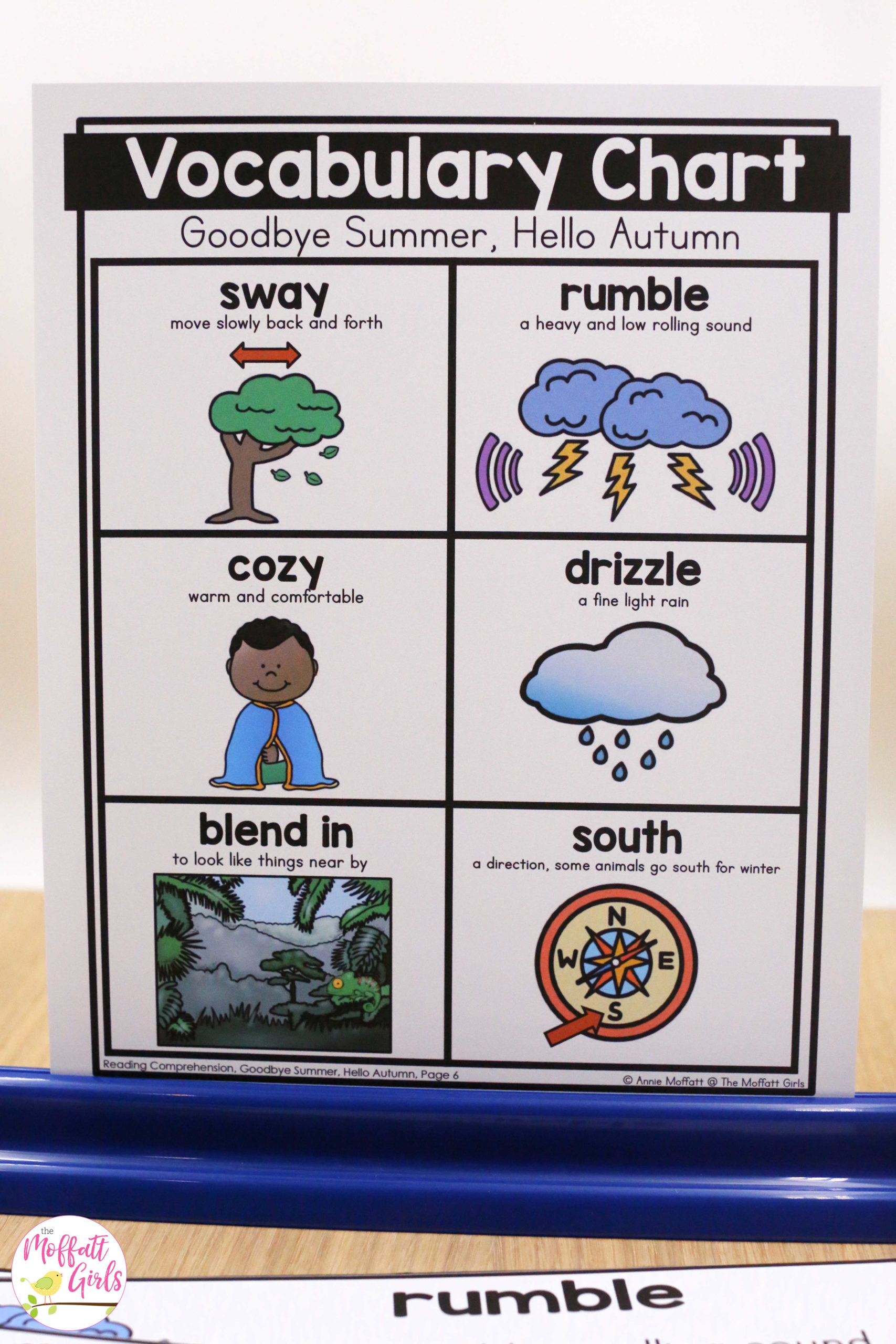
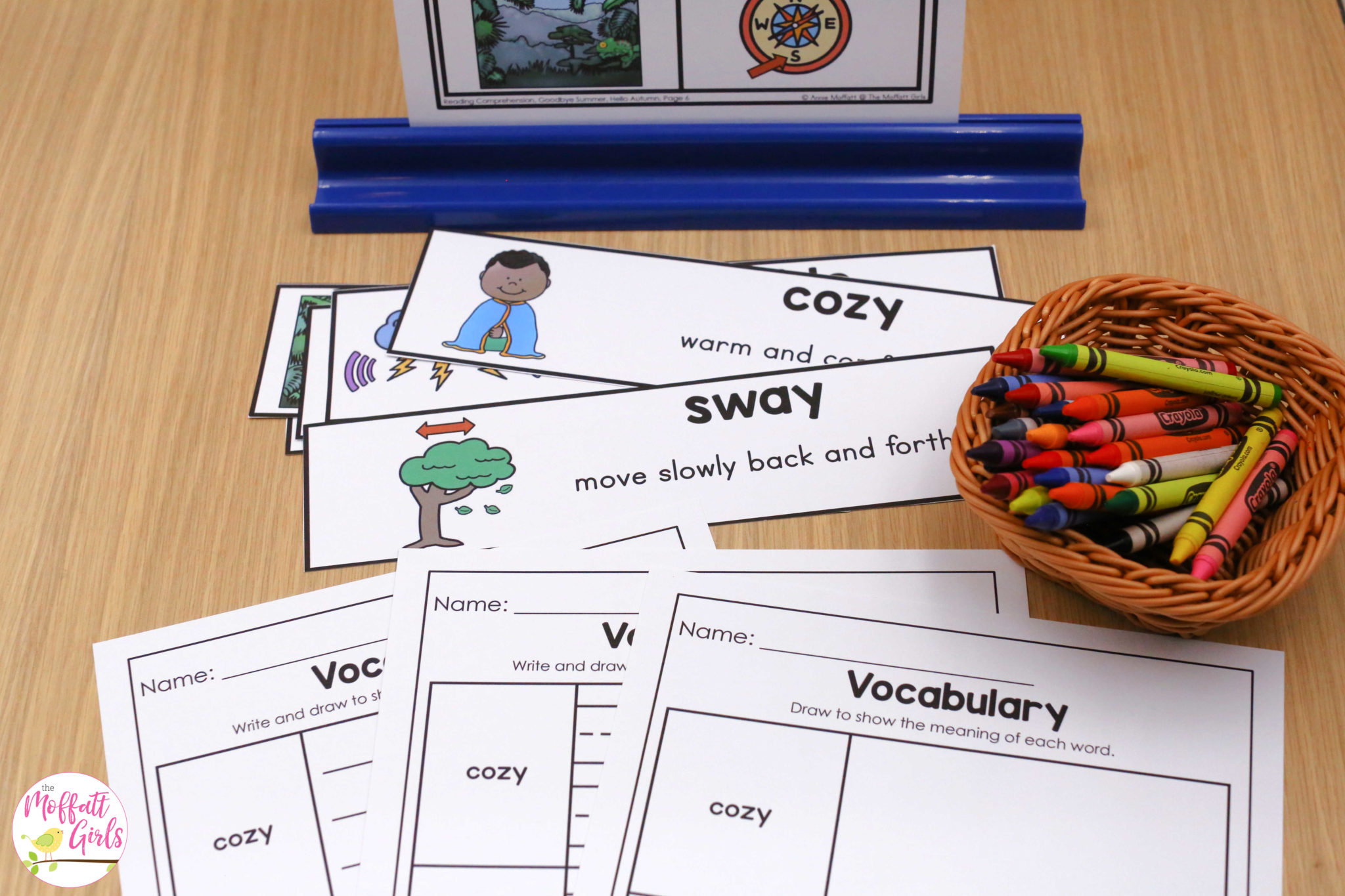
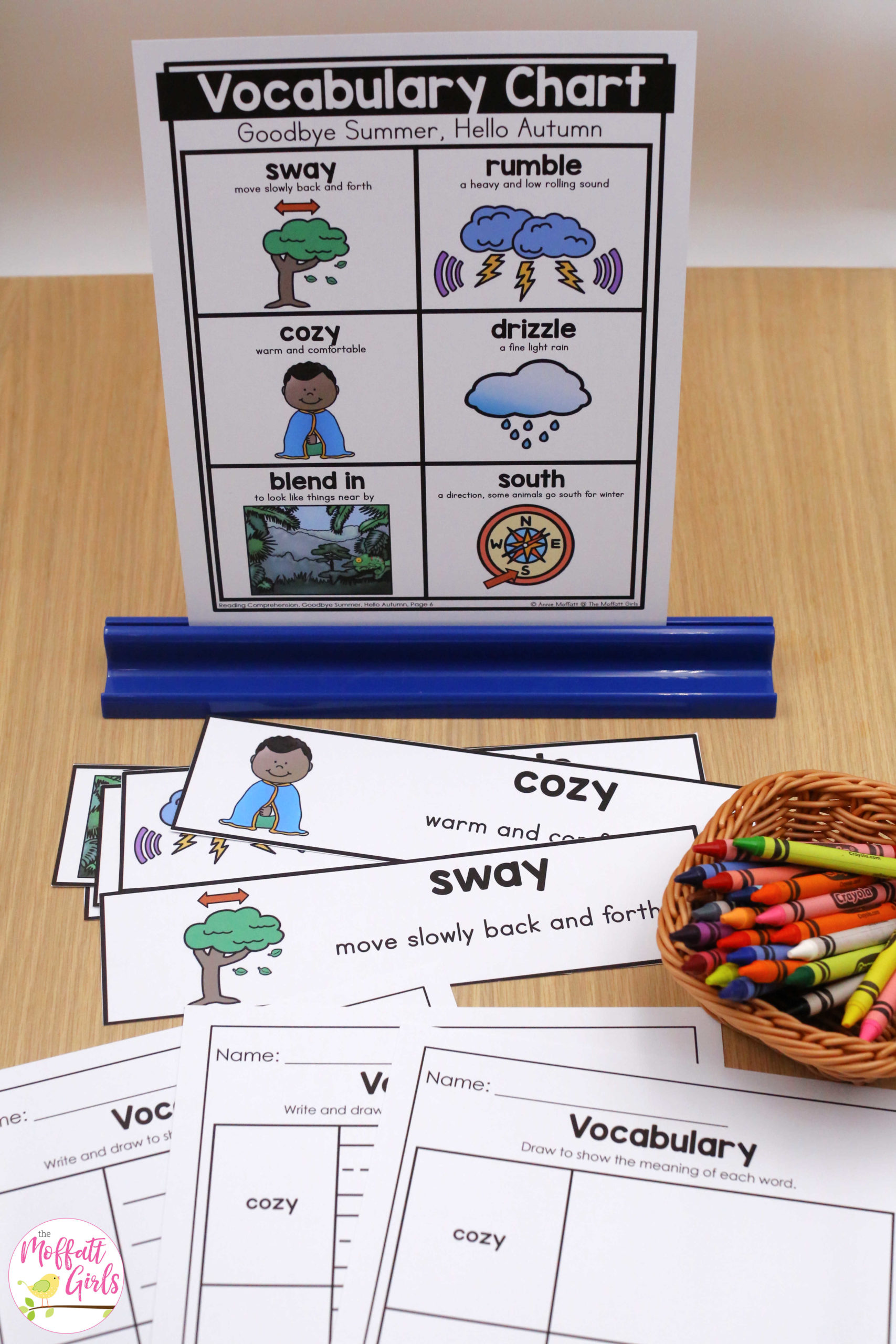
Making Predictions
Page through the book and ask your students what they think the book will be about. This helps build interest and engagement as students get to see if their predictions were correct.
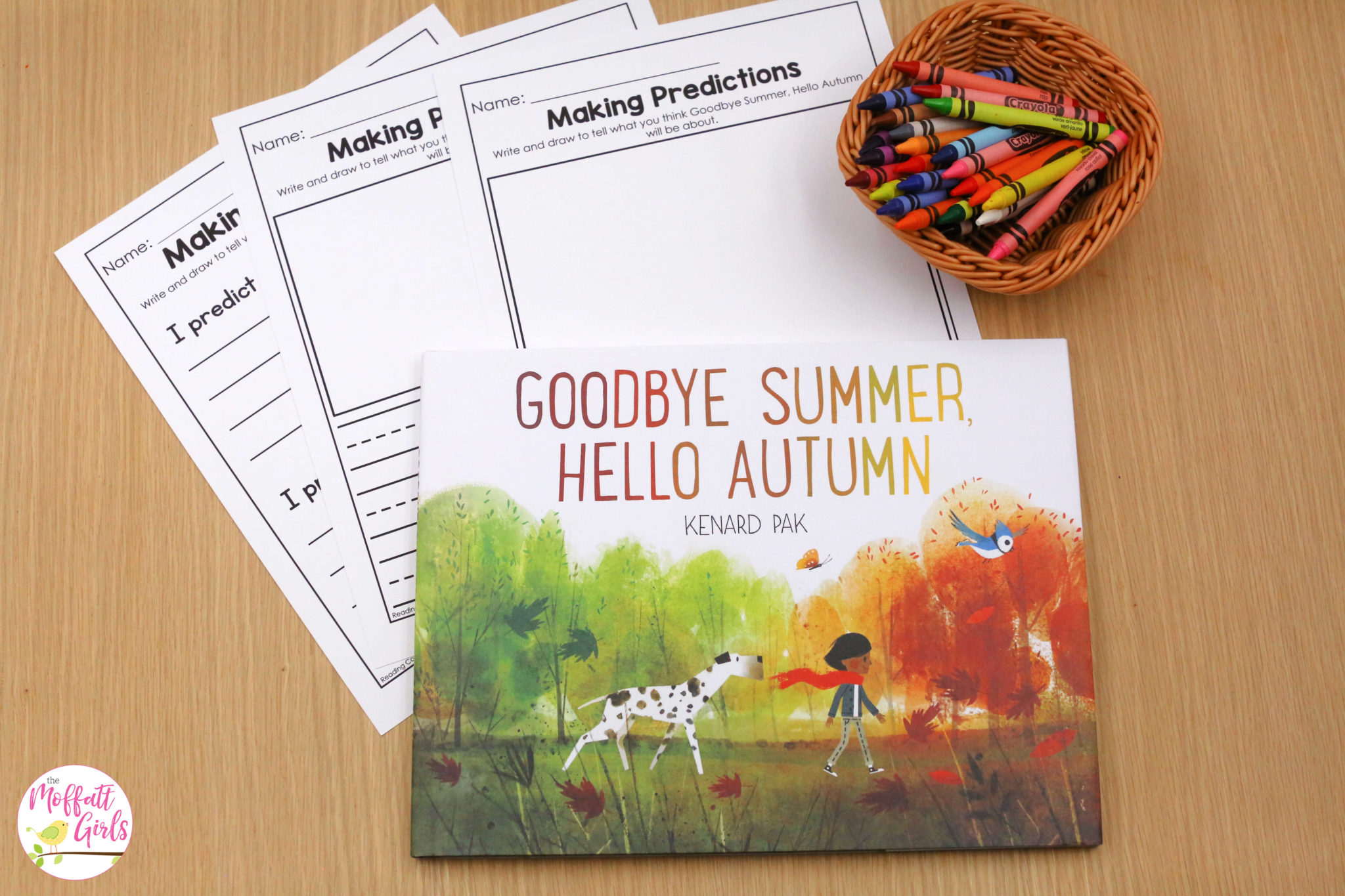
Character Study
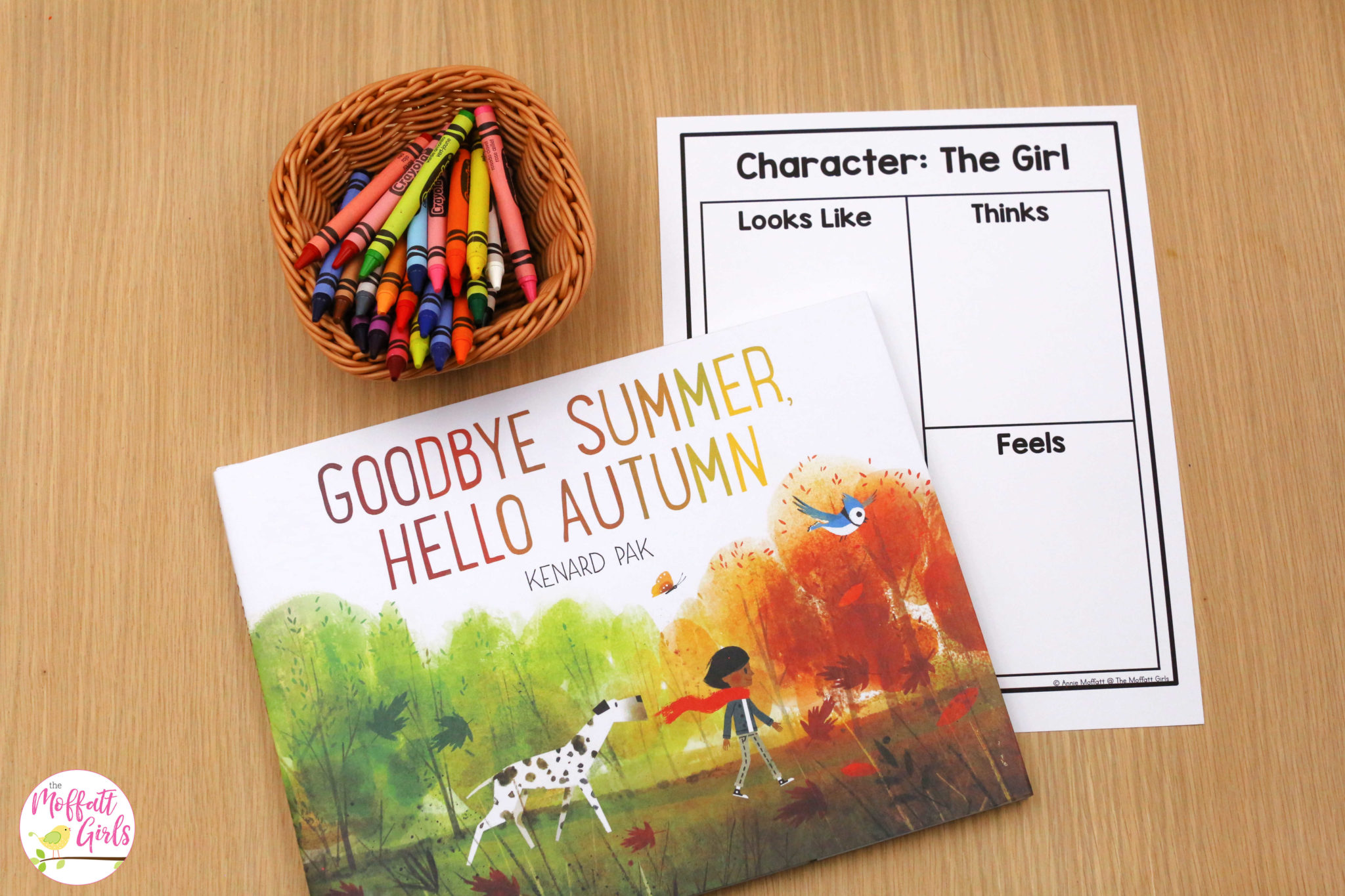
Sequencing Events in the Story
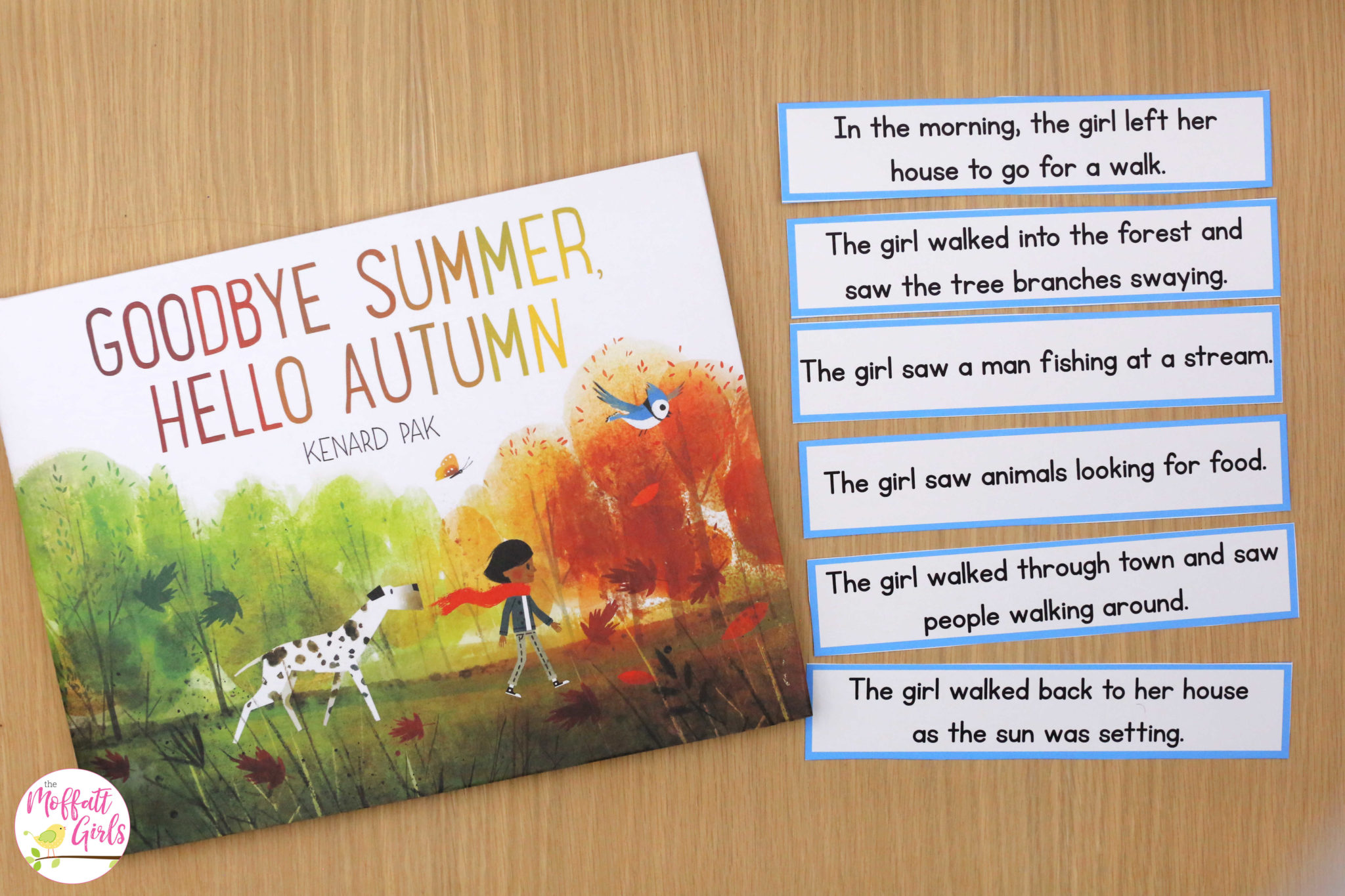
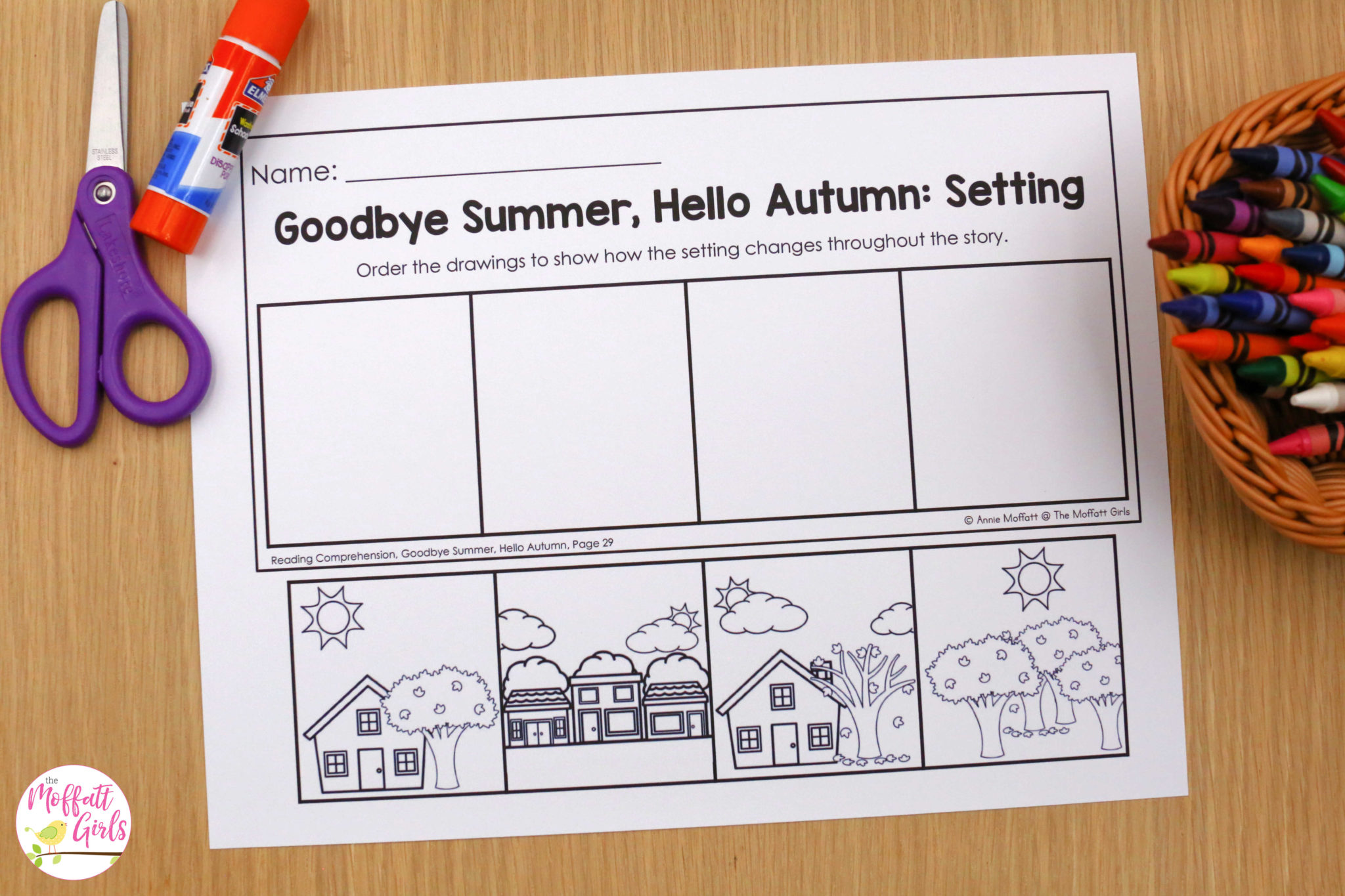
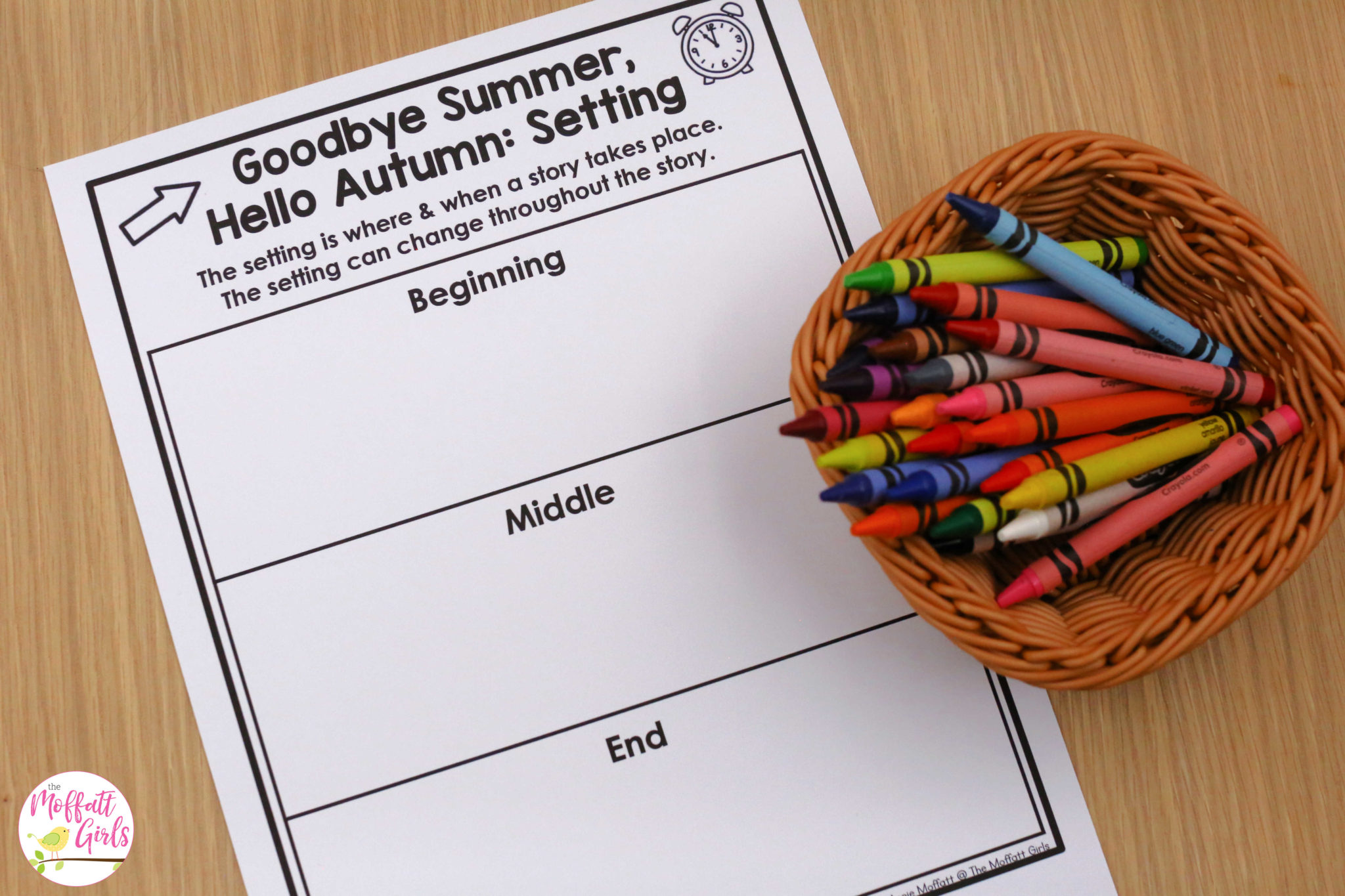
Categorizing Center
This extension activity helps students to make the connection with the main theme of the book.
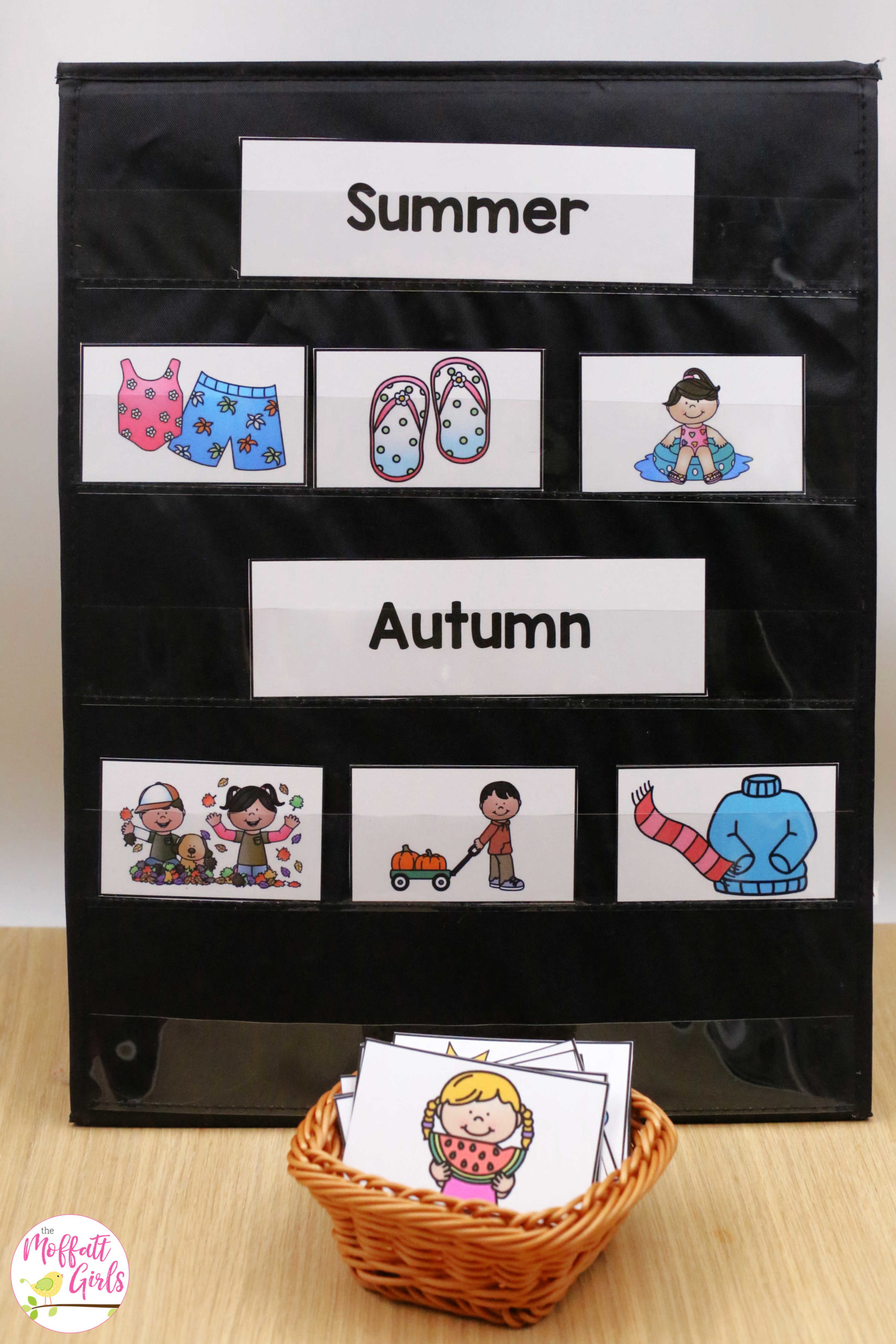
Making Non-Fiction Connections
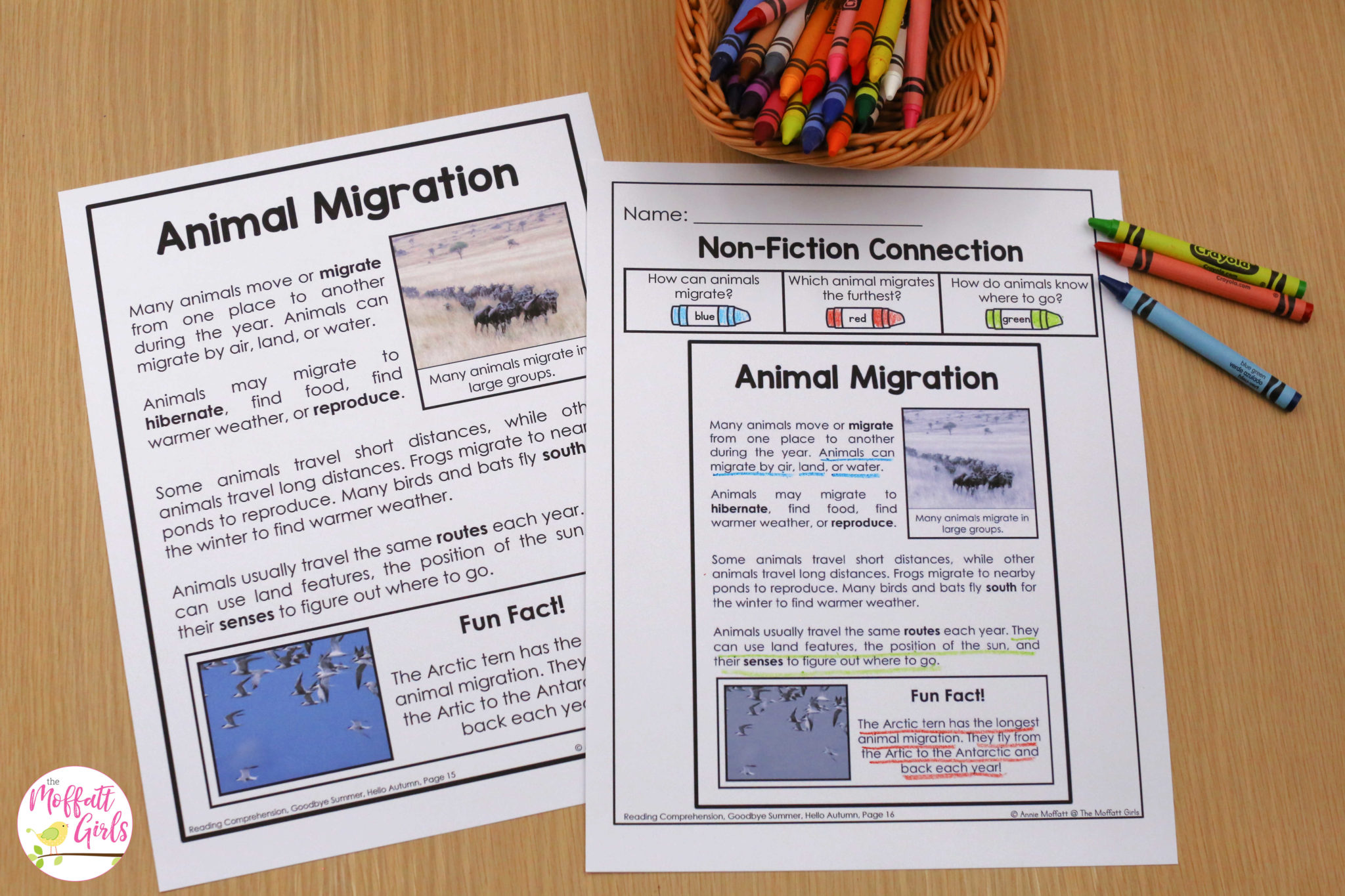
Goodbye Summer, Hello Autumn Craft
Students put together a mini book showing the transition between the seasons. This is such a fun way to review the main idea.
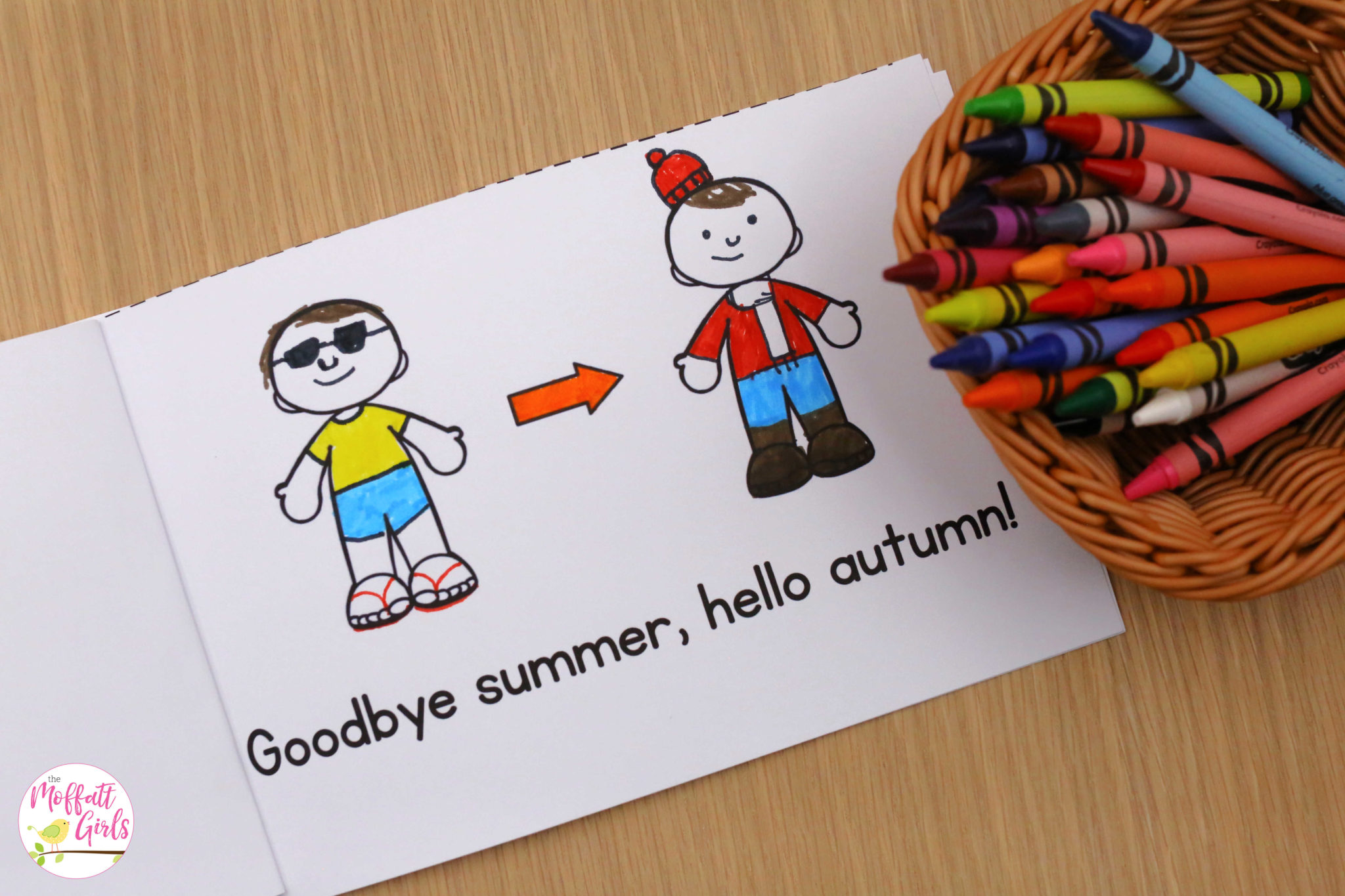
Book 6: Apples for Everyone
This non-fiction book teaches about the various uses of apples.
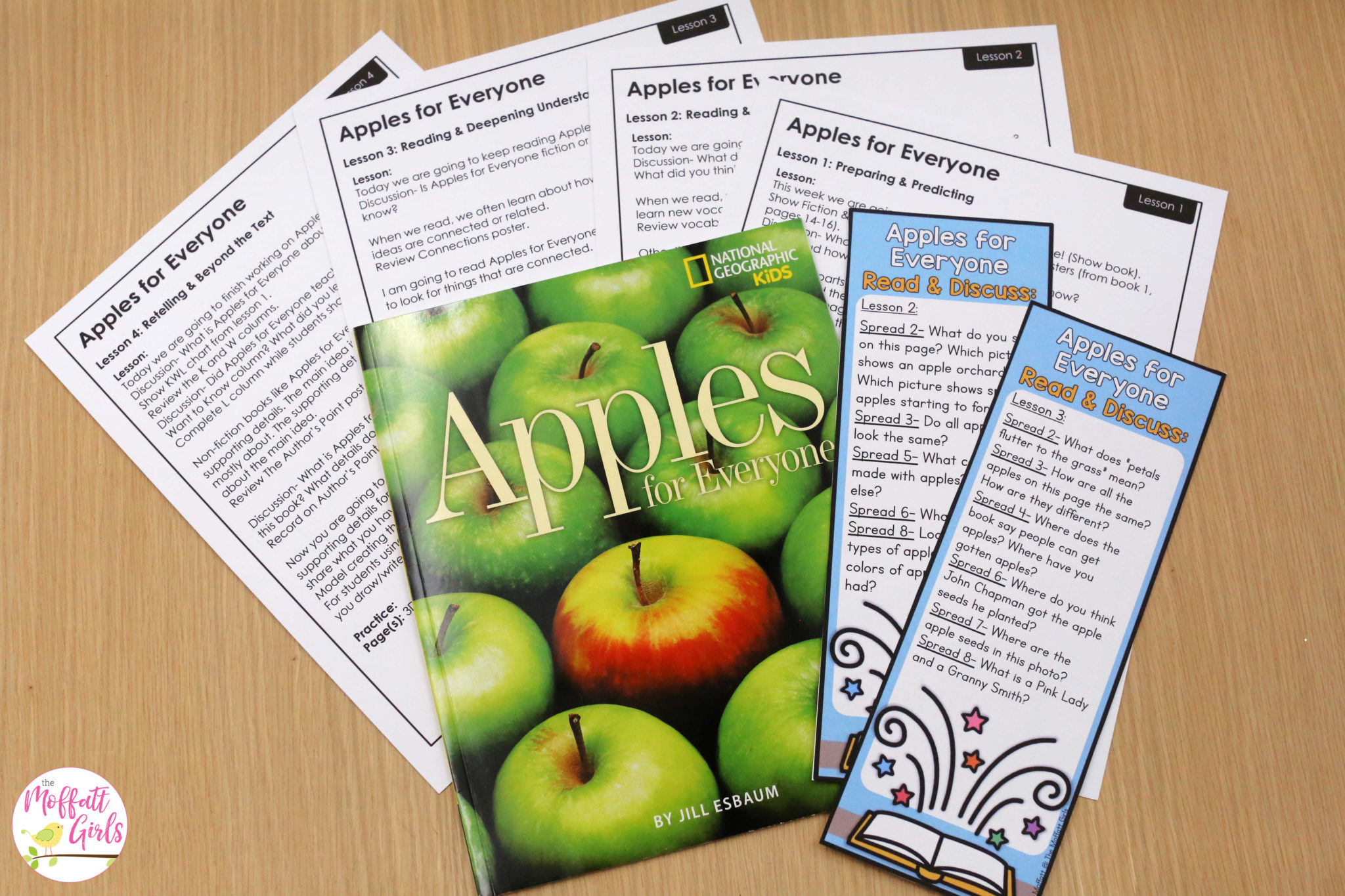
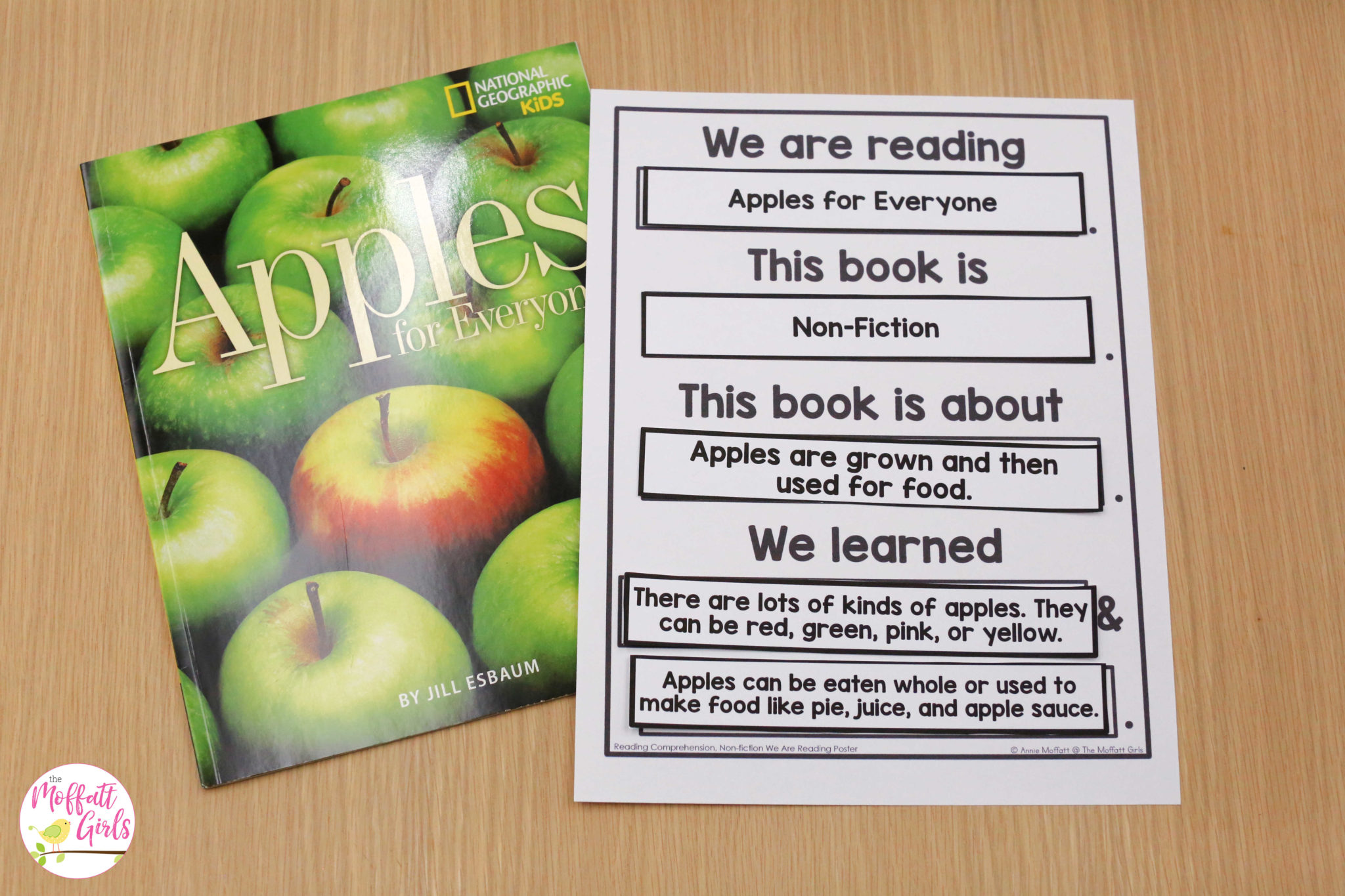
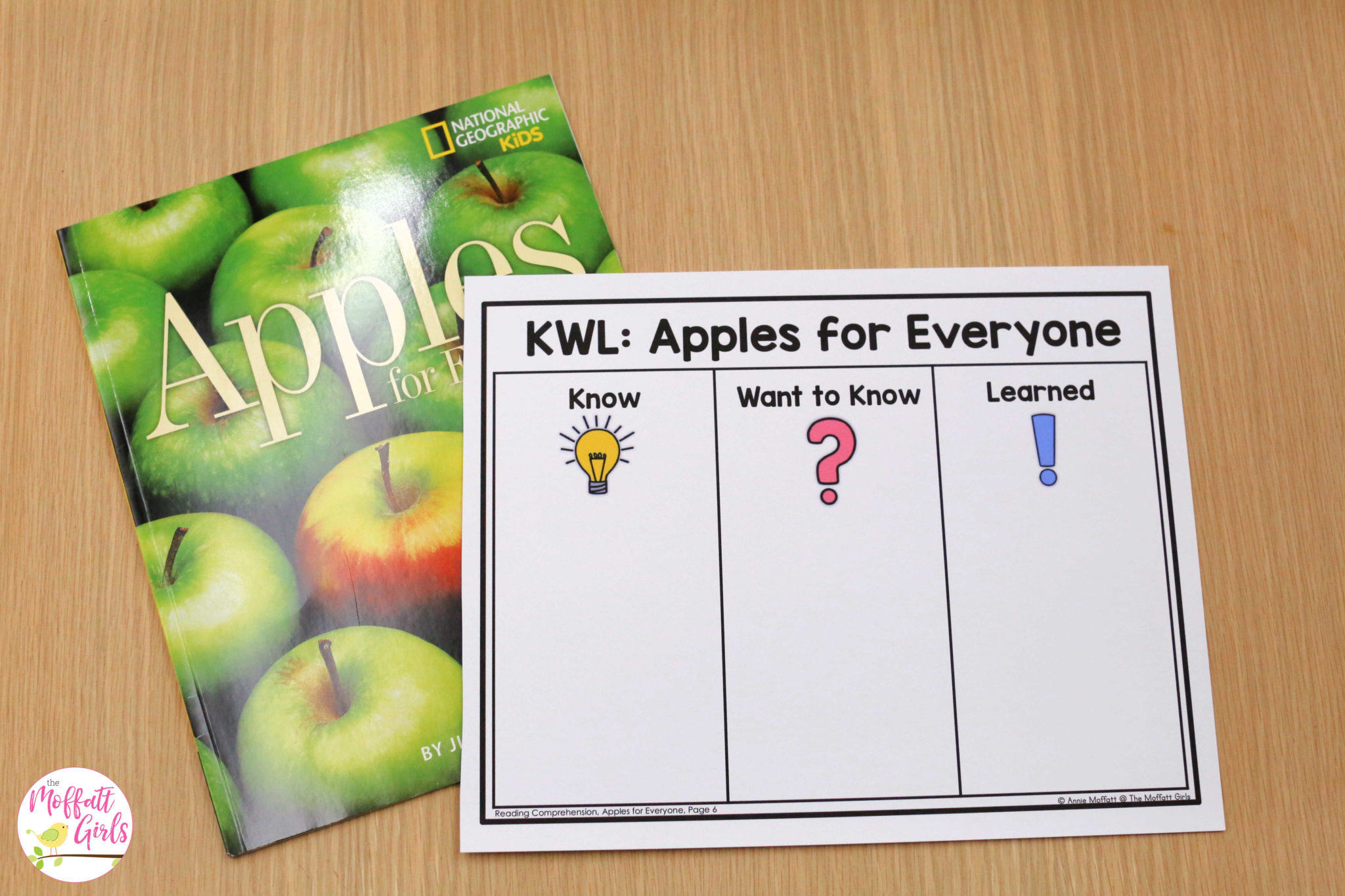
Vocabulary
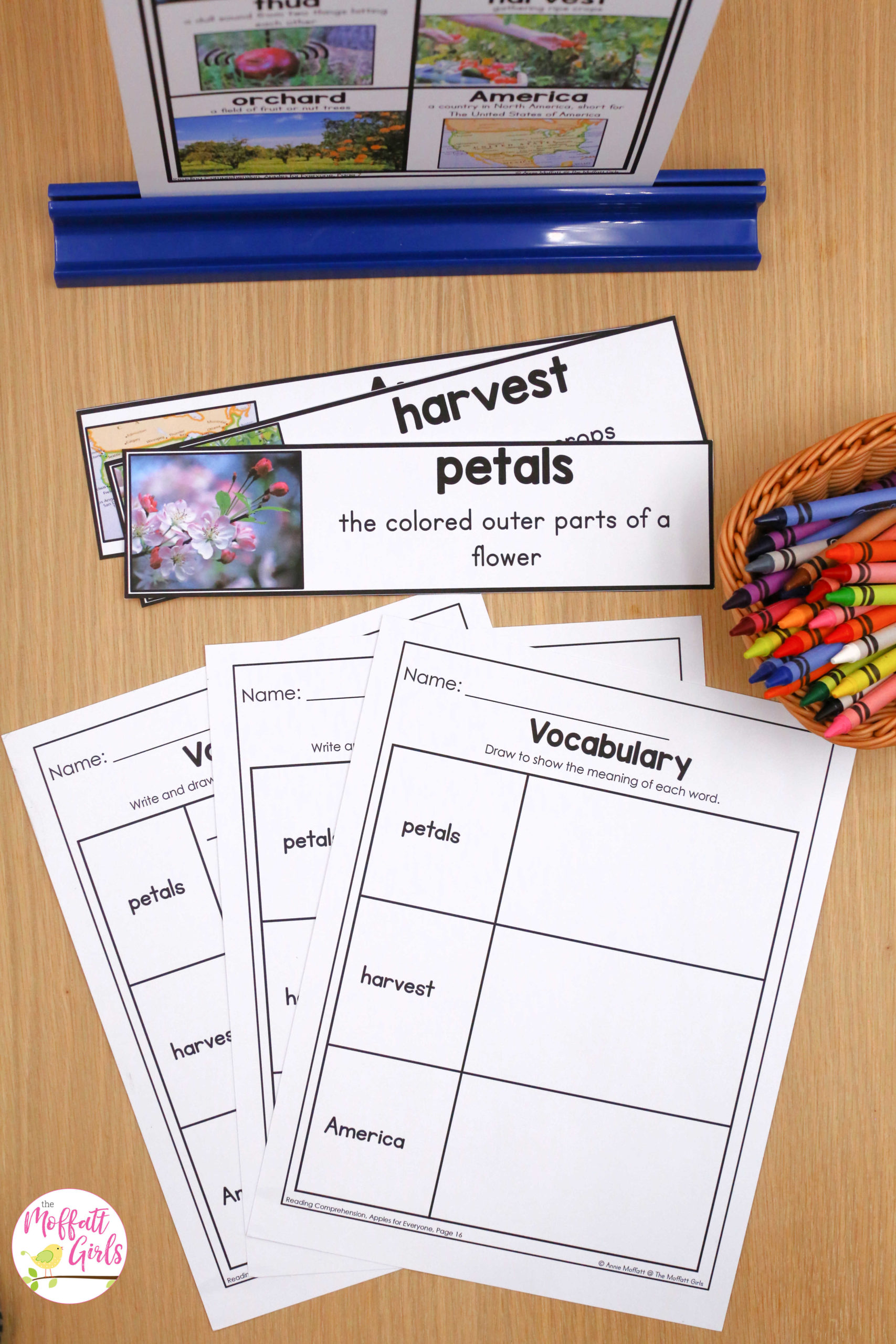
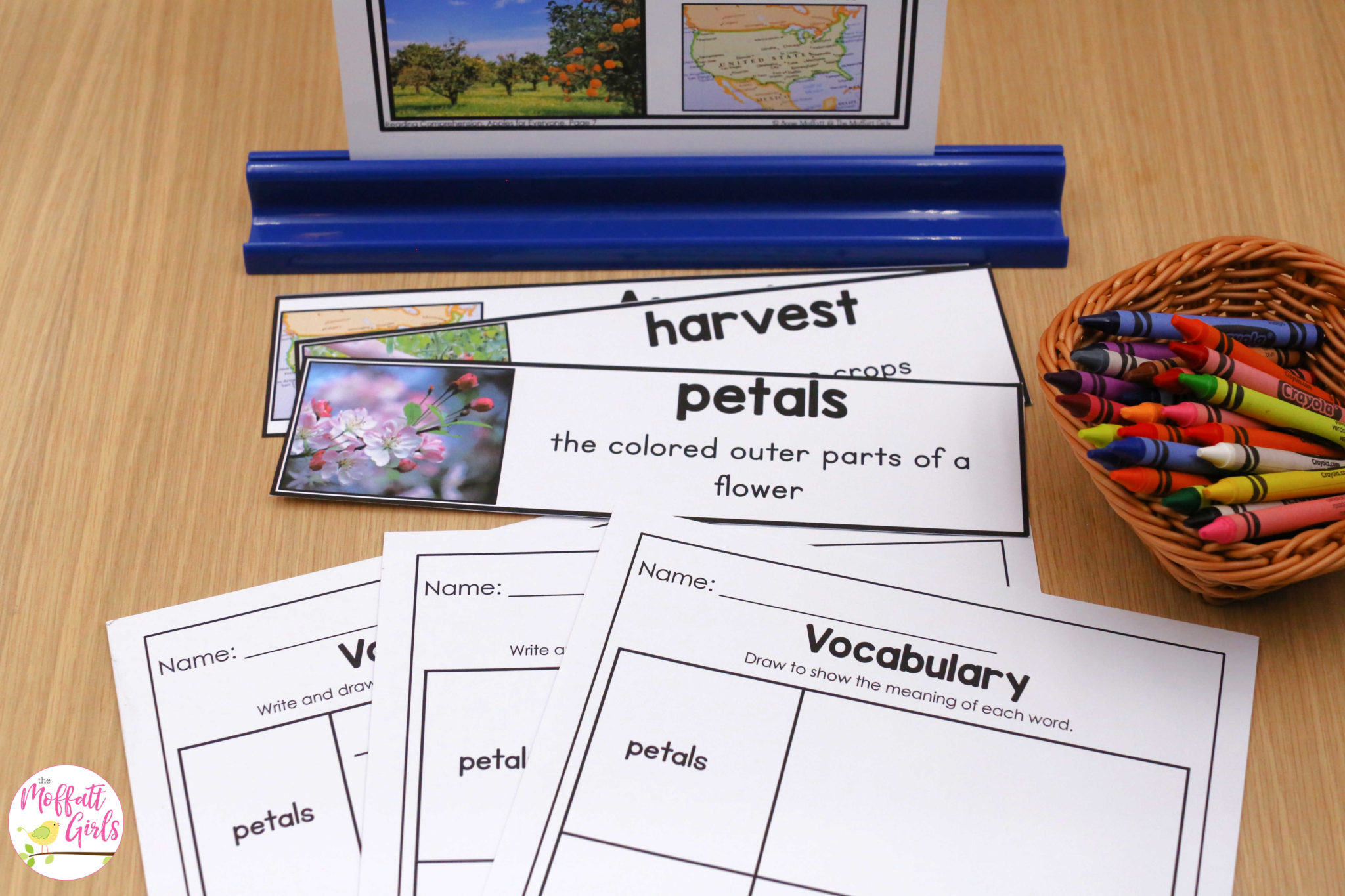
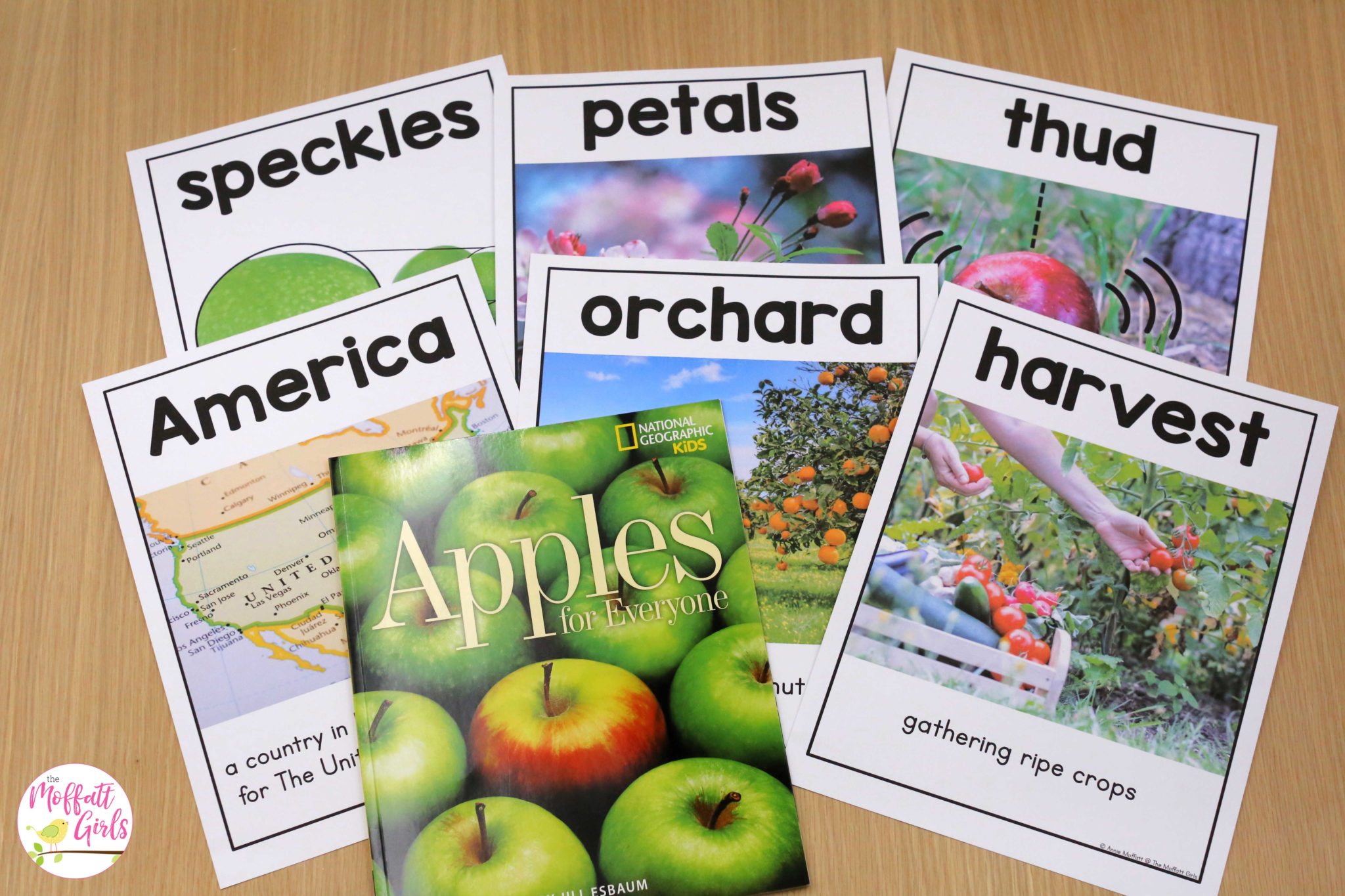
Sequencing
Students get to sequence the order of preparing apples in various ways! So fun!
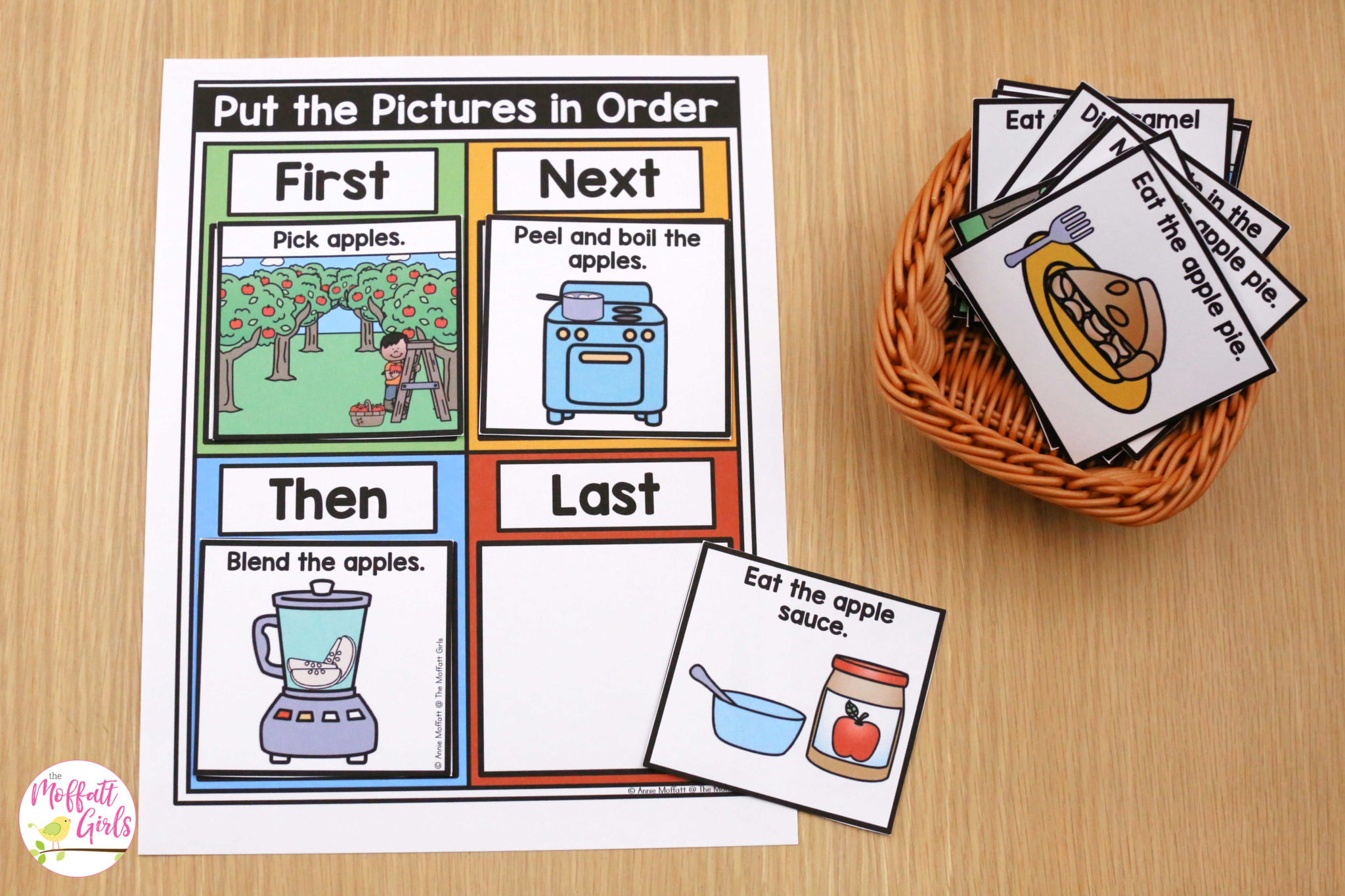
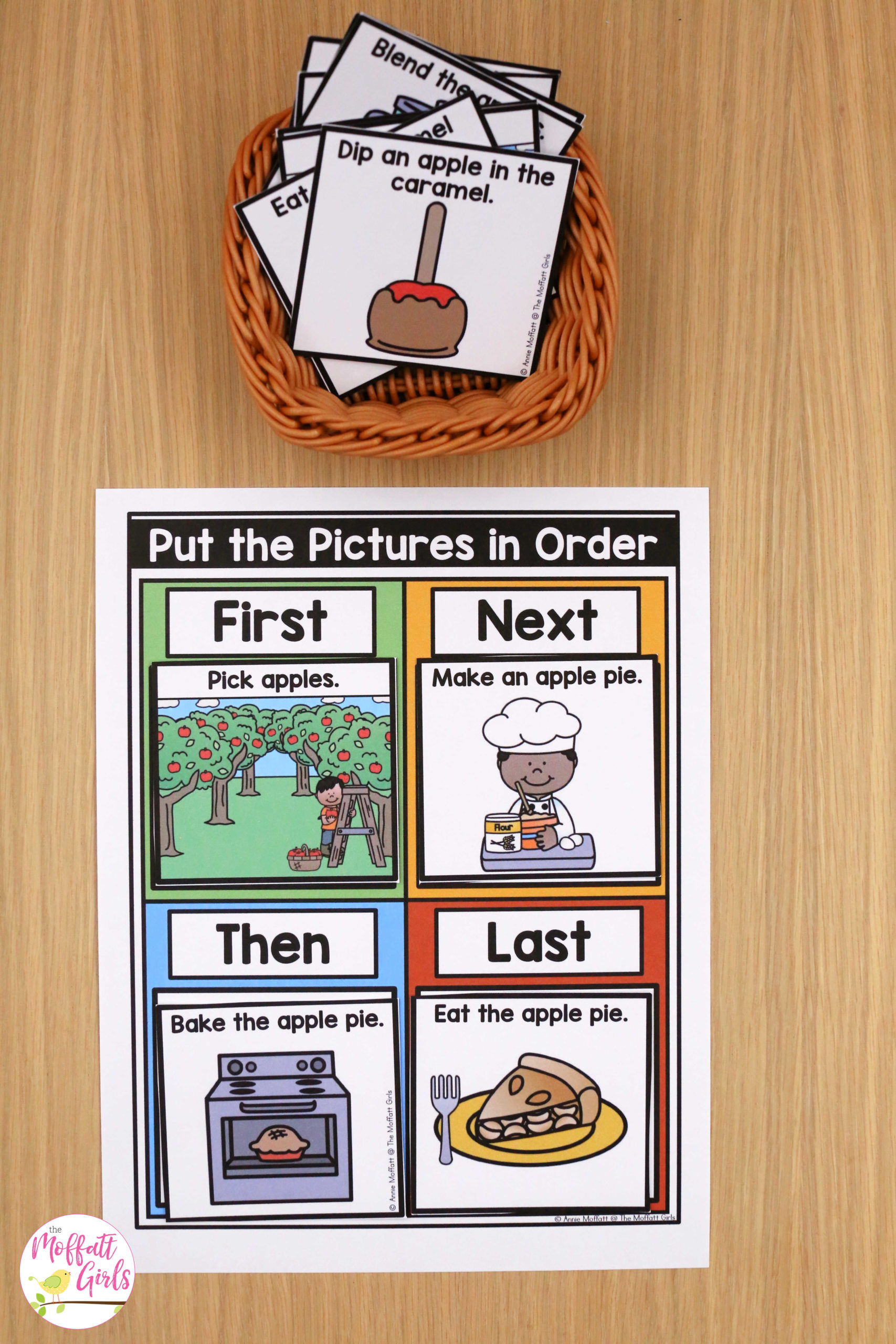
Unknown Words
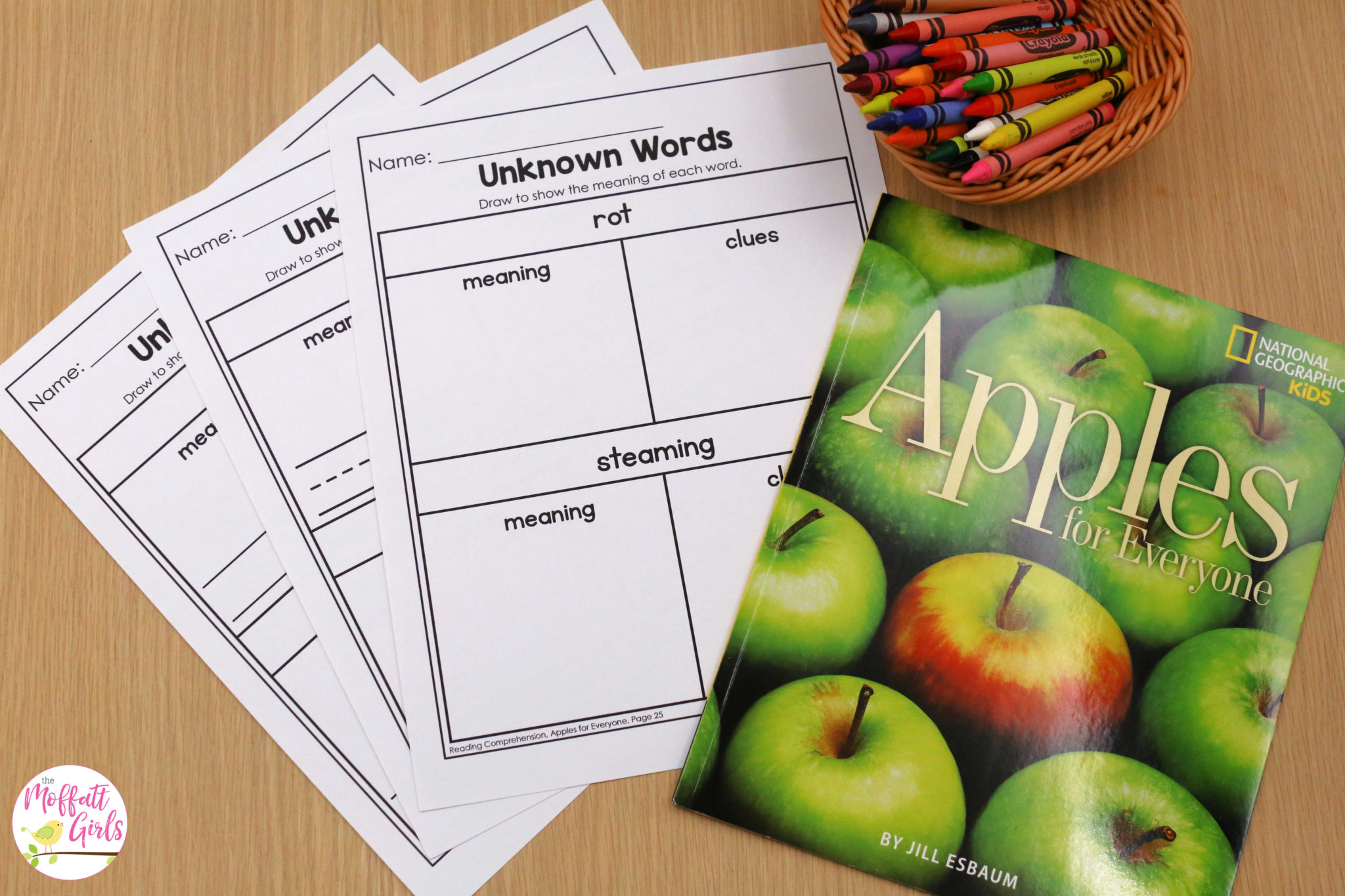
Making Connections
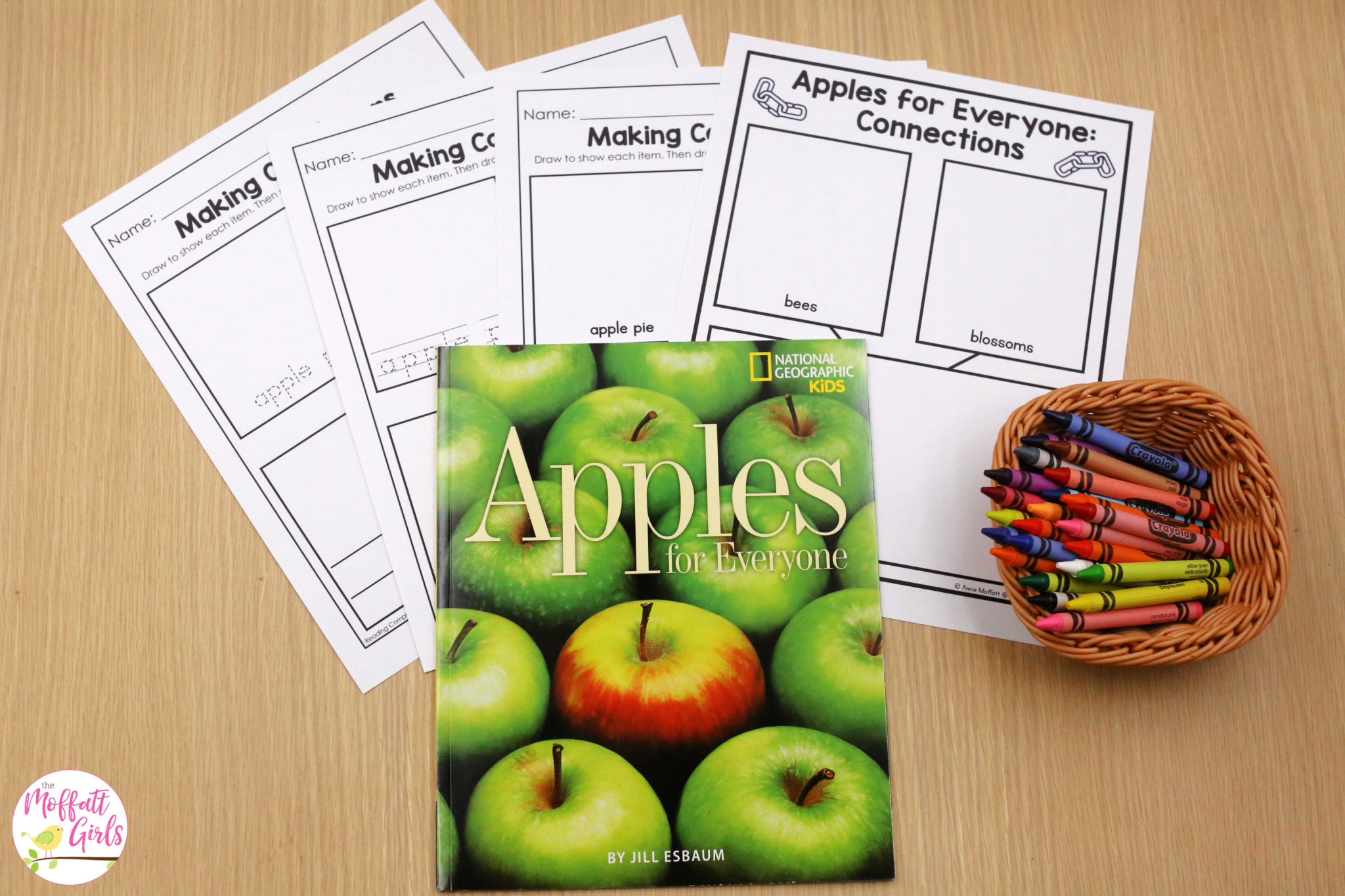
Apples for Everyone Craft
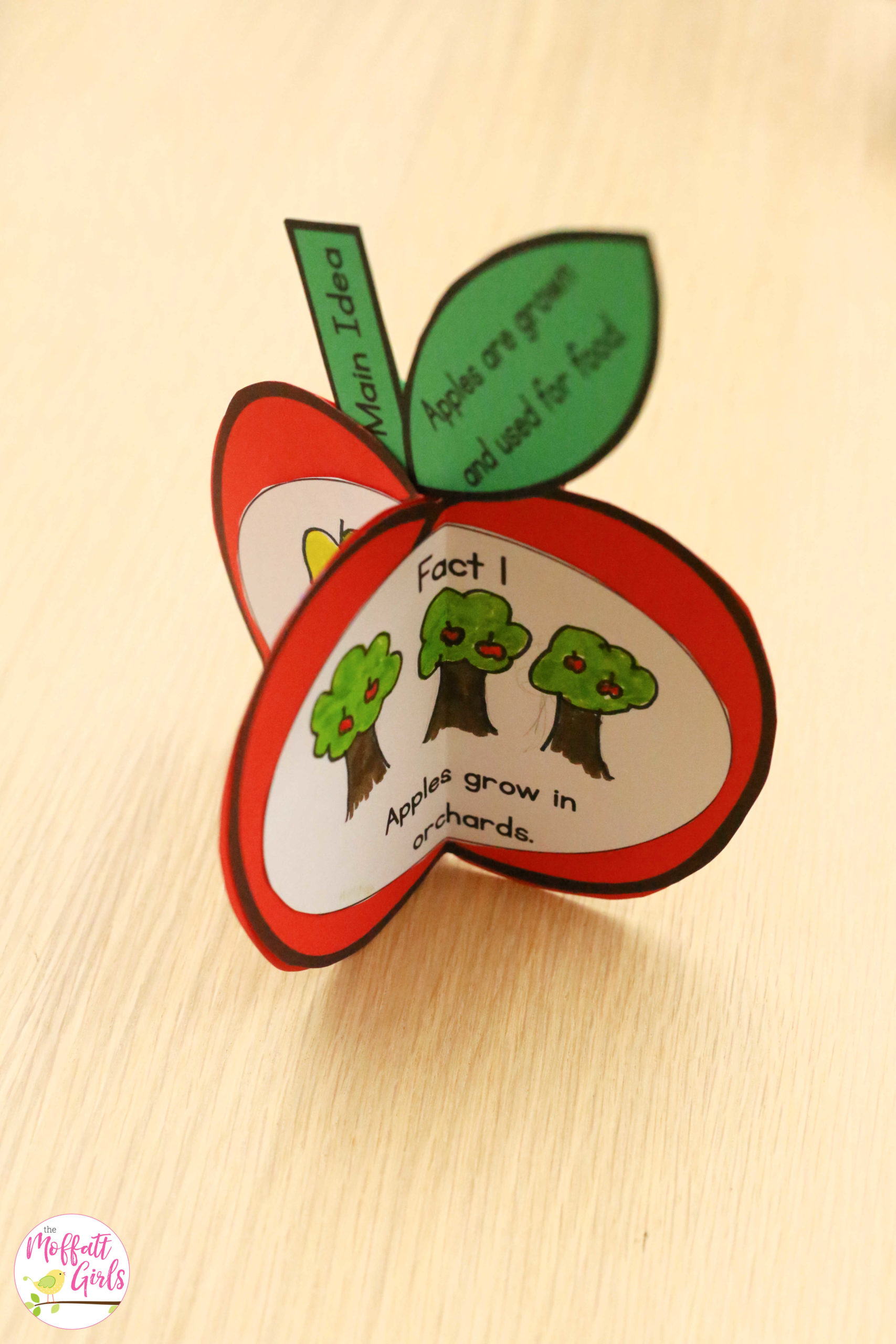
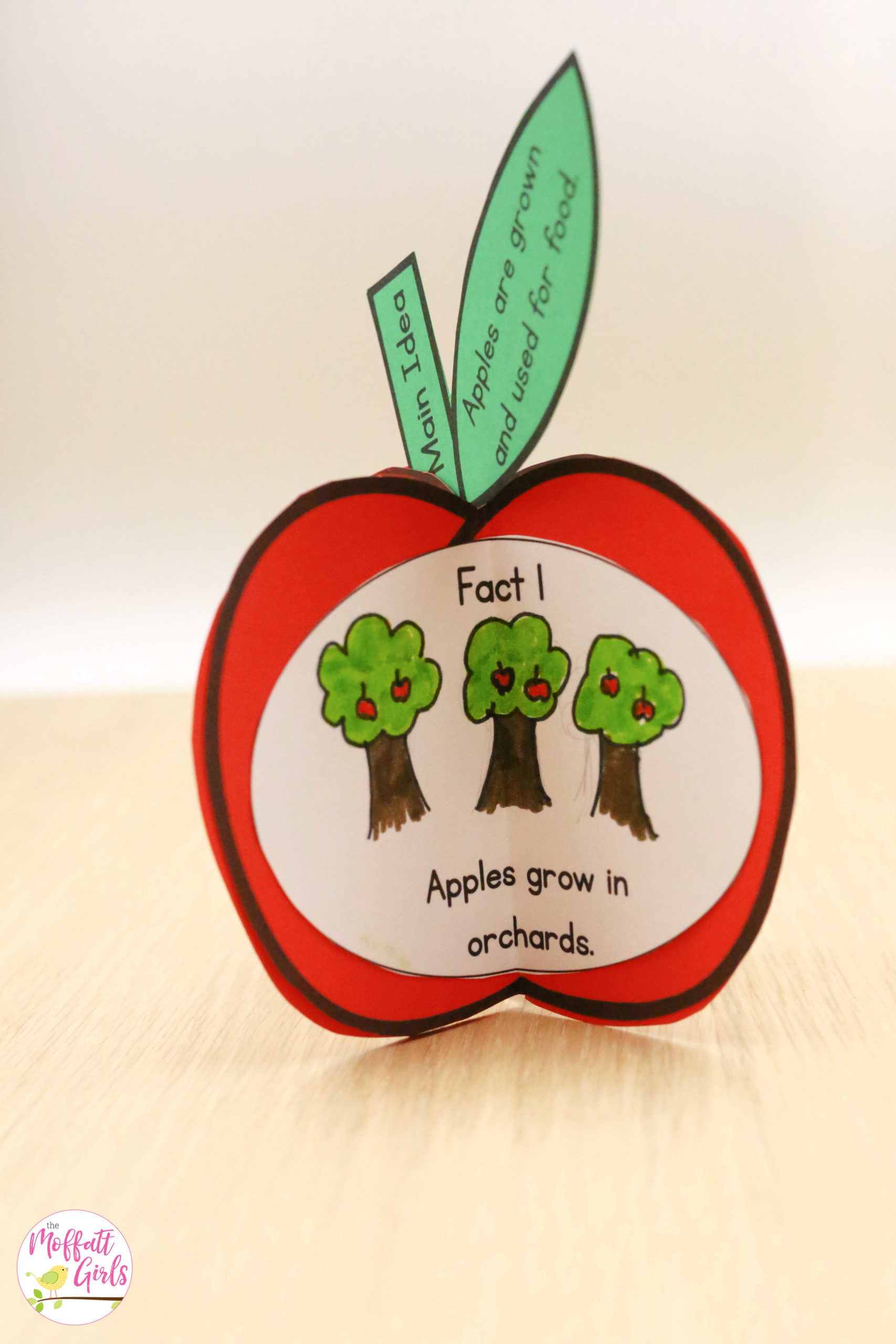
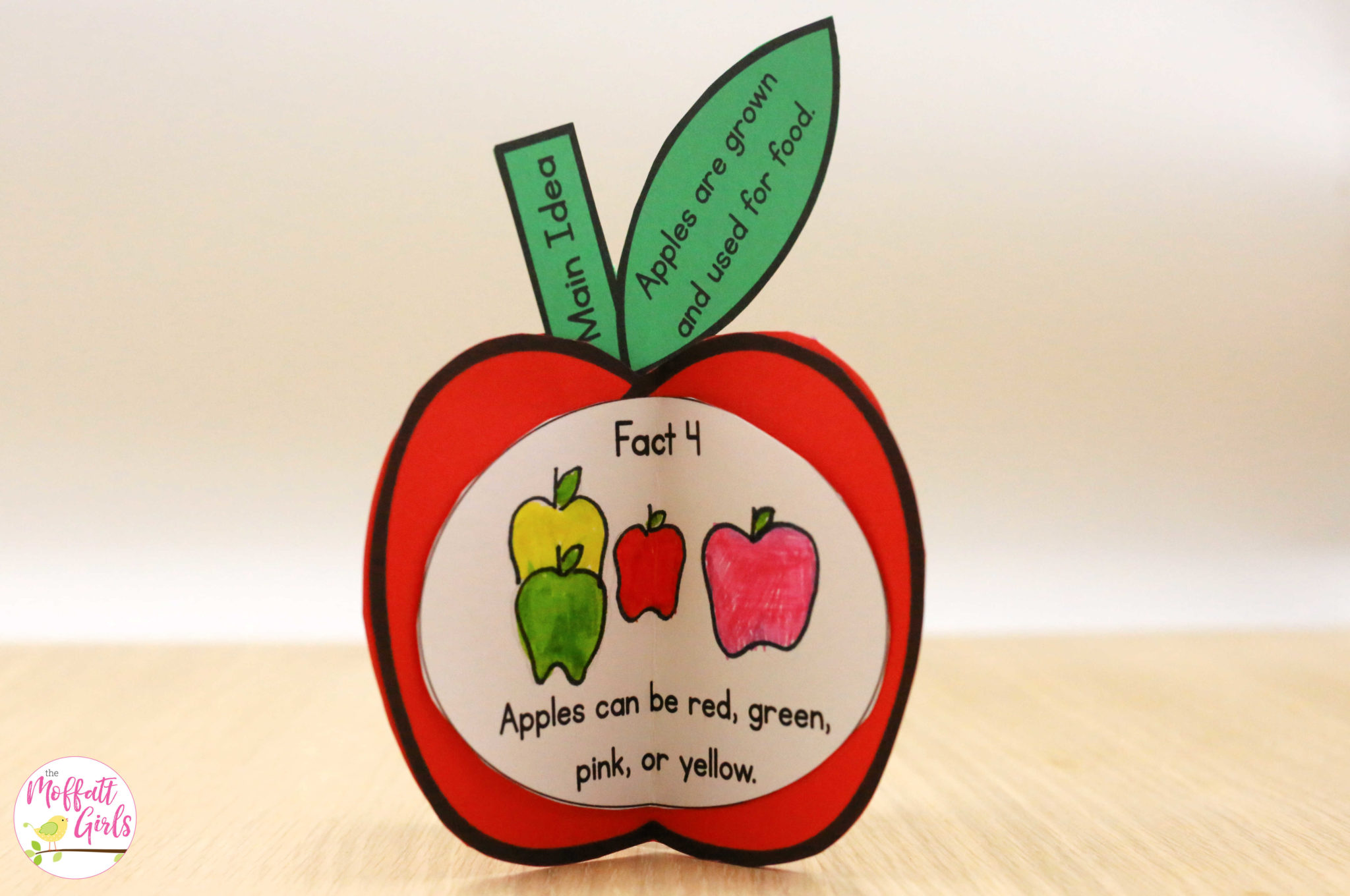
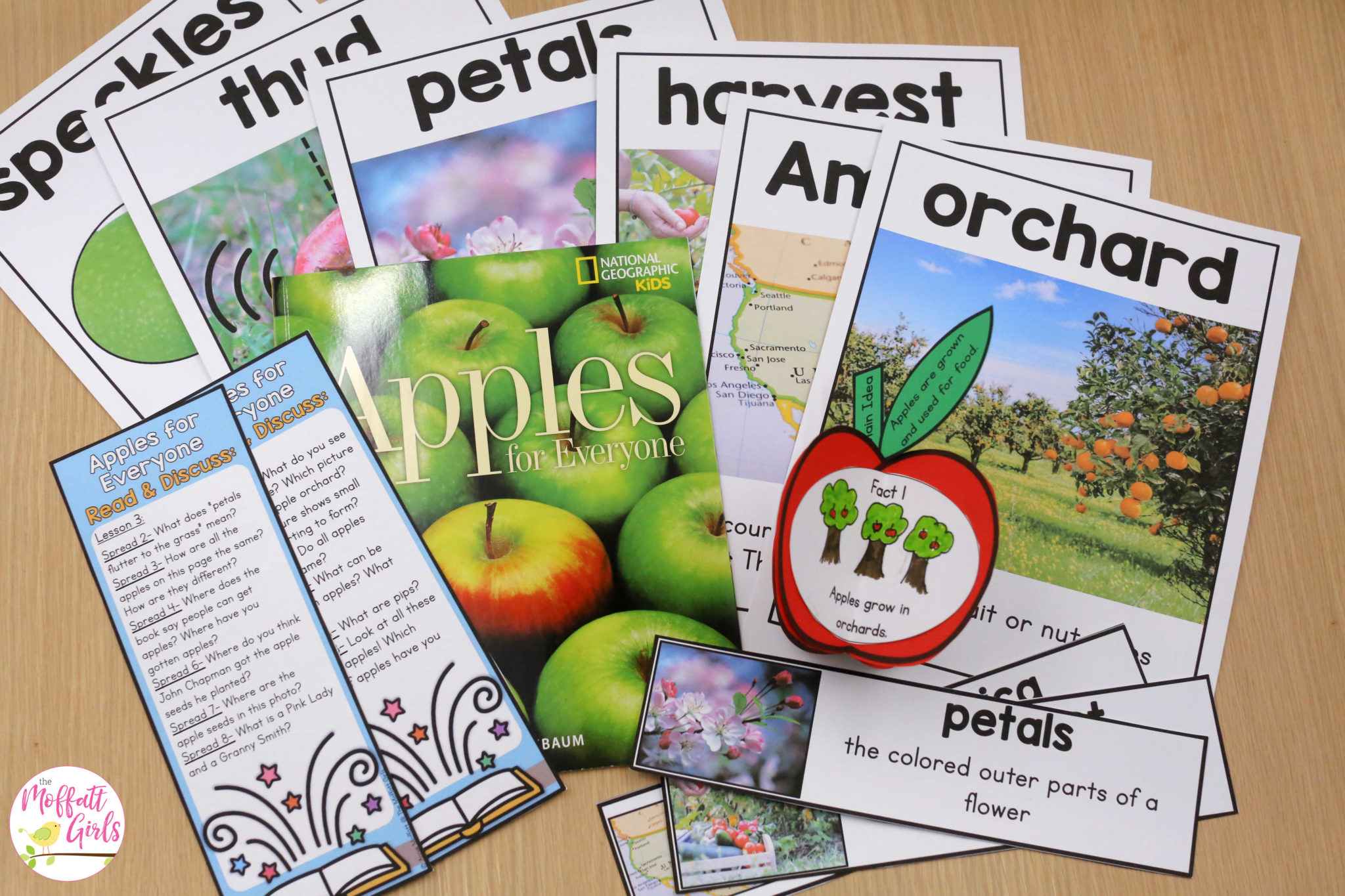
Book 7: Pancakes for Breakfast
This book is an adorable wordless picture book. But wait, how can you teach reading comprehension in kindergarten using a wordless picture book? Oh, I’m so excited to show you how! There are plenty of ways that you can incorporate the same concepts that have already been taught in the previous lessons, even without the words. Using a wordless picture book gives students the opportunity to explain what it is they see and put it into words.
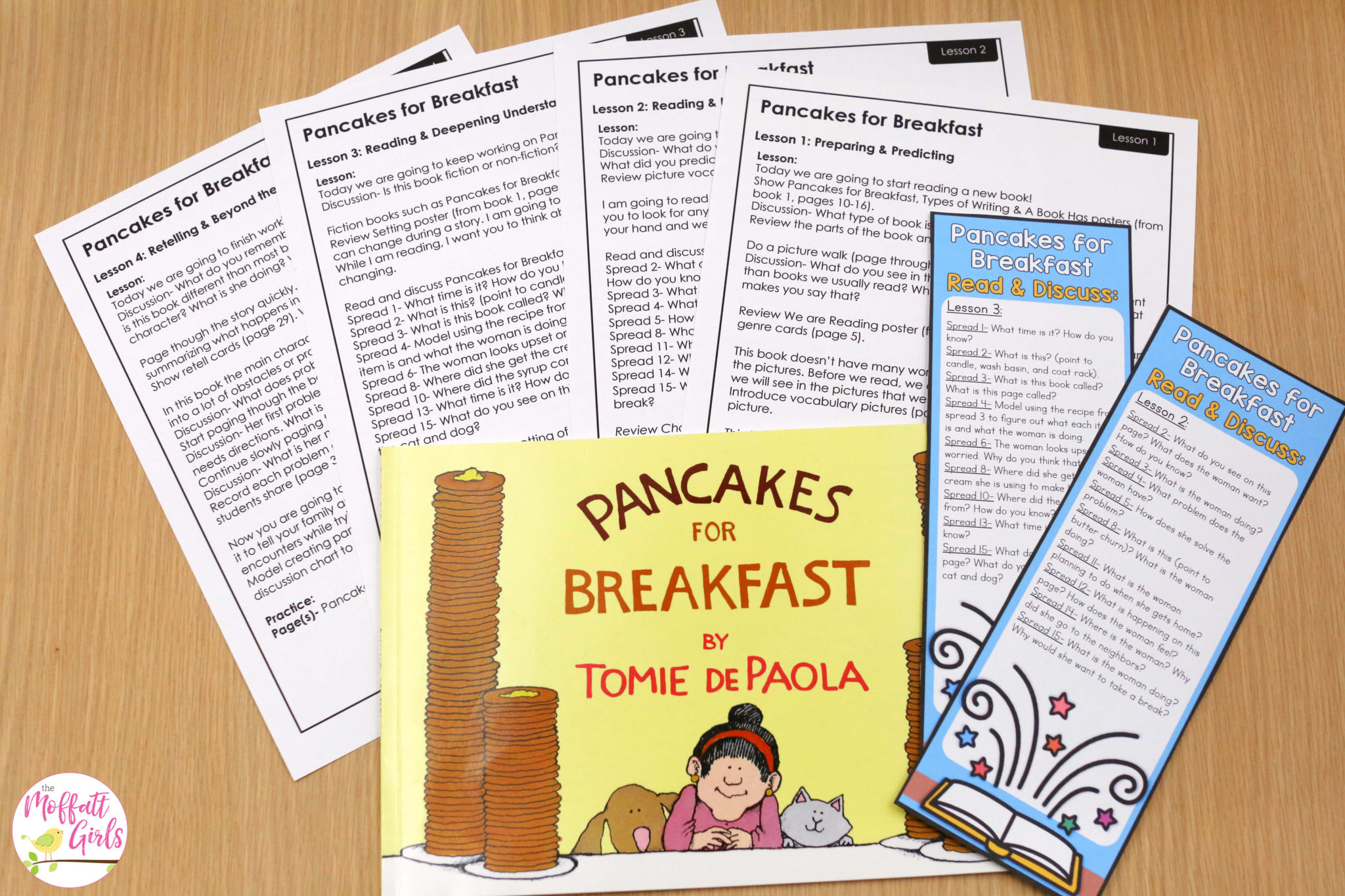
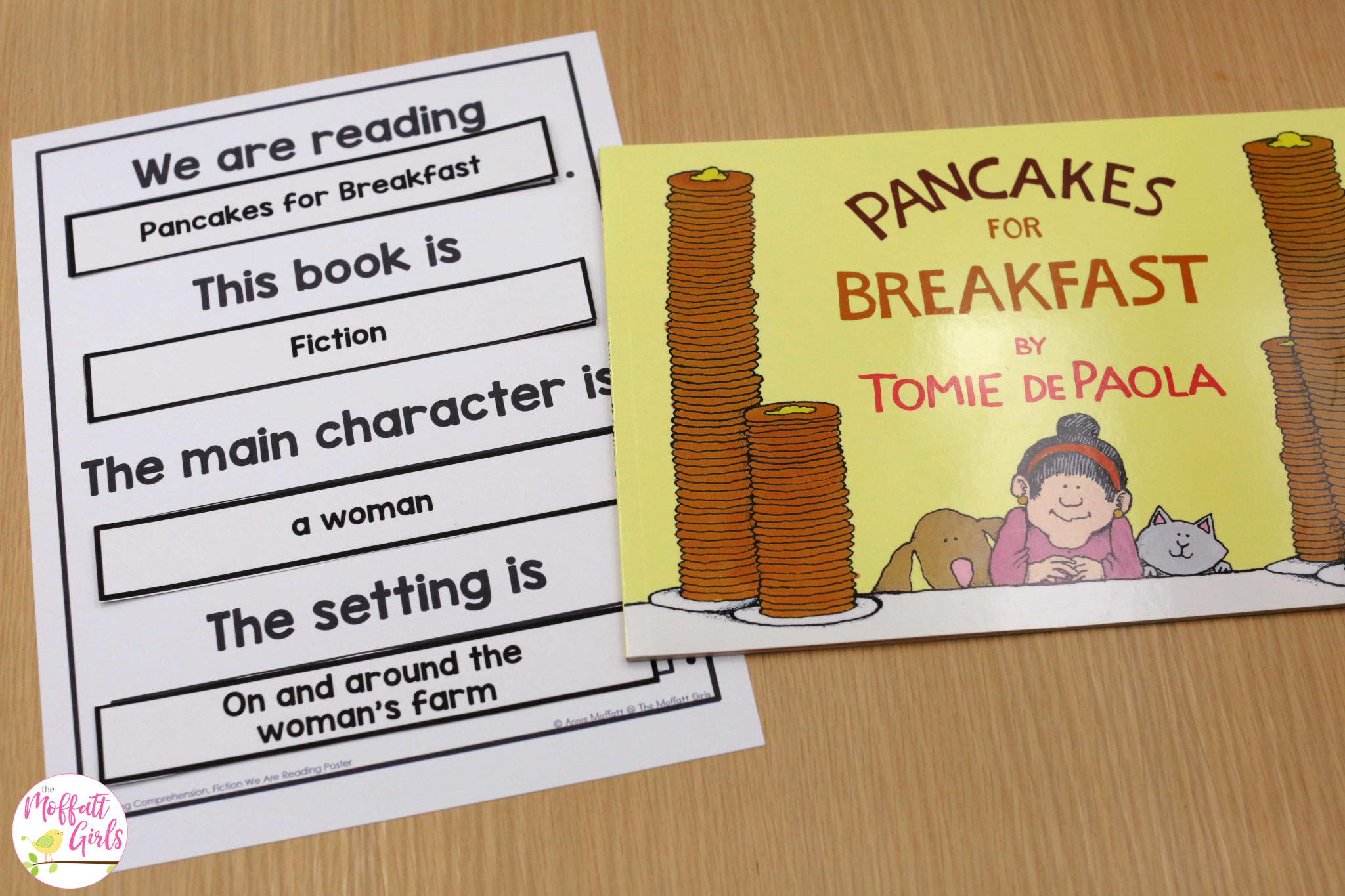
Vocabulary
Students will still need some help identifying what it is they are looking at while “reading” Pancakes for Breakfast. That’s why these words should be introduced before diving into the book.
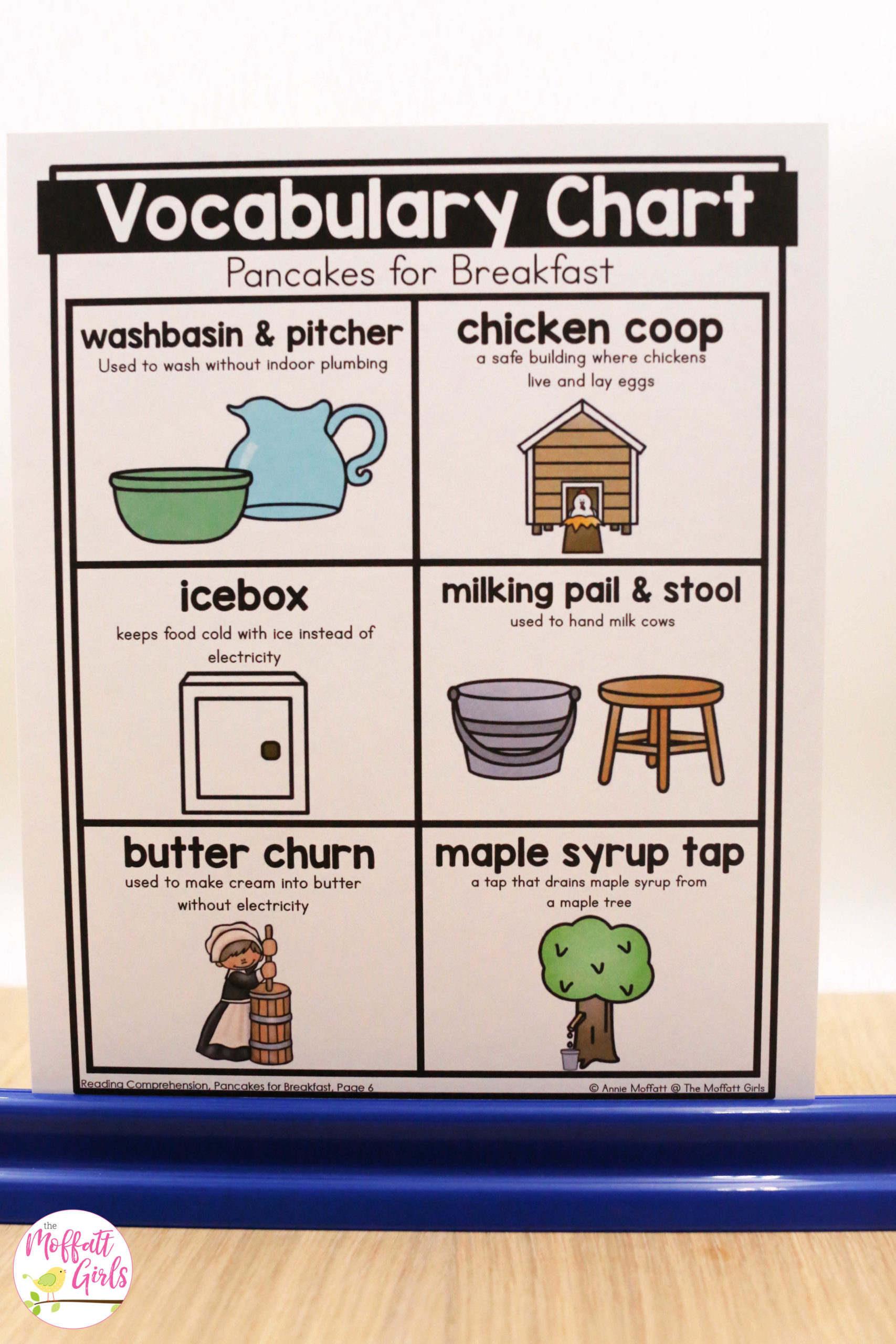
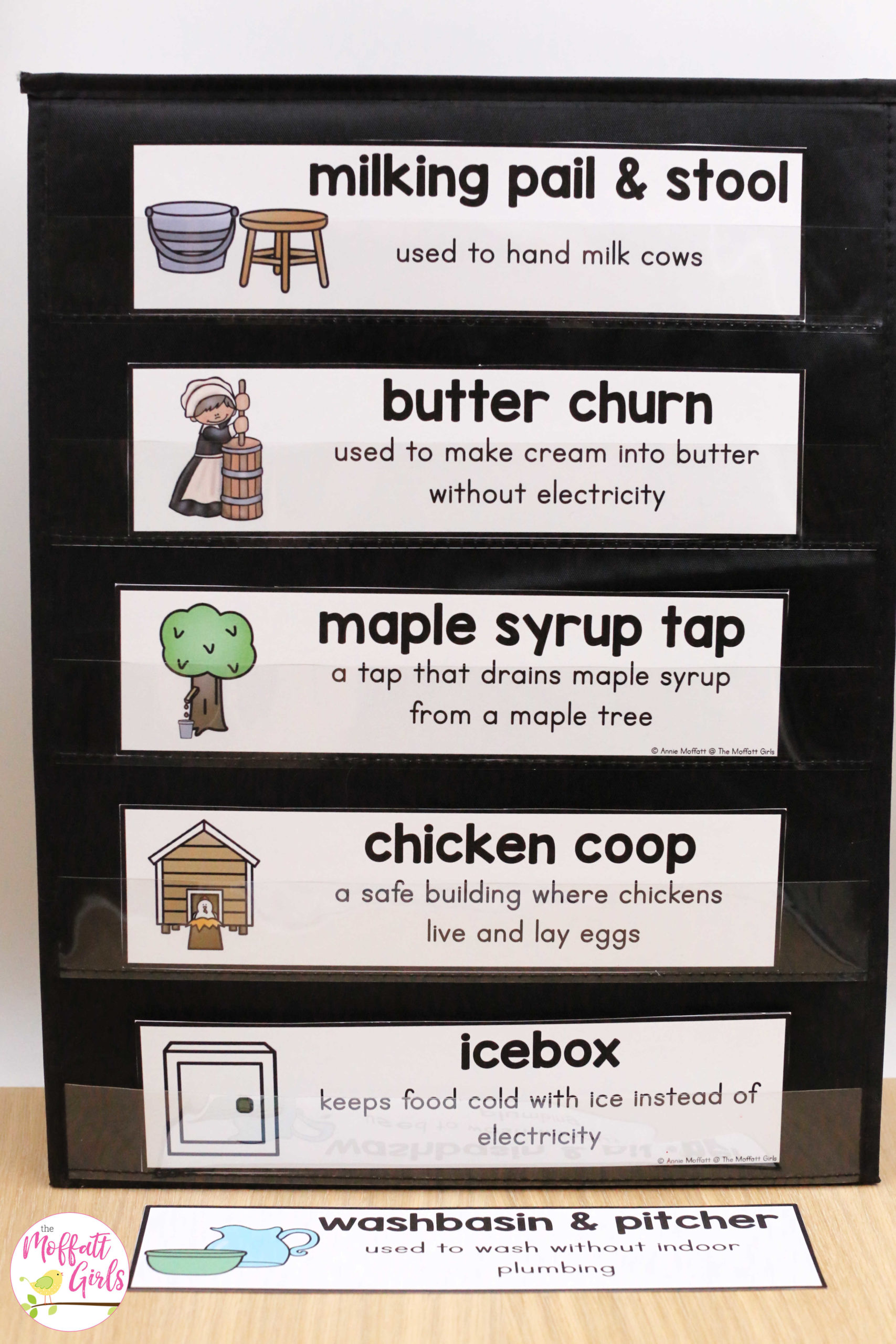
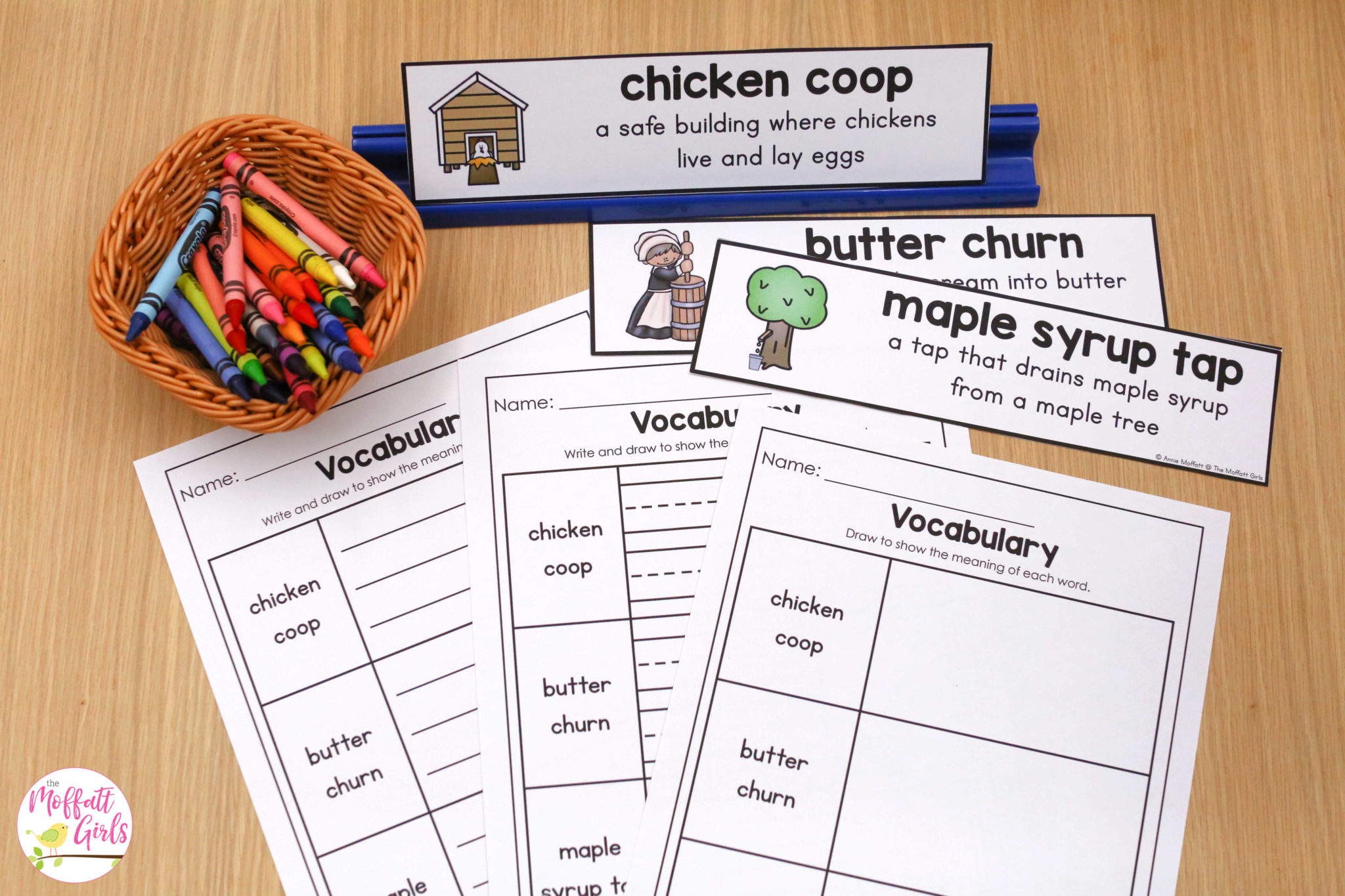
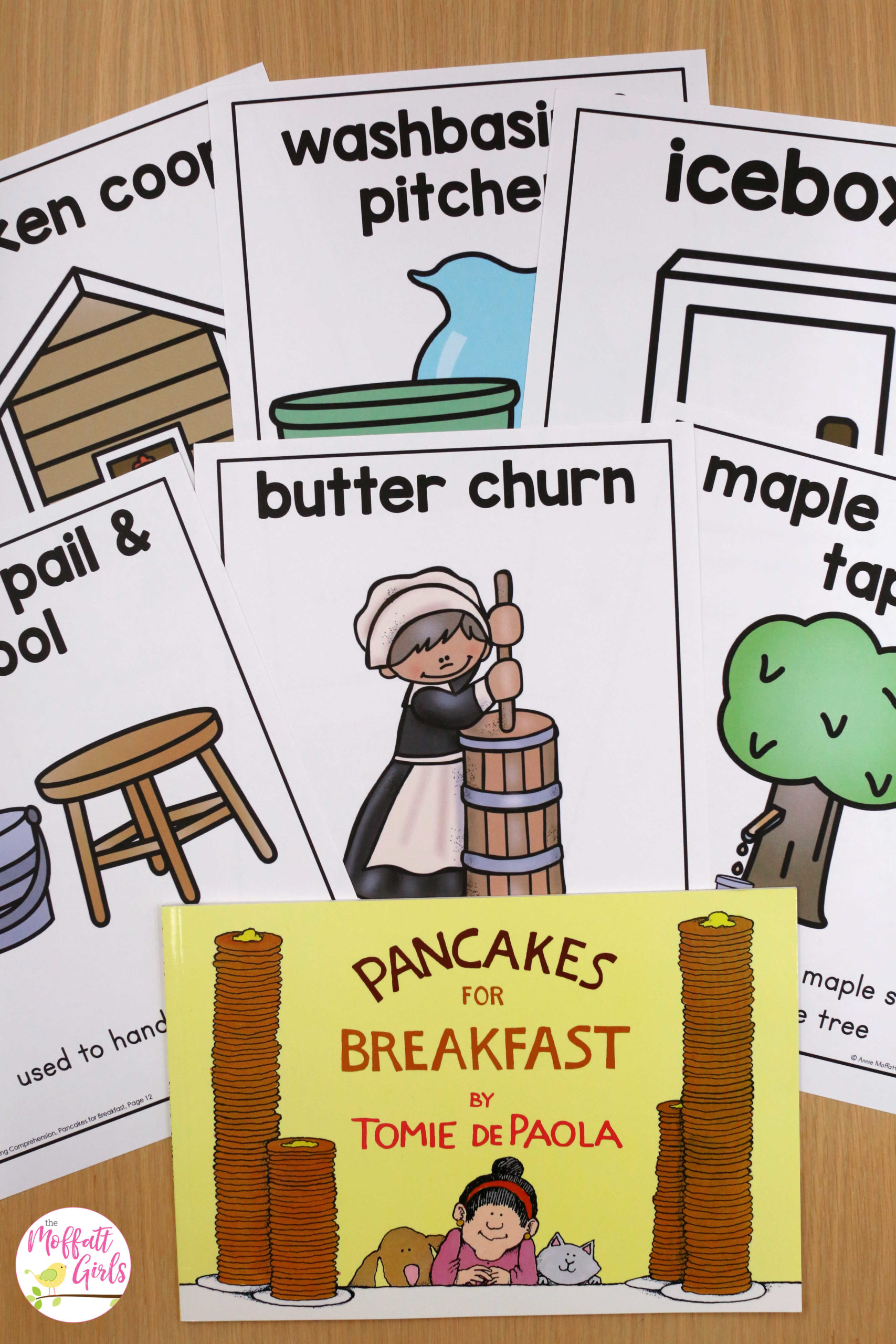
Making Non-Fiction Connections
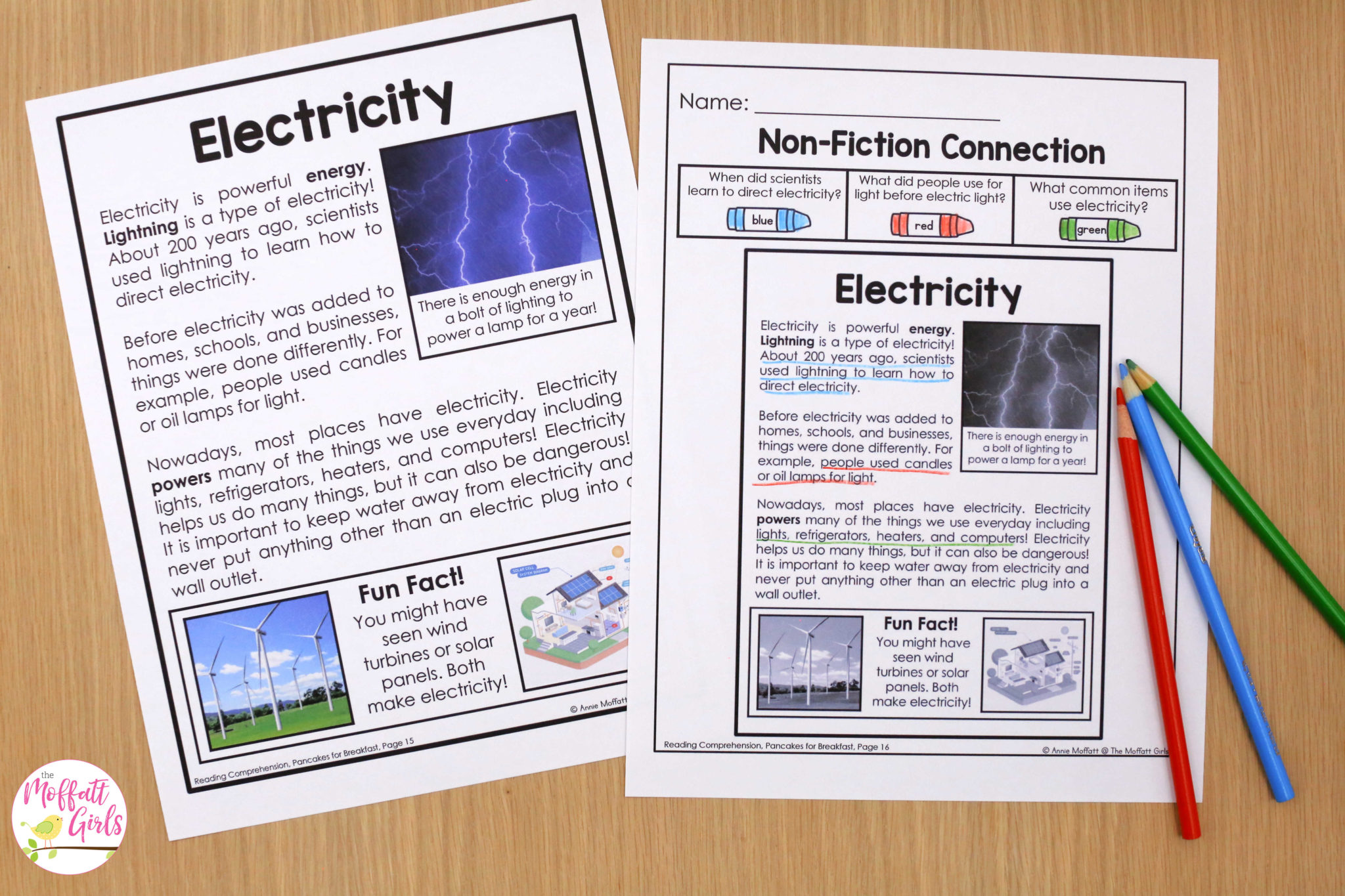
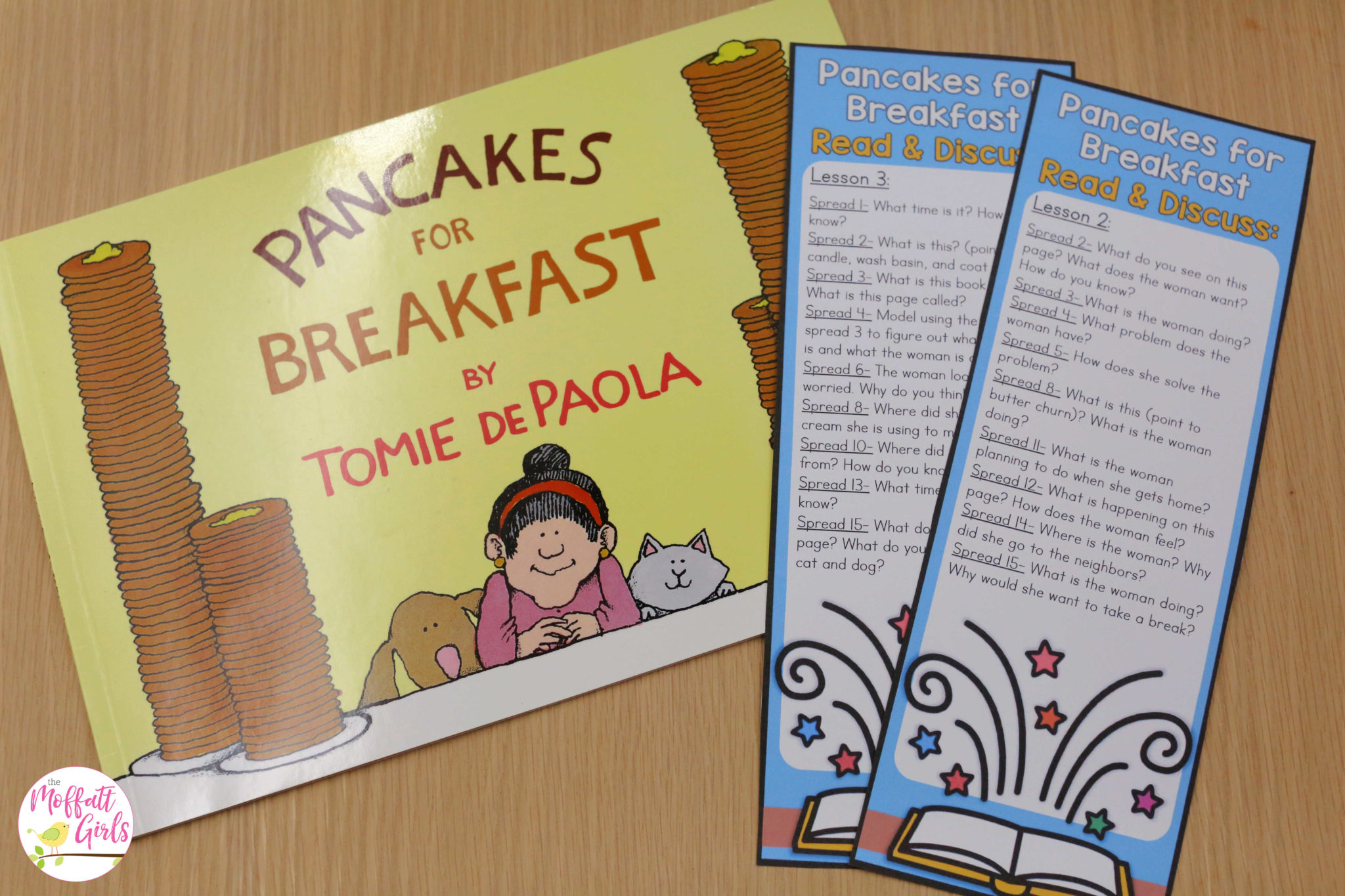
Extension Activity
As the character in the book is working hard to gather the items, students have the chance to see where the items are coming from. This extension activity helps build understanding that things we have didn’t just appear, but they were made somewhere somehow.
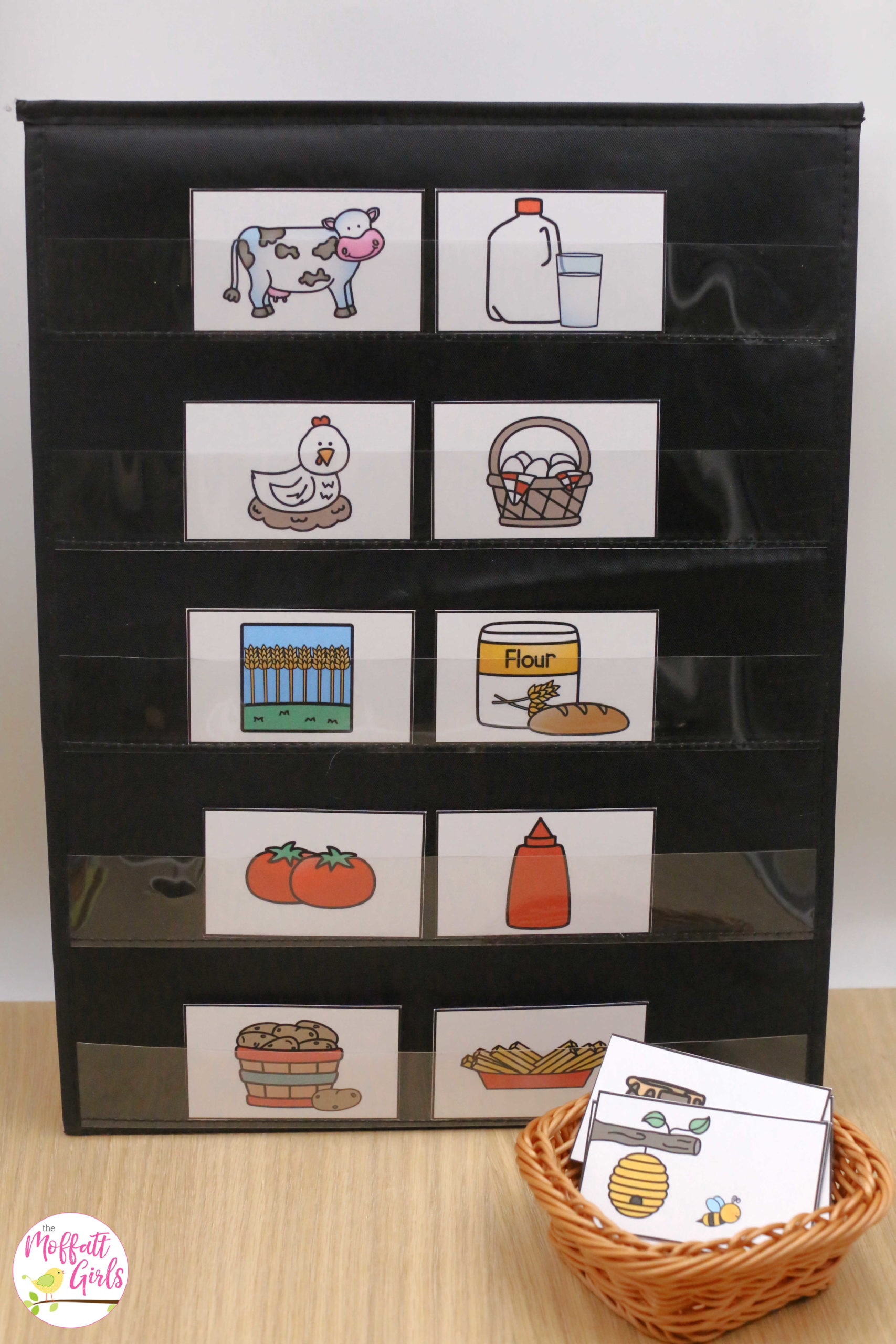
Character Feelings
The main character in the book goes through a variety of emotions as she is working at preparing pancakes. The page below helps the reader build empathy for her.
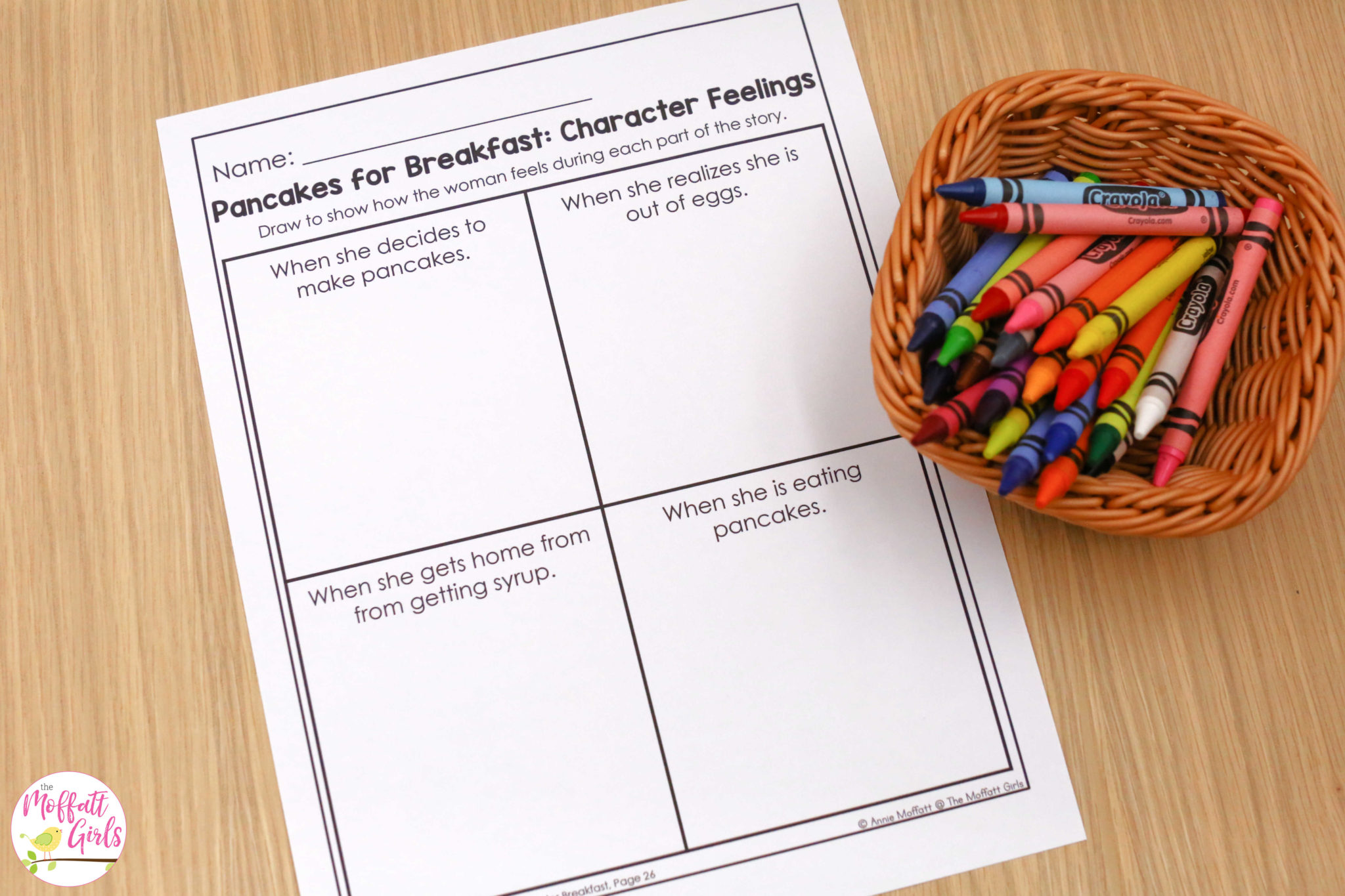
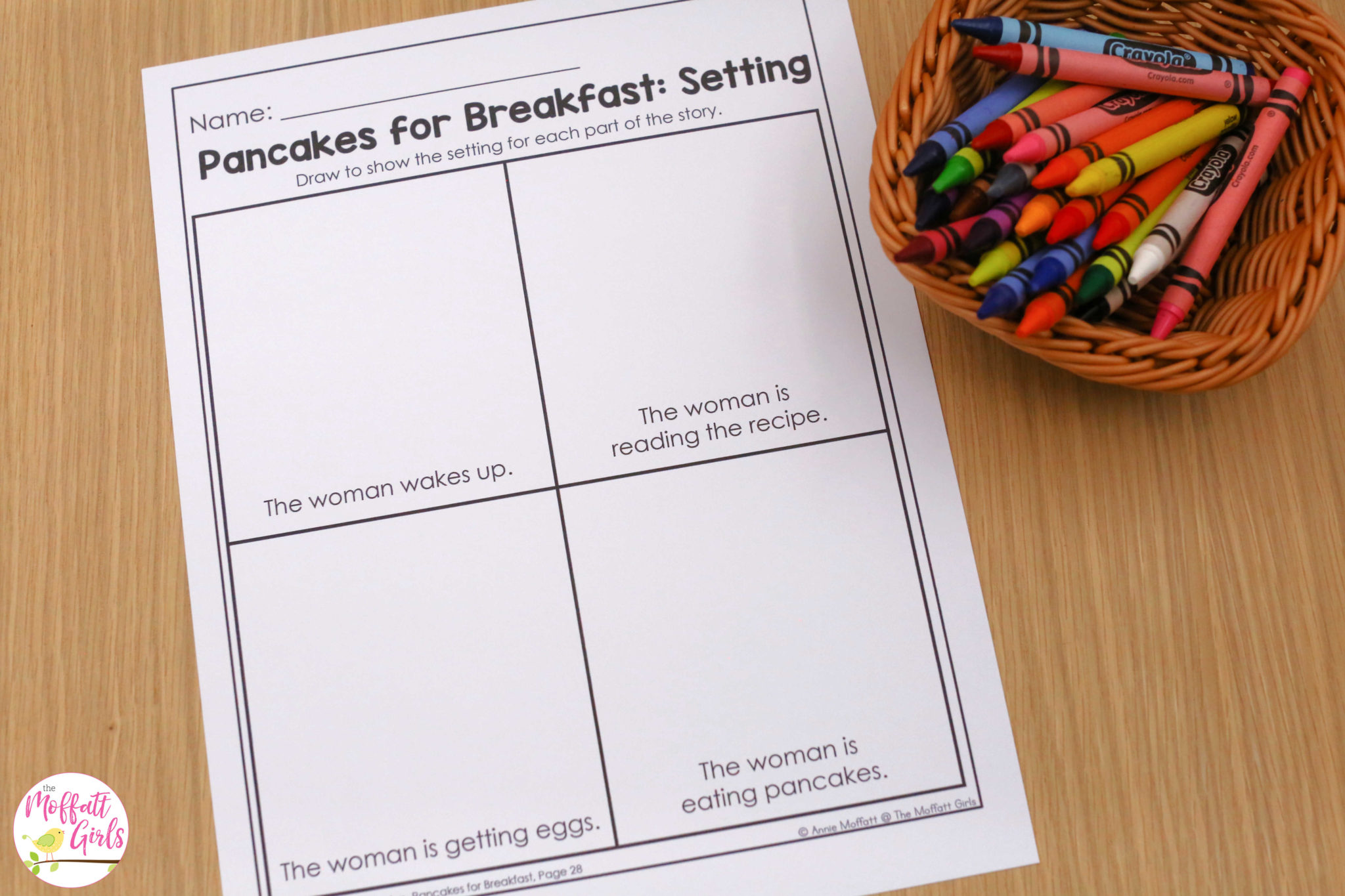
Sequencing Events in the Story
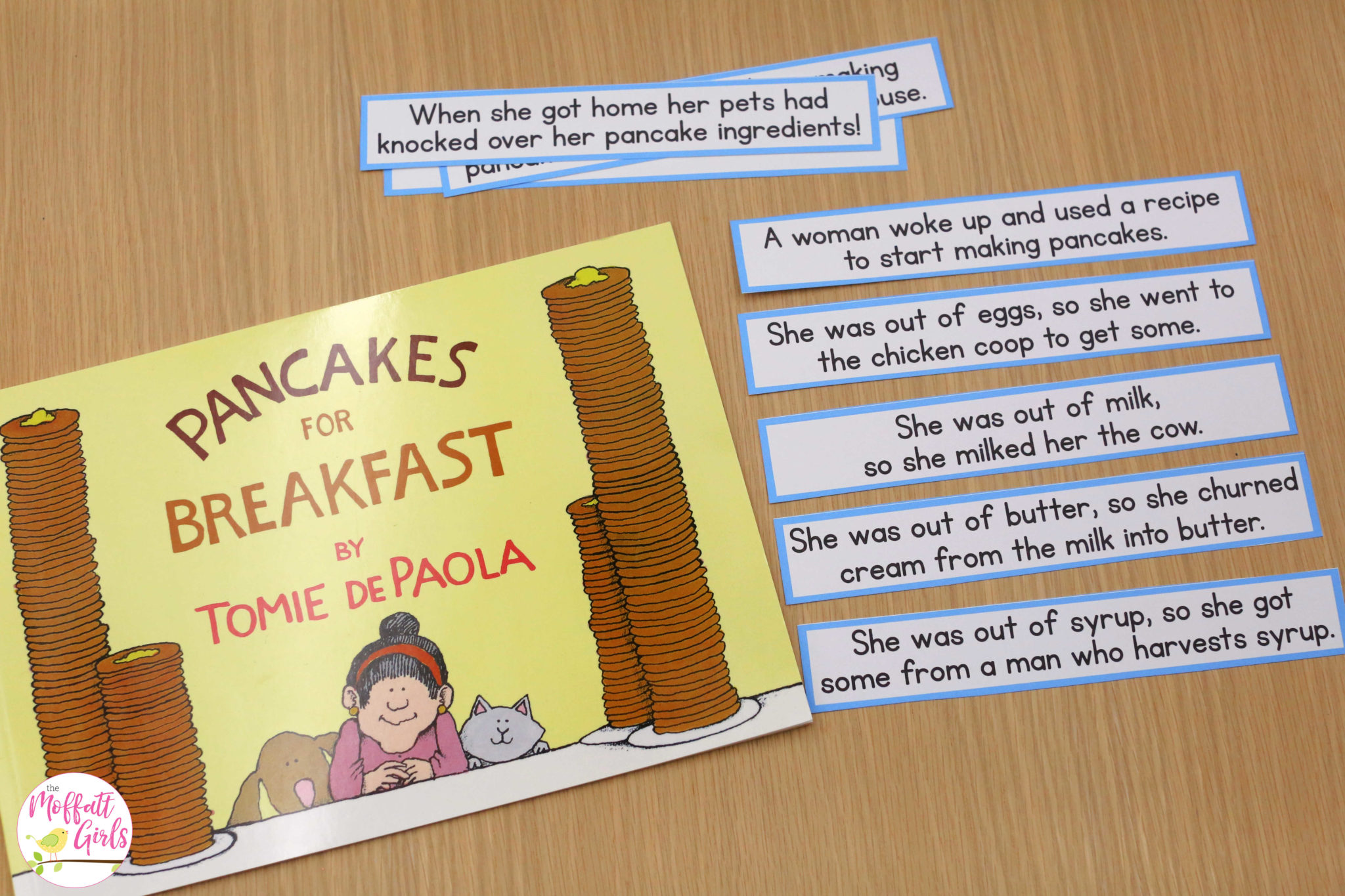
Pancakes for Breakfast Craft
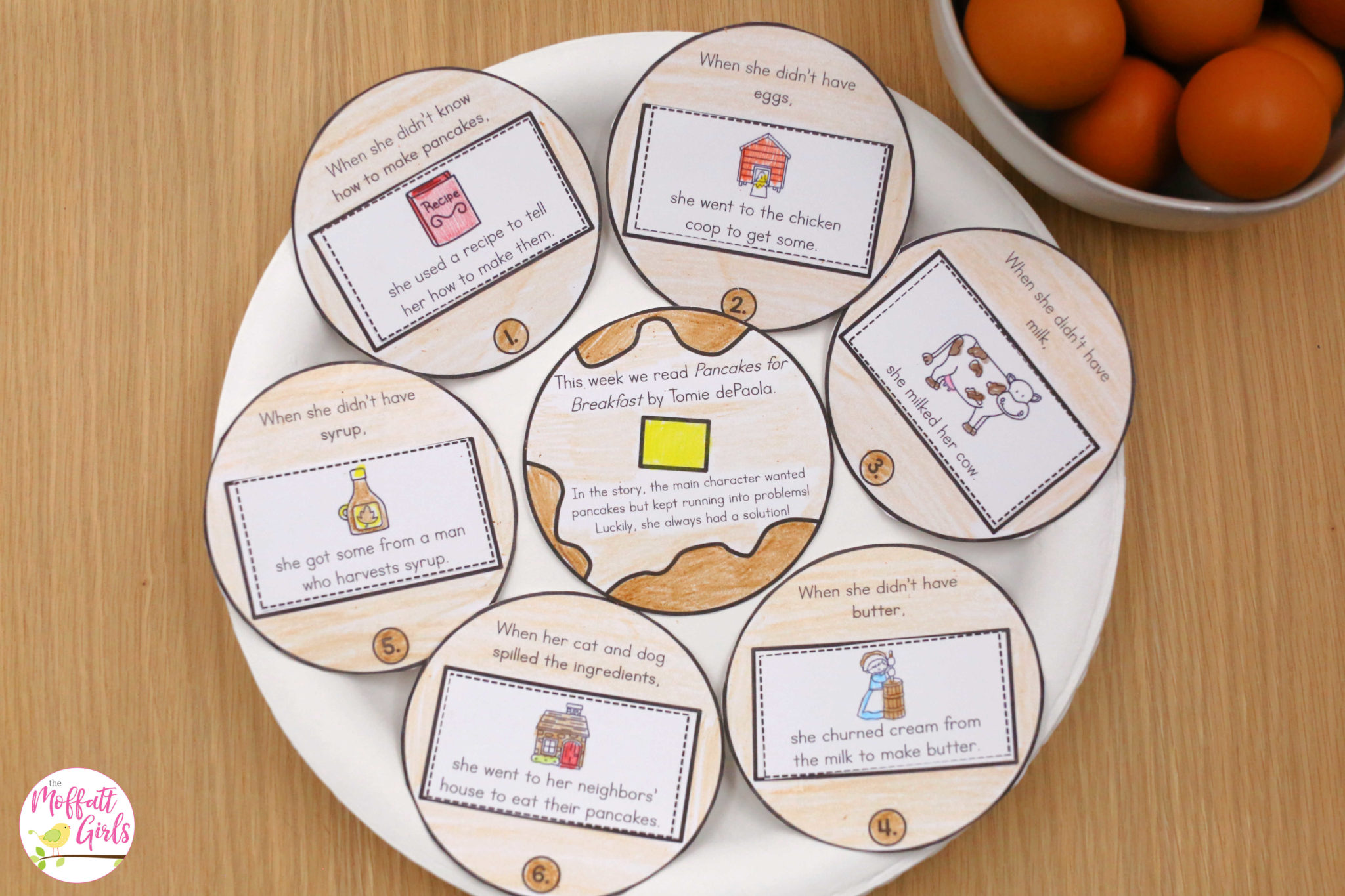
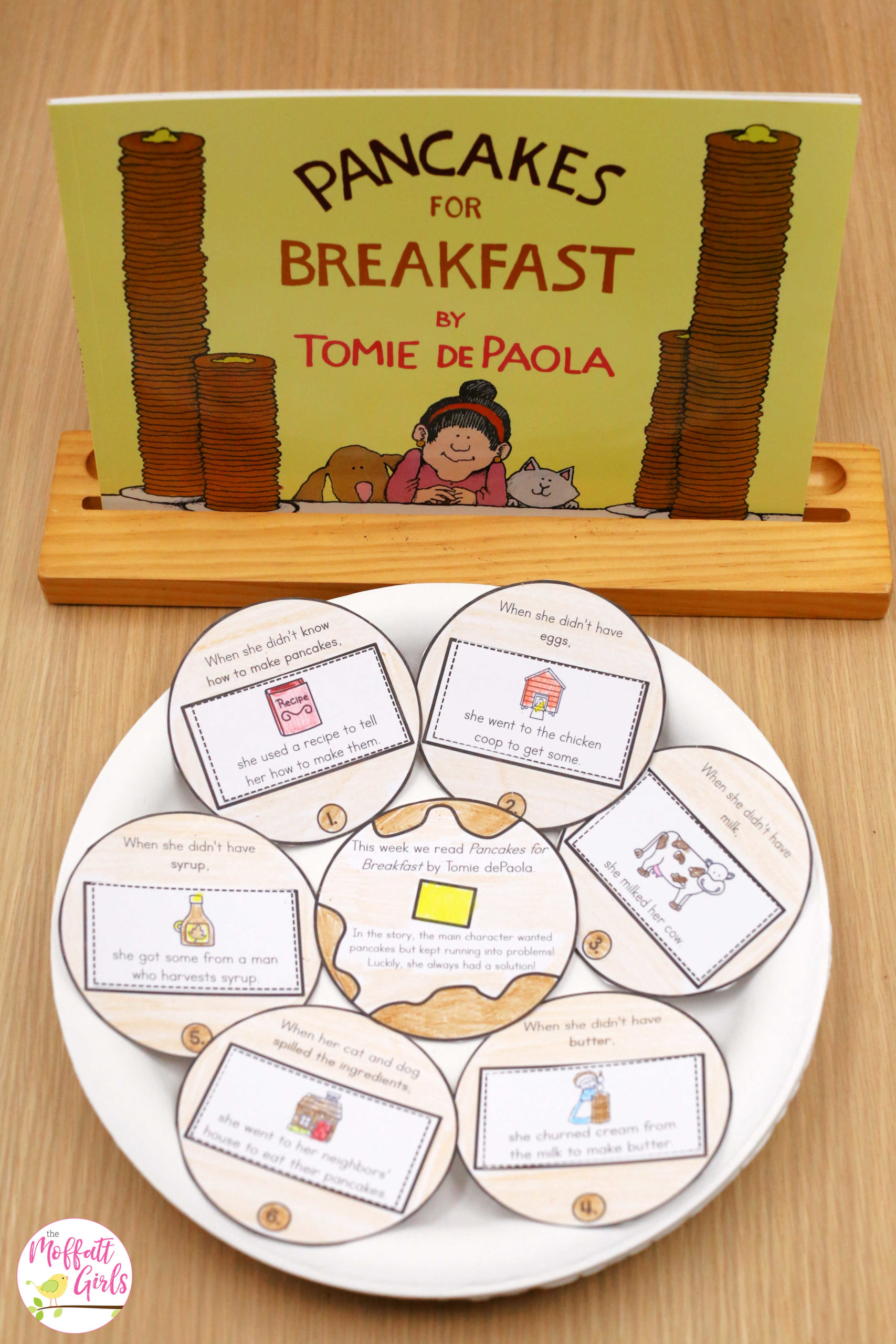
Book 8: From Seed to Pumpkin
This is a non-fiction book that outlines the process and the hard work that takes place when a seed turns into a pumpkin.
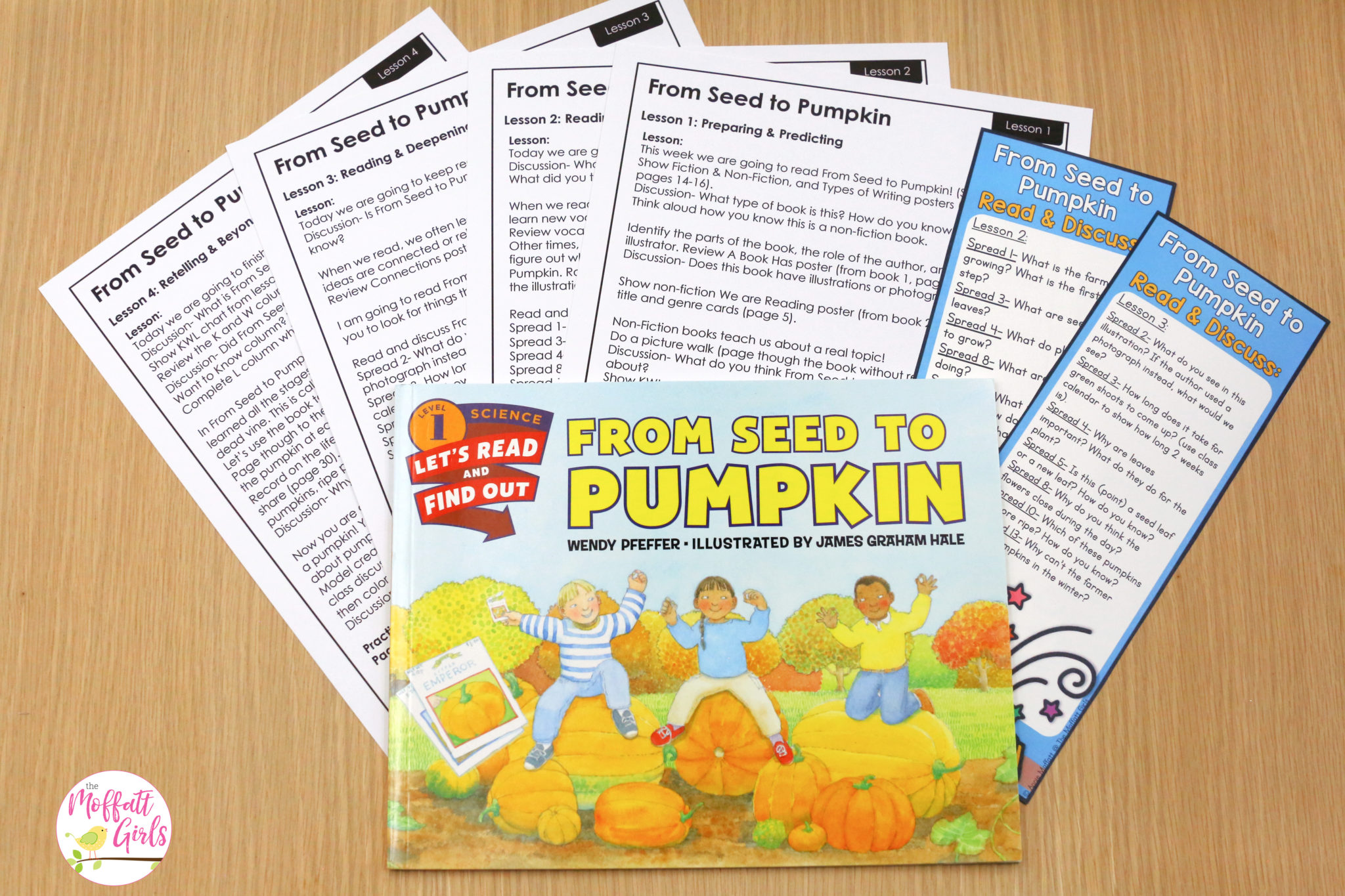
Vocabulary
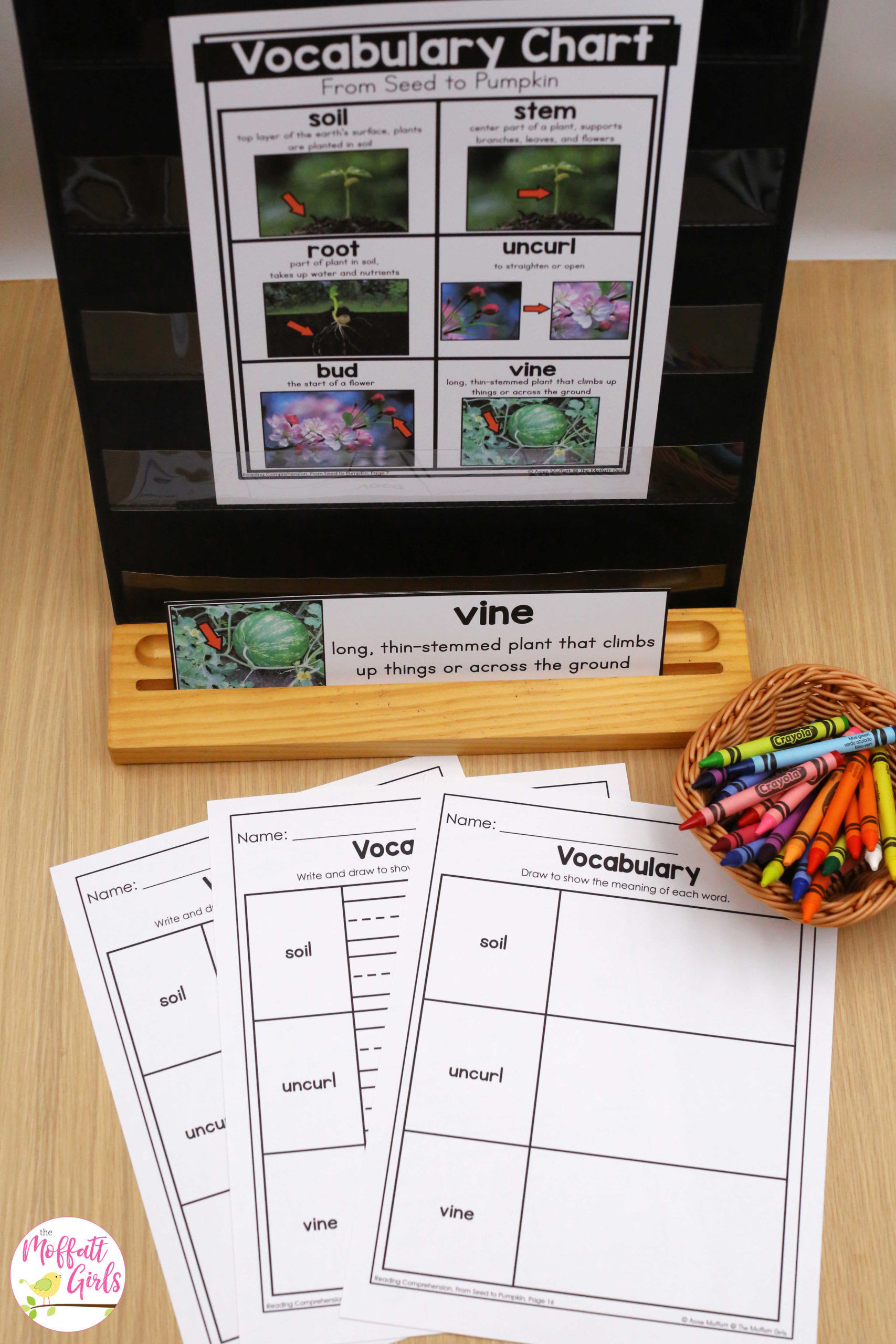
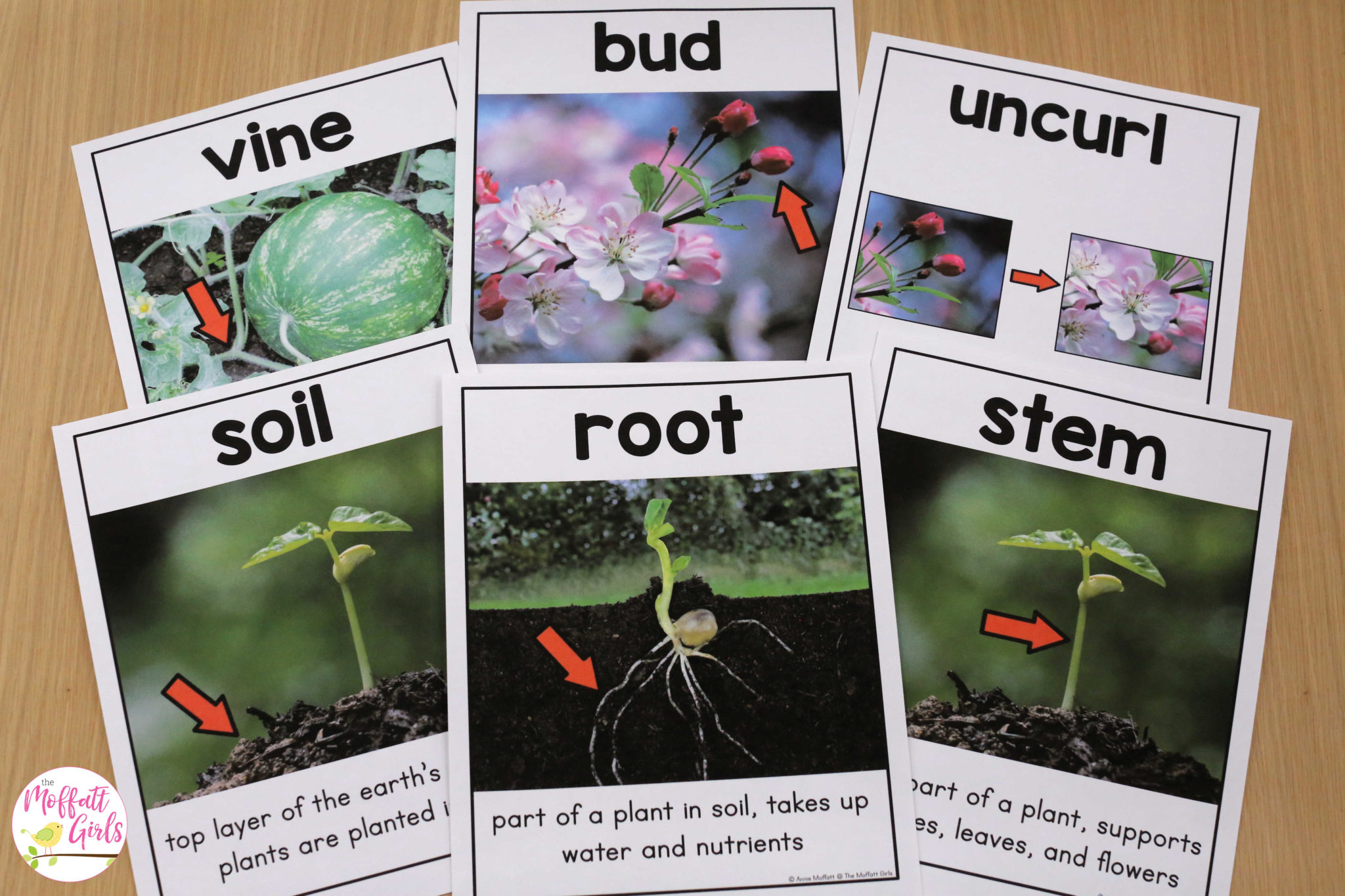
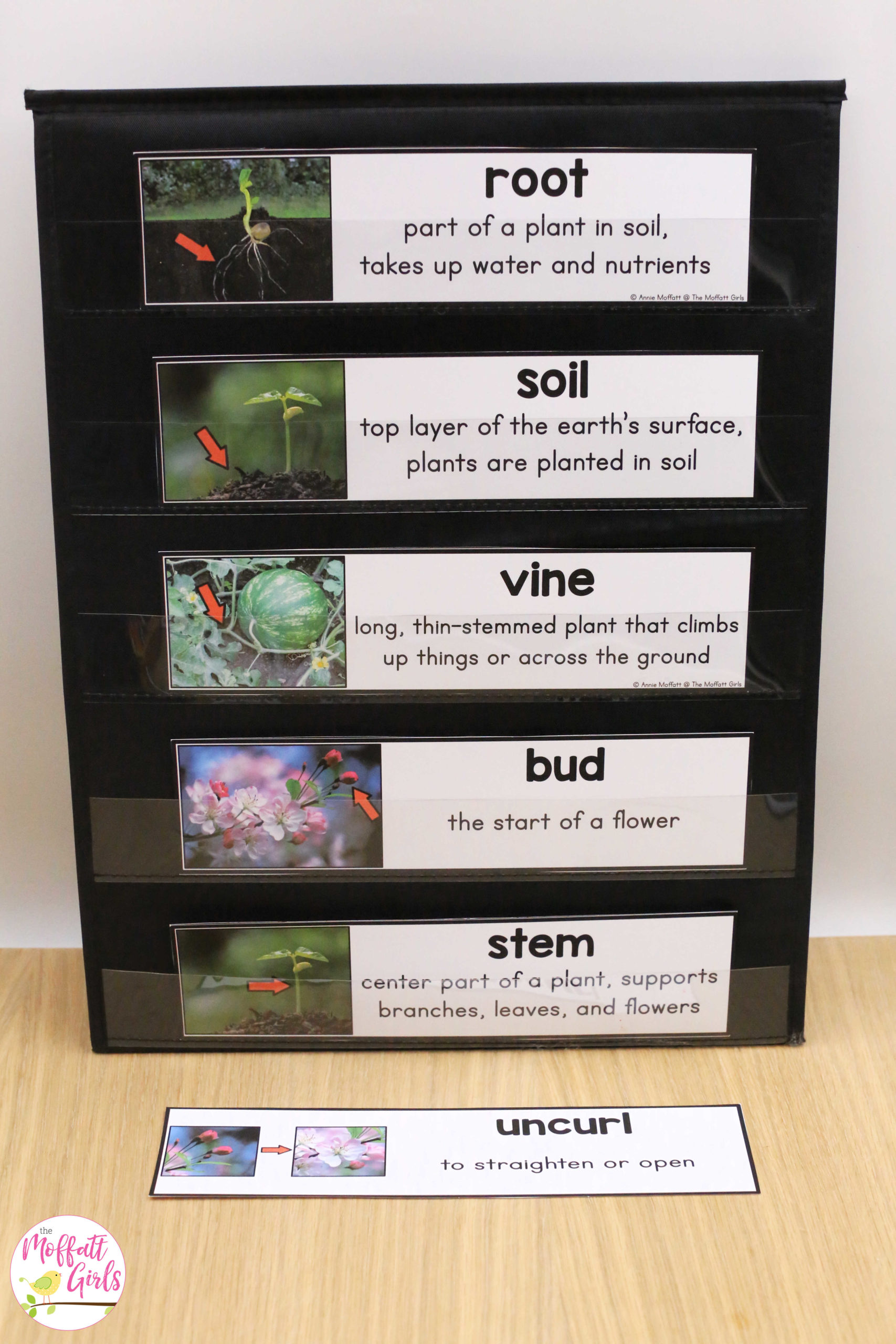
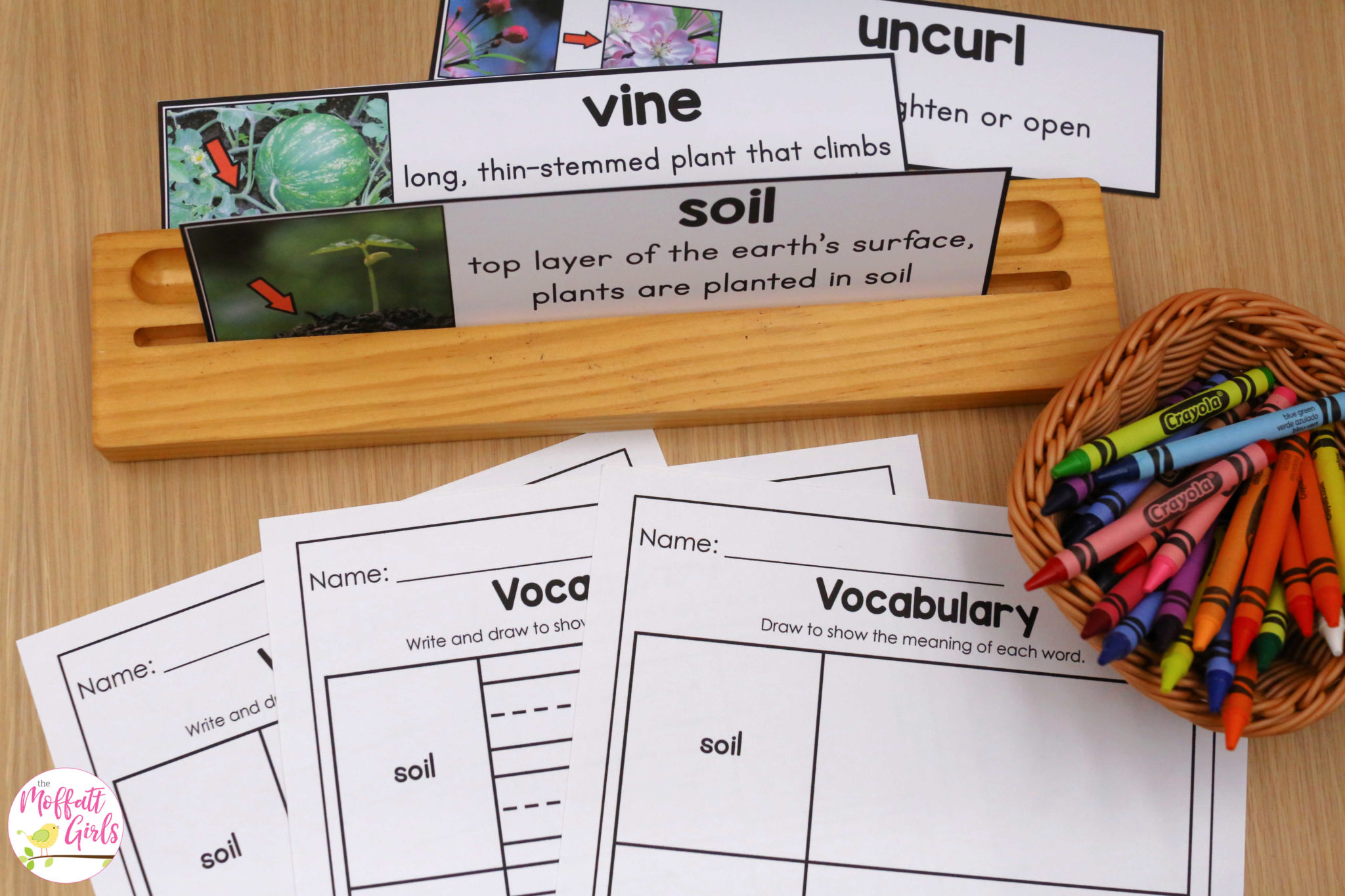
What I Know, Want to Know and Learned
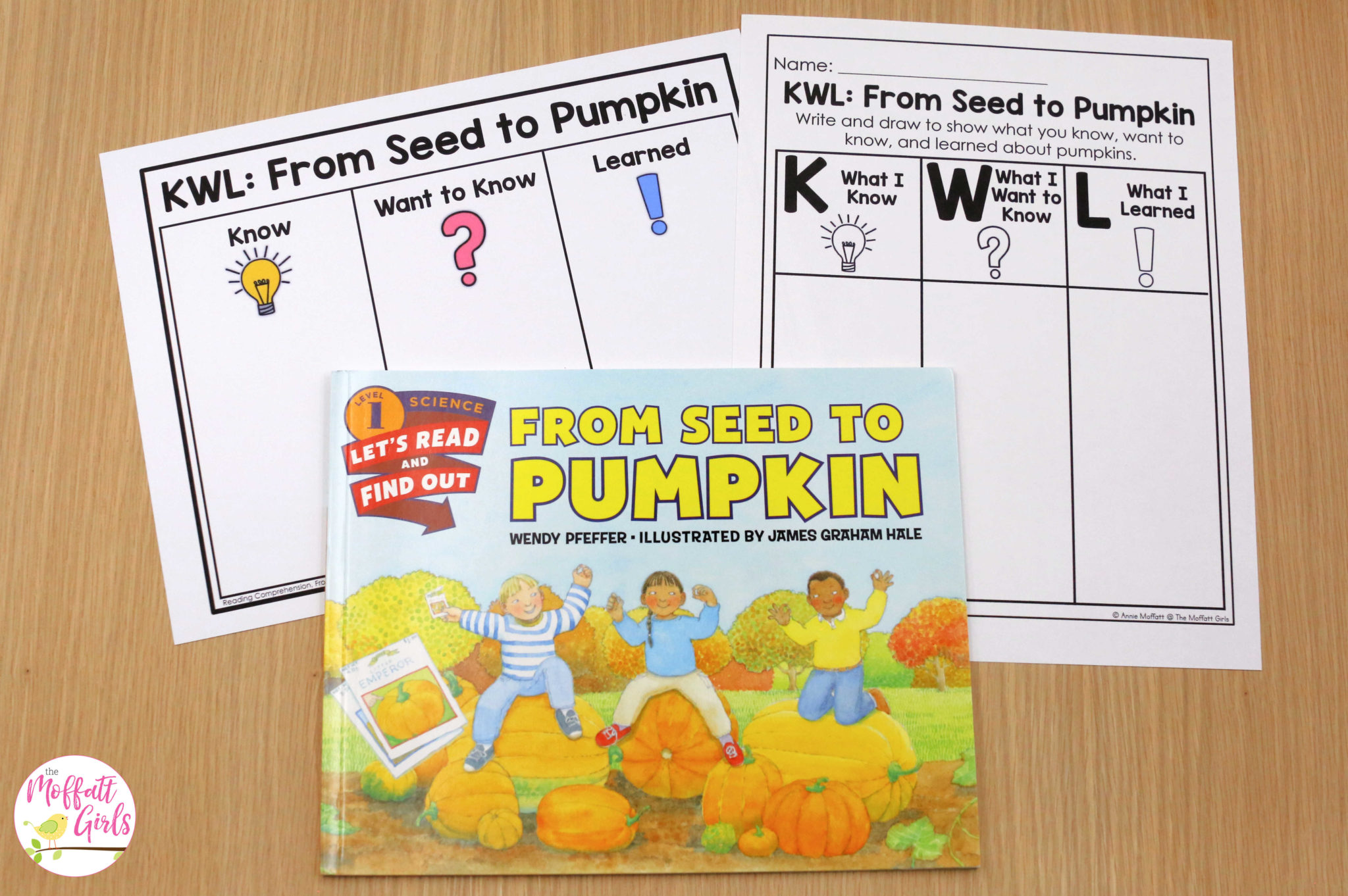
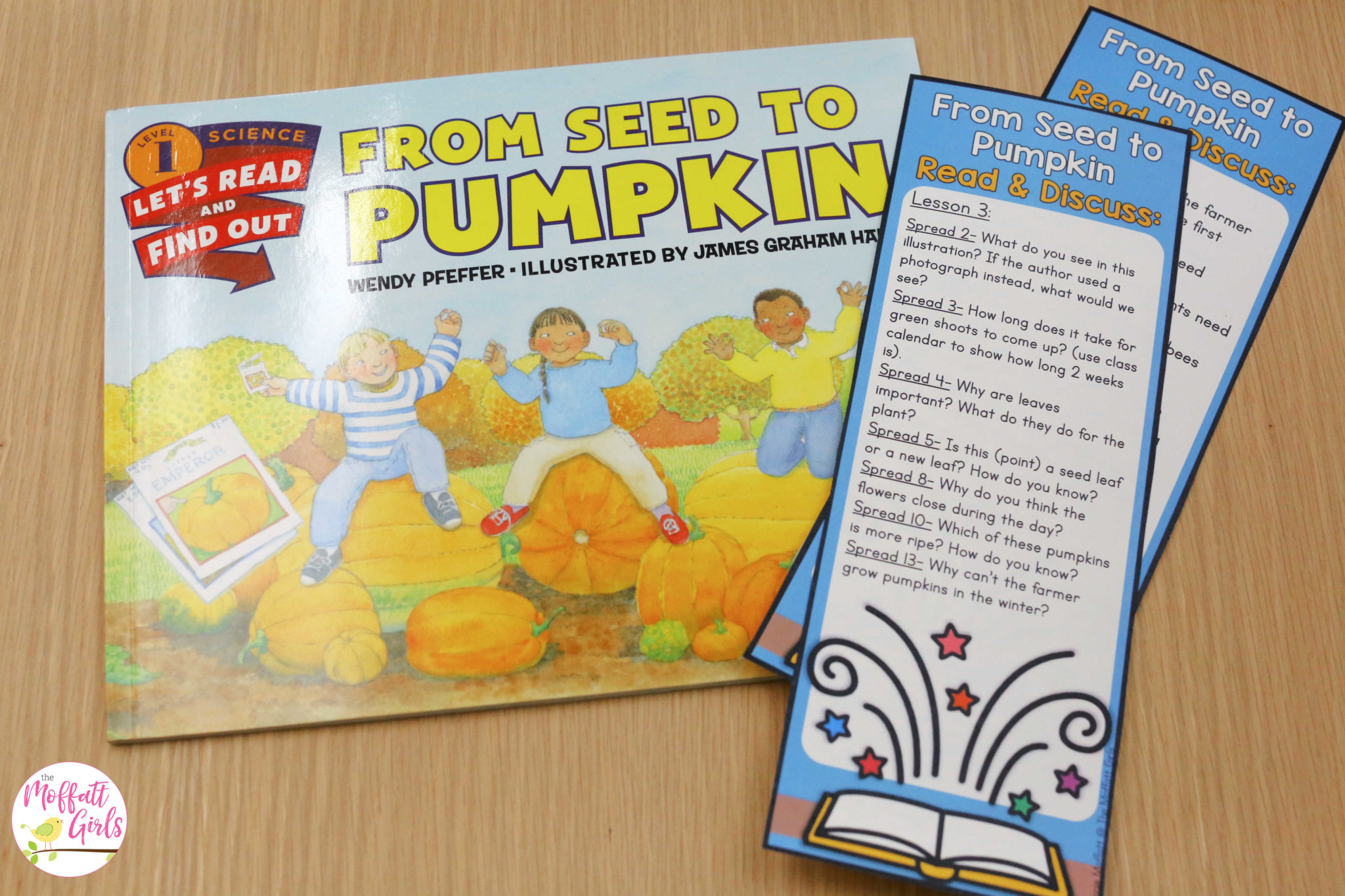
Unknown Words
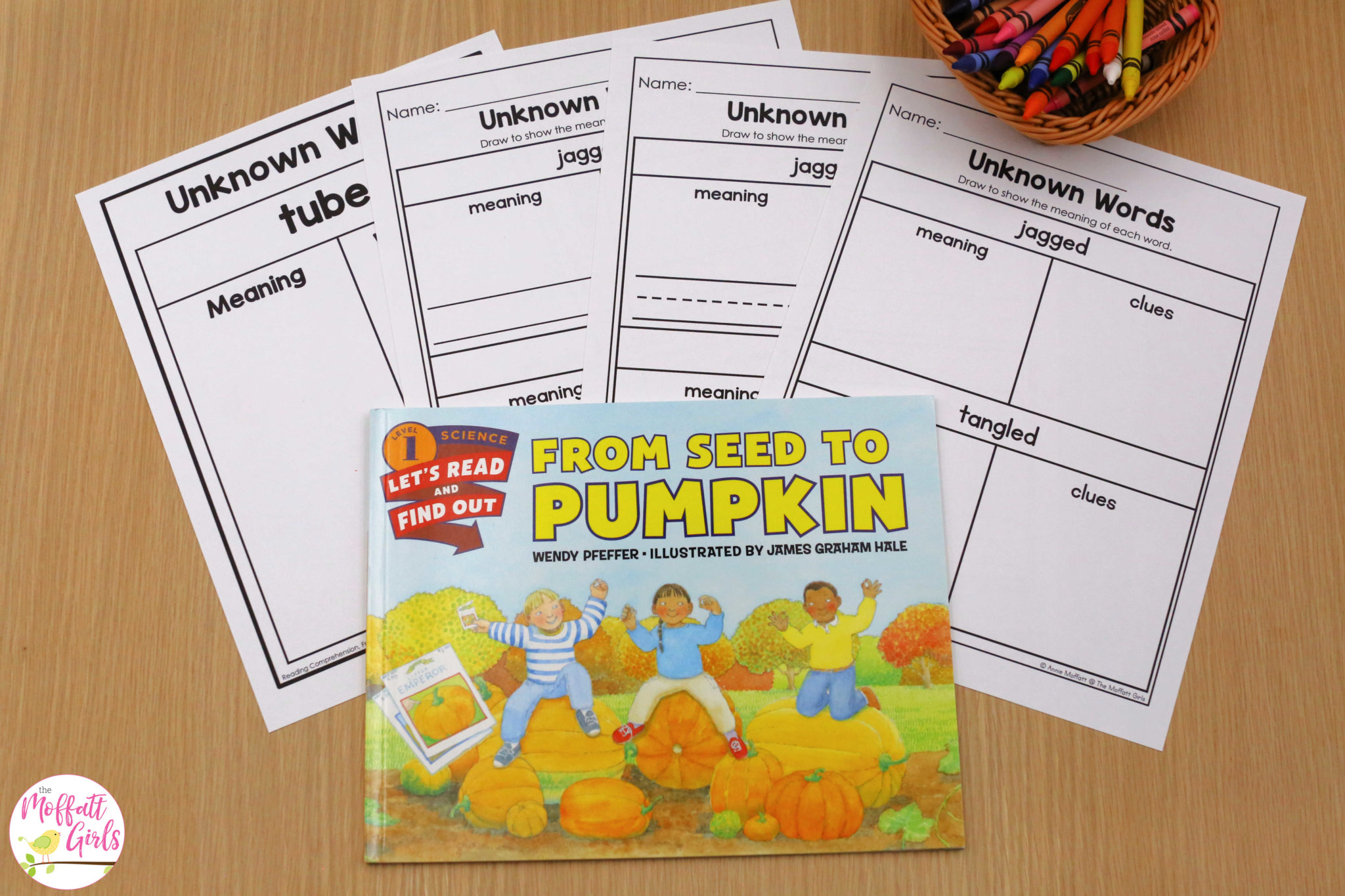
Making Connections
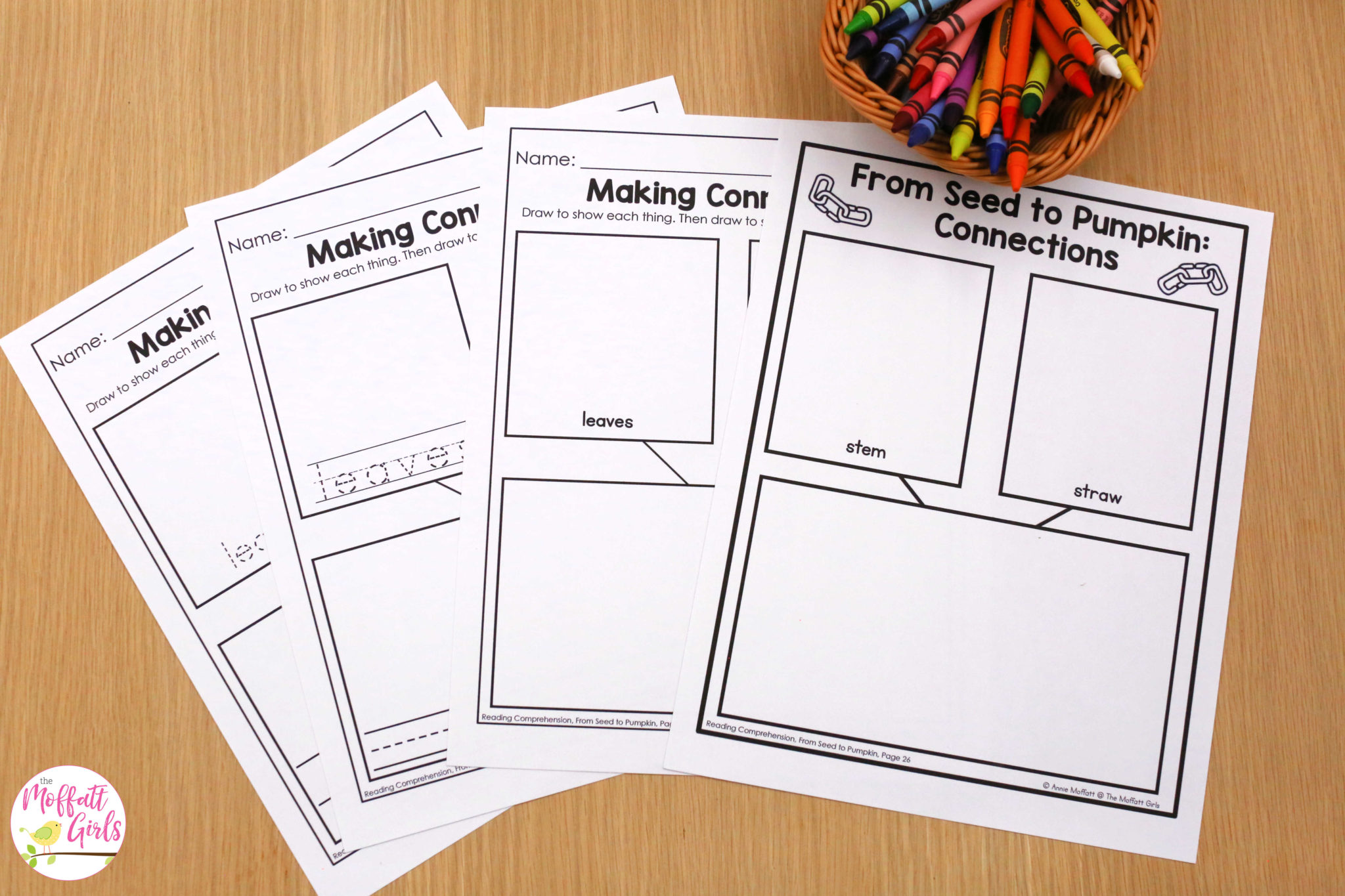
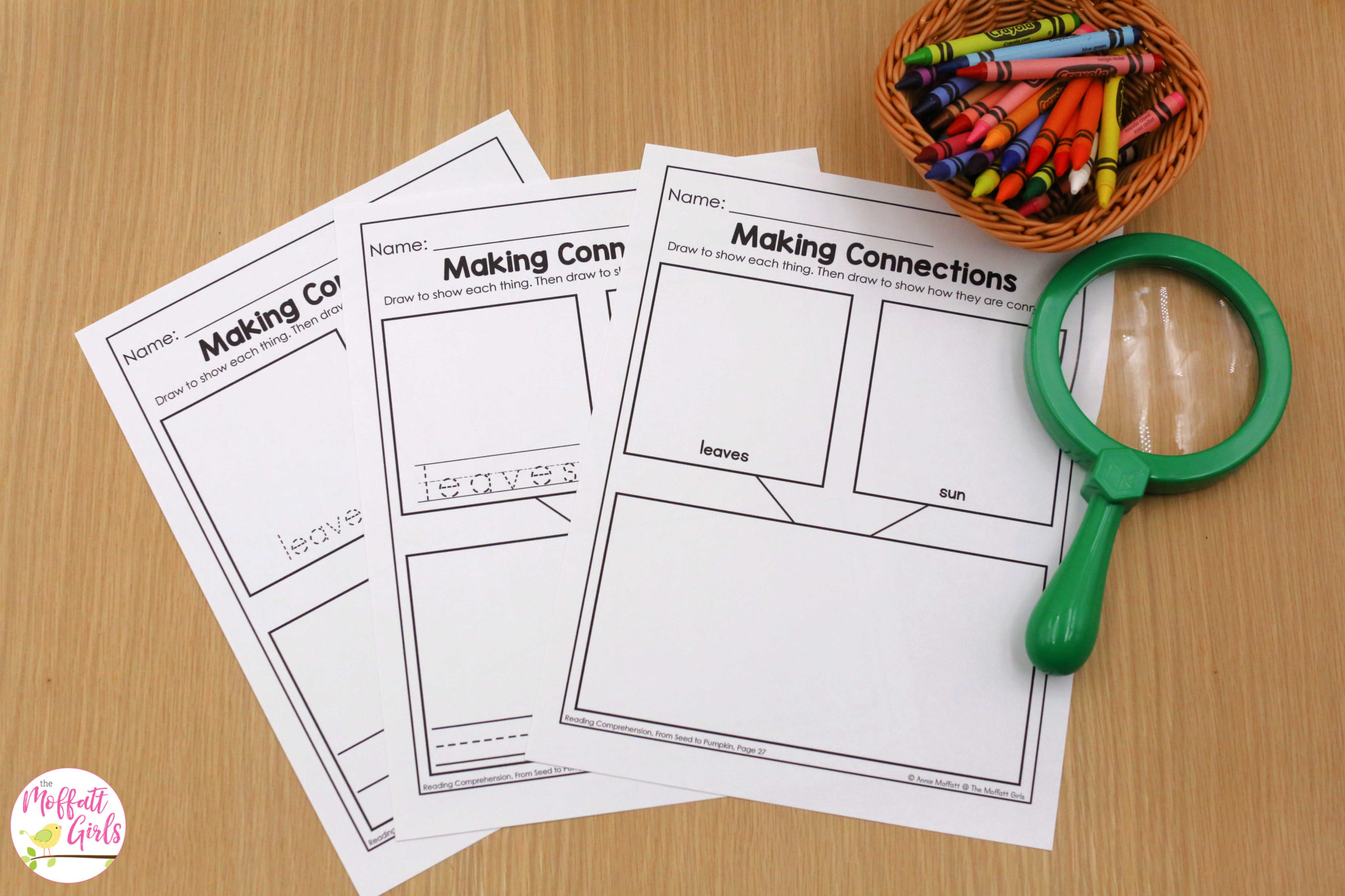
Life Cycle of a Pumpkin
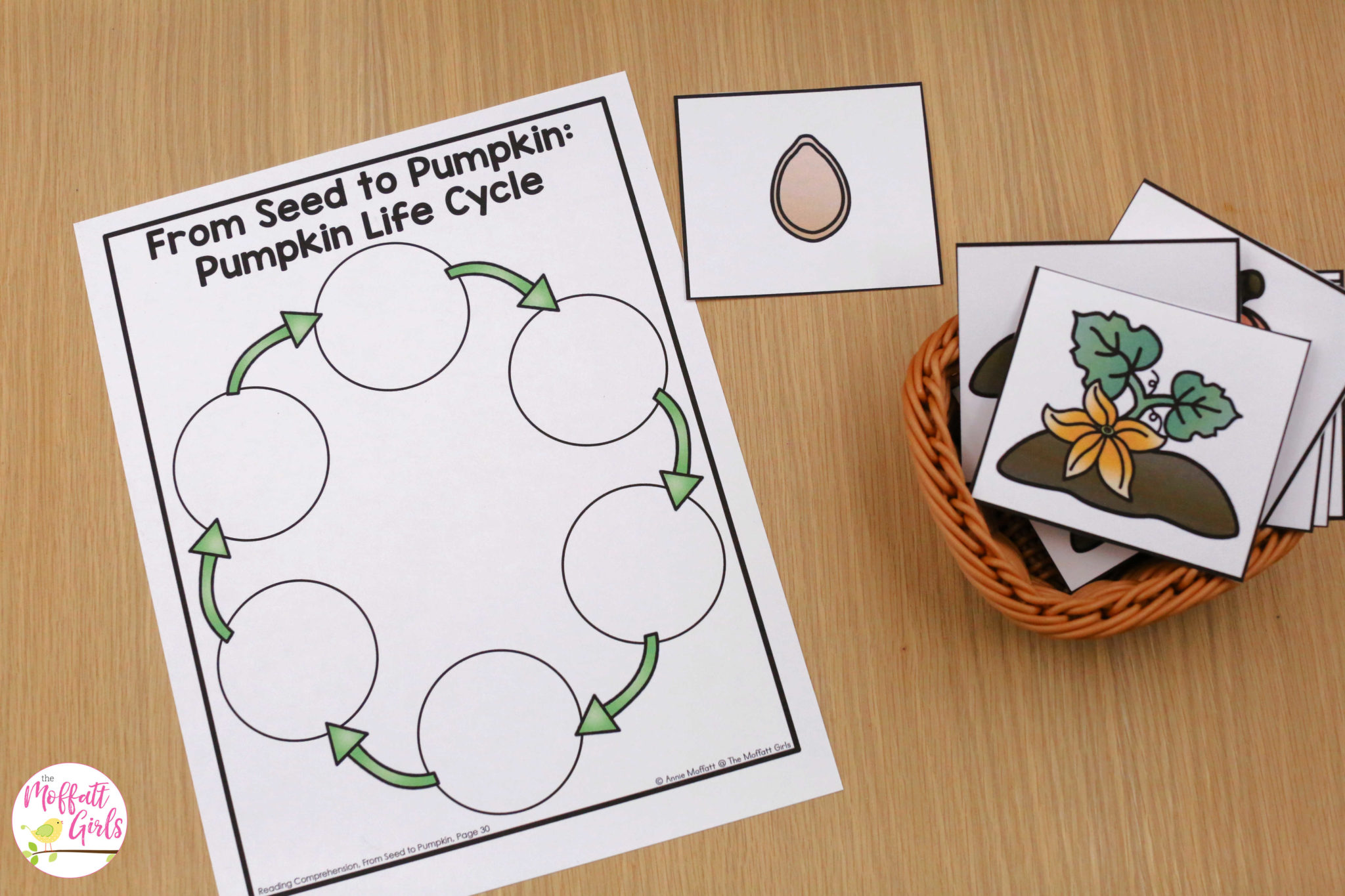
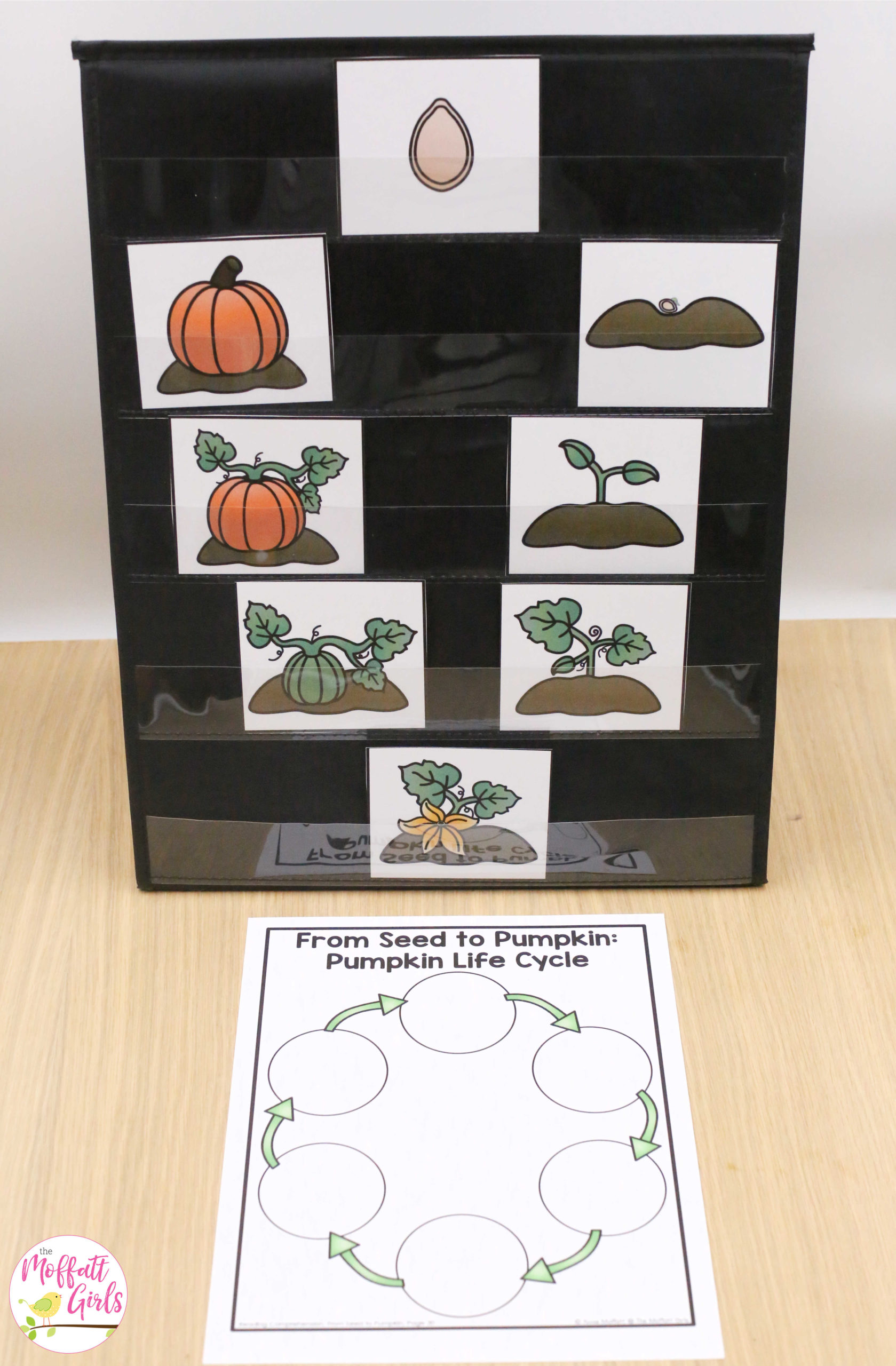
From Seed to Pumpkin Craft
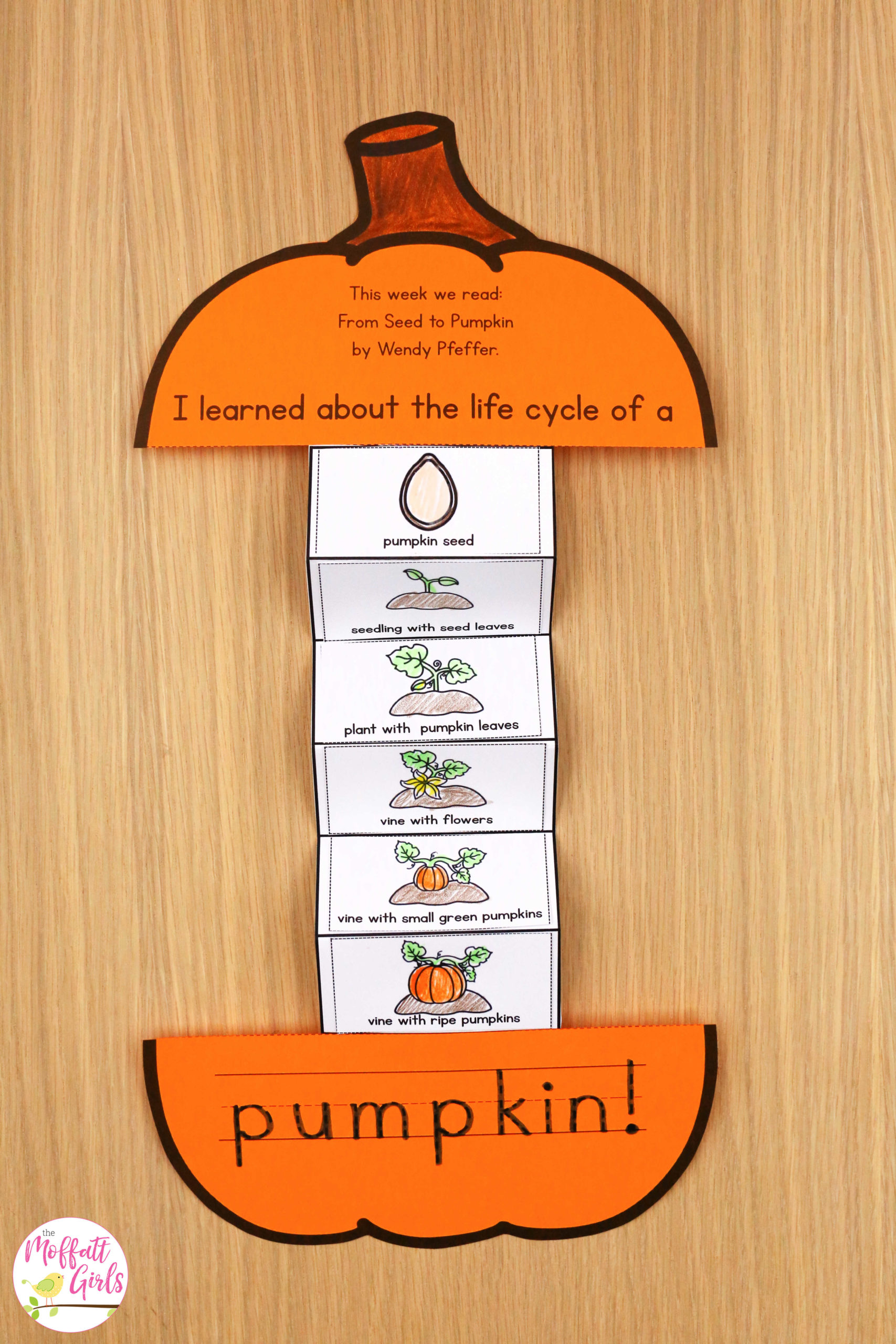
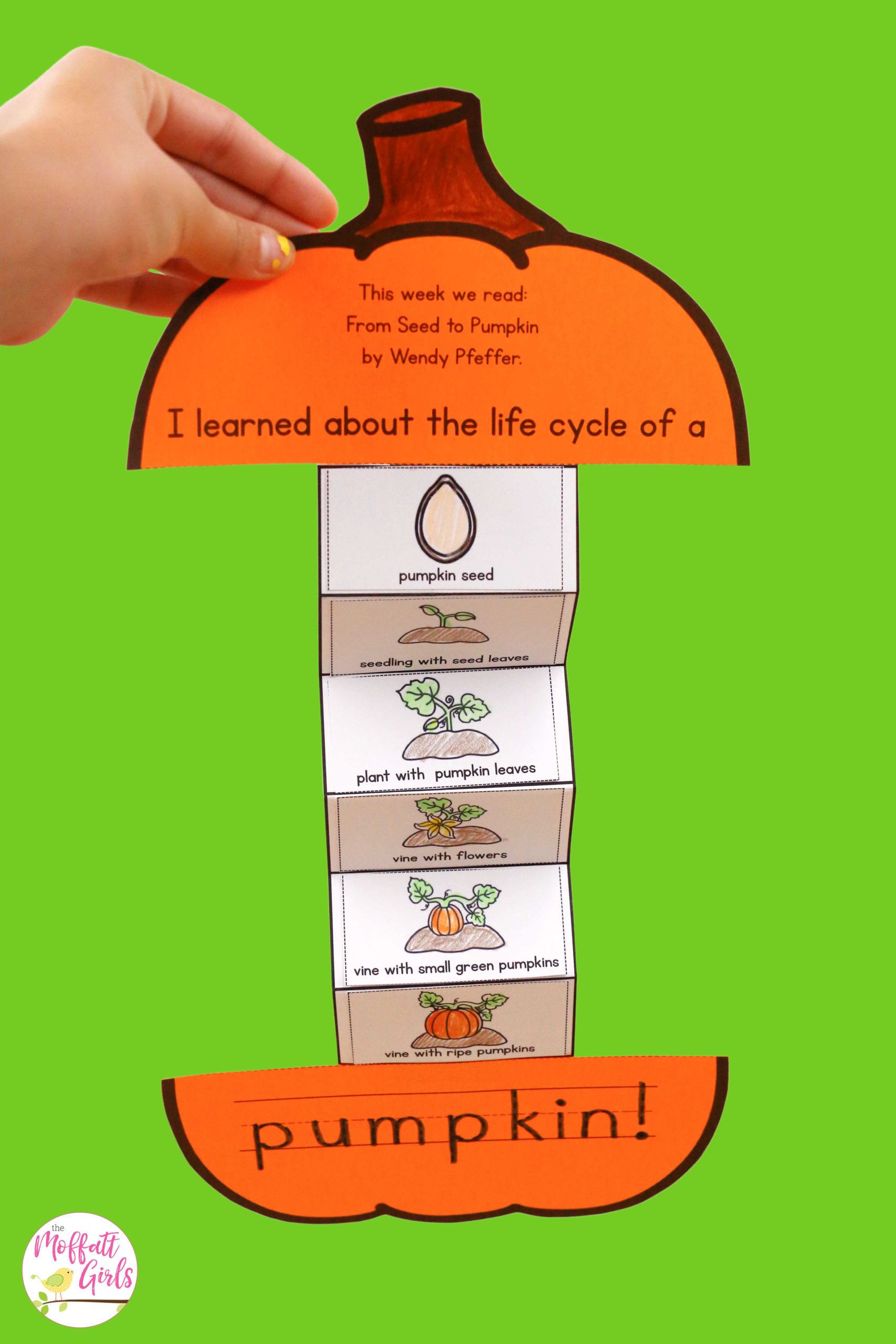
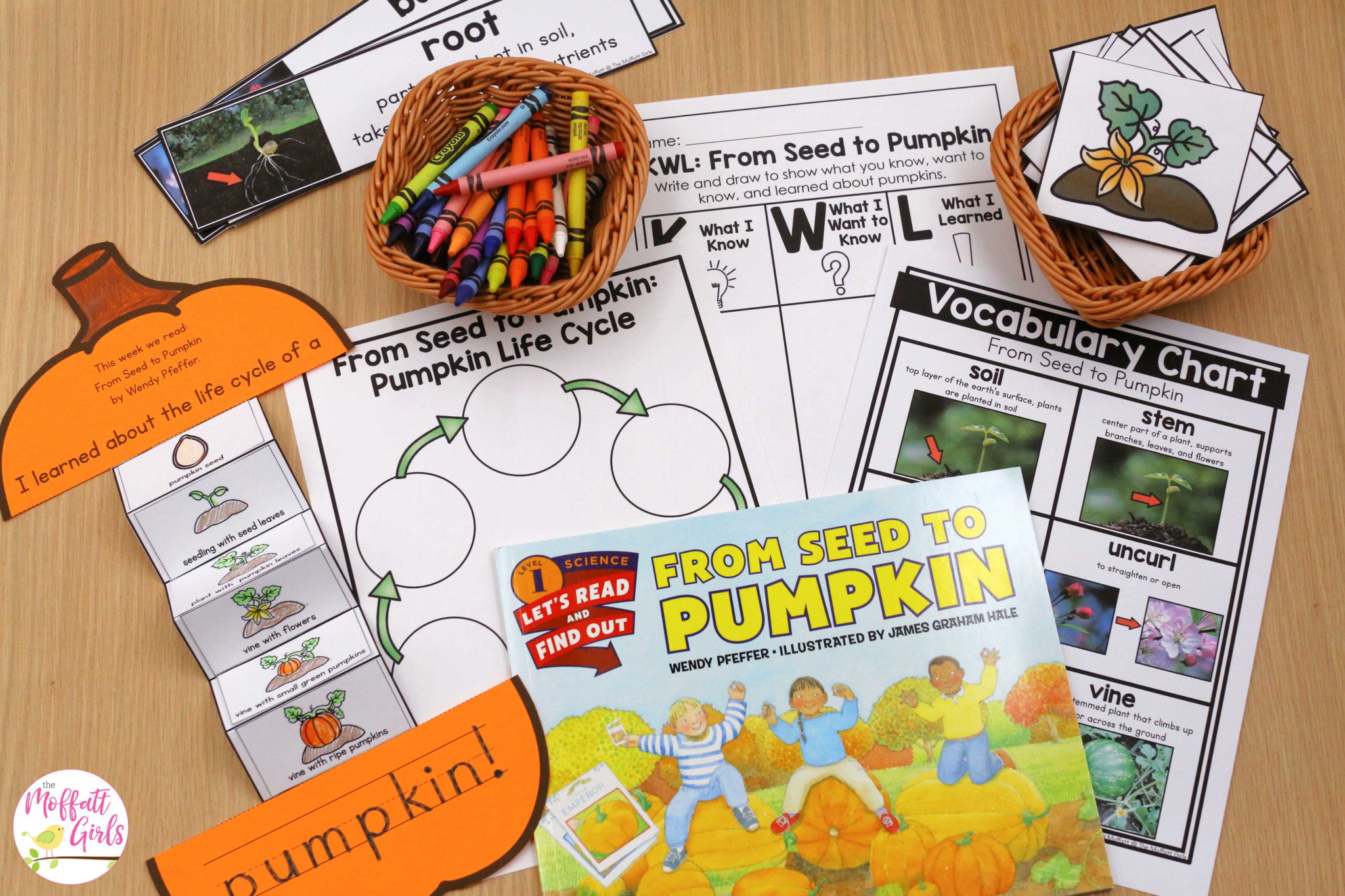
Book 9: The Biggest Pumpkin Ever
Here’s the craft for The Biggest Pumpkin Ever. I’ll be adding more pictures for this book soon, so stay tuned!
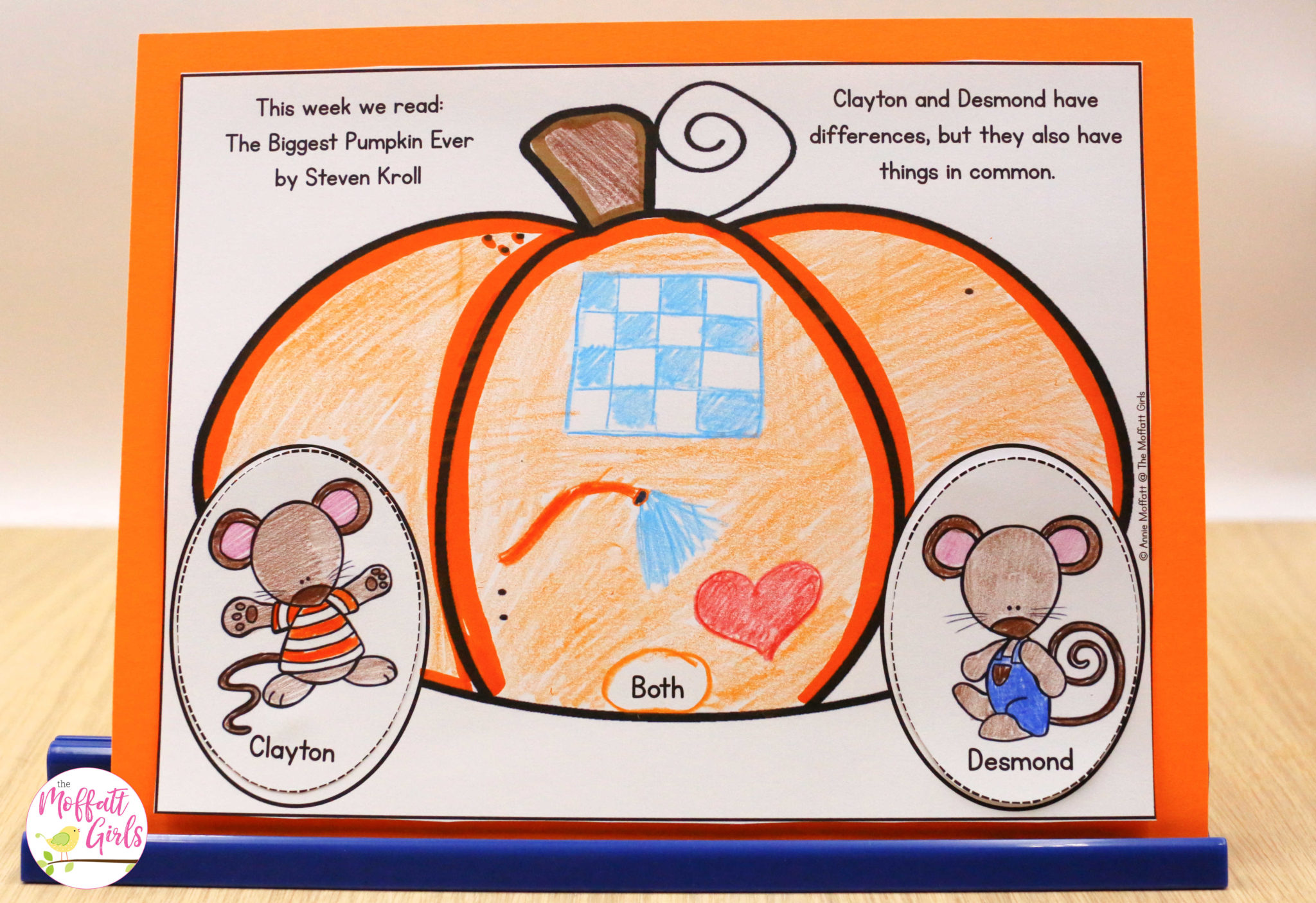
The post Reading Comprehension in Kindergarten appeared first on Moffatt Girls.

